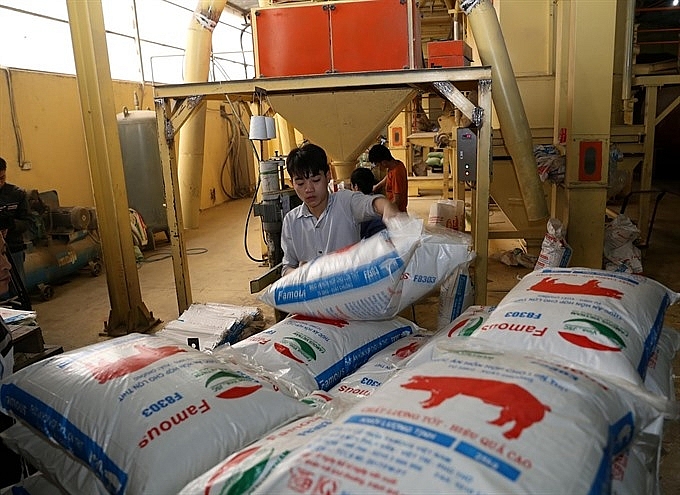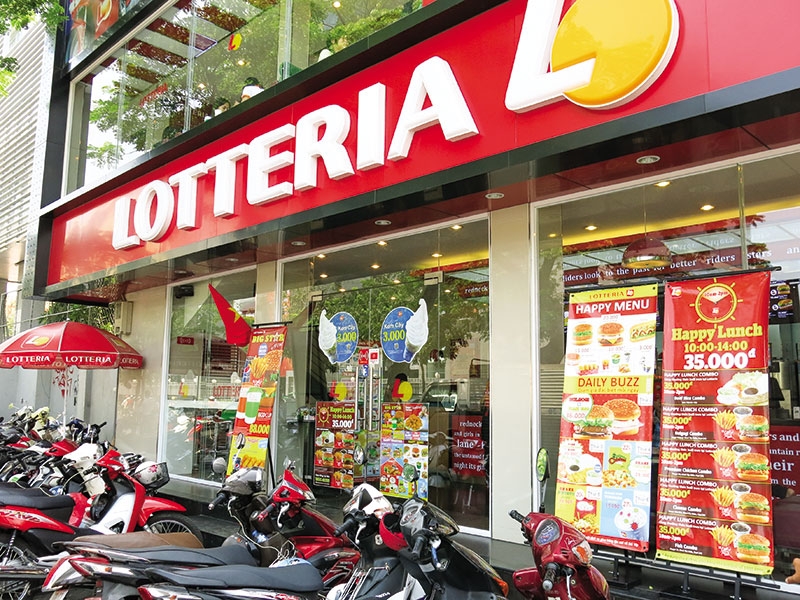Home-sharing a challenge for hotels Vietnam was listed as the global top-growing destination on Airbnb in 2017, with Hanoi seeing 212 per cent growth and Da Nang 255 per cent. The impressive growth confirms that home-sharing is becoming increasingly popular in Vietnam, according to Mr. Neil Sutton, Co-founder of Dot Property. Airbnb and similar sites are the most visible within new “sharing” hospitality models based on technological platforms, which have changed the way people around the world access and use hospitality services. The sites not help travelers save on their accommodation costs but also present a business opportunity for anyone with a house to lease or any spare rooms. “The sharing economy model is having a growing influence on the low-end hotel business and directly compete with online travel agencies [OTAs],” said Mr. Kenneth Atkinson, Executive Chairman of Grant Thornton Vietnam. Good times 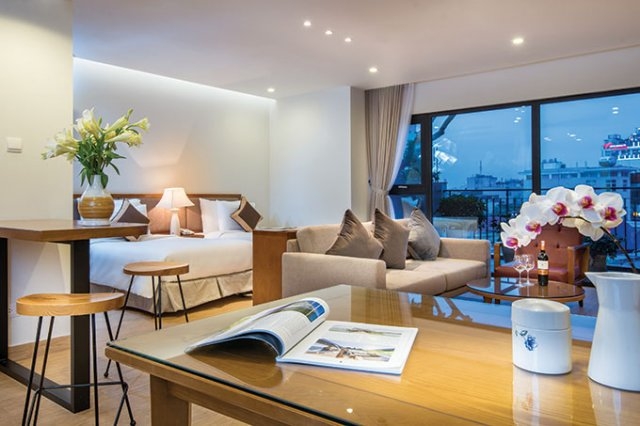 Vietnam has become more and more attractive in the eyes of international travelers in recent years, with the number of tourists arriving the country rising by nearly 28 per cent last year and predicted to grow into the future. As the tourism sector grows, so does Vietnam’s home-sharing economy. The fact that Vietnam has two of the Top 10 trending destinations on Airbnb also indicates the platform is rapidly attracting more homeowners and travelers in the country, Mr. Atkinson said. Airbnb has developed quickly over the past few years, with listings rising from some 6,500 nationwide in 2016 to more than 16,000 in 2017 in just Hanoi and Ho Chi Minh City, according to figures from AirDNA. First present in Vietnam about four years ago, the convenience and benefits of the relatively-new “sharing” business have appeal for travelers looking for a distinct and localized cultural experience and homeowners seeking to optimize costs. Despite using Airbnb when staying overseas, many local people opt for Luxstay when holidaying in Vietnam because its accommodation has more unique features and advantages. Luxstay has increased its presence to the extent it’s often called the “Airbnb of Vietnam”. It’s attracted even more attention since securing investment of $2.5 million last March and announcing an additional $2.5 million from foreign investors in a recent Pre-Series A Round. Different from Airbnb, which targets mid-end customers and millennials, Luxstay focuses on older customers with higher incomes. “We are a specialized platform for homes and villas in the high-end and luxurious segment,” CEO Mr. Nguyen Van Dung told VET. At the end of 2017 Luxstay had about 600 home listings around Vietnam but now has more than 2,000. “The number of products entering the short-term rental market is growing rapidly,” Mr. Dung said. On the demand side, Luxstay received about 8,000 inquiries in June and the number is growing at an average of 20-30 per cent each month. “Overall, we are going well, but we are also looking forward to a boom in the near future,” he went on. “We previously focused on local customers, which were about 70 per cent of our clientele, but still have about 30 per cent who are foreigners coming via a travel community or partnership exchange with overseas platforms. Almost all traffic comes from digital marketing.” Competitive space Online travel platforms are increasingly dominating the market as Vietnam’s tourism industry develops, and the flourishing home-sharing model will certainly put pressure on hotels and OTAs. “Airbnb will affect lower-end hotels more than higher-end hotels, though some hotel operators in the four and five-star segments report losing regular guests to Airbnb,” Mr. Atkinson said. The Airbnb model, he added, can often offer good-quality accommodation at a price much cheaper than staying in a one to three-star hotel, and so is better for budget-conscious tourists. It also offers the chance to experience local hospitality. Similarly, Mr. Sutton from Dot Property said that most Airbnb users are younger travelers who prefer to stay in places that have a more local atmosphere. “This means that three-star hotels and those in the budget segment will be affected due to their similar pricing,” he said. “With the development of technology, smartphones and the internet, they have been able to reach more people,” said Mr. Atkinson. “Booking on the Airbnb platform is simpler than using travel agencies, giving the platform an advantage.” Since the home-sharing economy plays the role of intermediary between hosts and guests, it competes directly with OTA platforms like Agoda or Booking.com, Mr. Atkinson added. Its ongoing competitiveness, however, will depend on the quality of listings. Airbnb said in March that it aims to compete directly with OTAs based on lower fees for hotels, which many smaller hotels consider are too high with OTAs. “This is true especially with Booking.com, where 100 per cent of fees are charged to the hosts, not the guests,” he said. OTAs, meanwhile, are trying to remaining competitive by increasing listings, with Expedia acquiring HomeAway in 2015 with this in mind. “These actions make it difficult to predict the effects the home-sharing economy will have on OTAs,” Mr. Atkinson said. “Globally, the home-sharing economy has not been able to have much impact on OTAs’ revenue, mostly due to the latter having already built up an inventory of listings.” A report from Piper Jaffray, a leading investment bank and asset management firm, stated that any negative impacts from Airbnb on OTAs would be minimal in the 2016-2020 period. “We have to remember that OTAs traditionally focus on the hotel market, whereas home-sharing models focus on the private owner/managed market, hence the relatively small impact,” according to the report. Regulation to come The home-sharing economy will need to address certain challenges if the boom times are to continue. Mr. Sutton pointed out that transparency in the quality of listings and the way homeowners manage their property count among the greatest difficulties in Vietnam at the moment, as do legal aspects. “As services like Airbnb expand, it will test the limits of local regulations,” he said. “Similar to ride-sharing, home-sharing will require a framework that creates standards for all parties to follow. Local authorities are faced with obstacles from needing to create a tourist-friendly environment while also finding a way to ensure current regulations are not being violated.” As home-sharing quickly grew in Japan, Thailand and Malaysia, local governments were caught flat footed since there were no existing regulations that properly covered the business. “This caused some confusion in these markets that harmed both property owners and tourists,” Mr. Sutton said. “Everyone in Vietnam would benefit if this type of situation can be avoided.” Mr. Atkinson also sees obstacles to overcome. “Taxation is a problem for local authorities, similar to the ride-sharing economy with Uber and Grab,” he said. “Since Airbnb does not have representation in Vietnam, it will be difficult to tax it on revenue generated in the country. Legal regulations around e-commerce, which are under development, could create challenges for both platform operators and users and owners in the future.” The hotel segment, meanwhile, possesses advantages in competing with home-sharing and has recorded steady growth over recent years. According to figures from the Ministry of Culture, Sports and Tourism, 79 new upscale (three to five-star) hotels came into operation in 2017, ten of which were five-star, up 10 per cent against 2016. In particular, revenue per available room (RevPAR) at hotels continued to increase, by 7.6 per cent and 10.2 per cent for four and five-star hotels, respectively. In such a competitive environment, Mr. Sutton recommended that hotel operators and property developers utilize digital technology and use their own advantages as opportunities to redevelop existing hotel facilities to better match the demands of guests, while also adopting new strategies to cater to tourists’ preferences. VN Economic Times |
↧
Article 1
↧
Article 0
Social News 20/8 Bình Thuận searches for ship involved in accident 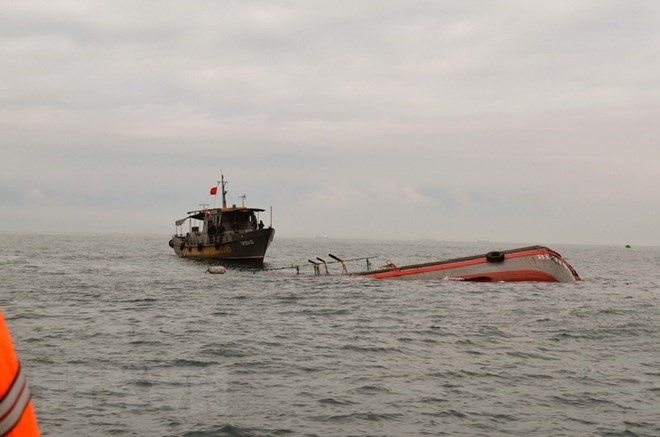 The fishing boat sank after the collision at sea. The Bình Thuận Province People’s Committee on Thursday sent an urgent letter to concerned organisations to ask for help for a fishing vessel that was hit by a container ship. The fishing boat, from La Gi Town in Bình Thuận Province, was hit by the Hải Dương 19 transport ship before the larger vessel fled the scene of the collision. The committee asked the provinces’ border guards to search for the Hải Dương 19 and collaborate with other organisations to investigate the case. The committee asked the Maritime Administration of Bình Thuận and the Phan Thiết Radio Station to inform all ships to help the fishing boat. The committee also asked the La Gi Town People’s Committee to support the captain and crewmembers of the boat so they will be able to repair the vessel. A report by the Bình Thuận People’s Committee said that the fishing boat named BTh 96835 TS, with a capacity of 227CV, has four seamen on board. The boat was owned by Bạch Tấn Thà, 41. It was hit on August 13 by the Hải Dương 19 ship while catching cuttlefish about 23 nautical miles off Ô Cấp Cape in the southern province of Bà Rịa-Vũng Tàu. The fishing ship sustained severe damage and sank. The four seamen were saved by a passing vessel. Hà Nội dykes in peril amid flood season 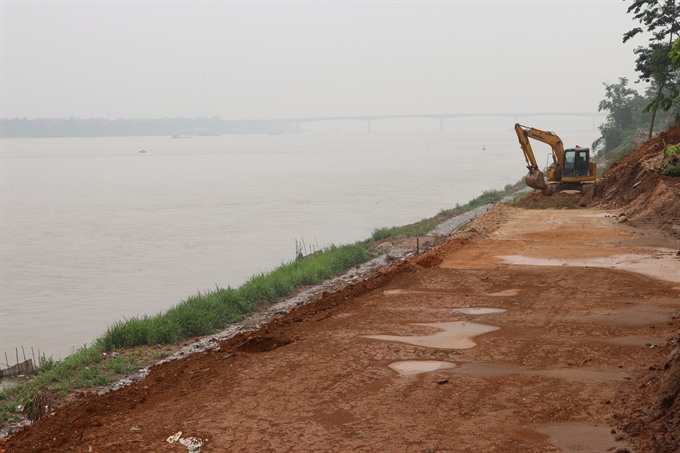 A damaged section of Hồng (Red) River’s dyke running through Thường Tín District in Hà Nội is repaired by a competent agency. Amid the peak of the rainy season, dyke violations in Hà Nội are set to rear their ugly head. Violations have existed for many years but have not been resolved by competent agencies, harming dyke safety, the flood irrigation corridor for the capital. According to Nhân Dân (The People) newspaper, most of the dyke violations involved the construction of houses and workshops, illegal sand exploitation, storage of building materials and overloaded vehicles travelling on dykes. Other violations included dumping construction rubbish, removing gravel and digging irrigation channels. The violations occurred frequently on the Hồng (Red) River section running through Thường Tín District. About seven building material storage points licensed by local agencies were found in Thống Nhất Commune with dozens of high sand piles along the river’s dyke, the report said. Along the river’s dyke in Liên Mạc Ward of Bắc Từ Liêm District, seven companies occupy unused land to store and transport construction materials, with sand piled up behind trees. These points are located near the river, about 100m from the dyke, causing damage and subsidence to the dyke, with overloaded trucks operating all day and night. Nguyễn Hữu Đắc, a resident in Thường Tín District’s Hồng Vân Commune, said these vehicles had not only threatened the safety of the dyke but also polluted the environment and affected the lives of thousands of households. Households in Ninh Sở Commune have also blamed owners of building material storage sites for encroachment on agricultural land and dyke protection corridors to build workshops, damaging the dyke in the rainy season. Many violations have been tackled by local authorities but offenders still ignore the regulations and sanctions and have continued violating for years. Widespread violations are reducing the dykes’ effectiveness in the storm season, yet little has been done to resolve the issue. Đỗ Đức Thịnh, head of Dyke Management and Flood Prevention Division, said the capital city’s dyke system was in good shape to control floods. However, with the unusual occurrence of natural disasters, it was difficult to anticipate incidents. Serious violations were being reported, such as the presence of houses and other constructions on the dykes, but they had not resulted in a clearance of the dykes, he said. Statistics showed there were 15 violations in 2015 and 47 in 2016. In 2017, heavy rain washed away a section of the dyke on Bùi River in Chương Mỹ District, causing serious damage to local property. More than 1,000 households of the two communes were isolated by floods and hundreds of hectares of crops, aquatic products and cattle were destroyed. According to the city’s Department of Agriculture and Rural Development, some landslides occurred on embankments in Ba Vì and Phúc Thọ districts since the beginning of this year, threatening the dyke system, lives and property. Chu Phú Mỹ, the department’s director, said thousands of dyke violations had occurred. In April alone, 22 violations were reported in Hà Nội. Mỹ said many people claimed they did not know their actions had violated the dyke protection corridor. It seemed that people were not informed about dyke laws, he said. Vice chairman of Ninh Sở Commune People’s Committee, Đỗ Cao Mạnh, said in addition to the limited knowledge of the people, another issue was that the Dyke Law and legal documents had revealed inadequacies after more than 10 years of implementation. There were still unspecific regulations on violations, causing difficulties to agencies, he said. Lê Xuân Tiến, inspector of Hà Nội Department of Transport, said a lack of strict punishment on the violations made the situation complicated. The department would continue to work with local authorities to review and add more traffic signs and vehicle weight restriction signs along the dyke, he said. The inspection should also be strengthened in terms of compliance with the regulations of the transport companies, especially those with multiple offences to improve the situation, said Tiến. Long An reduces number of smuggling, trade fraud cases 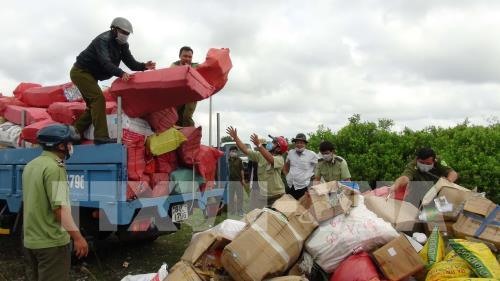 The Mekong Delta province of Long An has made significant achievements in fighting smuggling and trade fraud at border areas. The Mekong Delta province of Long An has made significant achievements in preventing and fighting smuggling and trade fraud at border areas. Nguyễn Văn Việt, head of Long An Province’s Market Management Sub-Department, said that 672 smuggling and trade fraud cases were discovered in the first six months of the year, a drop of 424 over the same period last year. About 1 million packages of smuggled foreign-made cigarettes were found, 300,000 less than the same period last year. The province collected fines of VNĐ5.5 billion (US$238,740) for the state budget and prosecuted many cases involving trade and transport of prohibited goods. The investigation police have decided to start criminal proceedings against many violators. The number of smuggling cases has fallen, thanks to an increase in fines and court cases. However, the situation could worsen near the end of the year before the Christmas and Tết (Lunar New Year) seasons. Trần Văn Cần, chairman of the province’s People’s Committee, has directed the province’s anti-smuggling forces to step up patrols and control smuggling and trade fraud. Officials, civil servants and soldiers who engage in smuggling and trade fraud must be punished, he said. The province would raise public awareness about laws on smuggling and trade fraud via the media, and try to create more jobs for people who turn to smuggling to earn an income, he said. The Mỹ Quý Tây Border Gate Economic Area in Đức Huệ District near the border with Cambodia has long been seen as a transit point for cigarette smuggling to HCM City. Reduced sentences for nine defendants in Hà Nội’s land violations 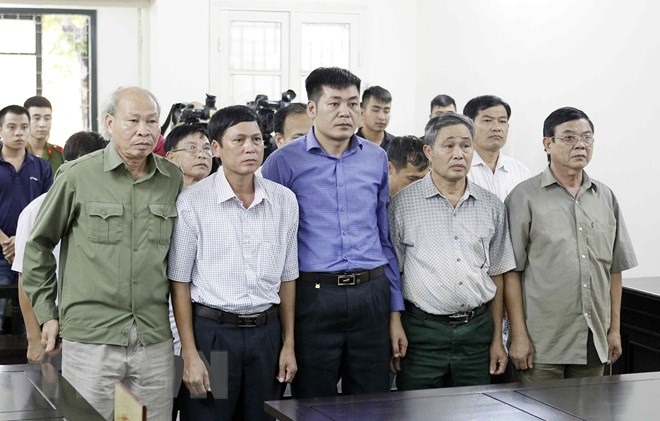 A court of appeal yesterday decided to reduce the sentences of nine defendants involved in land violations in Đồng Tâm Commune in Hà Nội’s Mỹ Đức District last year. A court of appeal yesterday decided to reduce the sentences of nine defendants involved in land violations in Đồng Tâm Commune in Hà Nội’s Mỹ Đức District last year. The Hà Nội People’s Court ruled in favour of the nine defendants who had appealed for reduced penalties. However, the court rejected the appeal of Phạm Hữu Sách, former head of the district’s Division of Natural Resources and Environment, who will still have to serve 24 months of probation. The violations made by the officials were uncovered following complaints by residents about a land scandal which made headlines in late March and mid-April, 2017. Ten former local officials faced charges of abusing their positions and power pursuant to Article 281 of the Penal Code. Those charged with “abuse of power while on duty” were entitled to reduced sentences, including Lê Đình Thuần, former chairman of Đồng Tâm Commune’s People’s Committee, whose sentence was cut from 42 months to 36 months in prison; and Nguyễn Tiến Triển, former secretary of Đồng Tâm Commune’s Party Committee, whose sentence was cut from 30 months to 26 months in prison. Nguyễn Văn Đức, former chairman of Đồng Tâm Commune’s People’s Committee; Bùi Văn Hồng, formerly in charge of military affairs for Đồng Tâm Commune’s People’s Committee; and Bùi Văn Dũng, former head of Đồng Tâm Commune’s Financial Division, had their sentences cut from 30 months to 24 months. Nguyễn Văn Minh, former head of Đồng Tâm Commune’s Police; and Nguyễn Văn Khang, former head of Đồng Tâm Commune’s budget, will serve suspended sentences of 20 months instead of 24 months. Regarding the charges of “irresponsibility causing serious consequence”, the initial sentence of 36 months behind bars for Đinh Văn Dũng, former director of Mỹ Đức District’s Land Registration Office, was changed to 36 months of probation, while Bạch Văn Đông, former deputy director of Mỹ Đức District’s Land Registration Office, also had his sentence commuted from 30 months in jail to a 30-month suspended sentence. The appeal panel stated that at their first trial all the defendants had confessed to their offences apart from Sách, who said he had signed a document regarding land use but it was not unlawful, Vietnam News Agency reported. The panel judged that Sách’s appeal was groundless and upheld his initial 24-month suspended sentence. While on duty, Sách had failed to properly check dossiers regarding land use before signing them, resulting in the unlawful granting of land use right certificates to 12 households in the locality with total land covering 1,837sq.m. — VNS Ha Nam: Medical workers get training on effective dengue prevention 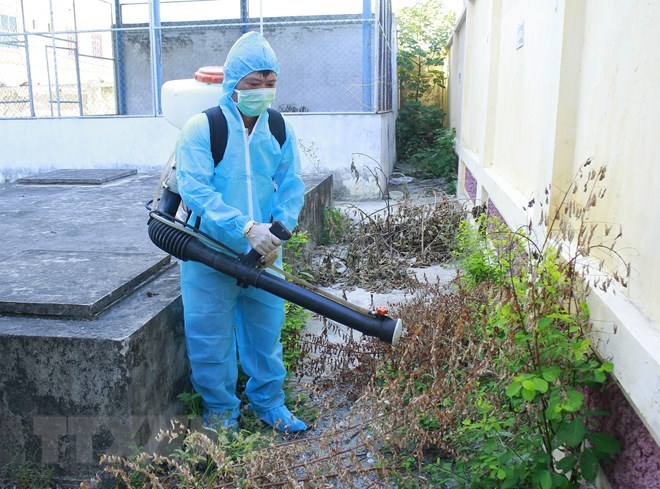 A training workshop was organised for medical workers in the northern province of Ha Nam, about 50km south of Hanoi, on August 17 to improve their skills and capacity to deliver effective dengue prevention at all levels. The event was co-held by the National Institute of Hygiene and Epidemiology (NIHE) and the provincial Centre for Disease Control. Experts from the NIHE provided the attendees with basic knowledge on dengue fever epidemiology, dengue vectors and methods to treat dengue hotspots and others. The health workers were also introduced to different types of mosquito foggers and anti-mosquito chemicals and how to mix chemical substances to kill and repel mosquitos as well as proper ways to clean up the environment around houses and at work. According to Deputy Director of the Ha Nam Centre for Disease Control Nguyen Ngoc Anh, more than 800 people across the province were infected with dengue fever last year with some 600 having travelled back from Hanoi and other provinces. Thanks to the province’s preventive efforts, no death was reported due to dengue, he said, adding that this year, Ha Nam has recorded two dengue fever cases so far. The training has helped local health workers become more active in preventing dengue fever this year which is forecast to be more complicated, Anh said. Dengue fever is an acute viral disease spread by two kinds of mosquitoes – Aedes Aegypti and Aedes Albopictus., with no specific vaccine and treatment established to date. The disease is common in tropical countries. In Vietnam, peak season of the disease lasts from July to October. As the virus is divided into four types – D1, D2, D3 and D4, a person can be infected many times. Vietnam experienced a boom of dengue fever in 2017 when 181,054 infection cases and 30 deaths were reported in almost all localities, mostly Hanoi and Ho Chi Minh City. Last month, Ho Chi Minh City reported the first death caused by the disease in 2018. More coaches and trains rolled out for National Holiday 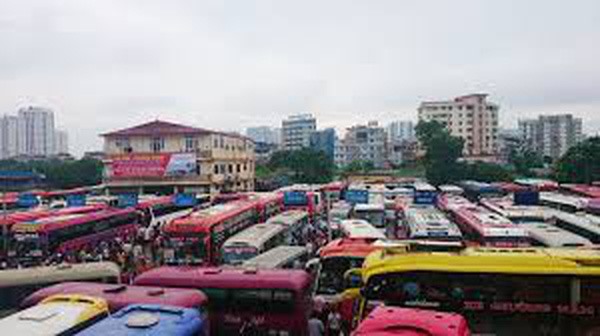 More coaches will be operated to serve the high demand for travel during the upcoming National Day holiday. — Photo dantri.com.vn Three hundred more coaches and buses would be put into service for the upcoming National Day holiday on September 2, according to a representative of the Hà Nội Bus Station Company. Nguyễn Anh Toàn, director of the Hà Nội Bus Station Company, told dantri.com.vn that the company had forecast passenger numbers would rise dramatically between August 31 and September 1, so it had asked Hà Nội’s Department o Transport for permission to lay on 300 extra coaches and buses. The coaches would focus on passengers going to Hải Phòng City and the provinces of Nam Định, Hải Phòng, Thái Bình, Phú Thọ, Lai Châu and Quảng Ninh, said Toàn. The company has also asked stations to set up more ticket booths to reduce overloading before the vacation. Meanwhile, the Hà Nội Railway Company plans to run 140 extra trains with 90,000 seats during the holiday. From August 31 to September 3, the Sài Gòn Railway Company will operate more 30 trains with 14,000 seats from HCM City to Phan Thiết, Nha Trang, Quy Nhơn and Quảng Ngãi, and from Nha Trang to Huế. Ticket prices in these services will be subject to a 10-20 per cent discount. Ngoc Linh ginseng to be planted in Khanh Hoa 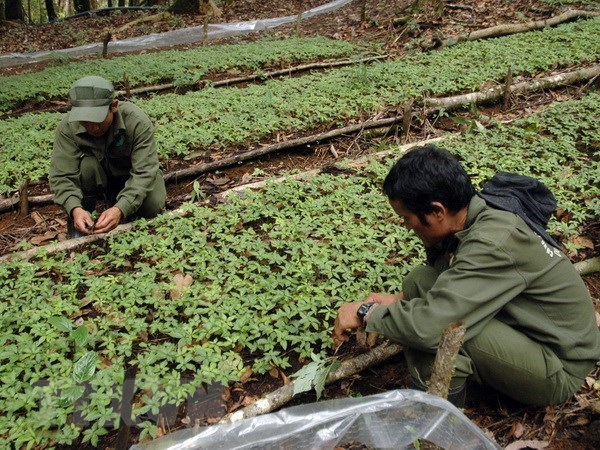 A garden of Ngoc Linh ginseng seedlings of the Dak To Forestry Co. Ltd About 2,000 trees of Ngoc Linh ginseng will be planted at the Hon Ba Nature Reserve in the central coastal province of Khanh Hoa under a scientific research project. With a total funding of over 1 billion VND (43,000 USD), the project, to last until 2020, aims to expand Ngoc Linh ginseng production models in order to meet the increasing demands for ginseng and attract more tourists to the reserve. Covering more than 20,000 hectares in Khanh Vinh, Khanh Son, Cam Lam and Dien Khanh districts, the Hon Ba Nature Reserve has a diverse flora system with over 590 species. The Ngoc Linh ginseng (Panax vietnamensis, or Vietnamese ginseng) was found on Ngoc Linh Mountain on the border between the Central Highlands province of Kon Tum and the central province of Quang Nam in the late 1960s. By 1979, Quang Nam province had established the Tra Linh drug materials farm on the mountain, but it suffered from low productivity. Kon Tum province had also built up a conservation centre for the Ngoc Linh ginseng in 2004. Currently, raw ginseng is sold for 40 million VND (1,900 USD) per kilo, but the two provinces can only produce pharmaceutical materials and energy drinks due to poor investment in processing technology. The Vietnamese ginseng was one of eight precious and endangered flora genes covered in Quang Nam province’s conservation programme for 2014-2020, including Ba Kich (poor ginseng or codonopsis), pepper, cinnamon, large rattan and white corn.-VNA Da Nang steps up measures against dengue fever Residents in the central city of Da Nang should intensify measures against dengue fever as the rainy season has started, encouraging mosquito populations to grow, said a local doctor. Doctor Nguyen Tam Lam from the municipal Preventive Health Centre said 1,447 cases of dengue had been recorded in the city so far this year, down more than 65 percent over the same period last year. However, from August 6-12, Da Nang reported 88 cases, 12 cases more than the previous week, mostly in Lien Chieu, Thanh Khe and Hai Chau districts, according to the doctor. The Preventive Health Centre has coordinated with medical teams in the districts to handle dengue hotspots, Lam said, adding that apart from spraying mosquito repellent, the local medical sector has intensified the information work to raise public awareness of the fight against the epidemic. Dengue fever is an acute viral disease spread by two kinds of mosquitoes – Aedes Aegypti and Aedes Albopictus, with no specific vaccine and treatment established to date. The disease is common in tropical countries. In Vietnam, peak season of the disease lasts from July to October. As the virus is divided into four types – D1, D2, D3 and D4, a person can be infected many times. Vietnam experienced a boom of dengue fever in 2017 when 181,054 infection cases and 30 deaths were reported in almost all localities. HCM City adjusts height of building projects in district area 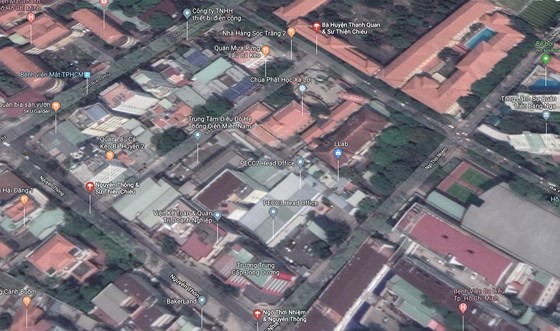 HCM City has adjusted the permitted height of new buildings in an area in District 3. — Source Google Maps The People’s Committee of HCM City has approved an adjusted construction plan for the ZV-9 area bordered by Ngô Thời Nhiệm, Nguyễn Thông, Sư Thiện Chiếu and Bà Huyện Thanh Quan streets. The ZV-9 area is part of the “930ha Area” project located in downtown HCM City. Under the new adjustment, buildings on land covering 1,917sq.m located at 32 Ngô Thời Nhiệm Street in District 3 will be permitted to have a maximum height of 32 metres, an increase of 12 metres over the previous figure. In addition, other construction works in the ZV-9 area will be under the planning project for the “930ha Area”. The city’s People’s Committee has directed the Department of Planning and Architecture to work with the People’s Committee of District 3 to add the adjustment plan to the “930ha Area” planning project. The city’s People’s Committee has also asked related units to closely monitor and manage the project during the implementation process. The District 3’s People’s Committee is expected to publicise the new adjustments within 30 days. Employees could work more overtime 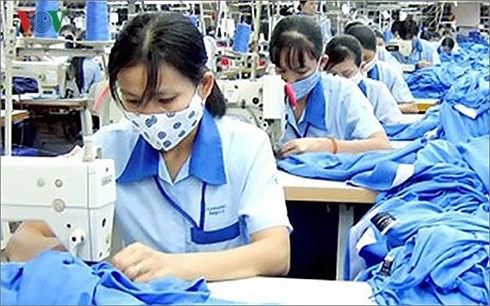 Employees may be able to work more overtime under a proposed change to the law. — Photo vov.vn Employees could work up to 400 hours of overtime per year compared to the current 200 hours under the revised Labour Code which will be submitted to the National Assembly next year. The current limit of 200 hours is lower than both Thailand and Singapore, and had led to complaints from businesses. According to Mai Đức Thiện, deputy director of the Legal Department under the Minsitry of Labour, Invalids and Social Affairs, for years businesses had been asking the Government and National Assembly to increase overtime working hours. Under the revised law, overtime work must be agreed between employees and employers but it would not exceed four hours per day or 400 hours a year, Thiện told online newspaper vov.vn. Hanoi steps up inspections at private drugstores  Hà Nội has stepped up inspections of drugstores, and will name and shame those that do not meet Government standards.— Illustration Photo Health inspectors in Hà Nội have suspended operations at ten clinics and private drugstores since April. Inspection teams have examined a total 58 clinics and private drugstores over the last four months. The main violations found involved inadequate infrastructure, licensing, space and the sale of food supplements without food-safety licenses. According to the city’s Health Department, there are 35 hospitals, 165 general clinics, 668 traditional medicine clinics and 2,658 specialised clinics and medical service centres in the capital. The city is also home to 6,861 drugstores and drug companies, but many do not meet Government standards. In order to effectively manage the operation of private clinics and drugstores, the city’s Health Department in co-ordination with relevant agencies will step up inspections and strictly punish any violators, while making those cases public in the media. Universities should enjoy more autonomy 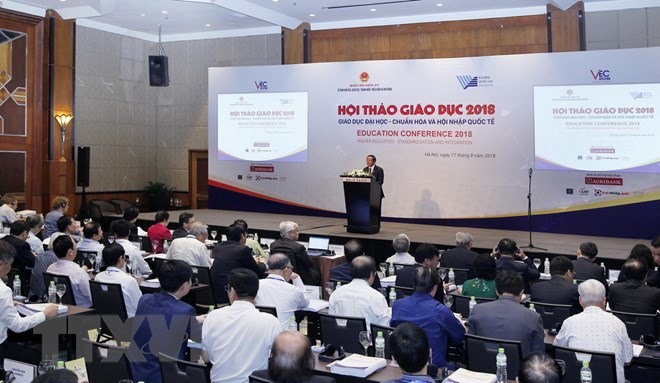 Universities need to foster innovation and take advantage of their autonomy to benefit the country and society, said Deputy National Assembly Chairman Đỗ Bá Tỵ. Universities need to foster innovation and take advantage of their autonomy to benefit the country and society, said Deputy National Assembly Chairman Đỗ Bá Tỵ. Tỵ made the statement yesterday at a conference themed “Higher Education – Standardisation and Integration” which attracted the participation of some 200 experts and educators. On the occasion, he emphasied education and training as the country’s top priority. He also stressed the importance of higher education and improving the quality of labour productivity in the context of globalisation and integration. Universities needed to be independent and responsible for developing training strategies to satisfy labour market demands, while making breakthroughs and building their reputations, he said. According to Senior Economist Dilip Parajuli from the World Bank, Việt Nam ranked 84th out 137 countries and territories for its higher education system, with only Hà Nội National University and HCM City University being featured in the list of the top 1,000 universities worldwide and five institutions named in the top 400 Asian universities. Parajuli said that Government policies limited universities from unleashing their full potential, so the Government should loosen its management over financial and administrative issues and create more room for them to self-develop. The Government should only play the role of an orientor and let universities make decisions on their own, he said. He added that universities would be responsible to their students and to the Government, and they should ask for more autonomy to improve quality and rankings for themselves and Việt Nam’s education in general. As public investment for higher education in Việt Nam remains low, Parajuli recommended the Government to increase funding for key universities, especially the two national ones. Shared financial plans, student credit for example, should be developed to create more educational opportunities for all. Academic freedom and internationalisation were essential to improving the autonomy of domestic universities, experts suggested. Regarding the emerging trend of globalisation in education, the most significant changes include international student mobility, international expansion in the form of branch campuses, the rising number of international lecturers at domestic universities and international research collaborations. Việt Nam, however, has showed little engagement in these changes which has put the country behind. According to a report by the Ministry of Finance (MoF), most public universities in Việt Nam depend on the State budget and tuition fees. Their income from services, research and technology transfers remains low. The MoF said the Ministry of Training and Education should collaborate with universities to offer suitable tuition fee ranges, ensuring benefits for both universities and students. Students should also receive more financial support under the form of credits, scholarships or assistance. The MoF also asked public and private universities to build and implement their financial plans, proactively seek revenue and control their spending, instead of waiting for funding from the State. JICA implements sustainable development projects in Quảng Nam  Cơ Tu ethnic minority people perform traditional dancing in Hội An in the central province of Quảng Nam. Photo courtesy of JICA The Japan International Cooperation Agency (JICA) has successfully implemented a number of sustainable development projects, particularly in environment and tourism, in Hội An in the central province of Quảng Nam, JICA announced yesterday on the occasion of Japanese Days in the province, which is taking place from August 16-19. Konaka Tetsuo, chief representative of JICA in Việt Nam, said in recent years JICA had worked with the province to develop small-scale projects implemented by Japanese NGOs, local governments and universities. These included the Water Environment Improvement project for the Japanese Bridge area in Hội An, a popular tourism mecca. The project improved the sewerage system through the rehabilitation of the bridge canal and built a wastewater treatment plant with capacity of 2,000 cubic metres per day. The canal has been rehabilitated, and the plant is expected to be completed by November. Other projects are under the JICA Partnership Programme which JICA financially supports. Japanese non-governmental organisations, local governments or universities offer technical or training support. The aim of such projects is to encourage the participation of Japanese citizens in international cooperation using Official Development Assistance (ODA) and transferring their knowledge, technology and experience. For example, the Naha Model Waste Reduction Programme in Hội An, implemented by the NGO Okinawa Citizens Recycling Movement (OCRM) and Naha City (Okinawa Prefecture, Japan) in all 13 communes in Hội An, used the experience of the City of Environmental Symbiosis model of Naha City. In addition, the long-term project Support for Rural Potential Development for the Cơ Tu ethnic minority community in Nam Giang District was initiated by the Foundation for International Development/Relief (FIDR). Implemented in 2016 and to be completed in 2020, the community-based tourism project helps to develop the local economy and preserves the cultural values of the Cơ Tu, including weaving, dancing and traditional dishes. Community-based tourism development can maximise the potential and strength of indigenous culture, history and local life, and contribute to the improvement of incomes and people’s livelihoods, according to JICA. It also offers opportunities for locals to understand the traditional values of the local community where they live, which can be transmitted to visitors. Another community-based tourism project, Expanding and Developing Traditional Handicrafts, is being implemented by Minamiboso in Chiba Prefecture (Japan). The project helps develop handicraft products by supporting the design and renovation of shops offering artisans’ products, and offers workshops to artisans on making goods that meet the needs of consumers and tourists. Showa Women’s University in Japan operates a project on livelihood diversification through heritage tourism in remote or rural agri-fishery villages. In addition, JICA has also dispatched Japanese volunteers for a two-year term to share experiences and support people at the grassroots level. Currently, two volunteers are working at the Hội An Cultural Heritage Conservation Centre, under the People’s Committee of Hội An City. So far, 18 Japanese volunteers have been sent to work in Quảng Nam, mainly in the fields of architecture, environmental education and preservation of cultural heritage. Yesterday, more than 150 business leaders from Japan met in Hội An as part of the activities to commemorate the 45th anniversary of the establishment of diplomatic relations between Việt Nam and Japan. Of more than 20 countries and territories investing in the province, Japan is the third largest investor with 20 projects, with total registered capital of more than US$115 million, of which 18 projects are in operation and two are under construction. Residents evacuated after landslides 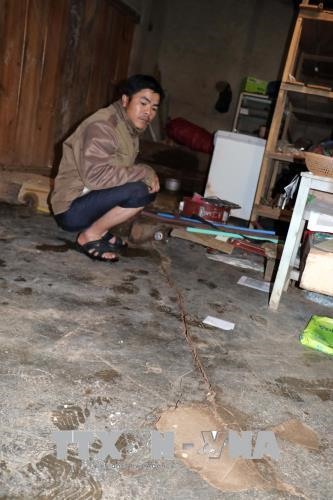 Tạ Hữu Bình, a resident of Tumơrông Village, examines a large crack in his house. — Photo baotintuc.vn More than 100 households in Tu Thó Village in the Central Highlands (Tây Nguyên) Province of Kon Tum were evacuated from areas at risk of land erosion, reported online newspaper baotintuc.vn. The evacuation was expected to be completed today. So far, the district has evacuated 71 households from two villages of Tu Thó and Tumơrông to safer areas. Prolonged heavy rains have already caused landslides in the two villages. A crack appeared on a hill behind Tu Thó Village, causing a mudslide which destroyed six homes. “More cracks have started to appear which has caused residents to worry,” said Trần Công Hồng, vice chairman of Tê Xăng Commune. “The local government has evacuated 43 households from dangerous areas. But the cracks have become bigger, so we plan to move the whole village,” he said. In Tumơrông Village, on Wednesday and Thursday, cracks appeared around the village and a landslide destroyed three houses. With the support of the local government, the villagers moved to safety. Lâm Trường Sơn, party secretary of Tumơrông Commune, said the crack was 1km long, causing damage to people’s houses and communal offices. Although residents were moved, the new locations were still not safe due to continuing erosion, said Sơn. According to the local government, it was difficult to find stable resettlement for the evacuated residents. Locals enjoy puppet plays in the heart of HCM City  The first Việt Nam Puppetry Festival is held on HCM City’s Nguyễn Huệ Pedestrian Street from August 16-18. Thousands of locals on August 16 attended the first Việt Nam Puppetry Festival on HCM City’s Nguyễn Huệ Pedestrian Street, which closes on August 18. The event, themed Giấc mơ xanh (Blue Dream), aims to bring puppetry art closer to the public, organisers said. Different types of puppetry were performed on six different stages, including, water, shadow and hand puppets, among others. “I’ve only heard of puppet plays, and had never seen them in real life. I’m glad I brought my daughter here so that she can enjoy the show with me,” Thảo My, 27, told Việt Nam News. “My daughter especially enjoyed the shadow puppetry!” she said. Hoàng Hải, a friend of My, said: “Though this event appears to target a younger audience, I feel like adults would benefit from it too since not many people know about puppetry.” Many people on the street agreed that puppetry is rarely emphasised by the media as a significant form of art. “Having the opportunity to see puppetry in real life, though on a small scale, got me thinking about what a pity it would be if we were to lose this beautiful form of art,” Hải said. “It requires so much effort to produce a single play! From the shadow puppet play I saw, I learned that artists not only have to handle the puppet but voicing of their character,” My said, adding that each character needs a different tone. Hồn quê (Hometown Spirit) was one of the most important plays of the festival. It was performed via water puppetry and created by People’s Artist Vương Duy Biên. This play combined the art of arranging subjects and water puppetry, and emphasised the value of hometowns, organisers said. In addition to locals, the Việt Nam Puppetry Festival attracted many international tourists. Tim, 45, from the US, said that though he did not understand most of the play’s story plot, he was excited to film everything that he saw. “This speaks Asian to me! I can’t wait to show this inspiring footage to my fellows back home,” he said. Some people said the three-day event was relatively short, and that similar events should be held in the future. “Every play tells a beautiful moral and story that we can benefit from. I understand that puppetry is not for everyone but at least the young generation should be reminded that it exists,” Đại Nghĩa, 58, said. VNN |
↧
↧
Article 1
BUSINESS NEWS IN BRIEF 22/8 Mekong Capital divests from Asia Chemicals Mekong Enterprise Fund II, a unit of Mekong Capital, has completely divested from Asia Chemicals Corporation (ACC) and taken in US$8.9 million, a 2.6-fold increase over its initial investment, after a seven-year holding period. According to a press release issued by Mekong Capital on August 10, in 2011, MEF II invested US$3.8 million in ACC, which was its 10th investment, after others in Mobile World Investment Group (The Gioi Di Dong), Golden Gate, Vietnam Australia International School and International Consumer Products. However, MEF II has now divested from all of its 10 earlier investments. The divestments have helped the fund generate a gross return multiple of 4.5 and a gross internal rate of return of 22.5%. Early this year, MEF II sold five million shares at Mobile World, generating a gross return multiple of 56.9 and an IRR of 61.1%, making it one of the most successful investments in Asia. Also, the fund’s full exit from Vietnam Australia International School and Golden Gate had resulted in a gross return multiple of 4.5 and 9, respectively. Mekong Capital is an unlisted private equity firm, focusing on the consumer goods sector. Its funds have made 33 investments in Vietnam, of which 25 investments have been fully exited. Its latest fund, Mekong Enterprise Fund III, has invested in seven companies, including pawn shop chain F88, Nhat Tin and ABA logistics firms, Chao Do restaurant chain, Ben Thanh Jewelry, English teaching organization Yola and mattress sleep solution provider Vua Nem. FastGo expects to capture ride-hailing market share of 30-40% FastGo Vietnam Co Ltd. expected to gain a 30-40% market share in the local ride-hailing market after the first two years, a representative of the company said at the launching ceremony of FastGo, a ride-hailing app, on August 10. The representative insisted that besides providing its services in Hanoi City and HCMC, FastGo will quickly extend its presence in provinces and cities across the country. The firm confirmed that FastGo will skip collecting commissions from drivers, but charge each driver a maximum VND30,000 per day. Typically, foreign ride-hailing firms collect a 20-25% commission. FastGo Vietnam on the occasion also launched the ride-hailing app FastBike, which provides customers with motorbike services in HCMC and Hanoi City. When FastGo was introduced in Hanoi City on June 12, the firm only offered three services, namely FastCar, FastTaxi and FastLuxury. FastGo director Nguyen Huu Tuat said that compared to other ride-hailing services, FastGo has more features, including payment via credit cards, ATM cards and scanning QR codes. Fares of FastGo services are lower than those of other firms, Tuat stressed. FastGo is targeting those customers who use bank cards for payments or pay online for FastCar and FastBike services. Thanks to the non-cash payment form, the firm’s promotional programs will be better controlled during the initial period, the company said. Ministry proposes dissolution of Road Maintenance Fund council The Ministry of Transport has proposed the Government dissolve the Council for the Road Maintenance Fund as it has become redundant after five years of operation. Established in December 2012, the council was tasked with managing the Road Maintenance Fund, but since 2017, all revenue for the fund has been channeled directly to the State budget. Moreover, all costs for road maintenance and repair are also covered by the State budget. Therefore, the council’s management role is now defunct, according to the ministry. Since 2017, the revenue for the Road Maintenance Fund collected from vehicle owners across the country has been submitted to the State budget, in accordance with the Law on Fees and Surcharges and the Law on the State budget. All expenses for operating the fund have been backed by the State budget since then. In addition, the Ministry of Finance advised the prime minister to allocate 35% of the collected fees to the road maintenance funds of localities nationwide. The Council for the Central Road Maintenance Fund will propose amendments to regulations on fund collection, consider approving financial plans every year and make decisions on allocating road fees collected from automobiles annually for the local funds. The Transport Ministry suggested the prime minister allow it to take control of the Central Road Maintenance Fund. It also proposed that the minister or deputy minister of transport function as the fund’s chairman, while the Central Fund Office is shut down. The fund’s expenses and revenues will be managed in line with the Law on the State Budget and the relevant legal policies. Many people had earlier voiced concern over the road maintenance fee collection as it would require complicated procedures and consume the State budget. Collecting fees for road maintenance and providing subsidies from the budget to operate the fund are deemed unnecessary as most of the road maintenance fees are now collected through vehicle registration agencies. Government to set up General Department of Market Surveillance Prime Minister Nguyen Xuan Phuc has decided to upgrade the Market Surveillance Agency under the Ministry of Industry and Trade into the General Department of Market Surveillance. The Government leader recently issued Decision 34/2018, which defines the functions, tasks, powers and organizational structure of the General Department of Market Surveillance. The decision will take effect on October 12. The general department will be organized into a vertical system from the central to the local levels, while fulfilling the requirements set by the minister of industry and trade. The department will have one general director and up to four deputy general directors. It will be responsible for preventing and handling the trade of smuggled, fake and banned commodities; dealing with violations such as infringements of intellectual property rights and the breaking of regulations on the quality and safety of products; and protecting the rights and interests of consumers. The structure of the general department will be upgraded and improved by six agencies – the office of the department; the department of personnel and organization; the general, planning and financial department; the department of policy and legal affairs; the department of inspection; and the bureau of market management. As many as 63 provincial-level market surveillance departments will be established under the umbrella of the General Department of Market Surveillance. Market management agencies at the district level will fall under the management of these provincial-level departments instead of the departments of industry and trade. The Prime Minister has asked the Ministry of Industry and Trade to work with the provincial People’s Committees on the transfer of the local market surveillance agencies. The handover should be completed by October 12. The ministry has also been tasked with devising a scheme for establishing interprovincial market surveillance bureaus. The scheme needs to be submitted to the Prime Minister by December 2019. Meanwhile, as many as 681 market management agencies at the district level are expected to be merged with 305 inter-district agencies by 2020. Deputy Minister of Industry and Trade Do Thang Hai remarked that the restructuring of the market surveillance apparatus is aimed at strengthening cooperation and fighting against trade fraud and the trade of fake goods more effectively. CAAV asks carriers not to hike airfares 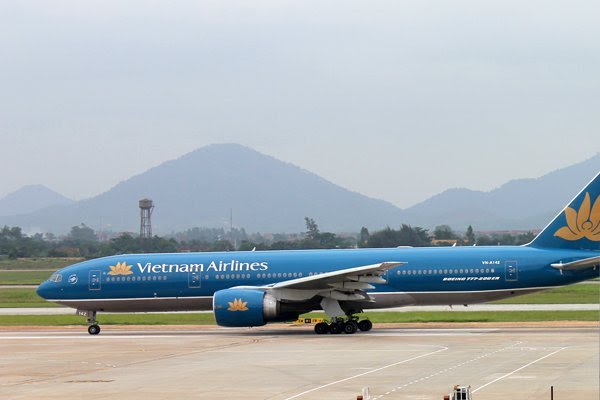 The Civil Aviation Administration of Vietnam (CAAV) has asked local carriers to refrain from increasing airfares to stabilize prices during fuel price hikes, in accordance with the prime minister’s request, the local media reported. The Government and the Ministry of Transport have requested the relevant agencies to stabilize prices to maintain an inflation rate below 4% this year. Earlier, in June, data from the General Statistics Office showed that local budget carriers Vietjet and Jetstar Pacific had hiked the fees of their fringe services, leading to a rise in airfares by 2.59%. Deputy Prime Minister Vuong Dinh Hue had asked the Transport Ministry to perform an inspection and work on price monitoring as traffic service costs make a 1.04% contribution to the consumer price index of the country. According to CAAV, as of March, the Jet A1 fuel price in Asia had hit US$86.7 per barrel, with import tariffs of 7%, environmental taxes at VND3,000 per liter and the exchange rate of Vietnamese dong versus the U.S. dollar reaching VND23,260. The final price of this fuel will cost some VND2.6 million per barrel when entering Vietnam. CAAV concluded that the volatility of fuel prices and exchange rates have raised the costs per flight by an average 17% versus August last year. Added value for products created at SHTP on the rise The value added to products created by enterprises at the Saigon Hi-Tech Park (SHTP) is growing gradually, with the current rate at some 23%, Le Hoai Quoc, head of the SHTP Authority, told a press conference on August 15. Prior to 2011, the added value of products at SHTP had amounted to an average of 10-12%, similar to that of products made in industrial zones. The figure went up to 23% on average over the past five years, Quoc said. Notably, a laborer working at SHTP was reported to contribute US$300,000 to production value in 2017, soaring 15 times against the value generated by a laborer in an industrial zone, Quoc stressed. The added value from a laborer at SHTP is 20 times higher than that from a worker in an industrial zone, he added. SHTP is soaring high, attracting various projects invested in by hi-tech corporations such as Intel, Nidec, Jabil, Sonion, Sanofi, FPT, Nipro, Datalogic and Samsung. Enterprises at SHTP saw their annual production value rise steadily from US$0.5 billion in 2010 to US$1 billion in 2011, over US$2 billion in 2012, some US$2.9 billion in 2013, US$3.3 billion in 2014, US$4.6 billion in 2015, US$7.6 billion in 2016 and US$12 billion in 2017. The production value reached an estimated US$5.7 billion during the first six months of this year, up by 14.6% year-on-year. The export value reached an estimated US$5.08 billion, rising by 10.3% year-on-year, while the import value amounted to US$5.03 billion, growing at a staggering 21.3% against the same period in 2017. According to Quoc, the cumulative production value of SHTP to date has totaled some US$40 billion, with export and import value reaching US$38 billion and US$35 billion, respectively, while the proportion of machines and equipment makes up 15-20% of the total import turnover. The export revenue generated by businesses at SHTP showed a whopping increase from 9.17% in 2010 to 25.26% in 2012, accounting for 30% of the city’s total export value over the past three years. SHTP forecast the production value will reach US$20 billion by 2020. Currently, SHTP has 146 projects, with total domestic capital of US$1.9 billion and foreign direct investment of US$5.43 billion. With the growth of added value for hi-tech products created at SHTP, the park is expected to contribute 10% to the gross regional domestic product of HCMC by 2020. SHTP will organize three international conferences in 2018---“Nanotechnology and New/Advanced Material Applications” on August 31, “Grab the Trend-Nurture Creations” on September 28 and “Robot and Artificial Intelligence” on November 16 and 17---aiming to research and develop hi-tech applications and solutions. Tra fish exports show signs of recovery Vietnam’s tra fish exports to the European market have made a slight rebound thanks to marketing campaigns to promote the high quality of the products. The welcome news comes in the wake of a strong drop in exports owing to false allegations being publicized in Europe, reported the VietnamPlus news site, citing Truong Dinh Hoe, general secretary of the Vietnam Association of Seafood Exporters and Producers (VASEP). VASEP signed an agreement with Globally Cool to introduce tra fish marketing programs in Europe between March and December 2017. Besides this, the association established a website, https://youreverydayfish.com, to introduce Vietnamese tra fish to the world and to respond to the false information on the quality and hygiene of Vietnamese tra fish. The multilanguage website offers information in English, German, Italian, Spanish and Dutch. Vietnam’s tra fish exporters and processors are currently creating new high-end products, improving product quality, raising added value and reducing the glazed ice percentage to boost exports. The prices of tra fish products have risen significantly due to the limited supply since end-2017. Hoe noted that tra fish prices have recently gone up in the market as other types of white-flesh fish were found to be in short supply. The consumption of Vietnamese tra fish as a replacement contributes in part to the recovery of the tra fish exports and export revenue from tra fish shipments to Europe. Statistics from the General Department of Vietnam Customs indicate that Vietnam has seen revenue from tra fish exports to Europe rise by 16.5% year-on year, reaching US$139 million over the first seven months of 2018. Some tra fish importers reported a sharp increase in purchases of Vietnam’s tra fish, including in the Netherlands, with a 43% rise, and Italy, with 83% growth. Europe, Vietnam’s third-largest tra fish importer, accounts for 11.6% of the country’s total supply, behind China and the United States. Despite these positive movements, experts have voiced concern over the negative rumors that have tarnished the image and reputation of the country’s tra fish sector, suggesting that the authorities of the sector should create a plan to build a trademark for Vietnamese tra fish and map out a strategy for bolstering exports of these products to Europe and other markets across the world. It is known that in January 2017, a Spanish TV station aired video footage containing false information on Vietnam’s tra fish farming industry, leading to a drop in Vietnamese tra fish distribution in Spain and elsewhere in Europe. Baby product retailer Con Cung complies with law: Trade ministry Con Cung (Beloved Kid), a retail store chain specializing in mother and baby products, has been found to have conformed to regulations on the rights and interests of consumers, product quality and traceability, the Ministry of Industry and Trade said on its website. Earlier, a customer had complained that a Con Cung outlet had replaced a product’s “Made in Thailand” label with another that read, “CF,” which stands for “Con Cung Fashion.” Following up on the complaint and media reports, the ministry set up an interdisciplinary inspection team to check whether the company had complied with regulations on the production and trade of goods and commercial services, competition and the protection of consumers’ rights and interests from July 30 to August 10. The team inspected 75 samples of Con Cung products and examined its activities for violations of regulations protecting the rights and interests of consumers. Based on the inspection results, the team concluded that the company had met the legal requirements. The team also noted that the company’s documents on the import of goods are valid and in line with regulations on import procedures. However, upon inspecting 192 Con Cung outlets, market surveillance divisions found some violations by the company, including violations of regulations on the labeling of goods, promotions and ecommerce. The ministry has directed the Market Surveillance Agency and its divisions to deal with Con Cung’s administrative violations. In addition, the ministry has demanded that the company take corrective action and further review its regulatory compliance in trading activities. For products violating labeling regulations, the ministry has asked the company to correct the labeling of their products before making them available on the market. North-South express railway project being accelerated The Association of General Consultants presented a plan and process for researching the cross-country high-speed railway, separated from the national railway network, to the Minister of Transport at a meeting on August 16, reported Lao Dong newspaper. The north-south express track, with a length of 1,545 kilometers, is expected to run from Hanoi City to HCMC, crossing 20 provinces and cities. The project, designed to avoid complicated and rough regions, is slated to have 23 railway stations and five depots. Speaking at the meeting, a representative of the association introduced an effective model for the project and emphasized the deployment of passenger and cargo trains and their connectivity, in addition to proposing the application of suitable technology, as well as adjusting train speeds and investment methods. Addressing the meeting, Transport Minister Nguyen Van The asked the transport consulting firms to focus on completing the report and then consult the relevant agencies and departments on the express railway construction at a meeting in August. The minister also requested the association to learn about the previous projects and research the results found by international organizations, adding that the report must have adequate essential information and data. Besides this, the association should work with the governments of HCMC, Danang City and Nghe An Province to determine directions for the trains and the locations of stations. The underground and elevated lines will account for 70% of the railway, on which trains will be able to travel at a maximum speed of some 200 kilometers per hour. The ministry will start work on the project between 2020 and 2030. The express track will have a width of 1.435 meters, allowing trains to travel at a speed of 160-200 kilometers per hour. Infrastructure for sections that can allow a maximum travel speed of 350 kilometers per hour will be developed later and will be in use from 2050. The association includes Transport Engineering Design Inc., Construction Consultant JSC and Transport Engineering and Design Inc. South. Saigon Co.op promises high profits for farmers growing clean rice The nation’s leading retail store chain operator, Saigon Co.op, has confirmed that Vinh Long Province’s farmers will earn high profits by growing clean rice. The firm has agreed to set the purchasing price of clean rice produced in accordance with the organic farming model of the retailer at 40% higher than the market price. In 2016, the province established the Tan Tien Cooperative to execute a clean rice-growing project in My Loc Commune on a 31-hectare farming area and then on an area of 45 hectares. The results of the project, released at a conference on reviewing three years of execution of the cooperative model, show that My Loc Commune benefited from clean rice cultivation under the model in terms of socioeconomic development and soil efficiency. The average rice output increased from four tons per hectare in the 2016 summer-autumn crop to more than six tons per hectare in the 2017-2018 winter-spring crop. As a result, each farming household earned from VND14 million per hectare to more than VND30 million per hectare. The 2017 profit amounted to an estimated VND40 million per hectare in a year with two crops against the 2016 profit of more than VND20 million per hectare in a year with one crop. Meanwhile, in 2018, the profit has reached more than VND40 million per hectare in a year with two crops to date, rising by over VND10 million year-on-year. According to Saigon Co.op, the project contributed to improving farmers’ awareness and farming methods, including the use of biofertilizers instead of chemical fertilizers or pesticides to protect the environment and ensure the quality of rice. To achieve these positive results, the Vinh Long authorities not only improved the agricultural structure for sustainable growth, but they also successfully dealt with the consumption problem, thanks to Saigon Co.op’s purchase of the entire output of rice sown in the clean area. Pham Trung Kien, deputy general director of Saigon Co.op, noted that the firm had joined the project to turn the agricultural sector into a secure one, ensuring stable development to improve farmers’ income. Saigon Co.op’s Co.opMart, Co.opXtra and Co.op Food supermarkets have been selling two types of rice---jasmine and Huong Xuan rice---which are being grown as part of the project. The monthly average consumption of these supermarkets amounts to some 20 tons of clean rice. To further develop and expand the project, the strengthening of governance and control of cooperatives are necessary tasks. Cooperatives should be encouraged to follow the model of growing clean rice to raise their income. Saigon Co.op will continue to purchase the entire clean rice output in Vinh Long Province to ensure the income and profits of farmers, added the retailer. Ecofarm wants to develop agrotourism in Dong Thap Ecology Farming Corporation (Ecofarm) proposed investing in agriculture, as well as developing agricultural tourism, or agrotourism, in Dong Thap Province, as was stated during a meeting between Ecofarm and the provincial People’s Committee held on August 17 in Dong Thap. Addressing the meeting, Tran Thanh Tam, vice chairman of Ecofarm, remarked that the Kien Giang-based firm wants to carry out a project to build an organic agrotourism park on Tan Thuan Dong Islet, in the provincial city of Cao Lanh. The river islet is an agriculture-only area, which boasts potential for developing ecotourism combined with organic agriculture, said Nguyen Hong Quang, Ecofarm chairman. The locality currently rents an area of 17 hectares on this islet to some 40 farming households for cultivating fruit trees. Quang added that this location should be invested in to specialize in organic fruit production to ensure future prosperity. Ecofarm pledges to convert Tan Thuan Dong into the first organic agricultural islet in the Mekong Delta region in the years to come, if it receives approval from the local government, Quang stressed. He also expected that Dong Thap will join with Ecofarm to multiply the agrotourism model on many more islets in the province. In addition, Ecofarm suggested injecting money into a hi-tech agricultural zone, combined with ecotourism in Thanh Binh District from now until 2020, adding that it has high hopes on investing in other hi-tech agrotourism projects, comprising a hi-tech zone for the flower-cultivating sector in Sa Dec City. Speaking at the meeting, Nguyen Thanh Hung, vice chairman of the provincial government, asked relevant departments and agencies to support Ecofarm in their research to carry out the projects. Old mindset harms state capital divestment If the domestic market is better exploited and the protection of the domestic market implemented wisely, it won’t be a too heavy burden to shoulder even when key markets such as the U.S. and the EU turn sour The hesitation for State capital divestment of many State management agencies like the Ministry of Transport shows that such agencies do not give priority to improving the business efficiency of State-owned enterprises (SOEs) but focus more on maximizing profit from State capital sale According to the recent announcement of Vietnam Airlines Corporation (VNA), after the company issued new shares at a 1:0.1558 ratio to existing shareholders, the Ministry of Transport has bought 164,730,291 shares at VND10,000 per share, equivalent to 15.58% of the total VNA shares under its ownership, thus retaining its stake at VNA at 86.16%. VnEconomy, quoting sources from Vietnam Capital Securities Company, reported that the ministry will pay VNA VND578.4 billion in cash for buying 57.8 million shares, and the remaining 106.9 million shares will be paid with money from its fund for enterprise reform assistance on the VNA balance sheet. Earlier, as planned, the ministry was allotted more than 1.057 billion share buying rights, and it decided to auction 371,533,127 rights at a reserve price of VND6,026 per right on April 12. However, only 10 individuals registered for buying a total of 272,000 rights when the registration time came to a close. On the auction day (May 22), nine investors bid for a total of 262,000 rights at an average price of VND6,026 per right, but upon the deadline, none made payment nor came to get back their deposits. Therefore, more than 371 million rights put up for auction was unsaleable. On July 5, Vietnam Depository Receipt announced the extension of the time for executing the rights to buy VNA shares from May 5-July 2 to May 5-July 31. However, the result was disappointed as described above. The slump in VNA share sale this time raises the question about the responsibility of the Ministry of Transport. After the unfavorable outcome of registering and auctioning the buying rights in May, the ministry should have lowered the reserve price so that it could sell the most rights, but obviously it did not want to do so. It’s probable that the ministry has “regretted” to sell the rights at a low price, as the average price of a VNA share on the market was over VND30,000 at the time of offer while the buying price for the new shares was only VND10,000 per share. If this market price stays until VNA, which is currently listed on the Market for Unlisted Public Companies (UpCom), moves to the Hochiminh Stock Exchange (Hose) in the third quarter as planned, it would be beneficial for the ministry to hold all the new shares. If there is a sound reason for the “regret,” one may question why few investors were interested in such a good investment, i.e. the share buying right. Is it probable that the ministry “made difficulties” for the registration of share buying rights, a scenario similar to the bidding for many build-operate-transfer (BOT) projects where only one contractor has registered for participation though management agencies have affirmed they have duly completed the bidding procedure. Nevertheless, even if the ministry did regret to sell the rights due to its beneficial calculation, whether the calculation comes true or not is uncertain. The price of VNA shares has declined drastically since the beginning of this year. It’s not certain that the decline would not continue further after VNA share listing on Hose, thus making the ministry’s calculation premature. Meanwhile, with the injection of huge funds to buy VNA shares plus the proceeds expected to gain from selling the share buying rights, the ministry, or more exactly the State budget, would obviously have room for spendings which are more necessary, meaningful and efficient than the earnings from VNA shares. It should be noted that VNA has set a much lower profit target for 2018 than its 2017 profit. Furthermore, as per the original plan, the equitization of VNA is aimed to reduce the State stake to 75% and further to 51% by 2020. True, the slump in the sale of the share buying rights has made the ministry hesitate in the divestment of State capital from VNA, but the move, whether unintentional or on purpose, again makes the target of reducing State stakes after SOE equitization unachievable. More importantly, in the future the ministry may cite similar reasons to refuse State capital divestment. This attempt would not only set a precedent or bad example for SOEs and representatives of State ownership at other enterprises to follow but also turn the primary goal of SOE equitization—improving the business efficiency of SOEs—elusive. The hesitation in State capital divestment, as shown in the case of the transport ministry, shows that many management agencies do not give priority to improving the business efficiency of SOEs but focus on selling State capital at the best price. This mindset would create a vicious circle: The State is unwilling to divest its capital and reduce its shares at SOEs, so local and foreign investors hesitate or are not eager to buy SOEs’ shares and improve their business efficiency; and thus the SOEs become less attractive to investors, making it harder for State capital divestment. In reality, prices of VNA shares have fallen. This is evidence that the heavy representation of State capital ownership has an adverse impact on VNA’s business quality and efficiency. In the future, Vietnam’s stock market may be affected due to the volatile and uncertain situation at home and worldwide. Then, the equitization, capital divestment and initial public offering of SOEs may face delay over an indefinite time if the priority is still maximizing profit for the State. Therefore, the Government should have plans for different scenarios and lay emphasis on minimizing the State representation in enterprises. Business ethics must prevail When it comes to morality, especially when social welfare or people’s well-being is concerned, a widely-accepted norm dictates that the pursuit of business profit should be on the back foot, and business ethics must be held aloft. Such a perception, however, does not seem to be exercised in the handling of the deadly flooding in the north, especially in Nghe An Province, these days when business-minded people have failed to pay due care to the safety of the people. Storm No. 4, internationally known as Bebinca, that hit the country’s north last week had been forecast days earlier, and while many people had braced themselves for its coming, certain hydropower plant operators had acted like outsiders. As downpours triggered by the storm continued in Nghe An over the weekend, flooding a wide swath of areas there, the inundation was further aggravated by water discharged from Ban Ve hydropower plant, which is the biggest dam in the province. Muong Xen Town in the province’s Ky Son District, for example, was all submerged with some sites submerged under three meters of water within just an hour after floodwaters rushed downstream. According to initial estimates, the calamity has killed 10, including six in Nghe An, plus two reported missing, all in the aftermath of the storm. Secretary of Nghe An Province’s Party Committee Nguyen Dac Vinh, instructing rescue effort in the locality on Friday, stressed that “human lives are of utmost importance,” but at the same time, Ban Ve hydropower plant was still discharging water at a rate of 2,000 cubic meters per second, according to the news site Vnexpress. The strong water release is said to be smaller than the inflow of water upstream, at more than 3,000 cubic meters per second. In this case, the mandatory role of hydropower reservoir operators to minimize flooding in downstream areas, apparently, has not been rightly worked out. If Ban Ve operator had discharged water days before the storm made landfall, it would have been able to retain more water during the rainy days, and thus the discharged volume would be minimal, if any. In such a scenario, the operator would face a business risk of the storm not coming as forecast, and the lack of water would affect its power generation and thus its revenue in the coming time. However, for certain business-minded people, such a risk is unacceptable, and the consequences as seen in the human and property losses none of their business. It is high time to rethink this approach in business, especially in areas that may put people’s well-being or safety at risk, from hydropower to mining and quarrying and many more, since numerous innocent lives have been lost over the years, many not due to natural calamities, but the ignorance of the responsible people. In all relevant processes, from project screening, licensing and operation, business ethics must prevail. Dong Nai encourages large-scale fields, cooperatives The pooling of fields to create large-scale fields and cooperatives for growing clean produce in southern Dong Nai province has benefited farmers and companies. While most pepper farmers in the province have suffered losses for the past two years because of the sharp decline in prices, more than 750 households growing pepper in Cam My district have earned profits by pooling their lands. The Lam San Agriculture Cooperative in Lam San commune exports the spice to the EU. Nguyen Van Quang, one of the members, said the cooperative guarantees purchase of the entire pepper output at 10,000 – 20,000 VND a kilogramme higher than the market price. Thus, the households do not suffer losses though pepper prices have fallen, he said. Under the large-scale field model, farmers with contiguous lands grow the same crop using the same techniques and schedules and are instructed by a company or, a cooperative (if they are members). Nguyen Quy Tan, whose land has been part of a large-scale cacao field in Dinh Quan district’s Gia Canh commune for three years, said since joining he had not been worried about prices. The Trong Duc Cacao Products Limited Company, which helped establish the large-scale field, pays him 1,000 – 2,000 VND higher than market prices per kilo, he said. In the past cacao prices had been volatile and sometimes fell by 2,000 VND a kilogramme, he said. If the company had not overseen the setting up of the large-scale field, he would cut down his cacao trees to plant other crops, he said. “After I tied up with the company, I feel secure.” Huynh Thanh Vinh, Director of the provincial Department of Agriculture and Rural Development, said the establishment of large-scale fields and cooperatives to grow clean crops yielded positive results. However, their number in the province was not large, he said. He attributed this to farmers and companies not achieving benefits, the lack of markets, insufficient support from the authorities, and the small size and scattered nature of farm lands. Dong Nai has 18 large-scale fields with a total area of nearly 6,000ha pooled by around 5,000 participating households, according to the Department of Agriculture and Rural Development. The area accounts for 2 percent of the province’s arable lands. To ensure sustainable development of agriculture, the province has called on farmers and companies to strengthen their cooperation and simplified access to preferential credit and land policies. It will also co-operate with other agencies to provide farmers, cooperatives and companies with market information, especially about key local agricultural produce. "When authorities do a good job of forecasting the market, companies and co-operatives know precisely about the market’s demand and strengthen collaboration with farmers to set up large-scale fields to grow the crops that are in demand," Vinh said. The province plans to help managers of co-operatives acquire management skills and participate in trade promotion activities in the country and abroad. Vietnamese gov’t to finance cooperatives Cooperatives have so far grown contributing 5.6 percent to the country’s Gross Domestic Product, said participants at a conference in Hanoi yesterday; accordingly, Deputy Prime Minister Vuong Dinh Hue proposed financing them. The conference presided by Deputy Prime Minister Vuong Dinh Hue was about implementation of the government’s Decree No. 98/2018 on policies of production and consumption alliance and the Prime Minister’ Decision No. 461 on developing 15,000 cooperatives. Participants said cooperatives have grown more and with the present growth, it is totally possible that Vietnam can have 15,000 cooperatives by 2020. According to the Ministry of Agriculture and Rural Development, by June, 2018, the country has 39 agricultural cooperative alliances and 12,596 cooperatives. Through a study conducted in 2017 , just 12 percent of cooperatives ( or 1, 115 cooperatives) are operating well while 34.3 percent of them have fairly operated. Speaking at the conference, Deputy Prime Minister Vuong Dinh Hue said that thanks to competent agencies’ efforts, cooperative started to develop contributing 5.6 percent to the country’s GDP; accordingly, Vietnam can have 15,000 cooperatives in 2020. Notwithstanding, Mr. Hue stressed that the government and the PM take heed to cooperatives quality rather than quantity. It is a long difficult time to have efficient cooperatives like present. The next step is to strengthen quality of 4,400 good cooperatives and 1,500 of them have to adopt high technologies whereas weak cooperatives must work efficiently by 2020. As per Mr. Hue, household business used to gain achievement before yet household business owners must unite to grow. Accordingly, setting up cooperatives with the participation of scientists is the best way to help agriculture sector growing more and implement the Party, the National Assembly and the government’s decision. Mr. Hue proposed the state bank of Vietnam to soon change the decree No.55 to provide more funding in the field of agriculture, rural plan while the Ministry of Agriculture and Rural Development, local administrations to re-assess land and property to facilitate cooperatives loan borrowing. HCMC housing price rises due to specification In its report to the Ho Chi Minh City People’s Committee, the Department of Construction said that city housing price has lately risen due to specification. There has been an increase in prices of houses and land in the city. The Department affirmed the volatility of housing segment in the property market follows the laws of supply and demand. Notwithstanding, more people bought houses as there has been rise in price of land; consequently, land price has gone up more. Speculation and incorrect information resulted in high transaction value, even 70 percent rise compared to same period last year. The Department said present high land price is in some areas which have poor traffic and infrastructure. Accordingly, in its document to People’s Committee, the Department wants to take steps to curb property bubble in some areas for a transparent and sustainable development of real estate. The Department said in its document that participation of related agencies, local governments and state bank of Vietnam is needed to curb the property bubble. Specifically, the Department of Environment and Natural Resources, the Department of Construction and people’s committees in districts should publicize the information of construction pace of condominium projects, urban transport infrastructure. Additionally, district administrations have to enhance management on separating farm land in urban and rural areas. Police officers and local governments will issue harsh fines on those spread incorrect information of projects or swindlers. HCM City leader listens to enterprises’ opinions to assist them Ho Chi Minh City People’s Committee Chairman Nguyen Thanh Phong said that city authorities always listen to enterprises’ opinions and provide support to them. The Chairman made the statement while he and representatives of agencies August 14 worked with some enterprises in Vinh Loc Industrial Park in Binh Chanh District. Chairman Phong affirmed the city's business association plays a vital role in the city’s economic development; therefore, city leaders usually meet the association once a year to listen to enterprises’ wishes from which city authorities can improve business environment to strengthen the city’s economic growth in the future. He added the association should connect enterprises together to expand business development. Of 6,000 enterprises, just around some hundreds of them have registered capital of over VND1 trillion up. Once connected, the large-scale ones will help small enterprises to develop more. Accordingly, Chairman Phong expected the association to connect enterprises together and reflect their opinions to city authorities. At the end of meeting, Mr. Phong suggested the Department of Industry and Trade to work with Food and Foodstuff Association (FFA), the Department of Science and Technology, and the Food Safety Management Board to work out a program to deal with existing matters. The Department of Industry and Trade should listen to the association’s proposal and then submit to the People’s Committee to resolve these matters, said Mr. Phong. Noticeably, Mr. Phong said that enterprises can seek assistance from agencies to by sending opinions to FFA which will then submit to the authorities. The city leader said around 6,000 hectare will be reserved for building industrial parks by 2020; at present, industrial parks cover an areas of 4,000 hectare. The city will allocate one land section for start-up firms. He insisted that the city will not lure foreign-invested companies by all means. Speaking at the meeting, FFA chairwoman Ly Kim Chi said in the first six months of the year, the city’s Gross Regional Domestic Product (GRDP) hit VND 585,635 billion ($25,180,214,808), a year-on-year rise of 7.86 percent. The rate of four key industries was 10 percent in GRDP, apart from this, food and foodstuff processing accounted for 3 percent. Notwithstanding, through initial survey, up to 85 percent food enterprises have little knowledge to integrate with the world. One of difficulties which enterprises are facing is that they have not got access to stimulus package with low interest rate. Worse, to enable to put products into modern distribution channels, enterprises offer discount of 15 percent to 35 percent which might be its profits. Some enterprises complained also that they had been ordered to pay tax arrears of ten years ago and associated fines. Additionally, food and foodstuff companies said they are encountering difficulties with the governmental regulation No. 09/2016 requiring enterprises to add nutritional supplement into food. People’s Committee has petitioned to resolve the problem, yet until now it has not been resolved. VNN |
↧
Article 0
Social News 22/8 Hai Phong city’s police bust major drug ring  Bui Thi Thu Trang was arrested at her home Police in the northern port city of Hai Phong on August 20 busted a drug trafficking ring led by Bui Thi Thu Trang, born in 1984, arresting more than 20kg of drugs of different kinds. Police chief of Hong Bang district Colonel Nguyen Duc Cuong said that on the morning of the day, the city’s police caught red-handed Dang Van Kien, born in 1980, transporting nearly 5kg of drugs. Kien then admitted that he had been hired by Trang to transport the drugs for 5 million VND (220 USD). Examining Trang’s house, the police seized more than 15kg of drugs and one gun. Trang confessed that she had used to import huge amounts of drugs from northern border provinces to Hai Phong to distribute to “retail agents” Hotels and restaurants launch mooncake collections for Mid-Autumn Festival 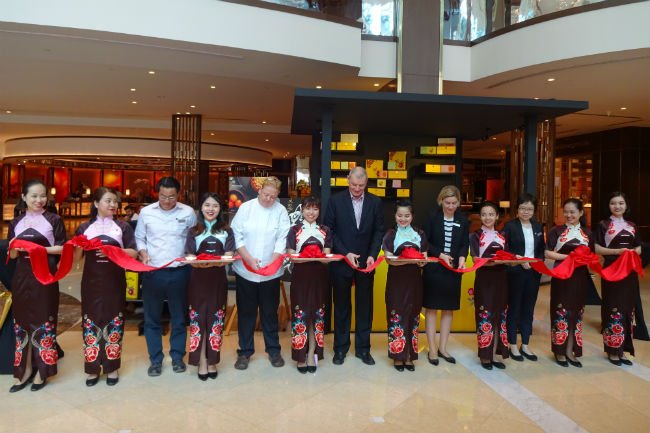 Sheraton Saigon representatives cut the ribbon to launch their collection of handcrafted mooncakes Many hotels and restaurants in Vietnam have launched their mooncake collections for this year’s Mid-Autumn Festival, or the Full Moon Festival, the second biggest festival for Vietnamese family reunion after the traditional Lunar New Year. Mooncake is an indispensable delicacy of the Mid-Autumn Festival (falling on the 15th day of the 8th month of the lunar calendar, or September 24 this year). People enjoy mooncakes together with family or present mooncakes to relatives or friends to express love and best wishes. Sheraton Saigon Hotel & Towers In celebration of the Full Moon Festival, the Sheraton Saigon introduces its collection of handcrafted mooncake indulgences. The mooncakes are contained in custom designed gift boxes which come in two sizes and can be specially embossed with company names and logos upon request. The mooncakes have eight flavors (with or without egg yolks) including White Lotus, Scallop, Cranberry, Green Tea, Coffee, Black Sesame, Pandan Lotus and Mixed Nuts. Sheraton Saigon mooncakes are priced at VND1,098,000 net per large-size box of four 220gr pieces, VND898,000 net per medium-sized box of four 150gr pieces, VND270,000 net per 220gr piece, and VND190,000 net per 150gr piece. They can be purchased at the Mooncake booth located at the Hotel Lobby from now till September 24, 2018. Le Méridien Saigon Join the Le Méridien Saigon to bring delights to this loving full-moon season by adding your own messages to the hotel’s mooncake delicacies and brightening the day of those you care for. The traditional golden-brown coated mooncakes, either filled with Green Bean, Coffee Lotus or Roasted Chicken paste, stand for a wish of joy, warmth and prosperity. The bright tone of Green Tea mooncakes sends a message of good health, while Black Sesame or Takesumi Charcoal mooncakes represent a constant existence beside ones’ side when they are in need. Le Méridien Saigon mooncakes are sold from now till September 30, with prices from VND868,000++ per box of four mooncakes. Windsor Plaza Hotel The Windsor Plaza Hotel is offering two collections of beautifully-presented mooncakes. Each set comes in an elegantly-designed box that makes these mooncakes the perfect gift to share with family, friends and colleagues during the festival season. The boxes are decorated with a floral motif, with images of orchids, roses, or chrysanthemums adorning the boxes, as well as sketches of iconic buildings in Vietnam such as Notre Dame Cathedral, Ben Thanh Market and Thien Mu Pagoda on the eight-cake box set. The mooncakes feature traditional and modern flavors including green bean, red bean, coconut, lotus seed, green tea, black sesame, tiramisu, roasted chicken and shark fin. This year also sees the addition of a new flavor: Durian green bean. You can choose the eight-cake box which features a two-drawer design with eight 100gr cakes; or the four-cake box with four 230gr cakes in savory and sweet flavors, and is accompanied by a box of specialty Oolong tea. Both of these unique sets are VND988,000+ per box. Sofitel Saigon Plaza The Sofitel Saigon Plaza celebrates the Mid-Autumn Festival with a selection of exquisite mooncakes collection. Elegantly encased in auspicious color of red and adorned with lotus flowers and leafs, the mooncakes of the Sofitel Saigon Plaza make perfect gifts for business associates, friends and family. This year, the Sofitel Saigon Plaza unveils two types of box: Emotion box and Magnifique box. The Emotion box (VND888,888++) is an ideal gift with four flavors: Luminarie, Matcha Tiramisu, Mixed Nuts and Red Bean 1 Yolk. The Magnifique box (VND1,188,888++) comprises an array of eight flavors including Luminarie, Matcha Tiramisu, Mixed Nuts and Red Bean 1 Yolk, Nutty Misu, Black Sesame 1 Yolk, Pandan Delight and Low sugar White Lotus 1 Yolk. Mooncakes are available at Gourmand Shop – Lobby Level from now till September 24, 2018. Dim Tu Tac Restaurant Prepared by Hong Kong chefs, Dim Tu Tac mooncakes are unique with four favors that combine traditional and modern tastes, including Mixed filling, Red bean, Blueberry and Lotus seed paste with two yolks. Dim Tu Tac also offers two-level gift-set box which includes four mooncakes and a box of abalone imported from Hong Kong. The four mooncakes box is priced at VND680,000 and the special gift box at VND1,080,000. Purchase of 30 boxes or more before August 31 will be entitled to a discount of 20% and a voucher worth VND500,000. Dim Tu Tac Restaurant's mooncake with lotus seed paste and two yolks filling made by Hong Kong chefs Hilton Hanoi Opera Inspired by luxurious, stylish handbags, the Hilton Hanoi Opera mooncake gift box 2018 is characterized by its handbag shape and rose gold plated handle. Covered with orange color, the box stands out as a unique, luxurious Mid-Autumn Festival gift. Beside the handbag-shaped box, the rectangular box can be a classic choice. Hilton Hanoi Opera mooncakes 2018 feature six flavors: Green tea lotus seed and salted egg; Red bean; Taro; Black sesame; Green tea lotus seed; Black chocolate, hazelnut seed, almond seed and lotus seed. While the former five have been favorite pastes throughout the years, the new paste of Black chocolate, hazelnut seed, almond seed and lotus seed will surprise the palate. Park Hyatt Saigon Inspired by the Vietnamese Mid-Autumns of the 1990s, when people cheered to a bountiful harvest and children awaited tasty treats during the festivals, the Park Hyatt Saigon together with Moon n Sun brings a traditional taste back with an authentic mooncake collection. The four traditional flavors are Northern lotus seed, black sesame with salted egg, matcha with salted egg and tropical fruits; all thoughtfully selected and baked with care to guarantee the best quality and authenticity to savor. The mooncake collection includes three different types of boxes which are: the traditional box (VND1,500,000) with four authentic cakes, the premium box (VND2,500,000) with four cakes and local green tea, and the deluxe box (VND3,250,000) with four cakes and a bottle of Late Harvest wine. The boxes are available for sale at the Park Hyatt Saigon and Moon n Sun stores. Hanoi Slam! to host competitive storytelling night 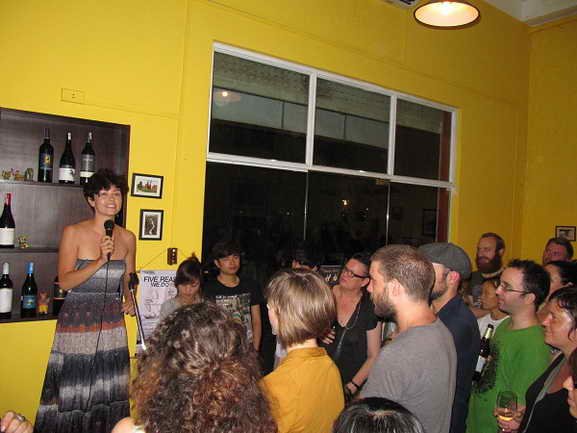 Hanoi Slam!’s storytelling competition attracts a great audience - PHOTO: COURTESY OF HANOI SLAM! Non-profit community group Hanoi Slam! will host a night of competitive storytelling with the theme “Leap of Faith” at Red River Tea Room in Tay Ho District of Hanoi City on August 29. The program requires contestants to tell true stories relating to the theme in a competitive format. The stories must be told in English without notes over a six-minute period. A panel of judges and invited guests will score the stories and award fantastic prizes to the top three stories of the night. The scores are calculated based on three main criteria: strength of the story, delivery of the story and the story’s relevance to the theme. The theme “Leap of Faith” refers to any bold action taken by a person, which may usher in changes for himself or herself. While this is a competition, it is held in the spirit of sharing stories and creating great moments that can be shared by all. Entrance fee is VND100,000 per person. All proceeds will be donated to the Blossom House for girls at Humanitarian Services for Children of Vietnam. Founded in 2002, Hanoi Slam! is dedicated to creating a platform for storytellers of all experience levels and abilities to share their storytelling prowess and passion with a willing audience. With all proceeds donated to charitable programs, the organization has also worked tirelessly to help keep vulnerable children safe and in school. Ho Chi Minh Road incomplete due to lack of funding  A section of the Ho Chi Minh Road running through the Central Highlands was completed in 2014 The Ho Chi Minh Road project needs some VND21 trillion to build the remaining sections so that the entire road can be officially opened to traffic, according to the Ministry of Transport. A report by the Ho Chi Minh Road Project Management Board submitted to the ministry indicated that 79% of the project, or 2,180 kilometers of the total 2,744 kilometers, has been completed so far. A section of the road spanning 172 kilometers is open to traffic, while the Cam Lo-La Son section, stretching 98.3 kilometers, is being prepared for construction in 2019. Work on another section, which is 289 kilometers long, has been suspended due to the lack of capital. According to the National Assembly’s Resolution 66/2013, the remaining sections are expected to be completed by 2020 to put into use the entire main route, stretching from Pac Po in the northern mountainous province of Cao Bang to Dat Mui Commune in Ca Mau Province in the nation's southern tip. The road has been designed with two lanes. Work has yet to begin on three sections of the road: the 30-kilometer section running from Cho Chu to Trung Son Intersection in Tuyen Quang Province, with a total investment of VND1.8 trillion from government bonds; the Rach Soi-Ben Nhat-Go Quao-Vinh Thuan section, spanning 55 kilometers, with 17 kilometers across National Highway 61 and 38 kilometers that will require construction, costing VND3.8 trillion; and the last 130-kilometer section stretching from Doan Hung to Cho Ben, with estimated capital of VND16 trillion. Considering the shortage of funds, the management board had proposed the Ministry of Transport request the Government to extend the project deadline to 2020 for the two-lane road construction for the Cho Chu-Trung Son Intersection and the remaining section of Rach Soi-Ben Nhat-Go Quao -Vinh Thuan. Resolution 66/2013 mandates that the Doan Hung-Cho Ben section follow the build-operate-transfer format, but the plan failed due to the huge investment capital required . The management board then proposed converting the investment format to funding from the State budget and government bonds or official development assistance loans. The Ho Chi Minh Road is 3,167 kilometers long, running parallel to National Highway 1A from the north to the south. The project has been divided into three phases: the first phase covered 2,000 kilometers between Hoa Lac in Hanoi City and Binh Phuoc Province. The section from Pac Po in Cao Bang Province to Hoa Lac and N2 Line passing HCMC was constructed in the second phase. The third phase is expected to finish the construction of the entire road, connecting all of the sections. Some of these sections are to be built under the expressway model. Garbage is taken to the treatment plant after it reopened in 2016 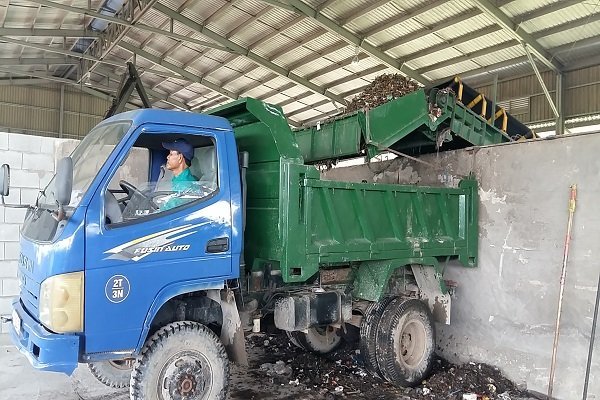 After a short time in operation, the waste treatment plant of Phuong Thao Development and Construction JSC in the Mekong Delta province of Vinh Long has temporarily been shuttered for failing to meet environmental protection requirements. Truong Dang Vinh Phuc, director of Vinh Long Department of Planning and Investment, told The Saigon Times on August 15 that the waste treatment plant had stopped receiving garbage. “The waste treatment plant is not eligible for operation,” Phuc said, adding that the equipment and technology at the plant failed to meet technical standards. Phuc stated that if the required conditions were not met by the end of this year, the local authority would withdraw the plant’s license. This deadline was set because the plant has borrowed money from Vietnam Development Bank, and the bank has asked the province to assist it in handling the issue of credit and assets that the company had mortgaged to the bank. Recently, a meeting between the owner of the plant, Vietnam Development Bank and Vinh Long Province's government was hosted to discuss the difficulties being faced by the plant. The bank presented two solutions. One, the owner would have to find a new investor to whom he could transfer the plant. Two, if the transfer solution fails, the bank will sell the plant’s assets to recover the debt. The modern waste treatment plant had only recently been reopened, in September 2016. Before that, in 2015, Vinh Long Province had asked Can Tho Urban Public Limited Company to stop tranferring garbage to the plant because of fears of environmental pollution. While the plant was temporarily suspended, all local waste was disposed of in a landfill. Phuong Thao Development and Construction JSC invested some VND250 billion to build the plant on an 8-hectare site in Hoa Phu Commune, Long Ho District. The plant’s capacity for treated waste is some 300 tons of garbage per day. To complete the project, the company borrowed VND200 billion from the Vietnam Development Bank. Owner of super-large water pump asks for advance 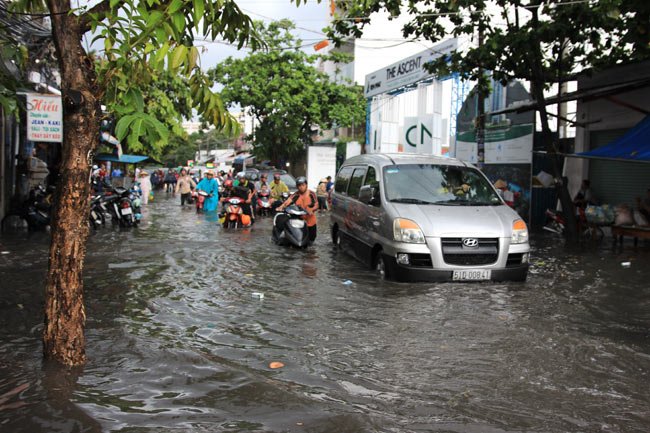 File photo of a street in HCMC submerged after heavy rain. The owner of a super-large water pump, installed on the flood-prone Nguyen Huu Canh Street in Binh Thanh District, has asked the HCMC government for an advance of VND30 billion to continue operating the pump due to a shortage of capital The owner of a super-large water pump, installed on the flood-prone Nguyen Huu Canh Street, has asked the HCMC government for an advance of VND30 billion to continue operating the pump due to a shortage of capital, reported the Nguoi Lao Dong newspaper. On August 15, Nguyen Tang Cuong, general director of the operator, Quang Trung Industry JSC, said the firm has yet to receive any money from the municipal government. Under the contract signed on April 19, the renter, the Steering Center of the HCMC Urban Flood Control Program, is required to announce a rent amount that the city can afford within 45 days. However, the center has not paid the rental fee to date. Cuong added that the company has asked the city’s authority many times to promptly set a rental fee so that it can be paid the operation charges for 2017. Getting no response, the operator asked the municipal government for a VND30-billion advance before August 15 to continue operating the pump. According to Cuong, the firm had spent considerable time researching the technology and then spent money installing the pump and used it 30 times, with significant success. However, the firm has yet to be paid for its labor, energy use and flood drainage system costs. Cuong insisted that the firm stop operating the pump due to the lack of capital. After the Quang Trung Group proposed a rental fee of VND24.4 billion per year, the municipal government assigned the center to review the operator’s proposal, consult the relevant agencies and departments and then report the result to the government. The HCMC Department of Planning and Investment and the HCMC Department of Finance were tasked with reviewing the proposal in terms of service charges and payment methods since the project is new and needs to comply with the prevailing payment regulations. The antiflooding pump, with a capacity of up to 90,000 cubic meters per hour, is capable of pumping mud and small pieces of garbage. Action needed to enhance efficiency of bus operations  A bus is seen in downtown HCMC. Many buses in HCMC transport small numbers of passengers despite operating at high frequencies Many buses in HCMC transport smaller-than-expected numbers of passengers despite operating at high frequencies. According to a report in Nguoi Lao Dong newspaper, the HCMC Department of Transport this month suspended two subsidized bus services, route No. 40 (between Mien Dong and Nga Tu Ga bus stations) and route No. 149 (between September 23 Park and Tan Phu-An Suong bus stations), which were operated by Dong Nam Cooperative and Viet Thang Cooperative, respectively. The services were suspended due to low demand. The operator of bus route No. 149 had earlier reported its inability to continue the service due to the lower-than-expected number of passengers. Bus route No. 40 was also found to be inefficient and had previously been suspended from August 2017 to March 2018. However, as reported by Nguoi Lao Dong newspaper, one of the reasons for the suspension is the refusal of transport cooperative members to work, aiming to pressure the management. Many bus operators of route numbers 10, 40, 18, 43, 44, 54, 65 and 78 do not go to work regularly as these services have not received subsidies for months. The local newspaper quoted an expert on urban transport as saying that the suspension of the two bus services is a lesson for others. Tran Quang Lam, deputy director of the HCMC Department of Transport, has directed the relevant units to oversee bus operations under the bus upgrade scheme of 2014-2017 and ensure interest subsidies as regulated. The department has also asked the transport cooperatives to arrange buses on their routes. If they fail to do so, they will have to pay back subsidies. According to Nguoi Lao Dong, the suspension of bus routes No. 40 and No. 149 does not appear to affect the regular passengers as they can opt for several alternative routes. HCMC currently has 2,478 vehicles and 143 bus routes, 105 of which are subsidized. With 60 more subsidized bus routes since 2002, bus subsidies surged from VND39.18 billion to VND1.29 trillion in 2012, averaging VND1 trillion per year. These subsidies have helped maintain the bus fares at the current levels, ranging from VND5,000 to VND6,000 per ticket. American Center offers free soft skills course The American Center in Hanoi will hold the “Soft Skills for Workplace Success” course free of charge from 5 p.m. to 6:30 p.m. every Monday from August 20 to October 1, 2018. This six-week course will focus on developing soft skills that are critical for success in the workplace, including communication, networking, attitude, teamwork, problem solving, and professionalism. The classes will include information, discussion, and activities for learning based on the curriculum from the U.S. Department of Labor. U.S. research has found that in addition to degrees and certificates, the development of soft skills is necessary for a strong and growing workforce. Communication skills have been ranked as the No.1 skills that employers desire in a job candidate. In this course, participants will learn various forms that people use to communicate, especially communication skills used during a job interview. A positive and enthusiastic attitude is critical in workplace success as it can help with promotions. The activities in this course seek to teach participants strategies for turning negative thinking into positive thinking, and strategies for displaying and discussing enthusiasm during an interview and on the job. Teamwork is another essential part of workplace success. The ability to work as part of a team is one of the most important skills in today’s job market. The course will explain the what, the how and the why of teamwork, and help participants discover the barriers to teamwork and strategies to overcome these barriers. Participants will then look at the importance of networking as a strategy for career development and exploration, and learn about informational interviewing and potential guidelines to consider when using social networks. Problem solving and critical thinking refer to the ability to use knowledge, facts, and data to effectively solve problems. Having the necessary skills to identify solutions to problems is one of the skills that employers look for in employees. The activities in this section focus on learning how to solve problems in a variety of ways in the workplace. Participants will learn the difference between criticism, praise, and feedback. The course also presents strategies for making ethical decisions, solving problems on a team with others, and learning how to include others’ ideas when assessing actions and statements in the workplace. Employers want workers to be responsible, ethical and team oriented, and possess effective communication, interpersonal, and problem-solving skills. Wrap these skills up all together and you’ve got professionalism. This course will review the first five soft skills again to see how they blend together to create the soft skill of professionalism - the complete package to produce workplace success. Danang urged to build regional connection Danang City should connect with neighboring localities, mainly Hue City and the Quang Nam and Quang Ngai provinces, to jointly strengthen the seaport, aviation and tourism sectors, speeding up Danang’s development until 2030. Speaking at a conference on August 10 on the execution of Decree 33-NQ/TW on building and developing Danang City over the last 15 years, Nguyen Duc Kien, deputy head of the National Assembly Economic Committee, noted that the central provinces of the country have enormous potential in sea and seaports, furthering the potential for easy cooperation to enhance their growth. Kien cited the example of Chan May Port, located in the Chan May-Lang Co Economic Park in Thua Thien-Hue Province’s Phu Loc District. The port can accommodate general cargo vessels weighing up to 50,000 DWT, and 362-meter-long international cruise ships, while Danang Port’s 1,700-meter wharfs can receive general cargo vessels weighing up to 70,000 DWT and raise its cargo throughput to 12 million tons per year, Kien added. “The two ports are considered the largest in Central Vietnam to handle international cruise ships,” he remarked, stating that the connection between Danang and other localities for mutual economic development and tourism advertising is necessary. Addressing the conference, Tran Du Lich, a member of the Prime Minister’s economic advisory group, noted that Danang is key to the tourism growth of the central region, so tourism connection is essential. Danang International Airport serves 27 direct air routes, mainly from Japan, South Korea and China, carrying 1.6 million international passengers over the first six months of this year. Most of these passengers reportedly traveled onward to neighboring localities, such as Hue, Quang Nam and other provinces that do not have an international airport, Lich stressed. According to him, the expansion of Danang Airport and the connection between Danang International Airport and Chu Lai Airport in Quang Nam Province will open the door to the region’s economic and tourism growth. “Danang City can develop residential areas around the airport, in collaboration with the surrounding satellite urban areas,” stated architect Ngo Viet Nam Son. Deputy Minister of Transport Le Dinh Tho revealed that the city currently has adequate infrastructure for regional connections and sustainable economic development. “The Danang-Quang Ngai Expressway will be completed in September, and Hai Van 2 Tunnel linking Hue City is slated for completion in 2020,” Tho said, adding that the Tien Sa Port will become a tourism port after the completion of the Lien Chieu Port. Danang Party Chief Truong Quang Nghia told the conference that the expansion of the airport is an urgent mission, explaining that even though the international airport has a capacity of four million passengers per year, the number of tourists entering Danang City is rising by 38-40% per year. Danang International Airport is forecast to receive 13 million passengers in 2020 and 28 million passengers in 2030. This will overload the airport if the expansion fails to be carried out. Wage Council establishes 5.3% minimum regional wage hike  All members of the National Wage Council today, August 13, finalized a 5.3% minimum regional wage hike for 2019, at an average of VND175,000, following three meetings to discuss the matter. The minimum wage in region one rose by VND200,000 at VND4.18 million per month, while that in region two was hiked by VND180,000. The lowest wage in regions three and four nudged up by VND160,000. The wage hikes must be approved by the Government before they take effect. The council had failed to finalize the minimum regional wage hikes during the first two meetings as there was a large gap between the lowest wage rate proposed by the Vietnam General Confederation of Labor, which represents employees, and the Vietnam Chamber of Commerce and Industry, which represents employers. In fact, annual region-based minimum wage hikes have directly affected enterprises, particularly those operating sectors that need a large number of employees, such as garments and footwear, as the hikes lower their competitiveness. They need to trim their workforce or embrace automation to reduce labor costs accordingly. The representatives of enterprises and associations had previously raised objections to this year’s region-based minimum wage increases. At a recent conference, Vu Duc Giang, chairman of the Vietnam Textile and Apparel Association (VITAS), recommended not raising the minimum wages this year as many firms are facing difficulties with manufacturing in the country and exporting goods. He also warned against a slew of orders being transferred to Bangladesh, which boasts a cheaper workforce and more preferential tariffs than Vietnam. Labor costs at textile and garment plants in Bangladesh currently account for 20% of their primary costs, while in Vietnam, they fluctuate between 26% and 30%. Bangladesh is the second-largest textile-apparel exporter in the world, with the total export turnover hitting US$28.1 billion in 2016, preceded by China. The competition to win textile-apparel orders versus Bangladesh has become stiffer as the sector in Bangladesh makes up 80% of the total export turnover, which is 65% higher than that of Vietnam. Apart from VITAS, many enterprise associations at home and abroad have objected to a region-based minimum wage hike at the Vietnam Business Forum 2018. They suggested that the minimum wages should be raised at an appropriate rate because high labor costs will result in reduced competitiveness among local and overseas firms. The Japan Chamber of Commerce and Industry in Vietnam recently wrote to the Vietnamese Ministry of Labor, Invalids and Social Affairs, stating that Vietnam had increased the minimum wage by 6.5% last year, outstripping the consumer price index of 3.5%. Textile-garments, footwear and industrial manufacturing sectors, which require sizable manpower, are forecast to generate hefty profits for local exports. Therefore, the minimum wages play a pivotal role in deciding the competitiveness of these sectors. According to a survey, some 75% of the Japanese firms running a business in Vietnam said that the wage hikes have affected the economy, forcing them to apply automation in manufacturing to lower labor costs. Addressing this issue, Pham Minh Huan, deputy minister of Labor, Invalids and Social Affairs, remarked that apart from the region-based minimum wage hikes, the seniority-based pay scale and social insurance contribution have created hurdles for companies, especially those in the manufacturing and processing sector and those employing numerous workers. To minimize a skyrocketing salary fund whenever the minimum wage is hiked, Truong Van Cam, vice chairman and general secretary of VITAS, proposed not regulating the level-one wage on the salary scale based on the minimum wage, as the minimum wage hike will lead to a surge in other relevant costs, such as social and health insurance payments. Australia helps Vietnam promote industry linkages in vocational education  VLA Chairman Le Duy Hiep (L) and DVET Deputy General Director Truong Anh Dung at the signing ceremony in HCMC - PHOTO: COURTESY OF THE AUSTRALIAN EMBASSY IN VIETNAM Two memorandums of understanding on vocational education and training (VET) cooperation were signed on August 14 between Vietnam’s Directorate of Vocational Education and Training (DVET) and Vietnam Logistics Association (VLA), and between Vietnamese logistics enterprises and VET providers, with the assistance of the Australian government via the Aus4Skills. Australia is well-known for the industry-led vocational education and training – a model that helps workers receive relevant and high-quality training and meet industries’ increasing demand for a skilled workforce. Since 2017, the Australian government, through Aus4Skills, has been sharing its experience to help Vietnam draw on lessons learned from Australia’s VET system and adapt it to Vietnam’s context with stronger engagement of the business community, through a pilot project in the logistics sector. The MoU signing event shows Vietnam’s commitment to improving the relevance and quality of VET through promoting industry linkages. As such, a foundation has been laid for stronger collaboration between VET providers and the business community. “Promoting industry linkages with VET is one of the effective solutions to renew and enhance VET quality in Vietnam. The industry-led VET pilot project in the logistics sector serves as a demonstration model that can potentially be applied in other sectors in the country,” Truong Anh Dung, deputy general director of DVET, said at the ceremony. Vietnam Challenge for Environment launched The American Center in partnership with Swiss EP and Hatch has launched the Vietnam Challenge for Environment, which aims to match researchers with entrepreneurs to create sustainable solutions not only to help the environment but also to stimulate Vietnam’s academic research and encourage startup innovation. The program is held in the context of environmental problems negatively impacting human health and quality of life. In spite of growing awareness and extensive research, there are not enough viable, sustainable, and scalable solutions to address these challenges. Joining the program, researchers will present their research projects with practical environmental applications to entrepreneurs, through which startup teams will be formed. Existing startups on environmental protection and energy can also apply. Selected teams will attend a boot camp and be matched with mentors from August 29 to 31. At the Demo Day on November 8, six startups will be recognized for their solutions and receive seed funds, publicity and exposure. The first, second and third prizes for newly formed teams/startups are US$3,000, US$2,000, and US$1,000 respectively. The respective prizes for pre-existing startups are US$4,000, US$3,000, and US$2,000. Deadline for registration is August 22, 2018 at noon. VNN |
↧
Article 1
Goverment News 23/8 PM orders meticulous preparation for WEF ASEAN 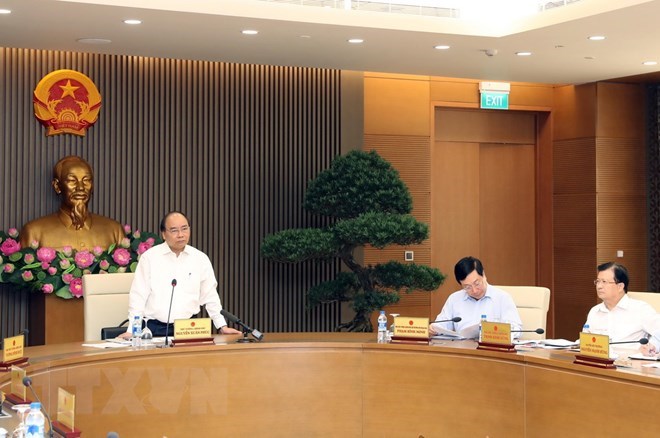 Prime Minister Nguyen Xuan Phuc has called for meticulous preparation for the World Economic Forum on ASEAN (WEF ASEAN). Prime Minister Nguyen Xuan Phuc has called for meticulous preparation for the World Economic Forum on ASEAN (WEF ASEAN), which will take place in Hanoi on September 11-13. Hosting the Government’s regular meeting on August 22, PM Phuc required all sub-committees to make use of the experiences gained through the organisation of APEC 2017, the sixth Greater Mekong Sub-Region (GMS-6) Summit, and the 10th Cambodia-Laos-Vietnam Development Triangle Summit. The Government leader stressed that improvement to Vietnam’s business climate should be manifested through the preparation to connect WEF investors with Vietnamese firms. He asked the Ministry of Culture, Sports, and Tourism, in collaboration with the Hanoi People’s Committee, to enhance the popularisation of Vietnam’s image and position as well as provide support for international reporters to cover the event. Alongside breakthrough initiatives, the careful preparation of content is crucial for the success of the event, he underlined, asking relevant ministries and branches to do their utmost to prove Vietnam’s ability as a forum co-host. According to the Foreign Ministry’s report, Vietnam and the WEF have already agreed on the main content of the forum. The event will take place in Hanoi from September 11-13 under the theme “ASEAN 4.0: Entrepreneurship and the Fourth Industrial Revolution”. The agenda has been built with 60 sessions, many of which will be broadcast on the WEF websites, as well as prestigious news agencies worldwide. This is one of Vietnam’s biggest foreign events this year, attracting more than 1,000 domestic and international delegates. The presidents and prime ministers of eight countries have confirmed their attendance at the event. The forum will see the participation of 50 ministerial-level representatives, 800 heads of regional- and world-leading corporations, as well as some 120 reporters from world and regional media outlets to cover the event. The WEF was established in 1971 as a non-profit foundation and is headquartered in Geneva, Switzerland. The forum engages the foremost political, business, and other leaders of society to shape global, regional, and industry agendas. Founded in 1967, the ASEAN groups together Brunei, Cambodia, Indonesia, Laos, Malaysia, Myanmar, the Philippines, Singapore, Thailand, and Vietnam. High level visits to shape basis for stronger Vietnam-Egypt ties  President Tran Dai Quang (R) and his Egyptian counterpart Abdel Fattah el-Sisi during the latter's State visit to Vietnam in September 2017 Delegation exchanges at the highest level between Vietnam and Egypt will create a solid foundation for bilateral cooperation to develop, said Vietnamese Ambassador to the African nation Do Hoang Long. He made the remark in an interview with Vietnam News Agency ahead of a trip to Egypt from August 25 to 29 by President Tran Dai Quang. This will be the first State visit by a Vietnamese head of State to Egypt since the countries set up diplomatic ties in 1963. Ambassador Long underlined the importance of this tour as it is not only a reciprocal visit after Egyptian President Abdel Fattah el-Sisi came to Vietnam in September 2017 but will also reiterate the commitments both sides made last year and strengthen bilateral connections in all aspects such as politics, economy, trade, investment, culture and education. During the trip to Vietnam by President el-Sisi, the two countries’ leaders witnessed the signing of nine cooperation agreements in various fields, and the implementation of these deals has resulted in encouraging outcomes, he added. During President Quang’s tour, the two sides plan to ink cooperation documents relating to finance, stock market, oil and gas and education. They will be a basis for them to translate words into action, reinforcing relations in trade, investment, culture, politics, education and many other areas. The diplomat affirmed that there remains much potential for both sides to strengthen links in fields of their strength, including agriculture, services and sea-based economy. However, current partnerships remain modest, with bilateral trade only about 350 million USD per annum at present. Their businesses haven’t had enough information to learn about each other’s markets. To reach the annual trade target of 1 billion USD, both countries need to make stronger efforts, Long said, adding that they should create a legal corridor for enterprises, ministries and sectors to carry out concrete activities. Meanwhile, businesses also need to be more active in gaining information, learning about markets and seeking partners. Services are the field Vietnam and Egypt should also increase collaboration in, especially those with high added value, since if they only depend on the export of goods, mainly agricultural products, it will be very difficult for them to boost trade to 1 billion USD. The ambassador suggested cooperation be fostered in new spheres, particularly in the context of Industry 4.0, noting Vietnam has strengths in software production and export and telecom services. These are fields the two sides should capitalise on to raise bilateral trade to 1 billion USD each year. In terms of culture and people-to-people exchange, Long said they are also important areas because culture and people-to-people exchange are the bridge helping the two peoples understand more about each other. He said the countries need to increase delegation exchanges between cultural and arts associations to boost mutual understanding. President’s visit to Ethiopia to enhance bilateral relations 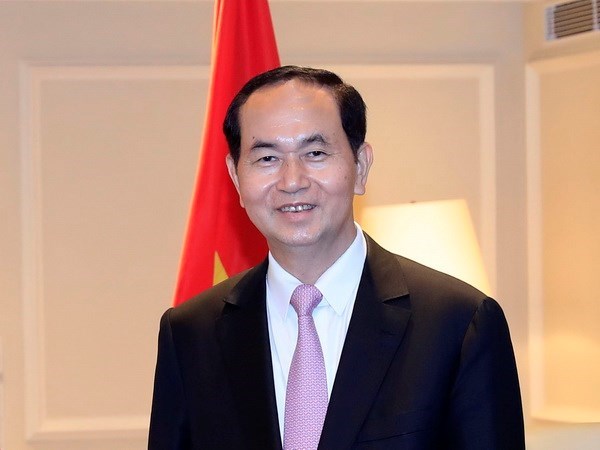 President Tran Dai Quang President Tran Dai Quang is paying a state visit to Ethiopia from August 23-25, aiming to discuss measures to boost bilateral ties, particularly in economics and trade. In an interview with Ethiopian press ahead of the visit, President Quang expressed his delight at leading a delegation to Ethiopia, saying that it is the first visit by a State leader of Vietnam to the African country since the two set up diplomatic ties in 1976. Vietnam attaches importance to maintaining its traditional friendship and fostering collaboration with Ethiopia. However, in recent years, the two countries have not organised delegation exchanges regularly, and economic and trade cooperation has failed to meet potential. “During this visit, I will hold talks with President Mulatu Teshome and meet Prime Minister Abiy Admed and leaders of the House of Federation and the House of Peoples' Representatives to exchange views on orientations and measures to boost bilateral cooperation, with the focus on strengthening political trust, stepping up cooperation in economics, trade, investment and agriculture and promoting cultural and people-to-people exchanges,” Quang stated. He added that he will use the occasion to meet leaders of the African Union (AU) to discuss how to intensify multifaceted cooperation between Vietnam and the AU and its members, and to coordinate effectively at regional and international forums, especially within the framework of the United Nations, Non-Aligned Movement and South-South Cooperation. The Vietnamese leader expressed his belief that his visit will push bilateral ties into a new era of development. He told reporters that economics and trade will be a main pillar in bilateral cooperation. With each country’s population at about 100 million, they hold many opportunities to expand exports to each other’s market. Vietnam wants to ship farm produce, processed food, footwear, garment and textiles, seafood, electronic products, construction materials and rubber and wood products to Ethiopia. Several Vietnamese enterprises have invested in Africa, and are considering pouring capital into Ethiopia. Therefore, the two countries should carry out preferential policies and help their enterprises promote trade and investment, Quang suggested. It is also necessary to have an appropriate payment mechanism to ensure safety for business transactions, he said, stressing the need to speed up negotiations towards the signing of agreements to create a legal framework for business and investment activities. Regarding Vietnam’s relations with Africa, President Quang stated Vietnam has to date established its diplomatic ties with 53 out of 55 African countries. Vietnam’s friendship and cooperation with African nations has grown well in many fields. Vietnam is willing to act as a bridge for the AU and the Association of Southeast Asian Nations (ASEAN), boost comprehensive collaboration between the two continents and maintain close coordination at inter-regional and global forums, thus contributing to peace, cooperation, development and prosperity. Vietnamese Embassy in Russia raises funds for victims of Laos dam collapse 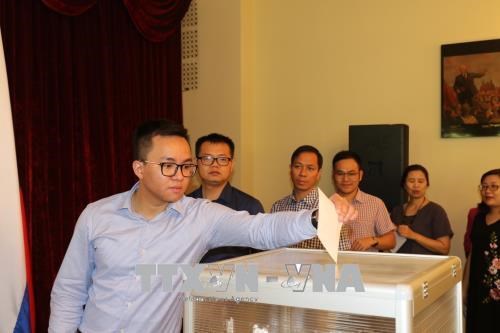 Staff at the Vietnamese Embassy in Russia donate at least one day’s salary to the fund for victims of Laos dam collapse The Embassy of Vietnam in Russia on August 22 held a fundraising event to support victims of the hydropower dam collapse in Laos’ Attapeu province, which caused great human and property losses. At the event, Vietnamese Counsellor Nguyen Quynh Mai underlined the traditional friendship between Vietnam and Laos, saying Vietnamese ministries, agencies and localities have been conducting a wide range of practical activities in support of Lao victims. Staff at the embassy and Vietnam’s representative offices in Russia offered at least one day’s salary to the fund, hoping Lao people will soon overcome the consequences of the incident to stabilise their lives and recover production. The donation will be sent to Lao people through the trade union of the Vietnamese Foreign Ministry. A dam of the Sepien-Senamnoi hydropower plant in Laos’ Attapeu province broke on July 23, affecting 13 villages in Sanamxay district with six completely flooded. As of August 14, 39 people had died while 97 other remained missing, according to the Lao government. Vinh Phuc province promotes foreign aid 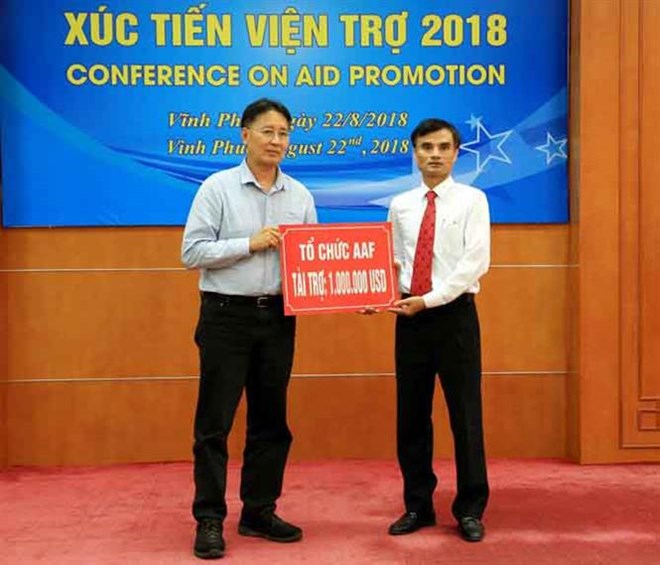 Vinh Phuc province receives additional aid from foreign NGOs The northern province of Vinh Phuc will create optimal conditions for foreign non-governmental organisations (NGOs), businesses and individuals to support its disadvantaged localities and needy people. Vice Chairman of the provincial People’s Committee Le Duy Thanh made the pledge at a conference on foreign aid promotion hosted by the committee on August 22. According to Thanh, to raise the efficiency of foreign aid mobilisation, local authorities have devised plans and policies to facilitate NGOs’ projects in the province. Vinh Phuc has also enhanced monitoring and regular assessments to ensure assistance efficiency, while working with other localities in aid mobilisation and management, he added. At the conference, sponsors vowed to provide more than 1.4 million USD for NGO projects to be carried out in the locality in 2019. A total 13 NGOs from many countries are operating in the province, including those from the US, the Republic of Korea, France, Japan, the UK and India. The organisations have launched projects with total assistance exceeding 720,000 USD, mostly in social issues, urgent aid, capacity development and improvement, microfinance and environmental protection. Major projects include one to offer prosthetic legs to disabled people and another to support Agent Orange/dioxin victims. In the first seven months of 2018, three more organisations conducted research for their development plans in the province, while six new projects are awaiting approval. They include projects in sustainable agricultural value chain development for small-sized farmer households, support for senior citizens and healthcare solutions. Quang Ngai urged to develop tourism  Vice President Dang Thi Ngoc Thinh speaks at the working session with Quang Ngai officials on August 22 Vice President Dang Thi Ngoc Thinh has urged the central province of Quang Ngai to tap into its tourism potential, in part by calling for domestic and foreign investment to build more tourism products. During a working session with provincial authorities on August 22, she lauded the province’s efforts in socio-economic development, especially in terms of maintaining the welfare of local people. She noted that Quang Ngai needs to develop industry in tandem with environmental protection, while also accelerating poverty reduction by making use of the State’s sustainable poverty reduction and new rural development schemes. In new rural development, she suggested giving priority to qualified localities, adding that those that have met the criteria for new-style rural areas should be developed into model ones. Apart from socio-economic development, she called for further attention given to maintaining national defence and security. Thinh noted that people in the fishing sector should be educated about relevant domestic and international laws, as well as knowledge regarding national sovereignty. In particular, the province was asked to not overlook disaster prevention and control, and instead strive to deal with issues of public concern such as pollution, child abuse, and drowning. In the first half of this year, Quang Ngai posted a 9.23 percent growth in gross regional development product (GRDP) year-on-year. The value of the agro-forestry-fisheries sector surpassed 1.44 trillion VND, or 49.3 percent of the plan. It earned 245.5 million USD from exports, equivalent to 54.6 percent. Revenue to the State budget topped 9.2 trillion VND in the half of 2018. Quang Ngai is famous for its cultural vestiges, such as the Chau Sa Citadel, and Ong and Mai Son pagodas; and beautiful landscapes like Thien An mountain, Tra Khuc river, and Sa Huynh and My Khe beaches. Tourists also have a chance to visit popular old battlefields such as Ba To, Tra Bong, Ba Gia, Van Tuong, and Son My. Vietnam, China push cooperation between localities 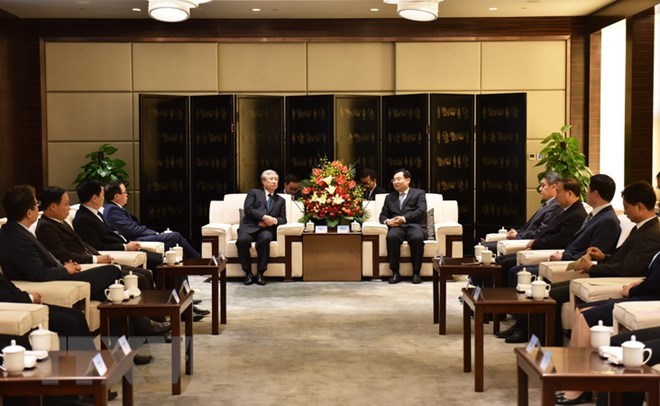 At the meeting Tran Quoc Vuong, Politburo member and permanent member of the Secretariat of the Communist Party of Vietnam Central Committee, on August 22 asked China’s Shaanxi province to enhance cooperation with Vietnamese localities and improve the efficiency of collaboration in economy, trade, tourism, and culture. He made the suggestions at a meeting with Hu Heping, member of the Communist Party of China (CPC) Central Committee and Secretary of the Shaanxi Provincial Committee of the CPC, during which Vuong also briefed the host on Vietnam’s socio-economic development. Vuong highly valued the achievements recorded by the Chinese province in recent times, noting his belief that under the leadership of the CPC Provincial Committee and local authorities, Shaanxi residents will successfully complete targets and tasks set by the 19th CPC National Congress. In response, Hu Heping spoke of Shaanxi province’s efforts in Party building, socio-economic development, and poverty reduction, especially its experience in reforms and opening up, as well as the implementation of the resolution adopted at the 19th CPC National Congress. He informed his guest about the outcomes of cooperation between Shaanxi and Vietnam in general and its localities in particular, and expressed his opinions on orientations to step up the affiliation for the time ahead. During their stay in Shaanxi, Vuong and his delegation visited new style rural building models and socio-economic establishments in Yan’an and Xi’an cities. Vice President presents gifts to poor children in Binh Dinh 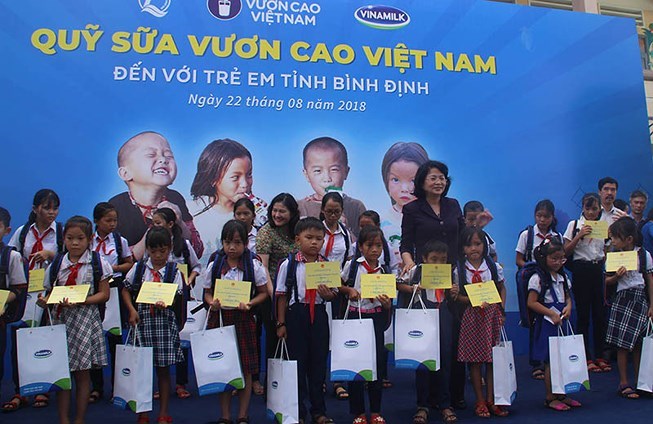 Vice President Dang Thi Ngoc Thinh, together with representatives of the “Stand Tall Vietnam” Milk Fund, handed over milk, scholarships, and gifts to 100 children whose parents are soldiers working to protect the country’s sea and island sovereignty. (Source: plo.vn) Vice President Dang Thi Ngoc Thinh on August 22 presented scholarships and gifts to needy children and households in the central province of Binh Dinh. The official, together with representatives of the “Stand Tall Vietnam” Milk Fund, handed over milk, scholarships, and gifts to 100 children whose parents are soldiers working to protect the country’s sea and island sovereignty. She also gave 50 gifts to social policy beneficiaries in Binh Dinh province on the day. On this occasion, representatives from the National Fund for Vietnamese Children; the Ministry of Labour, Invalids, and Social Affairs; Vietnam Dairy Products JSC (Vinamilk); and the “Stand Tall Vietnam” Milk Fund presented 64,000 glasses of milk to primary school students in Phuoc Thang commune, Tuy Phuoc district. These students also received free medical check-ups by doctors from Vinamilk’s Nutrition Counselling Centre. Since 2008, the “Stand Tall Vietnam” Milk Fund has given 33 million glasses of milk, worth nearly 140 billion VND (6 million USD), to primary school students. This year, the fund is expected to buy over 1.5 million glasses of milk, valued at 10 billion VND (432,220 USD), to children in 23 cities and provinces. The same day, President Thinh handed over 2 billion VND (86,443 USD) to 40 needy families in Hoai Nhon, Phu My, Phu Cat, and Hoai An districts in order to help them build houses. The funding comes from Hung Thinh Corporation based in Ho Chi Minh City. VNN |
↧
↧
Article 0
Vietnamese firms tap vegetarian food market The vegetarian food segment has been attracting a great deal of attention from businesses in recent years and gradually satisfied the tastes of customers. 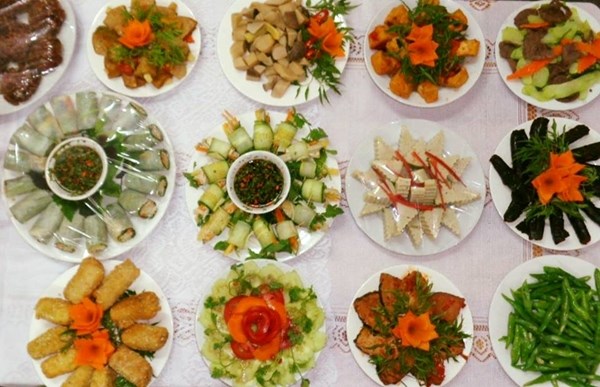 Vegetarian food has become popular in Vietnam in recent years According to Nguyen Thi Ai Trinh, CEO of Au Lac Vegetarian Food, previously people often thought of the religious perspective when talking about vegetarian food. Hence, the vegetarian food market was limited. However, in recent years, this market has expanded and developed strongly, she said, boasting that her company has built 80 vegetarian food stores and run 11 restaurants across the country. To meet the increasing demand of customers, local businesses have improved quality and design of products to expand the vegetarian food market in densely populated areas. Besides vegetarian instant noodles, domestic firms also sell various kinds of vegetarian spices made from mushrooms. On the occasion of the Buddhist Vu Lan Festival, which is annually observed on the 15th day of the seventh lunar month, nearly 80 restaurants, hotels, pagodas and vegetarian stores in Ho Chi Minh City are participating in the vegetarian cuisine week at Dam Sen Cultural Park from August 19 to 26. The week offers more than 300 vegetarian dishes such as brown rice, oat porridge, “bun rieu chay” (vegetable noodle soup) and “banh xeo gac” (spiny bitter gourd pancake) and 50 types of drinks. For many Vietnamese, a vegan diet is traditionally confined to two sacred Buddhist days a month, an observance of compassion for all sentient beings. But increasing numbers of people are also turning to a plant-based diet for health reasons, and are strengthened in their resolve by environmental considerations. With its abundance of delicious vegetables, fruits and roots, Vietnam has all the conditions to cater to vegans. Vegans can find a variety of dishes in Vietnam. However, the most common vegan dishes are made of soybeans. Apart from tofu, soybeans lend themselves to soya paste, fermented tofu, veggie Vietnamese ham and a wide variety of other dips and dishes. Since soybeans are nutritious, rich in protein and calcium, and non-fattening, they are a good replacement for animal meat. They are also said to be useful in treating several illnesses, including heart disease and cancer. Vegans can also find in Vietnam many dishes that look like they’re made with real meat. For example, chicken legs are made of citronella stems with a special tofu wrapping that even has the texture of meat. The dishes even include Barbecued pork chops, beef wrapped in la lot leaves, stewed chicken and steamed fish. VNA |
↧
Article 4
Social News 24/8 Quang Tri to take action to promote “bai choi” 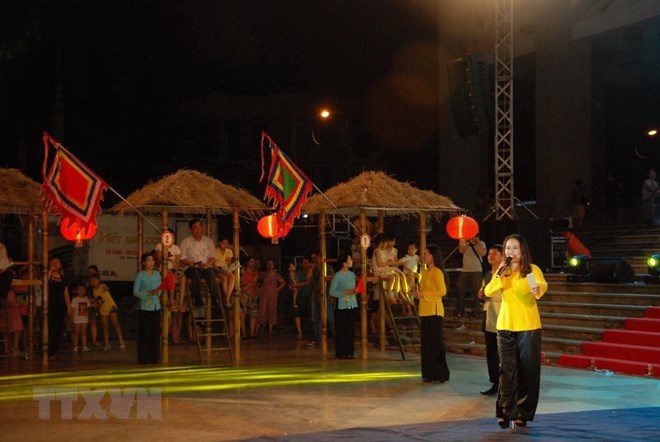 A performance of "bai choi" singing The People’s Committee of central Quang Tri province has adopted a plan to preserve and promote the intangible cultural heritage of “bai choi” activities from 2018-2023. Accordingly, Quang Tri will spend about 1.8 billion VND (77,500 USD) on a set of measures to preserve and promote the traditional art form, including organising classes for young people on the practice of “bai choi”; supporting artisans, clubs, and communities performing “bai choi”; and promoting “bai choi” as a traditional art for cultural and tourism development. Since 1990, “bai choi” festivals have been recreated across villages in Quang Tri, for example in Tung Luat and Co My villages in Vinh Giang, Vinh Linh, as well as in Ngo Xa Tay village in Trieu Trung, Trieu Phong. The practice has mostly been passed down orally through the generations. However, most “bai choi” artisans are now quite old, putting the art at risk of sliding into oblivion. In December last year, the art of “bai choi” was awarded UNESCO status in the 12th session of the Intergovernmental Committee for the Safeguarding of Intangible Cultural Heritage held in Jeju Island in the Republic of Korea. The art originated almost 400 years ago, when Dao Duy Tu, an outstanding mandarin under the reign of the Nguyen Lords (1558-1777) who later formed the Nguyen Dynasty (1802-1945) in Hue, created the game to entertain the community during their post-harvest time. “Bai choi”, which literally means a deck of cards (bai) and bamboo huts (choi), is half a game and half theatre performance. Nine bamboo huts on stilts are erected on a spacious land plot, in two rows, each made up of four huts for the players. The bigger hut is in the middle, with a wooden stand for the controller of the game. One to three players share a hut while the audience surrounds the rectangular playing plot. At the beginning of each game, each hut receives three cards. The controller sings folk songs that include the names of 27 cards, giving clues to the players as to what their cards might be. The aim is for the players to guess their cards. The players must find the name of the card being mentioned in the verses in the song, and then find out the coinciding cards in their hands. The winner is the first hut to have three cards that coincide with the names given by the controller. The controller’s singing, dancing, and other gestures are accompanied by music played on traditional instruments and cheers from the audience. ”Bai choi” stories include lessons on morality and compassion, as well as love for the village and the nation. The art reflects the spirit of human solidarity. All the villagers, both audience members and players, are drawn into the joyful ambiance for the purpose of sharing happiness and solidarity. “Bai choi” is Vietnam’s tenth cultural practice to receive the title from UNESCO. The art was awarded intangible heritage status thanks to a creative recreation within a village community. Nghe An province addresses flood consequences Authorities in Nghe An province’s Ky Son district have instructed local forces to actively work with residents to address the consequences of recent floods on Nậm Mộ river. Hundreds of local officials, border soldiers and police force joined hands with residents in Ky Son district to clean mud on streets, office buildings and residential houses. They also helped clean local schools quickly because the new school year is around. All people have been actively address the post-flood situation to ensure residents can resume their daily activities. Painting exhibition in Hanoi marks National Day A painting exhibition kicked off on August 20 at the Exhibition House, 16 Ngo Quyen Street, Hanoi, as part of activities to mark the 73rd anniversary of the August Revolution (August 19) and National Day (September 2). Tran Khanh Chuong, President of the Vietnam Fine Arts Association, said his association received 2,500 works by 1,828 painters for the exhibition – of which 1,345 were selected for display at the eight regional exhibitions. The Hanoi exhibition showcased 120 paintings in different materials – such as oil, lacquer, silk, and acrylic – by 124 artists, he added. The event will last until August 30, 2018. Seminar discusses use of robotic technology in Vietnam 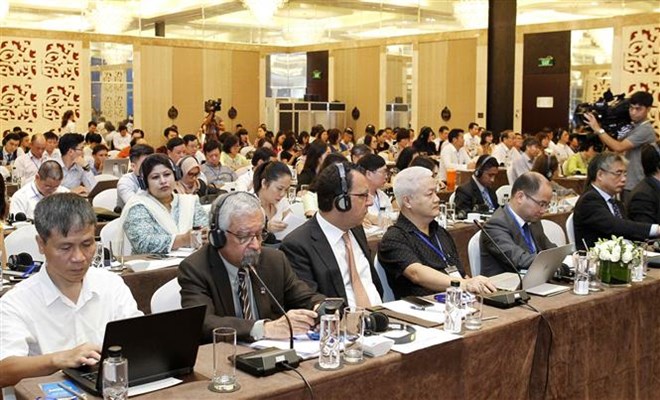 Enhancing connectivity between foreign scientists and domestic universities and institutes is a basic solution to further boosting the application of robotic and mechatronic technology in different fields in Vietnam, experts have suggested. They raised the suggestion during a seminar on “robotic and mechatronic technology in the fourth industrial revolution: demand and solutions for Vietnamese firms”, which was co-hosted by the Ministry of Industry and Trade (MoIT), the Ministry of Science and Technology and the Ministry of Planning and Investment in Hanoi on August 21. The MoIT reported that the number of Vietnamese enterprises using new technologies, especially core ones in industry 4.0 in manufacturing, remains modest. As over 97 percent of domestic businesses are micro, small and medium-sized enterprises (MSMEs), they have met difficulties regarding capital, technological expertise, human resources and innovation capacity while their linkage with sci-tech organisations remains limited. Deputy Minister of Industry and Trade Cao Quoc Hung suggested that foreign scientists, domestic universities and research institutes should work closely together to conduct scientific studies, open training courses, and hold scientific seminars. He also expected them to offer advices to Vietnamese enterprises in the process of renovating manufacturing technologies and developing new products. Ho Anh Van, Dean of the Materials Science Faculty under the Japan Advanced Institute of Science and Technology (JAIST), said apart from industrial production, robots could be used in agriculture, fruit picking, health care, care for the elderly and surgery He added that JAIST is partnering with Vietnamese researchers to pilot manufacturing robots and hoped that they could be used more widely in the country in the near future. The event attracted hundreds of Vietnamese technological experts and scientists from countries worldwide. VN needs to optimise artificial intelligence for development: official 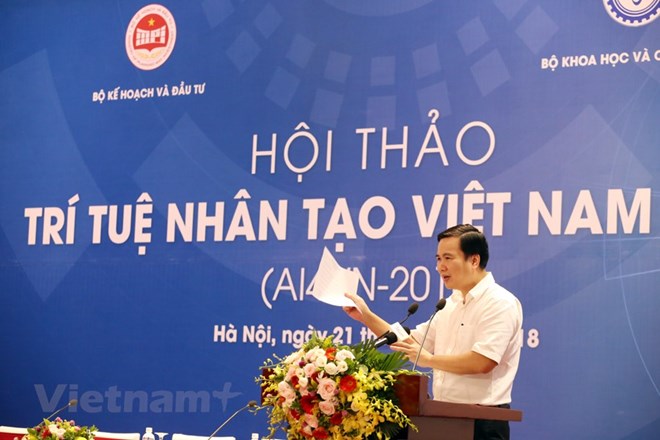 Deputy Minister of Science and Technology Bui The Duy Vietnam has seen remarkable development in artificial intelligence (AI) and the country needs to take full advantage of AI for its development, said Deputy Minister of Science and Technology Bui The Duy. “AI must look toward application in developing products,” Duy said at a seminar on Vietnam’s AI development (AI4VN 2018) held in Hanoi on August 21. The event, hosted by the Ministry of Science and Technology, was part of the Programme of Connecting Vietnam Innovation Network 2018 held from August 18-24 with the participation of overseas Vietnamese science and technology experts. The AI4VN 2018 aimed to share the strategic vision and viewpoint of the country’s leaders on opportunities to access and apply achievements of the fourth Industrial Revolution (Industry 4.0) in key sectors. It looks to collect expert’s experience in AI research and training, along with technology transfer and application for the country’s development. It also offers chances for overseas Vietnamese experts and scientists to connect with their peers who live in the country. At the event, participants discussed specialised methods and technology in AI sector in accordance with policies and resources, which serve as a foundation for AI research and development in Vietnam in the coming time. The deputy minister revealed that the AI4Life 2018 is scheduled to take place later this year, hoping to foster AI development and application in business. Accordingly, it will deliver technologies and research outcomes developed by Vietnamese universities, research institutions and businesses operating in the sector. Australia aids gender equality project via agriculture, tourism in Lao Cai 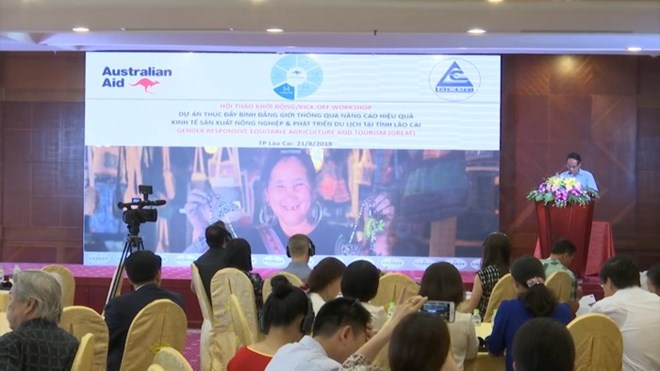 At the launching event The Lao Cai People’s Committee and the Australian Embassy in Vietnam held a workshop in the northern mountainous province on August 21 to launch the Gender Responsive Equitable Agriculture and Tourism (GREAT) project. The project, worth nearly 300 billion VND (12.9 million USD), includes the Australian government’s non-refundable official development assistance (ODA) capital and the corresponding capital from the local budget. It aims to promote gender equality and increase the social-economic status of women in Lao Cai through improving the efficiency of agriculture and tourism development. The project will be carried out from 2018 to 2021 in Bat Xat, Muong Khuong, Bac Ha, Sa Pa, and Van Ban districts. Justin Baguley, Counsellor of Economic and Development Cooperation at the Australian Embassy in Vietnam, said the Australian government has implemented a number of activities to support the development of Lao Cai. Through this project, Australia hopes to further enhance cooperative relations with Vietnam, and particularly Lao Cai, as well as empower women in disadvantaged areas, he added. The project aims to increase the incomes of at least 20,000 women and generate new, paid jobs for 2,000 others by 2021. At least 15 percent of enterprises or cooperatives will be led and co-managed by women. The project will also support the development of policy dialogues and attract 6 million USD from the private sector to conduct business activities. Ca Mau Cape tourism site plan approved 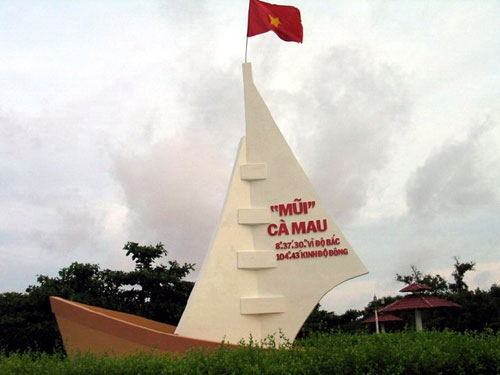 Prime Minister Nguyen Xuan Phuc has approved a master plan for the development of a national tourism site at Ca Mau Cape. Ca Mau Cape tourism site expected to attract 2 million visitors by 2030 Under the plan, the tourism site is expected to draw around two million visitors by 2030, generating revenues of VND5 trillion (USD227.27 million) and creating jobs for 3,000 people. Ca Mau Cape tourism site located in Ngoc Hien and Nam Can districts would cover 2,100 hectares. It would be developed into one of Vietnam’s largest eco-tourism centres and could become a popular destination on Mekong Delta tours. The site would help connect Ca Mau and other tourism sites in the Mekong Delta such as Phu Quoc Island in Kien Giang Province. By 2025, Ca Mau Cape tourism is expected to meet national tourism criteria and be recognised as a National Tourism Site, according to the prime minister-approved master plan for the development of Ca Mau Cape National Tourism Site towards 2030. The site would offer travellers options for sightseeing and exploring. It will begin by focusing on attracting high-end tourists and focus on resort tourism, eco-tourism and entertainment. By 2030, high-end tourism will be the site’s priority. For the domestic market, the Ca Mau Cape tourism site continues to focus on its main market of visitors from HCM City, the southeast region, the Mekong Delta provinces, Hanoi and the northern provinces. For the international market, priority will be given to target markets such as tourists from the US, Australia and northeast Asia, including South Korea, China and Japan. The prime minister has instructed Ca Mau Province to work with the Ministry of Planning and Investment and the Ministry of Culture, Sports and Tourism to call for investment into the project. Khanh Hoa to crack down on taxi services  Tourists in Nha Trang Vice Chairman of Khanh Hoa Province People's Committee Tran Son Hai has asked the police, Department of Transportation and Nha Trang’s authorities to tighten management over transportation services, especially taxi firms, after overcharging incidents. Hai demanded local authorities to strictly punish violations and withdraw business licenses if necessary. Nguyen Van Thanh, vice head of Nha Trang-Khanh Hoa Province Tourism Association said, "Let's not mention a business's reputation yet, on the moral ground alone, overcharging is unacceptable. What will the tourists think?" In July, Nha Trang-Khanh Hoa Province Tourism Association filed a report about a local taxi driver who charged three South Korean tourists VND200,000 (USD8.70) compared to a usual price of around VND25,000 for a trip from Havana Nha Trang Hotel to Rosaka Nha Trang Hotel. The driver also insulted the tourists and threatened the hotel guard. The driver was later identified as Nguyen Than. He works for Dinh Thinh Thanh Tuyen who hasn't been granted the business licence to running taxi service and was fined VND8.5m (USD340). In September 2017, a Chinese tourist went to the police to report about being charged VND6m (USD240) for a less than 6-km trip even though it was only VND62,000 on the taxi meter. The driver at first forced the tourist to pay VND7.1m. Being scared by the driver's threats, the tourist paid VND3m and was forced to pay another VND3m to be let out of the taxi. The police quickly found the driver and made him return the money. Khanh Hoa Department of Tourism said overcharging incidents had badly affected Nha Trang's tourism. The Department of Transportation was asked to manage the taxi service and build a management plan and find unlicensed businesses. Vietnamese puppetry shines in Russia 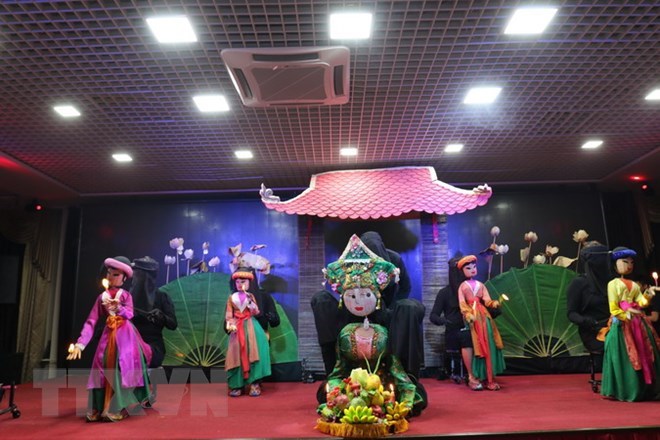 A performance by the Vietnam National Puppetry Theatre in Russia Artists from the Vietnam National Puppetry Theatre treated Vietnamese expatriates in Russia to a show at the Hanoi-Moscow Complex (Incentra) on August 21. The show drew a crowded audience and rounds of applause. Earlier, the Vietnamese troupe took part in the Petrushka World Puppet Carnival in Yekaterinburg from August 12 – 20. The event attracted the participation of 30 countries, with 40 performances staged. Vietnam won top prize and was recognised as the best puppet-design team. While in Yekaterinburg, the troupe also hosted a show for the Vietnamese community. General Manager of the theatre Ngo Thanh Thuy said that the team is deeply moved when performing for Vietnamese in Russia. According to Thuy, many expatriates said since they moved to Russia, this was the second time they had saw a show by a national art troupe of Vietnam in the host country. They said the performance reflects the cultural life of Vietnamese farmers which is so close and familiar to them, she added. Thuy stressed that her team is proud of growing Vietnamese traditional puppetry art and finishing the Yekaterinburg carnival as one of the top troupes. The Vietnam National Puppetry Theatre has a 60-year-long history of development, housing a significant number of leading puppetry researchers, directors, visual artists, fine art decorators and puppet performers. Australia announces application for 2018-2019 DAP  A DAP-funded project for the oncology hospital in HCM City (Photo courtesy of the Australian Consulate General in HCM City) The Australian Consulate General in Ho Chi Minh City announced on August 20 that it has opened applications for the grants round for the 2018-2019 Direct Aid Programme (DAP), which is dedicated to projects in provinces and cities from Da Nang southwards. Community groups, non-government organisations, government organisations and other non-profit groups are encouraged to apply for grants of up to 20,000 AUD (15,000 USD) for small-scale development projects. This year the DAP will be focusing on healthcare, women’s economic empowerment, gender equality, environmental protection, and education and training. However, other areas will also be considered. The deadline for applications is September 28. DAP funding is competitive. In 2017-2018 the Australian Consulate-General funded 17 projects out of the 153 applications received, worth 240,000 AUD. Information on DAP in the northern provinces is available at the Australian Embassy on its Hanoi website. Measures sought for Hanoi’s urban development 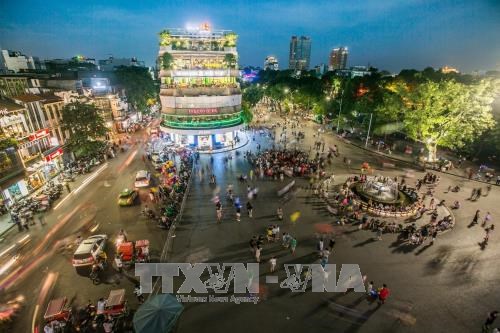 The pedestrians' space around Hoan Kiem Lake and Hanoi Old Quarter, which is popular destinations for Hanoians and tourists Hanoi has been focused on building its electronic government and smart city system, Chairman of the municipal People’s Committee Nguyen Duc Chung has said. The official made the statement during a working session in Hanoi on August 20 with over 100 overseas Vietnamese science and technology experts who attend an innovative network connection programme from August 18-24. Chung noted that Hanoi is among the 17 largest capital cities in the world, with a population of about 10 million. Over 10 years of administrative boundary expansion, the city enjoys an annual growth speed of 7.41 percent. To date, Hanoi has established a wide area network (WAN) in all 584 localities of 30 districts, he added. However, the city currently faces major challenges in terms of urban development, namely rapid population growth and environmental issues as 97 percent of waste is dumped in landfill sites. Additionally, the rate of labourers without training remains high, especially in management and information technology. The official voiced his hope that the participants will connect domestic and foreign experts and scientists to seek solutions to these challenges, contributing to the development of Hanoi and the nation at large. At the session, participants discussed ideas to address various issues related to urban areas and socio-economic development in Hanoi. They shared their experiences in building smart cities, as well as advanced technologies in transport, healthcare, education, and environmental protection, among others. They also showed willingness to cooperate with the city in attracting high quality human resources and applying modern technology. Chung asked the experts and scientists to connect with local authorities via the startup portal startupcity.vn. The sound collaboration between the city and the innovative network connection programme will create favourable conditions for them to contribute further to the nation, he said. Ca Mau speeds up construction of breakwater on erosion threat 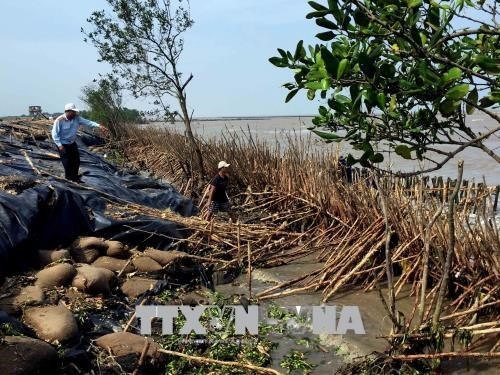 Erosion is becoming more serious at coastal areas around Rach Goc seaport in Ca Mau province’s Ngoc Hien district. The southernmost province of Ca Mau is speeding up construction of more than 4.2km of breakwater to prevent erosion and protect residential areas along its eastern coast, said the provincial Department of Agriculture and Rural Development. It is expected to cost over 110 billion VND (4.8 million USD), which is sourced from the Government’s reserve funds for localities in the Mekong Delta set up under the Prime Minister’s Decision No 795. A 2km section will be built near Rach Goc port and the rest at Vam Xoay port in Ngoc Hien district. Ly Hoang Tien, Chairman of the People’s Committee of Ngoc Hien district, said the district has signed up capable contractors to speed up construction of the Rach Goc section. The task is urgent to prevent erosion and ensure the safety of lives and properties in residential zones near the port, he said. The Ba Ria-Vung Tau Urban Sewerage and Development Ltd Company (BUSADCO) is the contractor. The company has promised to complete the construction on schedule. A BUSADCO spokesperson said the company is using pre-fabricated barriers to protect riverbanks and sea dykes. Pre-fabrication helps overcome many challenges posed by weather, climate and hydrology, and makes it easy to operate and maintain breakwater, he said. Besides, the construction takes only one third the usual time and costs at least 20 percent less than traditional methods, he said. The province has petitioned the Government for another 316 billion VND (13.9 million USD) to build more than 11.3km of embankments along its eastern coast where erosion is becoming severe due to the effects of climate change. Deputy PM asked for sustainable development in ethnic minority areas 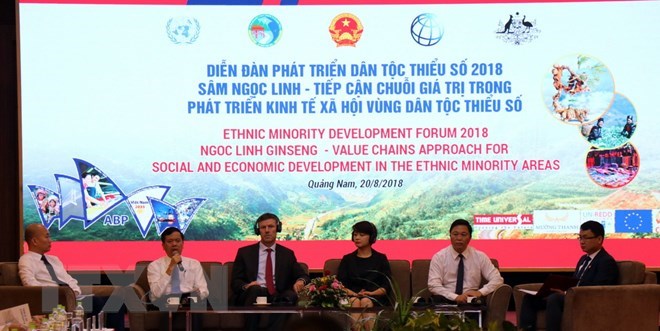 At the forum Promoting rapid and sustainable development in ethnic minority and mountainous areas, and narrowing the development gap between them and other areas is the Party and State’s consistent policy in the national socio-economic development, Deputy Prime Minister Truong Hoa Binh has said. The Deputy PM asserted this at a forum on ethnic minority development held in the central province of Quang Nam on August 20, which was jointly organised by the Committee for Ethnic Minority Affairs, the provincial People’s Committee, the UN’s office in Vietnam and the World Bank in Vietnam, and development partners. Themed “Ngoc Linh ginseng - value chain approach for social and economic development in the ethnic minority areas”, the event saw the participation of nearly 400 delegates from ministries, sectors, localities, enterprises, along with experts, scientists and representatives from international and development organisations. During his speech, Deputy PM Binh highlighted the significance of the event, saying that it helped collect experience in growing Ngoc Linh ginseng from growers. He agreed with the assessment of socio-economic development in Vietnam’s ethnic minority areas by representatives from the World Bank. The Vietnamese Government is paying special heed to directing the implementation of programmes to support ethnic minority communities, he stressed. Ministries and sectors, especially the Committee for Ethnic Minority Affairs, need to roll out more breakthrough measures, focusing on mobilising greater sources for socio-economic development in ethnic inhabited areas, he said. More attention should be paid to production development in ethnic minority and mountainous areas in the direction of approaching value chains, promoting innovation and startup activities, and creating jobs. Local-level leaders were advised to actively seek opportunities and learn from lessons and experience in socio-economic development from other localities to find their own directions in a creative way, towards promoting rapid and sustainable development in their localities. The Deputy PM encouraged Quang Nam and other localities to jointly call for the involvement of enterprises in expanding cultivation of Ngoc Linh ginseng, which was recognised as a national product. According to the World Bank's report on Poverty Reduction and Prosperity in Vietnam, the rate of poor households among ethnic minority communities in Vietnam fell to 44 percent in 2016 from 57 percent in 2014. In order to narrow the development gap, it is necessary to have new policies, programmes and approaches, including value chain-oriented production, focusing on products of ethnic minorities, especially non-timber forest products (NTFPs). Ngoc Linh ginseng is one of the typical NTFPs with high economic value. On September 2015, the Government approved a project on conserving and developing Ngoc Linh ginseng - the Vietnamese ginseng by 2030 with a total investment of over 9 trillion VND (387.1 million USD). Ngoc Linh ginseng was officially recognised as a national product in June 2017. At the forum, domestic and foreign experts discussed how to further promote poverty reduction and sustainable forestry development; and proposed strategies and measures for developing Ngoc Linh ginseng products in Vietnam’s ethnic minority areas. The Vietnamese ginseng was one of eight precious and endangered flora genes covered in Quang Nam province’s conservation programme for 2014-2020, including Ba Kich (poor ginseng or codonopsis), pepper, cinnamon, large rattan and white corn. Nam Tra My district of Quang Nam alone has developed 27 farms of Ngoc Linh ginseng on a total area of 932ha, growing 800,000 natural ginseng plants and herbs. These farms plan to produce 1,000 tonnes of ginseng by 2025. Ca Mau implements master plan to develop transport 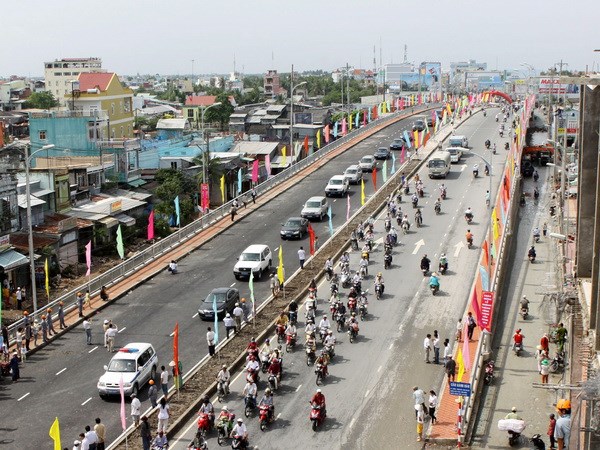 The Mekong Delta province of Ca Mau, which is located along the southern coastal corridor linking Vietnam with Cambodia and Thailand, is implementing a master plan to develop transport through 2020 with a vision to 2030. The locality is applying for the Government’s approval of investment policies to implement some key transport projects. The projects include the building of a National Highway 1A bypass from Ca Mau city and sections from Ca Mau gas-electricity-fertiliser complex to the highway. Once completed, the projects will help ease the traffic pressure in the inner city and facilitate the southern coastal corridor to tap local tourism potential. Additionally, the project of upgrading and expanding the highway from Ca Mau city to Nam Can town is expected to reduce traffic congestions and accidents. The province has proposed the Government supplement capital to upgrade parts of Highway 63 through Ca Mau. A total investment of 520 billion VND (22.3 million USD) is needed. According to the local Steering Committee for Traffic Safety, the province put into use eight transport projects in the early months of this year. It carried out regular maintenance for 12 roads, three waterways and other transport facilities. The province is selecting contractors to implement 11 transport projects and strengthening inspections of those under construction. Eighty-one out of the 82 communes have roads usable by cars while 105.73km of rural roads have been concretized. VNN |
↧
Article 3
BUSINESS NEWS IN BRIEF 24/8 20th edition of Vietfish expo opens in HCM City The country’s premier fisheries expo, the Viet Nam Fisheries International Exhibition, returns to HCM City 30 per cent larger than when it debuted in 2008. The event, hosted by the Viet Nam Association of Seafood Exporters and Producers (VASEP), opened on August 22 at the Sai Gon Exhibition and Convention Centre in District 7. In its 20th edition this year, the annual event, with the theme “Asia’s Home of Seafood”, has attracted 233 exhibitors from 14 countries and territories. The organisers said the exhibition this year has been expanded by nearly 200sq.m from last year with 7 per cent more exhibitors. Vietnamese companies are once more showing off their potential as leading fisheries exporters. Some 66 per cent of the exhibitors are domestic, organisers said. Of the participants, 55 per cent are in aquaculture and services while the remaining 45 per cent sell machinery and equipment, chemicals, additives, and cold storage. Deputy Minister of Agriculture and Rural Development Vu Van Tam said: “For 20 years, Vietfish has been one of the most prestigious specialised trade fairs in Asia, an important trade destination for key players in seafood trading, processing and aquaculture. “From VASEP’s initiative to establish a trade fair and introduce Viet Nam’s seafood products to the world, today the exhibition has become a gathering place for international trade exchanges. “It has attracted a large number of seafood stakeholders from and outside the country.” The current trend of ASEAN and international integration, where opportunities are associated with challenges and competition is associated with co-operation, are important motivations for the fisheries sector to constantly innovate, he said. “We have gone through a successful development phase, but I hope seafood businesses and entrepreneurs will constantly improve and innovate to meet today’s tougher demands in the world market while staying prepared to face new challenges. “In the new context of the fourth industrial revolution, Viet Nam is strengthening its co-operation with the region and the world, and deepening international integration through the signing of new free trade agreements. “This promises to open up international co-operation and investment opportunities, thus taking Viet Nam’s fisheries industry to new heights of modernisation. Vietfish offers visitors the chance to cook and taste dishes made from shrimp, tuna, squid and octopus. It will feature several conferences that discuss critical issues. The expo will go on until August 24. Vietnam Goods and Tourism Week opens in Thailand The ‘Vietnam Goods and Tourism Week in Thailand 2018’ officially kicked off on August 22 in Bangkok, displaying a wide range of Vietnamese products with high export potential. Attending the opening ceremony were Vietnamese Deputy Minister of Industry and Trade Do Thang Hai, Thai Minister of Commerce Sontirat Sontijirawong, and Vietnamese Ambassador to Thailand Nguyen Hai Bang. This is the third year in a row the Vietnamese goods week has been organised in the city. Besides introducing Vietnamese goods to Thai customers, tourism is also promoted as part of this year’s progamme. The event is a project in the framework of ‘Promote Vietnamese enterprises to directly participate in foreign distribution networks up to 2020’ which was endorsed by the Prime Minister in his Decision No 1513/QD-TTg dated September 3, 2015. The five-day event draws the participation of about 60 Vietnamese firms, exhibiting items with high export potential such as processed fruits, coffee, instant noodles, clothes and silk, as well as products representing the identity of the regions of Vietnam such as vermicelli, mushrooms and handicrafts. Among those, 20 businesses will attend the business matching session with buying teams from Central Group Thailand. Speaking at the opening ceremony, Deputy Minister Hai said in recent years, the Vietnamese Government has created favourable conditions for local businesses to further expand their networks overseas, of which Thailand is a promising market. The ‘Vietnam Goods and Tourism Week in Thailand’ is a critical activity aimed at boosting trade connection and helping Vietnamese goods to access Central Group’s distribution network, he said. Thai Minister of Commerce Sontirat Sontijirawong said Thailand and Vietnam have maintained continuous relations for over 42 years. These relations have not been just diplomatic, but also strongly involved with economy, trade, investment, culture, education and tourism. Regarding trade cooperation in particular, the two countries have long exchanged goods and services, with trade volume and value increasing every year. The Thai private sector has been investing in Vietnam as well as importing Vietnamese products, according to Sontijiwarong. Thailand is currently Vietnam’s largest trade partner in the Association of Southeast Asian Nations (ASEAN), according to the Department of Asia-Africa Markets under the Ministry of Industry and Trade. Last year, two-way trade rose to 15.3 billion USD from 11.5 billion USD in 2015, recording an average annual growth rate of 15.5 percent. The figure in the first seven months of this year reached around 9.5 billion USD, a rise of 14.2 percent year-on-year. The two countries are striving to bring two-way trade to 20 billion USD by 2020 and ensure more balanced trade in the future.-VNA Experts discuss draft decree on auto transportation business State management bodies need to consider the market in terms of the development of new technologies and business methods, rather than using administrative procedures to intervene in the operation of auto transport businesses, said Director of the Central Institute for Economic Management (CIEM) Nguyen Dinh Cung. Speaking at a seminar on draft revisions to Decree 86/2014/ND-CP on conditions for auto transportation business held in Hanoi on August 21, Cung said State management must also follow the trend of protection and good service to customers. The seminar acted as a forum for relevant sectors to share their views, identify issues and propose recommendations for the revision of documents or their implementation, thereby helping the Government make appropriate decisions on the issuance of the revised decree. In terms of business conditions, the CIEM leader said that the scope of the revisions to the decree covered regulations on conditions of auto transportation businesses, granting and revoking business licences, badges and signboards, and regulations on announcing car terminals. The draft Decree 86 is being circulated for the contribution of opinions from ministries, sectors and people. There are many new features such as the removal of some regulations and conditions on the colour of logos, operating centres, communication equipment and uniforms. However, the CIEM leader said this was not still enough to apply old management for the new business methods to address existing shortcomings. Cung said that with the fourth industrial revolution, there would also be a conflict between traditional models and new business trends. Uber and Grab are just part of new business trends, sharing the digital economy, said Cung. “Whether or not traditional activities will remain, the potential of the digital economy is huge,” said Cung. "Do not look at a phenomenon and prevent new business trends. We should not use the traditional model to compete with businesses that apply new technology. Therefore, Vietnamese businessmen and enterprises need to bring into full play their creativity to generate artificial intelligence (AI) technology and Internet of Things (IoT) in order to develop quickly and on a large scale, so that Viet Nam does not lag behind in terms of development," he added. Cung also said that new technology-based business methods may not be strongly encouraged and may be subject to some technical barriers, but this does not mean the abolition of this business method is necessary. The draft decree cuts 12 business conditions, however there are 85 additional conditions. According to Nguyen Thanh Hung, President of the Vietnam E-commerce Association (VECOM), the current Decree 86 needs significant amendments. But the new draft Decree offering more business conditions than the current decree is not appropriate. As such, the addition of business conditions should be reconsidered. To assure the rationality and feasibility of Decree 86, economist Ngo Tri Long, who was former director of the Market Price Research Institute under the Ministry of Finance, said that the business model needs renovation. “It is necessary to make use of the achievements of the sharing economy to save resources for society. In addition, it is essential to remove unnecessary conditions and procedures that create burdens and unnecessary costs for businesses,” said Long. Cung proposed that State management should be shifted from pre-inspection to post-inspection and the principle of risk management should be applied. "Before the fourth industrial revolution and new forms of business, State management must create an equally competitive environment, and create conditions for new business models and technology enterprises to develop their operations and promote the transformation of traditional business," Cung said. Vietnam’s steel exports rake in 2.53 billion USD in 7 months 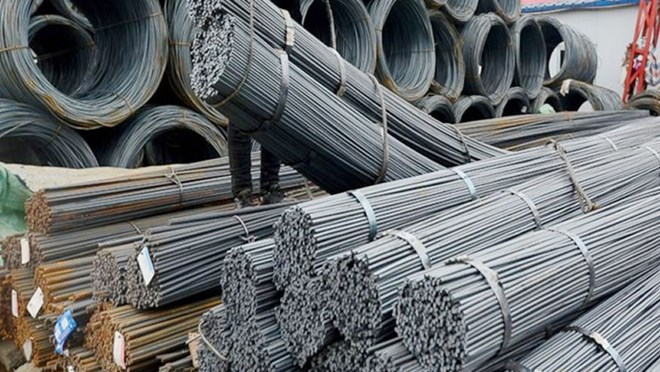 Vietnam’s steel exports rose 40.4 percent year on year to 3.41 million tonnes in the first seven months of the year, raking in 2.53 billion USD, up 56.3 percent. According to the Ministry of Industry and Trade, Cambodia was the largest importer of Vietnamese steel during the January-July period, accounting for 37 percent of the total steel export volume. The country’s steel exports to Cambodia increased by 49 percent in volume and 77.9 per cent in value over the same period last year, reaching 717,572 tonnes, equivalent to 462.73 million USD. Some 532,779 million tonnes were shipped to the US for 452.81 million USD, increasing by 71.6 percent in volume and 81.7 percent in turnover. Shipments to Malaysia escalated 88.5 per cent in volume and 108.6 per cent in value to reach 391,607 tonnes, or 266.98 million USD. Indonesia splashed out 295.33 million USD purchasing 372,514 tonnes of Vietnamese steel, up 22.3 percent in volume, and 33 percent in value. However, steel exports declined sharply in the following markets: Switzerland (down 96 percent in turnover), Saudi Arabia (down 63.4 percent in value), and Pakistan (down 45.6 percent in value). During the period, steel export price increased by 11.3 percent to reach average 742.8 USD per tonne. Of which, exports to Hong Kong reached the highest rate with 2,995.8 USD per tonne, up 33.4 percent. Some markets also enjoyed good prices such as Switzerland, Turkey, China and Ukraine. In contrast, exports to Taiwan have the lowest price of 556.7 USD per tonne, a year-on-year decrease of 14 percent. Although the steel sector has witnessed thriving exports, it is struggling to cope with trade defence lawsuits in the context of growing protectionism. From July 16 to August 9, the sector faced anti-dumping lawsuits in many foreign countries such as Thailand, the EU, Canada, Malaysia, the US, the Eurasian Economic Union, and India. Particularly, within only a week (July 27 to August 2), the US launched two investigations into the avoidance of paying anti-dumping and anti-subsidy taxes on corrosion-resistant steel and cold rolled steel from Vietnam. As of the end of June, local steel products were the target of 37 anti-dumping lawsuits among 78 trade remedy lawsuits against Vietnamese exports from the outset of the year. Chairman of the Vietnam Steel Association (VSA) Ho Nghia Dung said that improving competitive capacity to expand export markets and understanding of international trade regulations are significant for Vietnamese steel firms to respond to trade defence lawsuits. The association recommended the state to enhance the use of trade defence tools to protect domestic steel production. Farm produce needs improved quality to unlock EU market Though Vietnam is strong in producing and exporting agricultural products, it is facing a range of challenges and barriers in Europe due to new stringent food safety regulations. Tran Ngoc Quan, Deputy Director of the Ministry of Industry and Trade’s Department of European–American Markets, said once the European Union (EU)-Vietnam Free Trade Agreement (EVFTA) takes effect, tariffs on Vietnamese farm produce will plunge to 0-5 percent over the next decade. Vietnam is one of the important suppliers of farm produce to the EU, ranking 12th among all exporting nations and meeting 2.2 percent of the demand, above Thailand, New Zealand, Malaysia and Canada. However, the EU has paid due attention to food value, quality, safety and hygiene and has issued stringent regulations on antibiotics, pesticides and tracing product origin. A representative from the Vietnam Trade Office in the EU said the bloc will enhance inspections and is drafting new regulations on quality standards for pepper and spices. Quan said thanks to economic recovery in several EU member states and increasing consumption demand, key products such as aquatic products, cashew nuts, fruits and vegetables, coffee and rubber maintained high export growth. He suggested closely monitoring manufacturing process and making origin of products transparent. Tran Huu Huynh, Director of the Vietnam Chamber of Commerce and Industry’s Legal Department and Secretary General of the Vietnam International Arbitration Centre, proposed the State issue an early warning system to help exporters access market information while agencies should offer proper policies, mechanisms and planning so agricultural firms and farmers can fully tap their production capacity.-VNA Farmed chicken price falls, as problems come home to roost The price of industrially-farmed chicken in Vietnam’s southern region has dropped as businesses imported too many chicken products from foreign countries. This month witnessed a drop in domestic chicken prices of more than 10,000 VND (0.4 USD) compared with the previous month, touching 20,000-22,000 VND per kilo of white-feather chicken and by 9,000-12,000 VND to 25,000-26,000 VND per kilo of coloured-feather chicken. According to Deputy Chairman of the Animal Livestock Associations in the southeast region Nguyen Van Ngoc, the price of rice bran has risen continuously, partly causing chicken farmers to lose 2,000-4,000 VND per kilo of chicken. “The main reason is that too many imported chicken products have been shipped to Vietnam, especially the kind of tough chicken (at about 25,000 VND per kilo), causing a rapid increase in supply. Domestic chicken failed to compete and so its price has dropped,” said Ngoc. Statistics from the General Department of Vietnam Customs showed that the country imported more than 105,000 tonnes of chicken meat in the first seven months of this year, equivalent to 85 percent of last year. Deputy Director of the general department’s Import and Export Department Le Manh Hung said that in tax calculation, there were many factors adding to the taxable price, but many enterprises may not have fully declared such figures, intending to hide or neglecting to inform the General Department of Vietnam Customs. “We have adjusted the tax rate after checking. There are quite a lot of cases adjusted to 30 percent compared with the businesses’ previously declared price,” Hung said, “However, this is not the main factor causing the imported chicken price to be cheaper than the domestic one.” Hung said the imported chicken meat was mainly chicken wings and thighs, parts which were popular among Vietnamese consumers. Meanwhile, foreigners prefer to eat chicken breast, so they sell chicken wings and thighs at cheaper prices. In addition, Hung said imported chicken products were cheaper because the foreign countries often raise chicken on large-scale farms with thousands of chickens. “The farms use modern automation and labour is minimal while they are proactive in food and veterinary medicine. Therefore, the price of their chicken is cheaper than that of Vietnam.” In 2017, the country imported 122,714 tonnes of chicken of all kinds with total value of 111.6 million USD. VSSA proposes self-defense measure against HFCS The Vietnam Sugar and Sugarcane Association (VSSA) has written to the Government calling for an investigation into the import of high-fructose corn syrup (HFCS) and the application of a special self-protection measure against this sugar-like substance due to the negative influence of the imported product on the domestic sugarcane sector. In the letter sent to the Prime Minister, VSSA noted the difficulties being faced by the sugarcane sector and suggested some solutions. Pham Quoc Doanh, chairman of VSSA, stated that despite taking various positive steps to maintain production, including flexibly adjusting sales plans, sugarcane firms have failed to raise sugar consumption and prices. Accordingly, sugar prices reported at factories have recently fallen to VND11,000-11,500 per kilogram for refined standard sugar, dropping by 30% year-on-year, resulting in some factories leaning toward losses. In addition to the Thai sugar being smuggled into the country, the large volume of HFCS imports has seriously affected the Vietnamese sugarcane sector, according to VSSA. The letter claims that a type of HFCS popularly imported into Vietnam is HFCS-55, with 55% fructose, which is 1.1-1.3 times sweeter than sugarcane. HFCS is mostly replacing sugarcane in the production of food, drinks and medicines, showing direct competition with sugarcane. Statistics from the General Department of Vietnam Customs indicate that the imported HFCS volume skyrocketed in the 2015-2017 period, with some 67,800 tons in 2015, 70,000 tons in 2016 and some 89,300 tons in 2017, up 31.7% against 2015. In terms of the price, the VSSA letter notes that HFCS is getting cheaper. One ton of HFCS was priced at US$496 in 2015, US$460 in 2016 and US$398 in 2017, while one ton of sugarcane cost US$630 in 2015, US$726 in 2016 and US$702 in 2017. HFCS enjoys a zero import duty policy with an unlimited quota, in line with prevailing regulations, whereas sugarcane is subject to a quota regime, according to VSSA. Cheap prices and a preferential import tax policy make HFCS more attractive to food and beverage firms, leading to low consumption of local sugarcane. In the three-year period, domestic sugarcane firms incurred a loss of an estimated VND527 billion, according to the document. VSSA stated that if the Government does not intervene and address these problems, the sugarcane sector will suffer greater losses, which may lead to the closure of small factories. VSSA has thus proposed the Government adjust preferential tax policies for sugarcane and HFCS products, suggesting a probe should be launched into HFCS imports and a self-defense measure should be applied against the sweetener. Trung Luong-My Thuan expressway project faces termination HCMC-Trung Luong Expressway. This expressway and Trung Luong-My Thuan Expressway are two sections of the HCMC-Can Tho Expressway A month after signing a credit agreement worth over VND8.1 trillion (US$348.9 million) with four banks, the investor of the Trung Luong-My Thuan expressway project is likely to terminate the project due to the high lending interest rate, reported the Government news website. Trung Luong-My Thuan Expressway is one of the country’s key traffic projects, having been included in a master plan for developing Vietnam’s expressway system until 2020 approved by the Prime Minister. BOT Trung Luong-My Thuan JSC, on June 15, signed a credit agreement with Vietnam Bank for Industry and Trade (VietinBank), Bank for Investment and Development of Vietnam (BIDV), Vietnam Prosperity Commercial Bank (VPBank) and Vietnam Bank for Agriculture and Rural Development (Agribank). However, on July 25, the investor wrote to the competent agencies seeking help due to its inability to recover its investment capital. Phan Anh Dung, director of BOT Trung Luong-My Thuan JSC, noted that the four banks had demanded an annual interest rate of 10.83% for loans for the project, well above the 6.75% rate set by the Ministry of Transport. Due to the high interest rate, the company faces difficulty repaying the loans and may suffer losses of up to VND3.6 trillion over the project's life span, Dung added. While waiting for the competent agencies to make their official decision, the investor will continue executing the project using its equity of more than VND1.5 trillion. However, if the interest rate remains unchanged, the project cannot be completed by 2020 as the investor will have to suspend work on the project to avoid heavy losses. On August 8, the Ministry of Transport wrote to the relevant agencies, confirming that the annual lending rate in the credit agreement was 6.83% plus the 4% margin. The reference interest rates last month of VietinBank, BIDV, VPBank and Agribank were 6.8%, 6.9%, 6.9% and 6.7%, respectively. As for public-private partnership (PPP) projects, the high lending rates will place pressure on investors to mobilize capital for these projects, posing high risks for both lenders and borrowers and reducing the attraction of the PPP investment model in Vietnam, noted Deputy Minister of Transport Nguyen Nhat. Deputy Minister Nhat pointed out it is crucial to remove obstacles to capital disbursement for the project involving the development of sections of the Eastern North-South Expressway in the 2017-2020 period. The Ministry of Transport proposed the Ministry of Finance issue a circular guiding the execution of the Government’s Decree 63/2018/ND-CP on the PPP investment format, in replacement of Decree 55/2016/TT-BTC on the financial management of PPP investment projects. The lending interest rates for commercial loans at four large commercial banks that do not exceed the interest rate for deposits of more than 36 months plus the 4.5% margin are the basis for the calculation of the lending interest rate for PPP projects. Regarding the Trung Luong-My Thuan expressway project, the Ministry of Transport asked the competent agencies to regulate the lending interest rate to ensure the progress of the project. In case of changes to regulations on lending interest rates, the ministry will propose the Prime Minister allow the signing of an additional appendix for the credit agreement as a basis for disbursing the capital for the unfinished items. The Government had earlier issued Resolution 20/NQ-CP on the development of sections of the Eastern North-South expressway project in the 2017-2020 period. The Ministry of Transport has also completed the feasibility study and has sought the Prime Minister’s permission to use State capital for the project. Up to 530 kilometers of the 654-kilometer expressway will be constructed under the build-operate-transfer format with an estimated investment of VND95.6 trillion, including nearly VND37.2 trillion sourced from the State budget and VND58.4 trillion from private sources. VAMC to auction assets of Thuan Thao Nam Saigon Vietnam Asset Management Company (VAMC) and Bank for Investment and Development of Vietnam (BIDV) has announced plans to put up for auction the assets of Thuan Thao Nam Saigon JSC and 95 individual clients with a total debt value of roughly VND2.4 trillion, or over US$103 million. As of late June this year, 92 individual clients owed VAMC more than VND1.9 trillion, including over VND939 billion in principal and some VND966 billion in interest on loans. Meanwhile, Thuan Thao Nam Saigon JSC and three individual clients accumulated a combined debt of more than VND473 billion – VND269 billion in principal and some VND204 billion in interest – at the Phu Tai branch of BIDV in the south-central coastal province of Binh Dinh, also as of this June. The starting price of these debt items at VAMC and BIDV has been pegged at VND1,208 billion instead of the previous VND845 billion. The key reason for the change is that the BIDV has reassessed the asset value of Thuan Thao Nam Saigon. The auction results will be published this Friday, August 28. Thuan Thao Nam Saigon’s auctioned assets include a 275-square-meter plot of land and its landed assets on Bui Thi Xuan Street in HCMC’s District 1, where the headquarters of the company is situated, as well as two other land plots covering over 22 hectares and their landed assets in the outlying district of Binh Chanh. Notably, as many as 5.2 million GTT shares of Thuan Thao Corporation, which are owned by Board Chairwoman Vo Thi Thanh, are set to be put up for auction. To date, each GTT share is priced at a mere VND300. Thuan Thao Nam Saigon, a subsidiary of Thuan Thao Corporation, was founded in 2014 by Thanh. She was once a well-known entrepreneur in the passenger and cargo transport sector in the south-central coastal province of Phu Yen before incurring hefty losses on her heavy investments in the real estate sector. Sharp rise in exports of industrial products to UK Exports of industrial products to the UK continued their strong upward trend over the first seven months of this year, with a more than four-fold increase in exports of electrical wires and cables compared to the same period last year. According to statistics from the General Department of Vietnam Customs, US$3.1 billion worth of products were exported to the UK in the first 7 months of 2018, a year-on-year rise of 11.37%. Among the 28 types of product exported to the UK, the highest values were achieved in telephone and components, garments and footwear. Telephones topped the list of export products at US$1.2 billion, up 21.79%, followed by garments with US$428.9 million, up 5.87%, and footwear with US$375.3 million, down 4.85%. The strongest growth was in electric wires and cables, increasing more than 4-fold to US$3.9 million. Contrary to the high export values and strong growth of industrial products, exports of agricultural products were low in both volume and value. Typically, exports of pepper dropped by 35.87% in value although its volume rose by 5.9% with an average export price of US$4,372.63 per ton. Bao Viet Insurance & Bangkok Insurance strike deal The Bao Viet Insurance Corporation and the Bangkok Insurance Company signed a cooperation agreement in Thailand on August 16 over providing insurance services for Bao Viet Insurance’s customers investing in Vietnam’s neighbor. Bangkok Insurance will also cooperate with Bao Viet Insurance in providing insurance services for Thai investors in Vietnam. The cooperation is expected to promote the development of the insurance business between Thailand and Vietnam. Bangkok Insurance is one of the leading non-life insurance companies in Thailand, established in 1947 by its largest shareholder, Bangkok Bank. Total revenue in 2017 was more than $480 million and it is ranked A- by S&P and A- by AM Best. During its 70 years of operation, Bangkok Insurance has secured many prestigious domestic and international awards. It leads the way in the application of technology in management and operations and is introducing new services such as web security gateways, tele claims, and the BKI iCare app for smartphones. Bao Viet Insurance is recognized by many reputable international and local organizations as the best non-life insurer in Vietnam, possessing the broadest and most extensive network in the market. Unceasingly innovating to reach international standards, it has experienced over 50 years of strong development, affirming its position as a leading insurance company offering premium insurance products and benefits. Moreover, it is also a pioneer in applying information technology and new technology solutions from Industry 4.0 not only in sales, professional management, compensation management, and customer data control but also in interacting with customers to bring the greatest convenience. In the first half of this year, it recorded total revenue of more than VND4.5 trillion ($193.8 million); nearly doubling its market share in Vietnam to 21.2 per cent. Vntrip.vn secures funding from Swiss investor Vietnamese online travel booking service provider Vntrip.vn has completed fund raising of $45 million from Swiss investor IHAG Holding. The fund raising is the next step following the Series B fund raising from Hendale Capital a year ago and promises to create breakthrough growth for Vntrip.vn in 2018. Mr. Le Dac Lam, Co-founder and CEO of Vntrip.vn, said it is happy to be working with IHAG as their experience and support will help it confidently implement its plans. “With strategic cooperation from an experienced foreign investor and our own financial resources, we will continue to focus on developing better pricing policies for our customers, ensuring the price of hotel bookings and airfares on Vntrip.vn will always be the cheapest,” he said. Mr. Armin Meier, a member of the Board of Directors at IHAG, said that this round of fund raising will help boost Vntrip.vn’s strengths and create a strong position to push into other fields such as selling air tickets online, which is a necessity in becoming the largest tourism company in Vietnam. “After studying the market, the operations of the company and the management team, we believe that Vntrip.vn has an effective and impressive business model,” he added. IHAG is a global Swiss investment group with a long history of supporting companies in many different fields in many countries. With an orientation towards “Investing in the Future”, it maintains a deep and open vision. Vntrip.vn completed Series A fund raising of $3 million from the FengHe Group and Hancock Revocable Trust and also announced in 2017 it had raised up to $10 million in capital from Hendale Capital. It has the advantages many local OTAs hold in winning in the domestic market: superior customer service through 24/7 call centers, unique services such as free airport transfers, creative marketing programs, and strong local relationships. In 2017 it spread its brand image on billboards from the check-in lobby to taxi ranks at major international airports, including Noi Bai in Hanoi and Tan Son Nhat in Ho Chi Minh City. Images of Vntrip.vn also appear on office and residential buildings around the country and at large shopping centers in Hanoi, Ho Chi Minh City, Hai Phong, and Da Nang. Moody’s upgrades HDBank ratings Moody’s Investors Service has upgraded ratings for Ho Chi Minh City Development Joint Stock Commercial Bank among other banks in Viet Nam. The lender’s long-term counterparty risk ratings (CRR) and counterparty risk assessments (CRAs) have gone up one level to B1. CRR rate the ability of entities to honour the uncollateralised portion of non-debt counterparty financial liabilities (CRR liabilities) and reflect the expected financial losses in the event such liabilities are not honoured. At the end of the first half, HDBank had assets of over VND191.29 trillion (US$8.4 billion), up 12.8 per cent over the same period last year. Total outstanding loans were VND125.13 trillion, up 14 per cent from the end of last year and 21.4 per cent up from a year earlier. Its capital adequacy ratio (CAR) was 13.6 per cent, significantly higher than the 9 per cent stipulated by the State Bank of Viet Nam and among the highest of any bank. Its non-performing loans rate was 0.9 per cent. OCB succeeds in share issue to raise capital Orient Commercial Bank (OCB) has successfully issued shares worth more than VND900 billion (US$38.29 million) to increase charter capital. According to the bank, 90.01 per cent of its existing shareholders bought 90.38 million shares at price of VND10,000 apiece among 100.4 million offered shares, equal to 20.5 per cent of the bank’s charter capital. OCB said that the additional capital was to increase the bank’s financial status and meet the capital adequacy ratio (CAR) of Basel II standards. In addition, OCB issued 69.55 million shares to pay dividends in 2018, equal to 14.2 per cent of the bank’s charter capital. After the two issues of nearly 160 million shares, OCB’s charter capital increased from VND5 trillion to nearly VND6.6 trillion. The State Bank of Viet Nam has recently given approval for OCB to open five new branches and two new transaction offices, raising its network to 39 branches and 88 transaction offices nationwide. OCB reported that its total assets by the end of June rose 7.7 per cent against early this year to VND90.83 trillion. The bank’s pre-tax profit in the first half of this year surged sharply by 2.6 times year-on-year to more than VND1.3 trillion, helping the bank meet 65 per cent of its annual profit target. OCB plans to list on the HCM Stock Exchange in the second half of this year. After the listing, OCB’s market capitalisation is expected to reach $1 billion, according to OCB chairman Trinh Van Tuan. Agriculture restructuring help optimise strength of sectors, localities After five years of restructuring, the agricultural sector has recorded numerous achievements in improving its production structure and effectiveness, while the strength of each locality has been optimised and many major agricultural products improved their competitiveness in the market. The structure of agricultural products for export has changed in the direction of increasing the ratio of advantageous products such as aquatic products, vegetable, fruits, wood and forestry products, and decreasing those with rising supply sources, including rice. So far, localities, especially those in climate change-affected regions, have replaced 627,700 hectares of ineffective rice cultivation with aquatic, fruit tree and crop farms with higher economic value. Many localities have developed massive fields for the cultivation of rice, vegetable and flower in line with value chain, along with concentrated industrial and fruit tree regions. Alongside, plant varieties and cultivation techniques have been improved to enhance the quality and added value of the products, therefore the productivity and quality of major products, including rice, dragon fruit, lychee, longan, grapefruit and tea, have increased. In the breeding sector, the number of large farms has risen from 8,796 in 2013 to 15,096 in 2017, with strong growth of high technology industrial breeding with closed production-selling process, meeting domestic demand and export. In the forestry area, an average of 23,000 hectares of forest, 90 percent of which being production one, have been planted every year. The ratio of controlled and origin certified varieties have reached 85 percent, up 13 percent compared to that in 2013. Wood production from planted forests more than doubled to 18 million cubic metres in 2017 from 8 million cubic metres in 2013, meeting about 80 percent of the demand for material wood. Profit of forest farmers has risen 25-30 percent. In the aquatic sector, localities have expanded concentrated shrimp and fish farming using high and environmental-friendly technologies, with focus on shrimp and tra fish. Fisheries logistics services have been re-organised, while the model of production in chains, and production team and groups have shown their efficiency. Thanks to strong restructuring, agricultural sector’s market has been expanded to 180 countries and territories. In the first seven months of 2018, the export revenue of the sector reached 22.2 billion USD, a rise of 7.8 percent year on year. According to Minister of Agriculture and Rural Development Nguyen Xuan Cuong, in the 2017-2020 period, the planning, strategy and advantages of each sector and locality have been reviewed and classified into three levels: national (including products with export value from 1 billion USD, pork and cattle meat), provincial and local, in association with the building of new-style rural area in the model of “One Commune – One Product”. He said that agricultural products will be adjusted in accordance with the market demand and climate change adaptation, adding that green and organic agriculture will be encouraged. Nguyen Ngoc Oai, Acting Director of the Vietnam Directorate of Fisheries, with the target of added value rise of at least 5 percent per year, the fishery sector will encourage the upgrading of processing factories to optimise productivity and reduce cost. The sector will strengthen the processing of products with high added value such as shrimp, tuna, tra fish, seaweed, mollusk, and by-products, while applying advanced technology in processing and storing. At the same time, Nguyen Quoc Tri, head of the Vietnam Administration of Forestry, said that in order to fulfil the target of 42 percent in forest coverage in 2020, the sector will concentrate on sustainable and effective management and exploiting of natural forests in association with protection of forest and biodiversity. Meanwhile, the model of agri-silviculture, or the combination of growing of agricultural crops with simultaneously raised and protected forest crops, will be applied, along with the development of herbal plants, the utilization of forestry products besides wood and eco-tourism, he added. Tri added that concentrated material regions for wood processing and paper production will be developed, while forestry production will be implemented in value chains. Tuna exports likely to hit 500 million USD in 2018 Vietnam’s tuna export revenue is likely to reach the target of 500 million USD in 2018 as the figure already hit 351 million USD in the first seven months of this year, while growth has been seen in the majority of markets. According to the Vietnam Association of Seafood Exporters and Producers (VASEP), in July, earnings from tuna export were estimated at 48.4 million USD. The major eight Vietnamese tuna importers were the US, the EU, Israel, ASEAN, Japan, Canada, Mexico and China. VASEP General Secretary Truong Dinh Hoe said that September is normally the peak season of tuna selling when importers often strengthen tuna buying, therefore, the goal of 500 million USD of exports for the whole year is feasible. Hoe said that among the top three markets of Vietnamese tuna, decrease was only seen in the US. Specifically, Vietnam shipped 116.3 million USD worth of tuna to the US in the first seven months of 2018, down 8.9 percent year on year. Meanwhile, a rise of 23.7 percent was seen in the EU market to 82.71 million USD, and a surge of 55.7 percent in the Israeli market to 42.35 million USD, boosted by the shipment of canned tuna which almost doubled to 29 million USD in the first half of the year. Commenting on the Japanese market, Hoe said that Japan had dropped to the fifth position from one of the top two importers of Vietnamese tuna, explaining that Japan’s demand might decrease or it has found another source of supply at more reasonable prices. Vietnam had only 3 percent of the market share in Japan, while that of Thailand is 58 percent, Indonesia, 19 percent, and the Philippines, 17 percent. However, Vietnam’s tuna exports to Japan have still increased through months, he said. In the first seven months of 2018, Japan spent 15.87 million USD on Vietnamese tuna, up 25 percent year on year. At the same time, tuna import of the US rose continuously in the first six months of 2018, with upturn seen in imports of canned processed tuna, and frozen tuna fillets. Statistics from the US side showed that the country spent 902 million USD on tuna products worth in the first half of 2018, up 17 percent compared to the same period in 2017. The top five tuna suppliers of the US, counting by volume, were Thailand, China, Indonesia, Vietnam and Ecuador. Notably, China and Vietnam have changed place to take the lead in supplying tuna to the US. Accounting for 70 percent of total canned tuna import of the US, China has become the second largest supplier of the US, making it a weighty competitor of Thailand and Vietnam. Due to the escalating US-China trade war, in this September, the import tax rate for fresh and frozen tuna of China in the US will increase sharply, creating favourable conditions for other countries to increase their tuna export to the market. But the chance has yet to be clear for export of canned products. Hoe asserted that higher demand of tuna in festive season at the end of the year will push importers’ buying. However, he was worried of the stability of supply capacity of Vietnam’s tuna sector, as along with domestically caught tuna, the country has still had to import the product as material for export. Specific policies, competition mechanisms needed to connect intellectuals Devising specific policies and competition mechanisms is needed to bring together intellectuals so as to capitalize on opportunities from the fourth industrial revolution (Industry 4.0), scientists and entrepreneurs said at a discussion of the launching ceremony of the Vietnam Innovation Network 2018 in Hanoi on August 19. Deputy General Director of the telecom group Viettel Nguyen Hoang Son said his group needs connectivity to increase competitiveness while expanding business to countries in the region and the globe. “We are deeply aware of the fierce competition in the market from resources and technology to management”, he said. Meanwhile, Deputy Director General of Vingroup Vo Quang Hue said about 80,000 foreign experts are working in Vietnam in various fields, which indicates the country’s big demand for high-quality intellectuals. Doctor Bui Hai Hung, researcher of the US Google Deepmind, said the number of Vietnamese people active in the field of artificial intelligence (AI) is by no means small, suggesting the building an AI research centre in Vietnam to make it known worldwide as well as focusing investment on cloud computing. Associate Professor, Doctor Ho Anh Van from the Japan Advanced Institute of Science and Technology said the success of the innovation network lies in the capacity, enthusiasm and way of thinking. Scientific researcher at Google Brain Le Viet Quoc held that Vietnam needs to take action quicker to optimise opportunities from the Industry 4.0. Doctor Trinh Toan, who works in the US, hoped to promote links between domestic and foreign scientists to solve the country’s development problem. Doctor Pham Quang Cuong, a lecturer from Singapore’s Nanyang Technological University, showed his interest in carrying out projects at industrial parks in Vietnam to develop locally-made robots. He proposed the Government create favourable conditions for overseas Vietnamese scientists to contribute to the country. The Vietnam Innovation Network is expected to gather hundreds of overseas and domestic scientists who will meet to exchange and share visions as well as strategies for scientific and technological development in the sectors that Vietnam needs to accelerate in the coming time. Central Highlands province promotes sustainable agricultural production 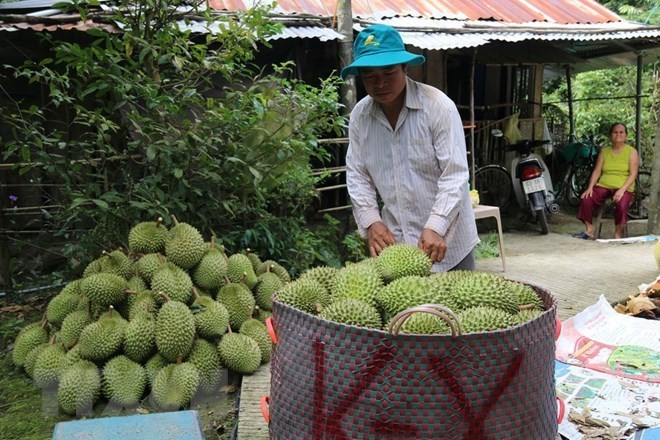 In response to climate change’s impacts on agriculture, Mang Yang district in the Central Highlands province of Gia Lai is focusing on promoting sustainable agriculture production to increase product value and stabilise farmers’ income. The district is paying heed to restructuring crops and diversifying crops on a single cultivation area. Up to now, it has swiched nearly 1,000 hectares of inefficient crops into more lucrative fruit trees. According to Nguyen Thanh Tung, Director of DOVECO Gia Lai Project Management Board under the Dong Giao Foodstuff Export Joint Stock Company, his business’ project has developed nearly 3,000 hectares of crops such as lemon, pineapple, soybean and sweet corn in 14 districts, cities and towns in Gia Lai province. “We have signed contracts with cooperative groups and cooperatives representing farmers to ensure sufficient materials input for processing lines,” he said. In addition, with nearly 4,000 hectares of coffee tree, Mang Yang district’s agriculture sector has developed a strategy for sustainable development of this major crop. The district’s agricultural sector has completed and transferred a model of intercropping coffee with avocado trees on an area of 5 hectares in two communes of Ho Ra and Dac Ta Lay. This model is highly valued by local people. Huynh Van Trung, a resident in Dak Ta Ley commune, Mang Yang district, owns a 25-year-old coffee garden. He revealed that the Government has sponsored a programme to replant coffee trees and intercropping coffee with avocado trees. “I removed old, unqualified coffee trees. I also received new coffee and avocado varieties. The plants are developing well andI hope they will have a higher efficiency,”Trung told VNA reporter. Pham Ngoc Co, head of the Agriculture & Rural Development Department in Mang Yang district, said the locality boasts some key crops such as pepper and coffee trees. The department is diversifying crops to avoid price and oversupply risks, he said, adding that the district has shifted to growing fruit trees and targets 1,000 ha of fruit trees between now and 2020. Changing the areas of ineffective crops into the ones of fruit trees, intercropping fruit trees with coffee trees and linking farmers with enterprises are part of the district’s efforts to boost sustainable development, limit risks in the context of integration and fierce competition. VNN |
↧
Article 2
Domestic animal feed controlled by import and FDI businesses
The report showed that the output of animal and poultry feed has increased rapidly in recent years, up 13 million tonnes compared to 2008. However, the market is now tilted towards foreign direct investment (FDI) enterprises. According to statistics from the Vietnam Animal Feed Association, the country had 240 animal feed production businesses, of which 180 were domestically run. Although domestic enterprises outperformed in terms of quantity, foreign firms still led the way in terms of capacity and market share. The production capacity of Vietnamese enterprises is about 12,465 tonnes per year, while FDI enterprises have a capacity of over 15,700 tonnes per year, accounting for 59.15 per cent of the total output. FDI enterprises are developing their production to dominate the animal feed market. Since the beginning of 2018, a series of new factories have been inaugurated, including a US$31.5 million factory in the northern province of Ha Nam, which is the fifth to be funded by South Korea’s CJ Group, and another from Mavin Austfeed Dong Thap worth $30 million, which is also the fifth to be invested by Mavin Group, a joint venture between Australia and Vietnam. In order to regain market share, a large number of Vietnam’s big companies such as Masan, Hoa Phat, Hung Vuong and Vingroup are investing in animal feed production. However, the process could prove lengthy as FDI many companies have been in the Vietnam market for 10-25 years, with advantages of investment capital, modern technology and long-term strategies to dominate the market. “FDI enterprises have a history of research and invention for animal feed suitable for each growth stage of pigs and chickens,” said vice chairman of the Vietnam Animal Feed Association, Pham Duc Binh. Meanwhile, domestic enterprises are vulnerable due to lack of capital, slow investment in modern production lines, and a shortage of raw materials,” he added. To minimise the monopoly of FDI enterprises in the domestic market and create competition on prices, Bình said the State should plan raw material areas, and have preferential policies for domestic enterprises to borrow capital to build them. On the side of domestic production, plans and long-term strategies are also needed. Shortage of raw materials Tran Xuan Dinh, deputy director of MARD’s Department of Cultivation, said that domestic corn production had met about 40 to 45 per cent of demand for animal feed processing. “At present, all imported maize is used for the production of animal feed. Vietnam only produces rice bran and cassava. We have failed to develop feed production areas because of poor crop productivity, and people have not joined the animal feed supply chain for businesses,” said Dinh. Agricultural expert Dang Kim Son said that the value of the poultry sector was low due to a dependence on feed imports. At present, farmers only made a profit through hard graft and the real profit fell into the hands of importers and producers, mainly FDI enterprises. In its latest forecast, the Ministry of Industry and Trade confirmed that demand for imports of animal feed will continue to increase, with the possibility of spending $3.8 -3.9 billion by the end of this year. According to the US Department of Agriculture’s forecast for 2019, 76 per cent of Vietnam’s total raw material would come from imports as the animal feed sector continues to grow. Raw materials include soybean powder, corn, other cereals and bran from copra, canola and rice bran. Imports also includes animal proteins such as meat and bone meal (MBM) and fish meal. Deputy director of MARD’s Department of Livestock Production Nguyen Xuan Duong said that Vietnam could produce 150,000 tonnes of beans each year - not enough to meet the demand for human consumption. For maize, the country could supply three million tonnes per year, accounting for half of the total demand. "We will not necessarily continue to expand maize plantations while other countries’ corn is much cheaper. Vietnam should reserve land to grow other crops with higher economic value such as fruit trees, cash crops and herbal trees,” said Duong. |
↧
↧
Article 1
Foreign investors interested in wind power development in Vietnam Foreign investors have shown considerable interest in developing wind power in Vietnam. 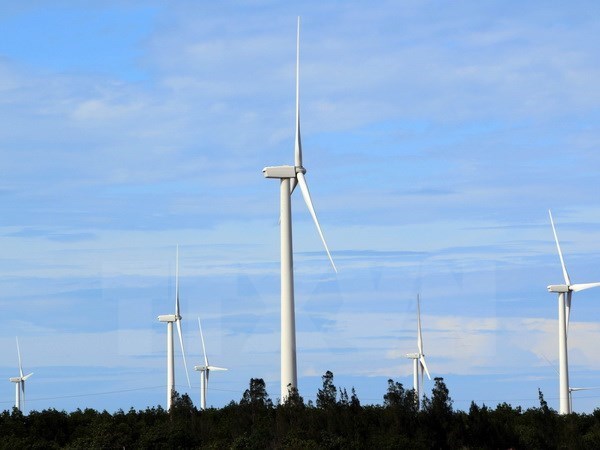 The People’s Committee of the Mekong Delta province of Tra Vinh has allowed three investors to finance the construction of the Hiep Thanh wind power plant, with a total investment of 3.37 trillion VND (144.3 million USD). Of the figure, 20 percent was contributed by investors, including Hanoi-based Ecotech Vietnam company, Janakuasa Singapore Pte, Ltd, and Lam Minh – a resident in Hanoi’s Ba Dinh district. The remainder was borrowed from German bank Landesbank Baden-Wurttembrg (LBBW). Investors set up the Ecotech Tra Vinh Renewable Energy JSC to carry out the project, the duration of which is 49 years. General Director of the company Lam Minh said the project has been included in the provincial power development plan for 2016-2025 with a view to 2035, approved by the Ministry of Industry and Trade on May 19, 2016. It is expected to be put into operation in the first quarter of 2020. President and CEO of Janakuasa Vietnam Ti Chee Liang said the Malaysian energy firm is building its first project, Duyen Hai 2 thermal power plant in Duyen Hai commune of Tra Vinh province, with a capacity of 1,200 MW and an investment of around 2.2 billion USD. The project is part of the national electricity development scheme for the 2011-2020 period with a vision to 2030, he said, adding that Vietnam has become one of the countries with the most development potential in ASEAN. He hopes that the Vietnamese Government will study and recalculate the price of wind power – which is worth 7.8 cents per kWh – at a more reasonable level to ensure fairness between renewable energy resources. During the construction of the wind power plant in Tra Vinh, investors are responsible for complying with local requirements, in particular ensuring environmental protection and minimising the effects to the local aquaculture, he said. Thailand’s Ratchaburi Energy Co. Ltd is also keen to develop renewable energy, particularly wind power in Vietnam. Its director Peerawat Pum Thong said the company hopes to invest in the field and help Ecotech implement the project. The Hiep Thanh wind power plant is the fourth of its kind to receive an investment licence from local authorities. Previously, the province granted investment licences to three wind power projects with a combined capacity of 192MW in Truong Long Hoa commune of Duyen Hai town, and Dong Hai commune of Duyen Hai district. According to the provincial wind power development plan through 2020 with a view to 2030 approved by the Ministry of Industry and Trade on December 4, 2015, Tra Vinh plans to build six wind power projects in coastal areas in Duyen Hai district and Duyen Hai town, including three in Truong Long Hoa commune, two in Hiep Thanh commune, and one in Dong Hai commune. Under the national energy development strategy, Vietnam will strive to increase the usage of new and renewable energy sources to 5 percent of the total commercial primary power by 2020, and 11 percent by 2050. The country also aims to increase the total capacity of wind power to 1,000 MW by 2020 and 6,200 MW by 2030. VNA |
↧
Article 0
Locals ignore fast food lossesAs fast food giants Lotteria and KFC report losses despite dominating the domestic market, their attractiveness to customers shows no signs of abating.
Giants report business losses Active in Vietnam since the 1990s with a 26-per-cent annual growth rate, KFC has expanded its scale to 140 stores across the country and holds 60 per cent of Vietnam’s fried chicken market. Lotteria, entering the country since 2004, has also quickly cemented its position holding 60-70 per cent of the hamburger and sandwich market with 220 stores nationwide. Taking advantage of being fast food pioneers and offering acceptable priced dishes, good service, and clean spaces, KFC and Lotteria have continued to hold their positions in the market, despite new players, including McDonald’s, Jollibee, and Burger King, all competing for customers. The latest financial reports of KFC and Lotteria recorded revenues of trillions of VND. KFC in 2015 and 2016 reached an average revenue of VND1.2 trillion ($53.1 million) per year with a 10-per-cent gross margin. Lotteria achieved revenues of VND1.46 trillion ($64.6 million) and VND1.3 trillion ($57.52 million) in 2015 and 2016, respectively, with a gross margin of nearly 60 per cent. According to a 2016 Euromonitor report, the two giants’ business results are unsurprising because the fast food segment ranked second in the Vietnamese food market. However, more surprisingly, both fast food firms reported business losses despite earning huge revenues in Vietnam. Attributing the problem to rising costs, Lotteria recorded after-tax losses of VND118 billion ($5.2 million) in 2015 and VND135 billion ($5.97 million) in 2016. KFC also recorded an after-tax loss of VND25 billion ($1.1 million) in 2015 and a tiny after-tax profit of VND15 billion ($663,716) in 2016, blaming the high cost of materials imported from its parent company in the US. High costs for selling and importing materials and machines are common reasons behind firms, especially foreign firms, reporting losses. Even global giant Coca Cola has experienced losses attributed to high overheads, despite a 20-year presence in Vietnam. With the huge revenues as well as hundreds of stores across the country, the two fast food giants’ reports of business losses raise questions about the real causes, and about whether rapidly diversifying fast food options are reducing consumer interest in KFC and Lotteria. Vietnamese fast food market becomes more dynamic Over the last 10 years, fast food brands have sprung up across Vietnam. It is very easy to find a fast food store with modern furniture, glass doors, and cool air conditioning. The density of fast food outlets is increasing, not only in the commercial centres and big cities, but also in other provinces. Fast food companies have proactively conducted franchising to open more and more new stores in lucrative sites. In addition, the growing footprint of Vietnamese brands has made the fast food market more dynamic. VietMac rice burgers, after exploding onto the local market in 2012 but then quickly trading down, now have a presence at 300 out of 600 Vinmart+ stores, Vingroup’s leading retail brand. Besides Vinmart+, its products are available at Shop and Go, Family Mart, Cafe, Fivimart, Aeon, Seika Mart, Minh Hoa Mart, among others. Besides rice burgers, the proliferation of banh mi store chains such as iBanhmi, Bami Bread, and Banh Mi V+ has become a new fast food wave flooding the domestic market. With the advantages of reasonable price and traditional taste, which appeal to a large number of Vietnamese people, it is expected that the new players will break the monopoly of the two giants over the next few years to become the first choice for many customers wishing to experience Vietnamese fast food. In fact, despite Vietnamese fast food’s advantages in competing with street foods, its scale is small compared to experienced giants like KFC and Lotteria. For instance, iBanhmi, Bami Bread, and Banh Mi V+ have 2, 16, and 17 stores, respectively. Undiversified dishes and under three years in the market are the main reasons why domestic fast food chain has not yet taken off in the promising market and is not achieving similar revenues to KFC and Lotteria. Business losses are unbelievable VIR has observed that even after 8.00P.M, fast food stores are still crowded with customers, mainly teenagers and families with children. Dieu Linh, a customer waiting in line in one Lotteria store in Van Quan in Hanoi’s Hadong district, told VIR that she had waited for over five minutes but still not ordered. Due to understanding the tastes of children and teenagers, since entering the Vietnamese market, KFC and Lotteria have targeted middle-income families with children and teenagers, and have received huge interests from these customers for their eye-catching promotions and diversified menues. 32-year-old Hong Hanh from Hanoi’s Dong Da district told VIR, “My two kids are really keen on fried chicken from KFC and Lotteria. When they get high marks in school, or on birthdays, they want to be taken there to eat. I often to queue up to wait for food at these stores, I think they can make large profits.” Pricing is one of the inevitable factors deciding on the choice of fast food stores. With VND60,000 ($2.65), consumers can enjoy a food and drink set in a clean space and air conditioning in fast food stores, instead of spending at least VND100,000 ($4.42) per person for food in local restaurants and around VND500,000 ($25) per adult in high-end restaurants. 26-year-old Phuong Thao, also from Dong Da district, said, “My colleagues and I often order fast food from KFC and Lotteria for lunch or dinner. The dishes do not really suit my appetite, but the prices are reasonable, the space is clean, and the delivery is good. These stores are rather crowded when we come so I can not imagine how their business experience looses.” “When studying full day, my classmates and I commonly land in KFC or Lotteria near our university. Each of us spend from VND50,000 ($2.21) for a lunch set of food and drink. They gain a lot of benefits from us,” said Viet Hoang, a student of Hanoi Economy University. |
↧
Article 2
BUSINESS NEWS IN BRIEF 27/8 Bac Ninh industrial parks play significant role in local economy Industrial parks of the northern province of Bac Ninh have made up 70 percent of industrial production value, over 90 percent of exports and 51.7 percent of budget collection of the locality. The figures were given at a conference on August 24 to review 20 years of forming and developing local industrial parks. According to Chairman of the provincial People’s Committee Nguyen Tu Quynh, the introduction of the Management Board of Bac Ninh Industrial Parks 20 years ago is a breakthrough step showing the vision and mindset of provincial leaders in mobilising resources, investment to boost industry’s growth. After two decades, the industrial parks have become an important part of the local economy, promoting the economic structure transform, while improving the province’s capacity in production and technology transfer, enhancing production efficiency and engaging deeper into the global production chain. Established on August 25, 1998 under the Prime Minister’s Decision 152, the Management Board of Bac Ninh Industrial Parks has overcome various difficulties to complete all assigned tasks. Particularly, strong performance in investment management and industrial park planning has helped Bac Ninh strongly thrive from a poor locality to one of the richest localities and a socio-economic development model with increasing role in the national economy. Since 2000 when Bac Ninh launched its first industrial park of Tien Son, the province has currently had 16 concentrated industrial parks covering nearly 6,400 hectares. Ten of them have been operational. The occupation ratio of the park has reached 88 percent of cleared land, much higher than the average ratio of the country. As of the end of July 2018, industrial parks in Bac Ninh have drew 1,278 projects from 33 countries and territories with total investment of 17.43 billion USD, including 848 foreign-invested projects worth 15.4 billion USD and 430 domestically-funded projects with combined capital of 2.03 billion USD. In the first six months of this year, the province’s industrial production hit 500 trillion VND (21.5 billion USD), while export value was 19 billion USD and imports of 11 billion USD. Bac Ninh contributed 6 trillion VND (258 million USD) to the State budget, and created jobs for 282,000 labourers, of whom 70 percent came from other localities. On the occasion, the Management Board of Bac Ninh Industrial Parks were conferred with the Labour Order, first class, from the President. Seminar on traceability of goods held A seminar to highlight the importance of goods traceability in trade was held in Hanoi on August 24 by the Ministry of Industry and Trade. Addressing the event, Deputy Minister of Industry and Trade Dang Hoang An underlined the traceability of goods is crucial to firms’ production and trading activities, but public awareness of the importance of traceability remains low. In the traceability system, the origin-tracing stamp is regarded an important factor which identifies and tracks a product unit in the supply chain, the responsibilities of the parties involved in the production, packaging and distribution phases, An said. This helps to link data and access information throughout the supply chain, An said. In Vietnam, product traceability is relatively new but has been implemented rapidly. The use of origin-tracing stamps is becoming more and more common, thereby enhancing consumers’ trust in products, he added. According to An, Vietnamese enterprises, especially small and medium-sized enterprises, are still unaware of the method and find it hard to develop the system of traceability for their products. Amy Guihot, an agricultural counsellor from the Australian Embassy in Hanoi, said product traceability is an important part of the Australian food management system for both domestically-consumed and export food. Therefore, for food processing enterprises, traceability must determine the origin of all inputs such as raw materials, additives, ingredients and packaging methods. Traceability also provides information such as the name and address of the suppliers, the date of delivery, shipment details, quantity of the product upon delivery, Guihot said. Dang Thi Phuong Ninh, General Director of the Duyen Hai Economic Development Company (COFIDEC), said more and more agricultural products from Vietnam were being exported to the world market. Traceability was thus an important foundation for creating a secure supply chain to gain the importers’ trust and loyalty. COFIDEC applies traceability technology for 100 percent of its 5,000 tonnes of processed agricultural and aquatic products in 2018. Since then, COFIDEC has gradually gained trust and loyalty from the big customers in Japan and the Republic of Korea. Ninh said the fourth industrial revolution has fundamentally changed business and management models with many advanced technologies and practical applications such as cloud technology, blockchain and hardware devices and control chips. With that advantage, the application of the achievements in the 4.0 revolution in traceability will become a major trend. In the future, COFIDEC will implement an electronic traceability system for the whole supply chain to achieve sustainable development. US chemical maker opens new facility in Binh Duong Huntsman Corporation, a US manufacturer and chemical company, opened a multi-purpose facility at the Amata Vietnam Industrial Park in the southern province of Binh Duong on August 23. The facility will house Huntsman’s polyurethanes and advanced materials businesses, its manufacturing and research and development facilities, a technical service centre, warehouse and distribution space, and a commercial office. Huntsman’s CEO Asia Pacific and president of the polyurethanes business, Tony Hankins, said his company has been seeing double digit growth rates for polyurethanes for a sustained period and fully expects this to continue. According to him, at the new site, the corporation will manufacture formulated systems for footwear, insulation foam used in construction and cold chain applications, simulated wood for furniture, and automotive applications. “These products will primarily be consumed in Vietnam, with the balance being exported to Cambodia. The facility will enable Huntsman to collaborate more effectively with its customers based in Vietnam,” he said. The company said this is its first manufacturing expansion investment outside China for its business in Asia Pacific. The company also has a distribution warehouse located in the inland container depot at Long Binh in Dong Nai southern province and a site in Hanoi which offers technical services and comprises warehouse and distribution space and a commercial office. Huntsman reported more than 8 billion USD in revenues in 2017. It operates more than 75 manufacturing, research and development, and operations facilities in some 30 countries and employs around 10,000 people. Netherlands shares experience in developing cooperatives Delegates from the Netherlands’Agriterra agricultural development support organisation shared their experience in coping with impacts of globalisation in developing cooperatives, agriculture and rural areas during a recent workshop in Hanoi. According to Tran Thu Hang, deputy head of the Vietnam Cooperative Alliance (VCA)’s international cooperation department, Agriterra has partnered with the Vietnam Farmers’ Union and some of its chapters in Vietnamese cities and provinces since 2003. In 2016, Agriterra experts conducted a survey in the country and realised the necessity of promoting comprehensive cooperation with the VCA, she said. The Dutch organisation along with the VCA has connected 16 cooperatives and invested millions of USD in a joint programme to develop cooperatives, she added. Le Thang Long, deputy head of the VCA’s policy and development department, pointed to the fact that most of cooperatives meet difficulties in accessing loans from credit organisations and the management capacity of cooperatives officials is poor. As a result, their business production efficiency is not high. He called on Agritterra to open more workshops with the participation of Dutch experts to share their experience in developing cooperatives. The Vietnamese side also hoped for the organisation’s help to gain access to new varieties and technologies as well as improve cooperatives’ management capacity and build agri-product value chains, he said. The economic sector of cooperative groups and cooperatives is making up nearly 4.8 percent of the country’s gross domestic product (GDP), according to VCA statistics. The country had 21,026 active cooperatives as of June 30, 2018, up 934 against the previous year. Of the figure, more than half are agricultural cooperatives and agricultural service ones (agriculture, forestry, seafood, and salt industry). More than 9,000 cooperatives, equivalent to 45 percent, are operating effectively. Seven-month industrial production up 9.81 percent in southern localities The industrial production index of 20 southern provinces increased by 9.81 percent in the first seven months of this year, according to the Ministry of Industry and Trade. Key industrial products posted growth such as electronic products, apparel, footwear, frozen seafood, animal feed and rice. The region is home to 109 industrial parks, featuring nearly 1,406 projects with a total registered capital of 61.598 trillion VND (2.67 billion USD), generating more than 152,000 jobs. To propel growth, the regional industry and trade sector will switch from processing to manufacturing and integrate into the global value chain more deeply, develop key industries and use domestically-available materials. It will spread the campaign “Vietnamese people prioritise Vietnamese goods” and step up domestic trade promotion, making it easier for firms to expand distribution, balance supply-demand, stabilise prices and improve the efficiency of inspection. The sector will also accelerate the fight against smuggling, trade frauds, counterfeits, violations of intellectual property rights in industry, as well as ensure a healthy business environment. New approach to tapping Chinese farm produce market urged Thanks to cultural and cuisine similarities and geographical proximity, China has been a key market of Vietnamese farm produce for many years, but enterprises need to take a new approach in the market today, said an official. Nguyen Quoc Toan, acting head of the Ministry of Agriculture and Rural Development’s Department of Farm Produce Processing and Development, said manufacturing must meet standards and tastes of consumers while focusing on packaging and processing to increase the value of Vietnamese farm produce. Economic and Commercial Counsellor at the Chinese Consulate General in Ho Chi Minh City Wei Xichen said China has expanded imports to meet increasing demand and has become the world’s largest importer of farm produce in recent years. Its farm produce import now accounts for one tenth of the world’s total with annual average growth of 8.8 percent. He pointed out that most of Vietnam’s exports to China are via cross-border channels, so they lack trademarks, and Vietnamese exporters don’t fully understand the Chinese consumption market. Wei said the State must study the market, grasp its development trends and issue guidelines on agricultural production. He suggested Vietnamese firms partner with Chinese e-commerce giants to open online outlets and provide farm produce for new supermarkets. Last year, Vietnam earned 3.5 billion USD from exports of vegetables and fruits, 76 percent of which was earned in China. Kien Giang works towards eliminating EC’s fishing yellow card Authorities of the Mekong Delta province of Kien Giang have devised measures to minimise and eliminate illegal, unreported and unregulated (IUU) fishing, aiming to remove the European Commission (EC)’s “yellow card” warning against Vietnamese aquaculture products. Vice Chairman of the provincial People’s Committee Mai Anh Nhin affirmed the locality does not tolerate or cover up IUU fishing in domestic or international waters. Local authorities have devised solutions to the issue, aiming to prevent and eradicate IUU fishing activities of Vietnamese and foreign organisations and individuals in Kien Giang’s waters, he said, stressing that this not only promotes sustainable fishery development but also contributes to ensuring national and regional security. In addition, the efforts will help end illegal fishing and exploitation by local fishing vessels and fishermen in waters of foreign countries, towards EC withdrawing its “yellow card” against Vietnamese seafood. Strict management of IUU fishing will protect and regenerate natural aquatic resources and aquatic ecosystems, thus ensuring the safe, effective and sustainable development of fisheries, Nhin added. Local authorities have focused on implementing Prime Minister Nguyen Xuan Phuc’s dispatch and directive on urgent solutions to address the EC warnings against IUU fishing and on fisheries inspection and management under the EC’s guidelines, he noted. Nguyen Van Tam, Director of the provincial Department of Agriculture and Rural Development, said Kien Giang has worked to raise law enforcement capacity of agencies inspecting, supervising and controlling at sea, in fishing ports and markets. Attention has been paid to addressing violating organisations and individuals to terminate illegal fishing by local vessels and anglers in foreign seas and establishing responsible mechanisms for local officials over the issue. Specialised inspection units have been instructed to strengthen law enforcement and handle violations of fisheries law in local waters, while working with other agencies in stopping fishing ships and anglers which show signs of violating regulations related to the EC’s warning on IUU fishing. Efforts have been made to investigate, verify, detect and handle cases of fishing vessels and anglers being sent abroad illegally to fish in foreign waters. The locality set up an information system for the surveillance of fishing vessels operating at sea, while building a roadmap for the compulsory installation of cruise control devices on all offshore fishing vessels, which will be connected to the Kien Giang fisheries sub-department’s surveillance station on the shore. The provincial Border Guards Command has directed its posts to strictly control fishing boats and fishermen that come in and out fishing ports and stop them from going out to sea if they lack necessary procedures, papers and equipment. A list of fishing ships and ship-owners that violate regulations related to the EC’s warning on IUU fishing is publicised monthly. Recidivists are not allowed to fish or build new ships, and do not enjoy the State’s support policies. The province has promoted law dissemination in the community, raising public awareness of legal provisions related to delimitation of sea areas between Vietnam and neighbouring countries, especially overlapping waters between Vietnam and other countries. Local authorities have also worked with relevant ministries and sectors to promote diplomacy and negotiate and sign fishery cooperation agreements with other countries, enabling local fishing vessels to legally exploit international waters. Statistics show that Kien Giang has 10,780 fishing vessels with an average capacity of 257 CV each, including nearly 4,500 offshore fishing ships. Most of these are equipped with safety equipment in line with regulations. Kien Giang’s fisheries output is more than 545,000 tonnes per year, 16 percent of whole country’s total. The locality has recorded a decrease of local fishing ships and anglers involved in IUU fishing. However, violations are still reported in waters of neighbouring countries, with 28 fishing boats and about 200 locals detained so far this year. The EC issued the "yellow card" against Vietnamese aquaculture products on October 23 last year. The "yellow card" is followed by a "green card" if issues are resolved or a "red card" if they aren’t. A “red card” can lead to a trade ban on fishery products. The Ministry of Agriculture and Rural Development asked 28 coastal localities to strictly follow the Prime Minister’s dispatch and directive related to IUU fishing, intensify inspections and investigations on IUU fishing to stop IUU fishing in foreign waters. Bien Hoa property market booming 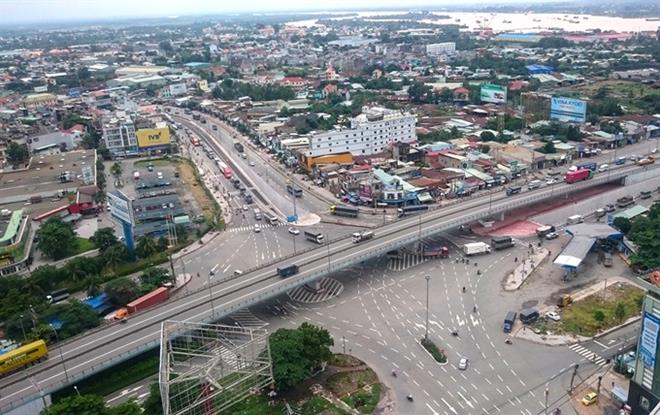 An overview of Bien Hoa city The property market in Bien Hoa city, southern Dong Nai province, has been booming in the last few months. Prices of properties located near Ho Chi Minh City have increased by 10–20 percent since Tet (Lunar New Year), while in the city centre they have increased by 10–25 percent on average, though in some places they have gone up by 60 percent. Many urban area projects are underway in the city such as Bien Hoa New City and Paradise Riverside, livening up the property market. The city received 902.6 million USD worth of investment in the first half of the year, 141 percent higher than last year. Due to the province’s ability to attract investments, many skilled local and foreign workers live in Bien Hoa, driving up demand for property. As a part of the southern key economic zone, the city has been growing steadily at 12-15 percent a year, with its industrial and services sectors growing strongly, and having a high average income. The city is also the economic and administrative hub of Dong Nai province and situated close to HCM City’s eastern part near its major industrial parks. This has added value to land prices in Bien Hoa, especially with construction of Long Thanh International Airport slated to begin at the end of 2019. Connectivity is also improving greatly, with easy links to key economic areas such as HCM City and Ba Ria-Vung Tau province, together with several traffic works getting underway, boosting value. One such project is the HCM City metro line No 1 (Ben Thanh – Suoi Tien) extending to Bien Hoa and Binh Duong province’s Dĩ An town. Other ongoing projects include the Ben Luc – Long Thanh Highway connecting with existing highways and the Bien Hoa – Vung Tau Highway, which will help reduce distances between Bien Hoa and other cities. The upcoming river tour in Dong Nai province and the Long Thanh Golf Club are other factors making the demand for Bien Hoa property increase. The population of the city is 1.2 million. Ha Tinh to build two solar power plants Two new solar power plants are scheduled to be built in the central province of Ha Tinh, with total capacity of 58MWp. The Cam Hung solar power plant will be built in Cam Xuyen District’s Cam Hung and Cam Quan communes in 2018-20. It will cover an area of 29ha with capacity of 29MWp. The Son Quang solar power plant is planned for Huong Son District’s Son Quang Commune with the same capacity. The Northern Power Corporation under the Electricity of Viet Nam (EVN) will mobilise capital for the two plants as planned to ensure progress and power supply. Duong Tat Thang, vice chairman of the provincial People’s Committee, said the two plants were the initial results of Ha Tinh Province’s trade promotion efforts in Germany. Thang said that the Ministry of Industry and Trade approved the adjusted and supplemented planning for electricity development in Ha Tinh Province in the 2016-25 period. Earlier, Ha Tinh’s leaders held a meeting with Nguyen Huu Trang, Trade Counsellor of the Vietnamese Embassy to Germany, management board of the Viet Nam-Germany Industrial Park (GVIP) and businesses from Germany and Italy. The provincial People’s Committee signed a memorandum of understanding on investment with Ruland Arthur representing the German firms. The committee issued Document No 7766/UBND-KT on December 8, 2017 allowing German companies to conduct a survey for construction of the two solar power plants. It’s tech time for local companies The application of modern digital technologies would help local firms increase productivity, reduce costs and risks, especially in the Fourth Industrial Revolution. And this would also help improve their competitiveness and position in the global supply chains. That was the message delivered at a forum in Ha Noi on Tuesday to help businesses optimise supply chains and improve competitiveness. The event was held by the Institute for Brand and Competitiveness Strategy (BCSI) in partnership with Portland State University in the US. Speaking at the forum, president of the BCSI Council Nguyen Van Nam said the concept of global supply chains is not new to Vietnamese companies. Since Viet Nam’s shift from a centrally planned to market economy three decades ago, the country has set up trade relations with more than 180 countries and territories and drawn investment from more than 100 economies. “However, most firms only participate in the secondary supply chain, so the products they make don’t have high added value,” he said. About 21 per cent of small- and medium-sized enterprises in Viet Nam joined the global supply chain while the percentages in Thailand and Malaysia are 30 per cent and 46 per cent, respectively. This means Vietnamese enterprises are less likely to benefit from the spill-over effects of FDI firms through the technology transfer, know-how and management skills, he added. Sharing the ideas, Le Ngoc Quang, director of BDO Viet Nam Auditing Company Limited, said each product needed a “thorny journey” to the end-customers. The journey is a collaboration of different segments from material suppliers to factories, transport units, wharfs to distribution centres, wholesale and retail shops. This is a close process or so-called supply chain. The chain is linked to all businesses’ activities. Currently, Vietnamese companies are facing with difficulties of co-operation among departments and weak administrative network. The weaknesses have been reasons for low productivity, high fee of inventory, delayed delivery and high inventory, he said. “Better supply chain management would help businesses maximise effectiveness, thus increasing profit and competitiveness,” he added. Jay Fortenberry, lecturer at Portland State University and chairman of the Fortenberry Group agreed, saying that to optimise supply chains and improve competitiveness, Vietnamese businesses must better manage supply chain costs and customer demand. It’s crucial that enterprises are in control of their customer services, the internationally-recognised leader in supply chain management noted. Daniel Wong, a lecturer at Portland State University, said Vietnamese firms are pioneers in leveraging the Fourth Industrial Revolution. They have been applying advanced technology and IT solutions, and that means they are on the right track, he noted. Besides these strengths, Vietnamese entrepreneurs still have many “gaps”, especially in terms of knowledge, as they lack specialists in their businesses. They should enhance management skills to better manage their companies, Wong added. Wong used to serve as Vice President of Logistics and Supply Chain Management at North Pacific and Director of Supply Chain process improvement at Longview Fibre Company in Longview, Washington, the US. Viet Nam 1st market in the world to get Nokia 6.1 Plus HMD Global launched its bezelless Nokia 6.1 Plus smartphone in HCM City on Tuesday at a starting price of VND6.59 million (US$289). It said Viet Nam is the first market in the world where the phone will be sold, from August 26. For the first 10 days HMD is offering a plethora of discounts to customers like gift vouchers, interest-free instalments and tickets for two couples to visit Nokia’s home in Finland. The Nokia 6.1 Plus has a bigger screen experience thanks to its notched 19:9 screen, a 16MP/5MP dual sensor rear camera, 4 GB RAM and 64GB ROM. It is supported with artificial intelligence, including smart recognition software which performs a search using keywords from any sentence. Kyler Tan, its Viet Nam country general director, said: “In China this year we introduced the Nokia X6, our first smartphone with an all-screen design and our fans around the world made it very clear that they wanted to see more of the same from us. This excitement for a cutting-edge smartphone with a contemporary design prompted us to bring a device using the same formula to more markets. We are launching the Nokia 6.1 Plus because you asked for it and we’re excited to continue delivering the first-class experiences and quality expected from a Nokia smartphone.” Headquartered in Finland, HMD Global Oy designs and markets a range of smartphones and feature phones targeted at a range of consumers and price points. Viglacera eyes stake cuts in sub-units State-owned glass and ceramics producer Viglacera has announced it aims to complete selling stakes in several of its subsidiaries by the end of this year. The subsidiaries Viglacera wants to withdraw from include Tu Liem JSC, Hop Thinh JSC, Tu Son JSC and Ha Long I JSC. The company has also planned another sale of State shares by the end of the year to cut the State’s stake from nearly 54 per cent to 36 per cent. It expects to offload all the State’s capital in 2019. The Ministry of Construction, which represents the Government to control the State’s capital in Viglacera, offered 80 million shares of Viglacera for sale at VND26,100 (US$1.16) per share in July. The deal was unsuccessful because the price was much higher than the firm’s share price recorded on the stock market. Viglacera’s share price lost as much as 32 per cent in July to hit a six-month low of VND15,340. The company also planned to cancel listing more than 448.3 million shares on the Ha Noi Stock Exchange to move to the HCM Stock Exchange by the end of the year. Viglacera is listing as VGC on the northern trading bourse. Its shares gained 1.8 per cent to close Tuesday at VND16,600 per share. The firm targeted revenue in the second half of 2018 of VND4.97 trillion ($221 million) and the firm is set to fulfill its full-year profit target of VND950 billion. In the first six months, Viglacera recorded VND4.18 trillion in revenue and VND447 billion in profit. Detailed guidance needed to tackle bad debt: experts Settling non-performing loans (NPLs) has been easier since the application of Nation Assembly’s Resolution 42 a year ago, but detailed guidance is still needed to make the use of the regulation smoother, industry insiders said. Enhanced legal frameworks in Resolution 42, which allows credit institutions and the Viet Nam Asset Management Company (VAMC) to rapidly repossess collateral if a borrower defaults, have helped institutions and VAMC manage bad debts. However, Tran Van Du, deputy general director of the Bank for Agriculture and Rural Development (Agribank), said the Ministry of Finance issued a document in April this year regulating the implementation of Resolution 42, but the document doesn’t provide detailed guidance on tax payment when dealing with collaterals of NPLs. It was still difficult to sell the assets due to the tax payment issue, Du said, explaining that buyers struggled to get the assets after buying them as the tax wasn’t paid. Du suggested there should be clearer legal guidelines on paying taxes when auctioning collateral. Representatives from Vietcombank said that authorities in some cities and provinces are still cautious and do not want to help credit institutions repossess collaterals. In addition, though credit institutions have the right to repossess collaterals according to Resolution 42, they still have to initiate lawsuits to be entitled to handle the collateral if borrowers deliberately oppose them. As such, credit institutions could only repossess collateral successfully in cases where collateral was vacant land or borrowers had fled while collateral was not under dispute, the Vietcombank representative said, adding that this limited the bad debt settlement of credit institutions. According to deputy governor of the State Bank of Viet Nam (SBV) Nguyen Kim Anh, Resolution 42 has helped resolve many difficulties in settling bad debts, and the above mentioned difficulties are just encountered during the implementation of the resolution and the SBV will report to the Government to fix them. Anh also affirmed that with Resolution 42, legal regulations for bad debt settlement at credit institutions and VAMC are adequate and effective so he urged VAMC to better settle bad debts. In the future, VAMC needs to be more active in finding partners and investors for brokerages, buying and selling of bad debt and collaterals and striving to take a key role in the country’s trading debt and collateral, Anh said. Run by SBV since it was established in 2013, VAMC is responsible for purchasing NPLs from local banks and handling them on the lenders’ behalf. VAMC plans to recover VND24.89 trillion of NPLs in 2018. It also aims to buy some VND30.5-35.5 trillion of NPLs from credit institutions this year. According to VAMC chairman Nguyen Tien Dong, thanks to Resolution 42 becoming effective last year, the company recouped VND30.85 trillion of NPLs in 2017, equal to nearly two thirds of the total NPLs recouped in 2013-2016. Bad debt ratio at Viet Nam’s credit institutions dropped from 3.61 per cent in 2013 to 2.18 per cent by the end of June, the SBV reported. Remittances to HCMC steady Despite the strengthening of the dollar against other global currencies, remittances to HCM City have continued to increase. It received US$2.9 billion worth of remittances in the first seven months of this year, 20 per cent higher than last year. Nguyen Hoang Minh, deputy director of the State Bank of Viet Nam’s HCM City office, said in the past few years remittances to the city have been increasing by steadily. The country’s economic and exchange rate stability means they are converted into dong instead of retained in dollars. Banks pay zero interest on the greenback. Minh said in the last three years 21 per cent of remittances, which have been around $5 billion a year, have been invested in real estate, which is fostering property businesses and economic development. Dr Bui Quang Tin from the HCM City University of Banking said remittances could continue to increase this year though the US Federal Reserve has been increasing interest rates — which affects remittances by attracting flows back to the US — since the increases are only by 0.25 – 0.5 per cent. A savings interest rate of 7-8 per cent means converting remittances into dong and depositing them is still highly profitable, he added. Capital market faces imbalances 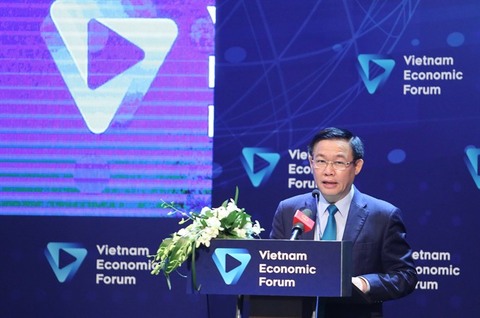 The Viet Nam’s capital market is facing a concerns in the imbalance between the credit market and the capital market. Deputy Prime Minister Vuong Dinh Hue addresses a forum held in Ha Noi on Tuesday. The statement was made by Deputy Prime Minister Vuong Dinh Hue during a forum held in Ha Noi on Tuesday, discussing challenges and solutions to expand the capital – financial market of Viet Nam. Addressing the event, part of the Viet Nam Economic Forum, the Deputy PM said it is necessary to look into the imbalance between the credit market and the capital market, between credit and other added services in banks’ credit activities, and between the short-term and long-term markets, particularly the bond market. He said 53 per cent of businesses were not making profit at the end of 2016, saying that one of the reasons for this is the lack of capital. “Many companies depend on bank loans to operate, so their financial expense is very high, plus other high expenses like market access and logistics costs, which hampered their business performance,” the Deputy PM said. “We must develop the capital market toward modern and international orientation, working on solutions to provide capital, promoting the equitisation and divestment process at State-owned enterprises, market restructuring and enhancing the capital absorbability of market participants, especially in the context of economic fluctuations,” Hue said. Inspection and supervision over the capital market should be strengthened to ensure a healthy, transparent and sustainable market, and to avoid fraud on the “black” credit market that often saw heavy rates and brought negative consequences for the society, he said. Deputy Governor of the State Bank of Viet Nam Nguyen Thi Hong said in the past, the financial market hasn’t developed as expected, but the stock and money markets have grown strongly and become the main sources of capital for the economy. The stock market has recorded many breakthroughs in recent years with total market capitalisation surpassing 70 per cent of the country’s GDP in 2017. In the money market, the credit-to-GDP ratio is about 130 per cent. Government bonds (G-bonds) still dominate the bond market, while corporate bonds account for only 1.25 per cent. All of them are short-term capital sources while the demand for medium- and long-term loans is big, thus putting pressure on credit institutions, Hong said. Tran Van Dung, Chairman of the State Securities Commission of Viet Nam, said Viet Nam’s capital – financial market aims to ensure the balance among the banking market, the stock market and the bond market. The country now has a very developed G-bond market and will boost the corporate bond market in the time ahead, he added. At the forum, other speakers called for solutions to existing flaws of the domestic capital – financial market such as the shortage of medium- and long-term capital sources. Fiachra MacCanna, Head of Research, Managing Director of Ho Chi Minh Securities Company (HSC) said long term capital should be a solution for undercapitalised banks and enables banks to offer longer term mortage. “Introducing private pension funds should be an option for provide long term capital to the economy,” MacCanna said. Ketut Kusuma, a senior specialist at the World Bank, said the structure of Viet Nam’s long-term capital market has shown many positive signs. To expand the long-term market, the country should increase data and information transparency, modernise the legal framework and the market’s infrastructure, and improve its monitoring capacity. For the stock market, it needs to integrate the equitisation of State-owned enterprises into the market development strategy. Meanwhile, the G-bond market should continue to be reformed to join global emerging market indexes, he added. Impacts of revolution 4.0 on banking sector 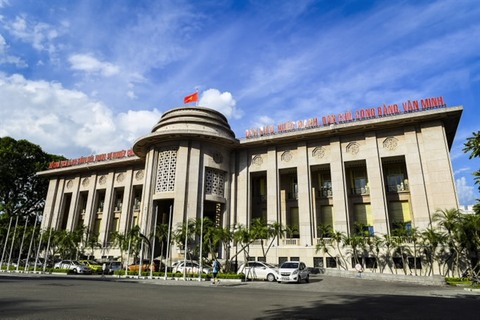 The win-win co-operation and the resonance strength between the banks and fintech companies is the main development trend in the financial market and Vietnamese banks today. — Photo sbv.gov.vn The revolution of technology 4.0 has fundamentally changed the business and management model of banks. The State Bank of Viet Nam (SBV) in collaboration with the Ministry of Planning and Investment and the Ministry of Science and Technology organised a workshop on applying science and technology in the financial sector as part of the “Connecting Viet Nam Innovation Network 2018”. Speaking at the opening ceremony, Deputy Governor of the State Bank Nguyen Kim Anh said that the banking sector was not outside the influence of the industrial revolution 4.0. In order to catch up with the development of science and technology, Vietnamese banks had researched and invested in their products, services, operations and governance.The most prominent was the practical deployment of digital platforms such as cloud computing, big data analysis, artificial intelligence, biometric authentication and data exchange through open application platforms, he said. Vietnamese banks were investing heavily in information technology infrastructure, new generation corebank software and application of innovative solutions in line with the general trends of digitalisation to provide digital banking products and services in a simple, friendly, automated, smart and multi-channel (omni-channel) approach. In addition to the emergence and application of digital technologies, there is the development and expansion of the domestic financial services ecosystem with the presence of fintech companies. The win-win co-operation and the resonance strength between the banks and fintech companies is the main development trend in the financial market and Vietnamese banks today. Nghiem Thanh Son, deputy director of the SBV Payment Department, said that the impact of the 4.0 revolution required the financial market infrastructure including payment systems to be changed. However, the impact of the 4.0 revolution on the banking industry had made the risk of cyber attacks greater and more permanent due to the open, continuous, multidimensional and complex connections. Sacombank, Becamex Binh Phuoc ink deal Sacombank and Becamex Binh Phuoc Infrastructure Development JSC on Monday signed an agreement under which Sacombank will provide credit to Becamex Binh Phuoc for construction of the Becamex - Binh Phuoc Industrial and Residential Complex project. The signing took place in the framework of the Binh Phuoc Investment Promotion Conference with the presence of Prime Minister Nguyen Xuan Phuc. Sacombank will provide Becamex Binh Phuoc with financial services such as deposits and currency accounts, cards and ATMs as well as funds and full package services for businesses in the industrial park, and funds for customers buying houses in the project’s urban area. The bank will also provide funds for members of the Becamex IDC Corporation. The residential-industrial complex, which is one of the province’s key projects targeting foreign investment, covers over 4,600ha in Chon Thanh Town and three communes in Chon Thanh District. With its strategic location adjacent to National Highway 13 and Highway 14, the project will help spur industrial development, and transportation and circulation of goods. The project is expected to speed up the province’s economic growth; create a sustainable source of revenue, and attract domestic and foreign investment, while creating stable jobs for about 200,000 people and improving the living conditions of local residents. Tra Vinh seeks higher labour productivity The Mekong Delta province of Tra Vinh plans to increase the production values of the agro-forestry-fishery sector by more than 4 percent by 2020, according to the provincial People’s Committee. At a conference reviewing the last five years of agricultural restructuring, Chairman of the provincial People’s Committee Kim Ngoc Thai said that labour productivity would increase by more than 5 percent by 2020. The number of rural labourers in the sector would be under 40 percent, while the number of trained labourers in agriculture would increase to nearly 50 percent, according to Thai. Moreover, the province aims to double the income of local residents by 2020 against the level in 2013. To obtain the targets, the province’s project on agricultural restructuring will be carried out by improving the added value of agricultural products and developing sustainable agriculture, Thai said. The province will choose eight products, including paddy rice, coconut, other fruits, beef and seafood that have potential for development. Thai proposed that the Government issue a policy on new production that can produce high added-value agricultural products with advanced technology. The Government should also provide funds for infrastructure and irrigation projects for aquatic cultivation. Between 2013 and 2017, the annual GDP growth rate for agriculture was 1.45 percent, or more than 35.5 trillion VND (1.5 billion USD) per year, accounting for nearly 36 percent of the province’s total production value. In 2017, the production value of crops reached nearly 127 million VND per ha, an increase of more than 19 million VND per ha compared to the one in 2013. The production value for aquatic cultivation reached nearly 284.5 million VND per ha, increasing by nearly 78 million VND per ha. The average income per capita in the province’s rural areas last year was 29 million VND, 1.7 times higher than in 2013. Since 2014, the province has shifted 13,300 ha of rice cultivation to other agricultural and aquatic products, leading to an increase of 1.5 to 4 times in production compared to rice cultivation. However, there is limited co-operation between production and consumption of agricultural products, leading to erratic sales of many products. Nguyen Van Nhiem, Chairman of the People’s Committee of Phu Can commune in Tieu Can district, said that farmers with safe products had difficulty in signing contracts with enterprises. Ngo Thanh Xuan, Vice Chairman of the Cau Ke District People’s Committee, said farmers in the district had the same problem. Xuan proposed that the province provided assistance in building value chain models in co-operative production. Pham Minh Truyen, Deputy Director of the provincial Department of Agriculture and Rural Development, said that local authorities were uncertain about providing guidance on what to plant and breed to meet market demand. The province has also faced problems calling on enterprises to cooperate in production, processing and consumption, Truyen said. Most agricultural production in the locality is on a small scale, leading to difficulties in building brand names and applying high-tech, he said, adding that most farmers have not accessed preferential policies. Nguyen Thien Nghia, Deputy Director of the provincial Department of Science and Technology, said that production costs for agricultural products were higher than in other countries, leading to less competitive products, especially those that can meet export demand. VNN |
↧
Article 1
Social News 27/8 Vietnam Challenge for Environment launched in Hanoi 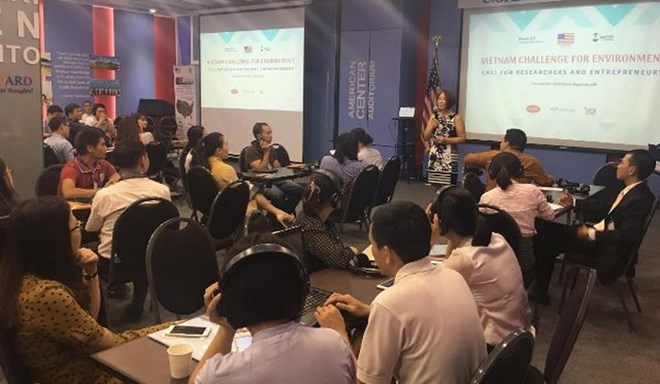 The Vietnam Challenge for Environment was launched in Hanoi on August 24 as part of an ongoing campaign initiated by the US Embassy to end plastic pollution and keep Vietnam clean. Co-launched by the US Embassy in Vietnam in partnership with Hatch and Swiss EP, the event will match researchers with entrepreneurs and encourage collaboration between universities, the startup community, and the private sector to create sustainable and long-term solutions to treating agricultural, industrial, and household wastes, as well as solving plastic, carbon, and chemical pollution problems. Fenghua Wang, the US Department of State’s Regional Public Engagement Officer for Vietnam, Laos, and Cambodia, said through the challenge, the US Embassy is committed to nurturing viable, sustainable, and scalable solutions to address such challenges. She stressed the need to raise public awareness of environmental protection, which she said, requires the joint efforts of organisations, units, and the community. The challenge will take place from August 24 to November 8, 2018, during which researchers and entrepreneurs will present their ideas and explore the open networking space to form high-performance teams. They will have a chance to join an intensive three-day camp to help entrepreneurs discover their key customers and develop their products based on customers’ demand. During the incubation period, teams will regularly meet their mentors and attend workshops to refine their business models to achieve fundable stages by investors. The best six teams will receive seed funds, publicity and exposure, and be given the chance to pitch to notable investors. Foreign-funded projects support needy children in Thua Thien-Hue  The central province of Thua Thien-Hue on August 25 launched a project to support local orphans and poor children with assistance from an US organisation. The project, worth about 722 million VND (31,046 USD), covers Huong Tra town, and Quang Dien, Phu Vang, A Luoi and Nam Dong districts. The project aims to improve the quality of the living conditions of locals, contributing to developing education and health care services for poor people in benefited localities. Major activities of the project include health care and education support to locals through mobile check-ups, Hepatitis vaccine shots and free orthopedic surgeries to children with disabilities, provision of scholarships for poor children and financial assistance for the organising of existing charity classes. The project will also help locals in production by giving locals breeding cows to residents in communes of A Luoi and Nam Dong districts. Earlier, the US-based organisation The Compassion Flower also offered Thua Thien-Hue a non-refundable aid of 1.25 billion VND to support poor locals and students. The project targets the enhancement of living conditions for locals by bettering health care services, and environment and education quality. As many as 500 gifts were presented to needy families in Phu Loc, Nam Dong districts and Huong Thuy town. The organisation also built five wells to ensure fresh water to locals in Huong Thuy, Huong Tra towns and Phu Loc districts. Along with 600 gift packages including as bicycles, uniforms, blankets and raincoats to local children and students in Hong Thuy commune of A Luoi district, the project also taught 80 adults in Phu Vang district to read and write, and granted 600 other scholarships to poor students with good academic performance in the 2018-2019 school year. Within the project’s framework, 500 winter gift packages were sent to poor locals in A Dot commune of A Luoi district as well as some remote areas of the province. Four children facing extreme difficult conditions in Phu Dien commune, Phu Vang district, were sponsored, while 10 women in Huong Thuy town and Quang Dien district were supported with vocational training. On August 24, in the Central Highlands province of Gia Lai, the province presented Nay Der scholarship, named after the creator of the first scripts of Jrai ethnic minority group, to over 500 students with high economic performance in the 2017-2018 school year. Vietnamese versions of Russian classic literature works made public 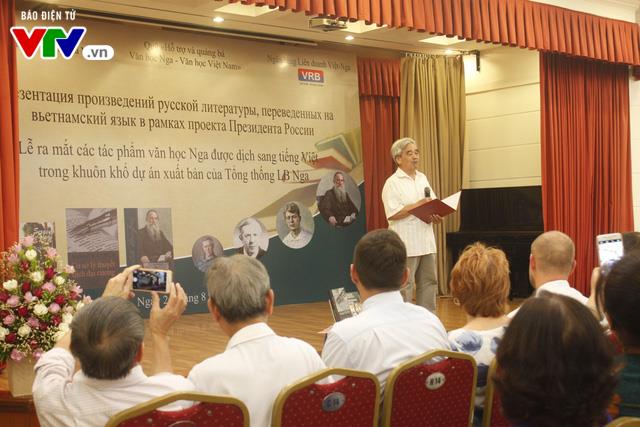 Vietnamese versions of four Russian classic literature works are made public on August 24. (Photo: VTV) The Vietnamese versions of four Russian classic literature works were made public on August 24 at the Russian Science and Culture Centre under the Russian Embassy in Hanoi. The activity came within the framework of a Russia – Vietnam project on translating and publishing literature works. The four works made public this time are selective plays by Lev Tolstoy, poems by Sergey Esenin, story “Ivan’s daughter, Ivan’s mother” by Valentin Rasputin, and an essay on the theoretical basis of translation by Andrey Venhediktovich Fedorov. Director of the centre Natalia Shafinskaya stressed that thanks to efforts of the translators, more and more Russian literature works have been translated into Vietnamese and, as a result, more and more Vietnamese readers can access Russian classic literature. This contributes to the unceasing development of cooperation between the two countries, she highlighted. Translator Hoang Thuy Toan, head of the translators’ group, spoke highly of the members’ devotion and efforts in bringing Russian classic literature to Vietnamese readers. Since the establishment of the project in 2012 on the occasion of the visit to Vietnam by Russian President Dmitry Medvedev, nearly 40 Russian and Vietnamese classic literature works have been translated and published. Smart-city development plans discussed 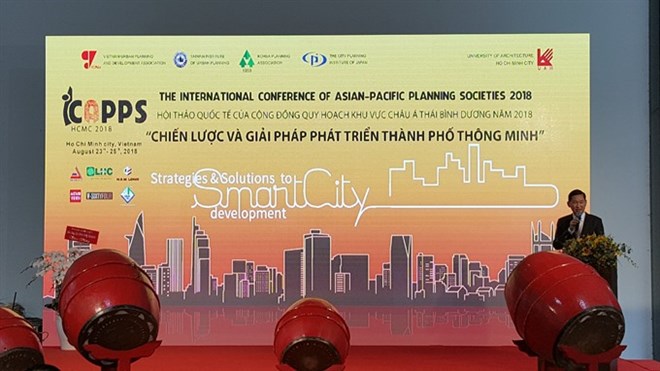 Int’l planning experts meet to discuss smart-city development. Around 400 Vietnamese and international architects and master planners discussed smart-city strategies and solutions at the 2018 International Conference of Asian-Pacific Planning Societies which opened on August 24 in Ho Chi Minh City. Begun in 1994, the conference is an annual forum of the Asian-Pacific Planning Community, which includes Japan, the Republic of Korea, Taiwan (China) and Vietnam. “The conference’s purpose is to develop and disseminate professional knowledge, share practical experiences and increase the capability of regional and urban experts,” Tran Ngoc Chinh, Chairman of the Vietnam Urban Planning and Development Association, said during his opening speech. “This year, the conference is discussing smart cities’ strategies and solutions in six categories: community, governance, urban planning, infrastructure, city education and mobility,” he added. Vietnam has 813 urban areas, with two major cities, Hanoi and HCM City. The urbanisation rate of the country is 38 percent, compared to the international rate of 50 percent, while the urban population accounts for 34 percent of Vietnam’s total population. “The sharply increasing population has exerted enormous pressure on Hanoi and HCM City’s infrastructure. Smart cities can transform urban management by applying technology that meets development demand,” Chinh said. “Building HCM City as a smart city is part of the drive for socio-economic development,” Tran Vinh Tuyen, Vice Chairman of the municipal People’s Committee, said at the conference. “Municipal authorities would like to hear practical experiences, knowledge and suggestions from international experts to assist the city in coping with traffic congestion, flooding and urban development,” he added. Experts from Japan’s University of Tokyo said that cities are meeting places for the creation of collective life that offers all residents a good life based on the idea of a city as a cultural, social and political product. “Other authors refer to rights of the city as a collective rather than an individual right, since city transformation depends upon the exercise of community empowerment to reshape the processes of urbanisation,” said Claudia Sakay from the University of Tokyo. Local incentives and active participation of citizens will result in smart and sustainable communities. “A smart community not only involves residents in land governance but also allows them to participate in the production and cooperation of their living environment,” she added. Other experts from the University of Tokyo described what good cross-border governance could be. They based their ideas on semi-structured interviews and surveys of the main stakeholders in “the heart of the Southwestern Amazon area”, including Peru, Brazil and Bolivia. The collected information was used to define power relations in the governance network (social network analysis), common elements for integration, and priorities for integration (mental mapping). As for smart urban planning, experts from the University of Tsukuba mentioned the impact of reconstruction planning in creating a vital urban space in central Hiroshima. “A significant task of reconstruction planning is to use the physical recovery as a catalyst for the restoration of urban vitality to damaged areas,” Kosuke Matsubara from the University of Tsukuba said. “After the staggering destruction of the city, Hiroshima was able to reclaim its vitality and reinvent itself as a symbol of world peace,” he added. Hokkaido University experts said that technologies and citizens should work side by side to form a strong base for a smart and resilient city, making citizens’ participation a top priority. “Developing training and information-sharing programmes based on age groups, using approaches that combine verbal, visual and written communication in a less formal context, and experiential training has the potential to be effective for residents,” Suguru Mori from Hokkaido University said. Photo contest highlights importance of natural conservation 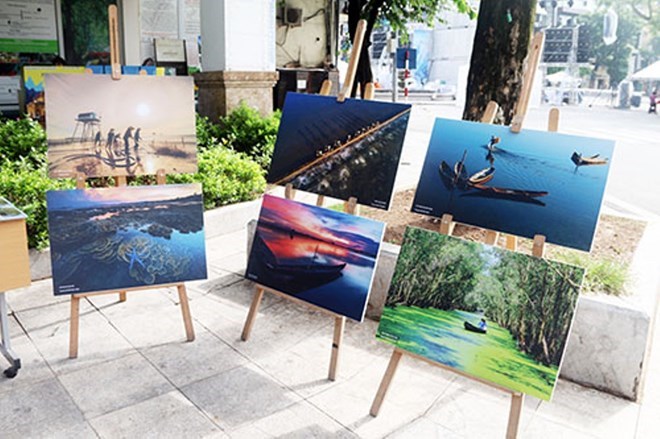 The winning works of the photo contest promoting natural conservation and development. (Photo: Institute of Strategy and Policy on Natural Resources and Environment) An award ceremony was held in Hanoi on August 25 for a photo contest with the theme of natural conservation and development by the Institute of Strategy and Policy on Natural Resources and Environment (ISPONRE) under the Ministry of Natural Resources and Environment, provincial Departments of Natural Resources and Environment, and photo clubs. Titled “Submerged Land: Conservation and Development”, the contest came within the framework of a joint project between the ministry and the United Nations Development Programme. The sides are looking for ways to support the provinces of Thai Binh and Thua Thien – Hue in establishing two submerged land conservation areas. The nearly 400 entries by over 100 photographers to the contest convey a message on the beauty and role of submerged land in the social life of the local communities. The organizing board selected 50 works for display, and gave away one first prize, two second and three third. The contest aims to raise awareness of policymakers and local communities on the importance of submerged land in the life and the ways to earn living of locals, strengthen and diversify the communication forms in the protection of the environment and the biological diversity, as well as the submerged land ecology, organizers said. Vietnam is now home to over 10 million hectares of submerged land which occupies about 30 percent of the country’s total area and is scattered in every ecological area of Vietnam. This kind of land plays a crucial role in food security and economic activities of various sectors. However, over the recent years, the natural submerged land has been shrunk seriously as a result of the reclamation activities by locals who are trying to turn the land into farms and fields. Quang Tri restores marine resources in Con Co island 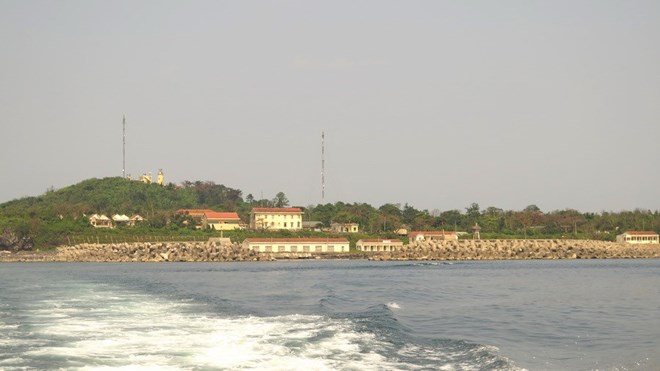 A corner of Con Co Island The central province of Quang Tri is pushing efforts to preserve and restore marine resources in the Con Co Island Marine Reserve. The province has established volunteer groups to protect sea turtle, operating in not only Con Co island but also coastal communes. Since 2017 to now, local residents have released into the sea 15 sea turtles. Under a research project on restoring coral reefs in the reserve, conducted by the reserve’s management board and the Research Institute for Marine Fisheries since 2011, scientists planted 360 coral colonies with a survival rate of 71 percent. Some colonies have grown to cover part of the seabed. The area of newly-formed coral reefs has been zoned off for protection. Other types of coral also revived in the area. According to the provincial Department of Agriculture and Rural Development, other research projects have also been launched to evaluate and study ecological diversity and marine resources in the reserve. Local agencies are collecting samples to build a collection of rare and precious sea animals and plants typical of Con Co island. Con Co Island Marine Reserve was established under Quang Tri provincial People’s Committee Decision No. 2090 dated October 14, 2009, and became operational on April 21, 2010. It aims to improve local residents’ awareness of biodiversity, marine resources, as well as the management, protection and sustainable development of those resources. The reserve covers 4,532 hectares, including three subregions - namely a 534 ha protected subregion, a 1,392 ha subregion for ecological recovery and a 2,376 ha subregion for development. In terms of biodiversity, the reserve now boasts 113 coral species, 57 species of seaweed and seagrass, 67 zoobenthos species, 19 crustacean species, 224 species of saltwater fish, 87 species of coral reef fish, 164 phytoplankton species and 68 species and groups of zooplankton. Of which, numerous species are rare and have high economic value such as lobster, sea cucumbers, Asian green mussels, mackerel, squid and sea whips. Prime Minister signs directive on strengthening management of drugs 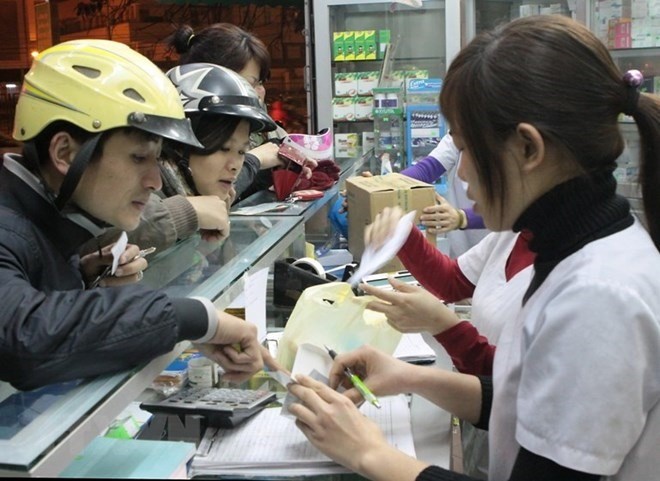 People buy medicines at a drug store in Hanoi Prime Minister Nguyen Xuan Phuc has signed a directive strengthening the management of activities related to drug supply and distribution. In recent years, Vietnam’s medicine supply and distribution system has expanded to meet the demands of the people. However, the supply of drugs has still shown inadequacies, especially the situation of buying and selling drugs of unknown origin, fake medicines and drugs of poor quality. The selling and buying of medicines without the doctor’s prescription and the use of antibiotic drugs without prescription has led to an alarming of antibiotic resistance. The main cause of the situation is the ineffective management of drug supply. The Prime Minister has asked the Ministry of Health to take urgent measures to unify the State management of the drug distribution system to ensure benefits for people. The ministry is required to create favourable conditions for enterprises and traders in accordance with the law and implement measures to connect medicine supplying establishments nationwide. The ministry also needs to issue regulations on the electronic medicine prescription in connection with drug-supplying establishments to ensure the control of drug prescriptions and sale of drugs for prescription. The health ministry needs to regularly update and supply information on drug products, indications, use, origins and prices through the national drug database. The People’s Committees of provinces and cities are required to enhance the management of drug-wholesale and retail establishments to ensure the purchasing of medicines follows doctors’ prescriptions. Vietnamese celebrate Buddhist Vu Lan Festival in Laos, India 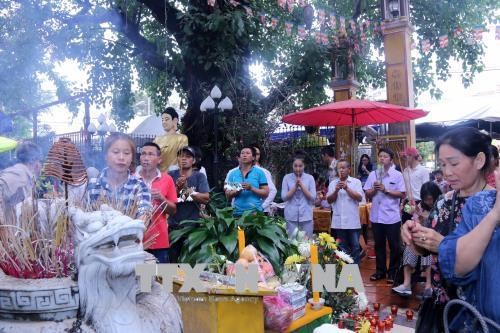 Vietnamese expatriates in Laos celebrate Buddhist Vu Lan festival at the Phat Tich Pagoda in Vientiane Vietnamese expatriates in Laos and India held grand ceremonies to mark the Buddhist Vu Lan Festival on August 25. The Vu Lan festival falls on the fifteenth day of the seventh month in the lunar calendar. On this month’s full moon, wandering souls are believed to return to their former homes. The festival is based on the legend that once when mediating, a Buddha’s disciple named Muc Kieu Lien saw his mother suffering hell’s tortures. Following Buddha’s advice, on the seventh full moon of the year, Lien gathered monks and devotees to pray for his mother. Therefore, the festival is also an occasion for children to express their gratitude towards their parents (especially mothers) and help ancestors’ souls find their way back to the earth. In Vientiane, Laos, the ceremony took place at the Phat Tich Pagoda, gathering representatives from the Vietnamese Embassy, associations of Vietnamese in Vientiane and Laos, and thousands of Vietnamese monks and expatriates. Speaking at the event, Head of Phat Tich Pagoda Venerable Thich Minh Quang said the annual Vu Lan ceremony promotes solidarity and mutual support among Vietnamese communities in Laos. It was estimated that approximately 100,000 Vietnamese people are residing, studying and working in Laos, most of them follow Buddhism. Many see Vietnamese pagodas in Laos as common houses not only for religious practices but also for meeting each other. Laos is now home to 13 Vietnamese Buddhist pagodas, including three pagodas and one monastery in Vientiane. A similar ceremony took place the same day at the Buddha Vihara Pagoda in New Delhi, India. The ceremony is an annual activity of the Vietnamese community in India. Central Highlands children with cleft lip, palate get free operations  Eighty-three children with cleft lip and palate in the Tay Nguyen Central Highlands will receive free health check-ups and surgeries as part of the Operation Smile Vietnam programme. Operations for the children from Dak Lak, Dak Nong, Gia Lai and Lam Dong province will be conducted from August 27 to 31 at the Tay Nguyen General Hospital in Dak Lak. Doctors from the Ho Chi Minh Medicine and Pharmacy University Hospital, National Hospital of Odonto – Stomatology, and 108 Military Central Hospital, among other top medical facilities, will perform these surgeries. The programme also subsidizes travel costs of the children. Speaking at a ceremony opening the programme in Dak Lak on August 26, Vice Chairman of the provincial People’s Committee H’Yim Kdoh said the programme had provided such operations for 852 children in Dak Lak. He said it demonstrate communal support toward the well-being of disadvantaged children with disabilities. Rcom H’Mac, a Gia Rai ethnic who travelled 100 km from Gia Lai to Dak Lak for her four-year-old son’s operation, talked of the programme as a magic, helping her boy be able to speak and grow normally. Y Liem Knun from Cu Kuin district in Dak Lak said his granddaughter could not speak normally for 13 years as she was born without a uvula, adding that the programme is meaningful to her life and his family. Some 2,000 babies are born with cleft lip and cleft palate every year in Vietnam. Since 1994, the National Fund for Vietnamese Children (NFVC) has run Operation Smile to provide cleft lip and cleft palate surgeries for children. To date, nearly 30,000 children have benefited from the programme. The NFVC has also mobilised resources to provide post-surgery assistance for children, thus helping them integrate into the community. Aus4Equality program on gender equality launched 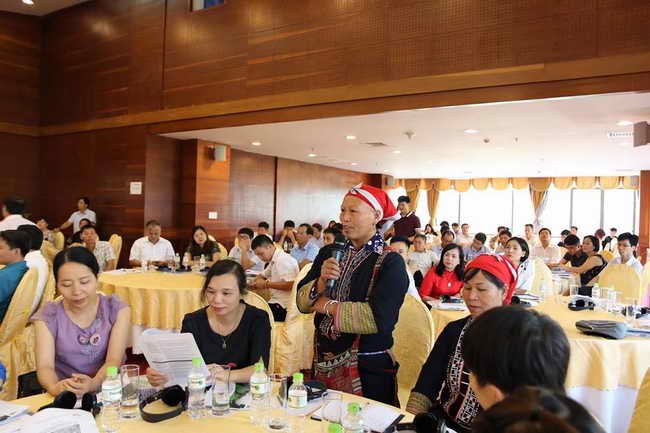 A Dao ethic woman asks questions about how to engage with Aus4Equality - GREAT program at the launch ceremony The Australian and Vietnamese governments yesterday kicked off the Aus4Equality - Gender Responsive Equitable Agriculture and Tourism (GREAT) program in northwestern Vietnam in a bid to empower, create jobs and improve incomes for local women. The A$33.7 million (around VND600 billion) program will empower local women to engage in agriculture and tourism markets, and enhance women’s voices in economic decision-making. The program will partner with a diverse range of actors, including the private and non-government sectors in agriculture and tourism, to improve the policy environment and stimulate inclusive and equitable growth of the mountainous northwestern region of Vietnam. It is expected that the program will assist some 40,000 self-employed women to boost their incomes and create about 4,000 jobs for women to drive economic growth in northwestern provinces. Justin Baguley, Counselor, Economic and Development Cooperation at the Australian Embassy in Vietnam, said: “Gender equality is a priority for both Australia and Vietnam and a critical part of the Australian Government’s development cooperation in Vietnam. "The Aus4Equality - GREAT program aims to stimulate innovative solutions to enhance the lives of women, their families and local communities in northwestern Vietnam and will also contribute to higher productivity and economic growth in the region. We look forward to working closely with the provinces of Lao Cai and Son La to make the program a success”. Addressing the launch ceremony, Lo Minh Hung, vice chairman of the northwestern province of Son La, said: “Son La Province has been placing our greatest efforts on reducing poverty and improving gender equality. We highly appreciate the support of the Australian Government along with the Vietnamese Government’s investment in initiatives on poverty reduction and gender equality improvement.” A public call for proposals was also announced at the official kick-off for the Aus4Equality - GREAT program. The call is available to partners from both private and public sectors and aims to develop and implement innovative market-oriented solutions to persistent poverty and economic marginalization among women in ethnic minority communities. Successful applicants will receive financial and technical support, and in exchange, will help to enhance linkages with new markets and suppliers, improve the policy environment, and contribute to sustainable social development in northwestern Vietnam. Applications will close on September 26, 2018. Hai Hau district receives Hero of People’s Armed Forces title  Vice President Dang Thi Ngoc Thinh Vice President Dang Thi Ngoc Thinh presented the title Hero of People’s Armed Forces in the period of the resistance war against French colonialism to Hai Hau district in the northern province of Nam Dinh during a ceremony marking the district’s 130th founding anniversary on August 26. Hai Hau, with its achievements during the past 130 years, can be considered an exemplary model for the entire country, the Vice President said. During the resistance war against French colonialism, over 9,800 locals in Hai Hau joined the army or volunteer forces to serve on battle fields. On April 26, 2018, President Tran Dai Quang decided to present the title Hero of People’s Armed Forces in the period of the resistance war against French colonialism to officials and people in Hai Hau. In 2015, Hai Hau became one of the first districts recognised as new-style rural areas in the country. The local economic growth reached 7.22 percent in 2017. The annual average per capita income was estimated at over 40 million VND (1,724 USD). The district has been selected to pilot the exemplary rural area model for sustainable development. Vice President Dang Thi Ngoc Thinh urged the district to build on its revolutionary tradition and creativity to reap more achievements in the new period, especially when the country is stepping up modernisation and industrialisation to catch up with significant changes from the Fourth Industrial Revolution (Industry 4.0) and international integration. The district should focus on implementing effectively social welfare policies for national revolutionary contributors, eliminating poor households, and strengthening the all-people solidarity to obtain sustainable development, she suggested. At the same time, the district must pay special attention to the building of the Party and political system in addition to promoting patriotic emulation campaigns and developing rural areas. Hai Hau district is located in the south-eastern coastal area of Nam Dinh province with an area of over 228 square kilometres and 35 communes and towns and a population of over 290,000. Hanoi hopes to attract Japanese tourists 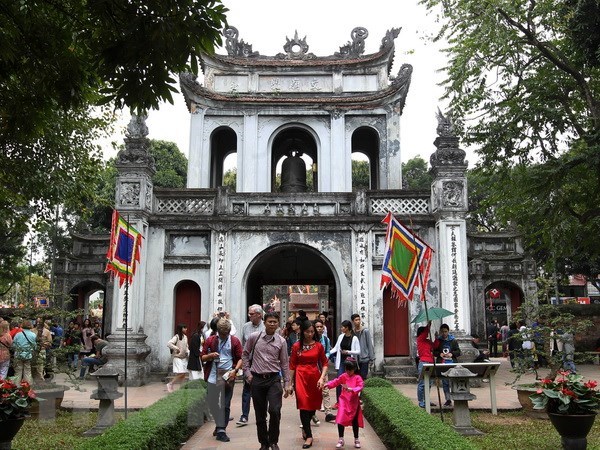 Van Mieu - Quoc Tu Giam in Hanoi Representatives from 65 Japanese and Hanoi firms joined a programme to promote tourism in the capital Vietnamese city on August 24. Japanese guests enjoyed folk music performances, watched a clip introducing Hanoi’s tourism which was produced by the US’ CNN television channel, and met with local businesses and the media to learn about the city’s tourism products and destinations. They gained an insight into Hanoi’s tangible and intangible heritages, ecological tourism and entertainment areas, shopping centres, travel agencies, lodging facilities, transportation, and tourism linkage with other localities. Tran Duc Hai, Director of the municipal Department of Tourism, said foreign arrivals to Hanoi grew by 18 percent annually during the 2015-2017 period, hitting 4.95 million people last year, up 23 percent year-on-year. In the first seven months of the year, the figure rose by 21 percent year-on-year to reach 3.4 million. Japan remained among the top three sources of tourists to Hanoi with 290,170 arrivals last year, up 22 percent annually. The seven-month figure was 166,437, marking an 8 percent year-on-year increase. Hai committed all possible support for Japanese travel agencies, press outlets, and tourists in the near future and expressed his hope that Japanese firms will offer more tours to Vietnam and Hanoi in particular. Ara Saeko from JTB tourism company expressed wishes that Vietnam’s tourism sector would upgrade local infrastructure, relax visa procedures, adjust tour prices and better popularise destinations to attract more Japanese visitors. Japanese guests also visited Thang Long imperial citadel, Van Mieu-Quoc Tu Giam, Hanoi’s Old Quarter, Duong Lam ancient village, Van Phuc silk village, and Ha Long Bay in the northern province of Quang Ninh. Severe torrential rains, floods hit Son La, killing four locals 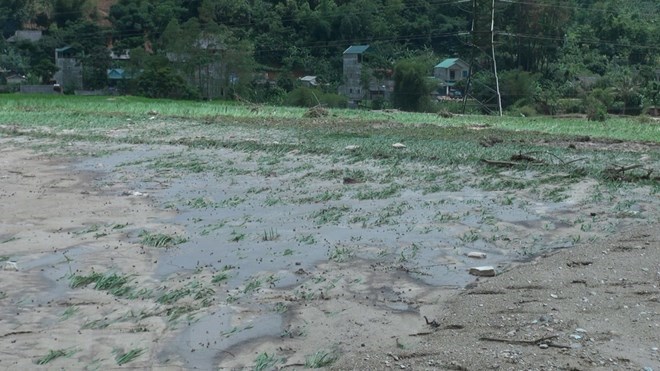 A large area of farm in Son La have been submerged by floodwater Floods triggered by prolonged torrential rains in the past month have killed four locals and injured two others in the northern mountainous province of Son La as of August 24. According to the provincial Steering Committee on Natural Disaster Prevention and Control, and Search and Rescue, landslides damaged a number of roads linking communes and villages, while floodwater swept away 10 houses, damaged 138 others, along with 524ha of rice and other crop farms and 23ha of fish farms. Total property losses have mounted to over 56 billion VND (2.4 million USD), reported the committee. Most recently, heavy rains occurred on wide scale on August 23 in Thuan Chau district, causing flashflood in communes along Muoi stream – including Phong Lang, Chieng Ly, Thom Mom, Tong Lanh, Tong Co, and Thuan Chau town. There were heavy losses in both human life and property. In Phong Lang commune alone, three locals went missing, two were later found alive and one dead. Chairman of the People’s Committee of the commune Phong Lang Tong said that this had been the most severe flood to hit the locality in the past 30 years. In the commune, 40ha of rice farms were submerged in floodwater, along with 12ha of fish farms and three hectares of other crops. Vice Chairman of the People’s Committee of Thuan Chau, Nguyen Duc Thang, said that the district has made timely support for families of the deceased and injured victims, while evacuating locals residing in high-risk areas. Drug-resistant malaria a concern for Binh Phuoc 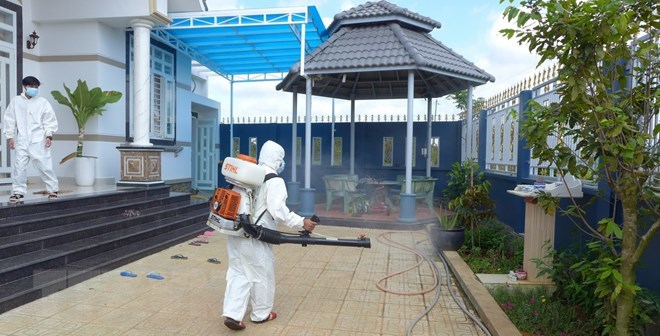 Vietnam looks to ensure full protection for people at risk of malaria with appropriate control measures. The southern province of Binh Phuong has recorded more than 1,000 malaria cases so far this year, including one fatality, according to the provincial Department of Health. The cases were mostly found in Dak O and Bu Gia Map communes in Bu Gia Map district, and Dak Nhau commune in Bu Dang district. Nearly 600 cases were reported in Bu Gia Map district alone, up 68.7 percent year-on-year and also the highest nationwide. Pham Van Trieu, deputy director of Bu Gia Map district’s medical centre, explained that locals who reside in remote areas and near cashew and rubber forests are less aware of malaria prevention methods. Dr Ngo Hoang Long, Deputy Director of the National Institute of Malariology, Parasitology, and Entomology, said drug-resistant malaria has appeared in Binh Phuoc and may spread further, hindering anti-malaria efforts. Meanwhile, up to 88 percent of residents in Binh Phuoc are living in malaria circulation areas, he said. Vietnam has adopted a national strategy on malaria prevention and elimination for the 2011-2020 period with a vision towards 2030. It aims to ensure that everyone has better access to early diagnosis and prompt, effective treatment at public and private health facilities. The strategy also looks to ensure full protection for people at risk of malaria with appropriate control measures. Workshop exchanges experiences in developing coastal ecosystems 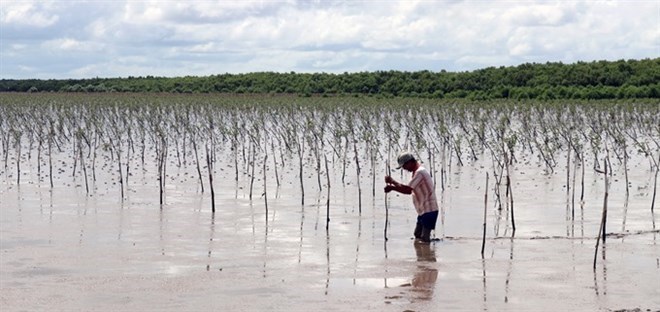 Experiences in improving the resilience of coastal ecosystems and communities were shared at a workshop in Hanoi on August 24 that reviewed the third phase of the Mangroves for the Future (MFF) initiative. Steen Christensen, coordinator of the MFF initiative, said Vietnam has carried out many mangrove forest projects well, but some are still facing difficulties in reaching local communities. To solve these problems, it is necessary to have a team of highly capable evaluation groups and to increase the connection of investors with relevant sustainable coastal management development programmes, he noted. Associate Prof. Dr. Vu Thanh Ca, head of the MFF National Coordinating Body (NCB), said marine ecosystems have a strong impact on the economy and the MFF initiative focuses on coastal ecosystems that benefit humans too. Natural resources and environmental services should be promoted to help coastal residents earn a stable income and respond to climate change, he suggested. Ca added that in Vietnam, the NCB will assist localities in developing their coastal ecosystems, for example in utilising mangrove forests as a pioneer project because of their important ecosystem benefits. The programme will also support efforts to develop and conserve littoral and river mouth zones, as well as coastal and inshore areas; devise solutions for managing these areas; improve communities’ capacity and awareness; and integrate gender equality in relevant activities. At the workshop, participants discussed the management and conservation of coastal ecosystems with the community’s participation, coastal zone management, and ways to expand the sound practices of the MFF in Vietnam. The MFF is a continental-level initiative in Asia, co-chaired by the International Union for the Conservation of Nature (IUCN) and the United Nations Development Programme (UNDP), boosting investment for the sustainable development of coastal ecosystems. The third phase of the initiative has been implemented since 2014 with 31 small projects, two medium projects, and two large projects, as well as activities supporting coastal area management policies with a view to increasing the resilience of communities that are reliant on ecosystems. Landslide-hit Kon Tum – Laos route reopens to traffic 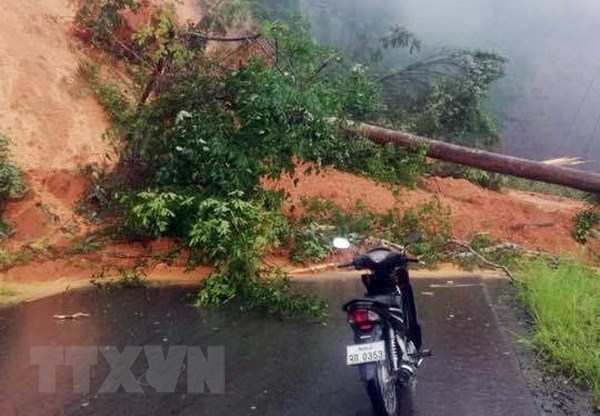 A landslide site on the route National Highway 18B, which connects the Bo Y international border gate in the Central Highlands province of Kon Tum with Laos’ Attapeu province, has recently opened to traffic after being blocked due to landslides. Earlier, downpour for several days caused landslides at 12 sites along the route, with thousands of cubic metres of earth and fallen trees blocking the way. According to Nguyen Huu Hung, Director of the Kon Tum Transport Department, said serious landslide sites have been fixed. However, the work is estimated to take four to five more days to ensure smooth traffic for the whole route. Tran Thanh Van, head of the customs department at the Bo Y international border gate, said there are lightweight vehicles travelling on the route. Container carrier trucks face many difficulties. A number of trucks carrying urgent goods containers need to be pulled by other vehicles to move through. At the border gate, security has been maintained, with vehicles arranged at parking areas waiting for their turns to cross the route. VNN |
↧
↧
Article 0
Veterans targeted in financial scams Many veterans and elderly in the central region have been tricked into buying overly expensive items after being invited to free tours. 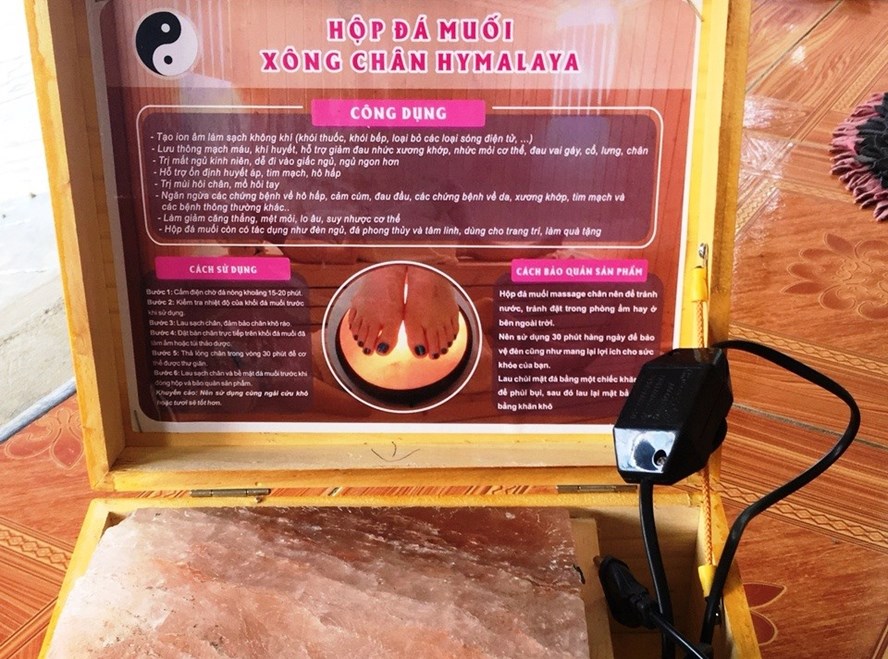 Le Thi Phien doesn't dare to use the Himalayan rock salt block Le Thi Phien from Quang Tri Province said she agreed to participate in a free tour to Hue on August 11. They were only sent to free zones at museums for about 30 minutes. After that, they were transferred to a building on Nguyen Sinh Cung Street where a group of sellers advertised their products including electric cookers, anti-bug spray and rock salt. The sellers said those products were made by disabled people so many veterans bought at least one item for support. Phien said she didn't bring enough cash to buy a VND1.9m (USD82) multi-purpose cooker. But when she told the sellers that she wouldn't buy it anymore, the sellers didn't accept and asked other people to lend her money. In the end, they were given a simple meal and sent home. Veteran Nguyen Duy Tung from Ha Tinh Province also had a similar trip to Nghe An Province. He bought a Himalayan rock salt block at the price of VND1.25m (USD54). However, once he got home, his nephew said the block actually only cost VND600,000 to VND700,000. Tung tried to call the seller and was told that the cheap ones were substandard. However, another supplier in HCM City confirmed the prices are only VND590,000 (USD25) to VND690,000 depending on the type of the rock. According to them, only the boxes that made from expensive woods with intricate carvings can cost more than VND1m. Tung said his box was plain. Nguyen Viet Dung, chairman of Veteran Association in Nghi Xuan District, said after receiving the news about free tours, they had suspected that this might be a fraud but the firm said this was their advertising method. The association also cautioned their members to be careful before buying. Hundreds of veterans in Trung Son, Gio An, Gio Hai communes and Gio Linh Town in Quang Tri have been tricked. Hoang Van Thanh, chairman of Veteran Association in Quang Tri said 500 veterans in Dong Ha City alone were scammed into buying products on the tour. Thanh said they were reviewing the total number of veterans and would ask the authorities to investigate the case. DTinews |
↧
Article 1
BUSINESS NEWS IN BRIEF 28/8 Conference seeks ways for investment promotion in Quang Binh An investment promotion conference in the central province of Quang Binh was convened on August 28, focusing on presentations of the province’s potential and investment opportunities. Present at the conference were Prime Minister Nguyen Xuan Phuc and more than 800 delegates from among the leaders of ministries and departments, along with representatives of embassies, Lao provinces, commercial banks, associations, international organizations and businesses. Participating domestic and foreign organizations and businesses, through the conference, discussed investment and trade opportunities with local authorities. The event is expected to serve as a platform for the handing over of investment registration certificates and cooperation deals to 66 projects with a combined registered capital of US$7.34 billion. Earlier, the provincial People’s Committee held a series of sideline activities, including investment promotion conferences in the Philippines and Singapore and a meeting with potential investors in Hanoi. According to Tran Tien Dung, vice chairman of the provincial People’s Committee, many investors see Quang Binh as a potential destination for their investment projects and many of which have already been underway in the locality. A great deal of local effort has been taken to introduce incentive policies so as to draw greater numbers of investors, he noted. $60 million stainless steel plant is to be constructed in Quảng Trị The central province of Quảng Trị has licensed domestic firm Việt Quang Limited Company to build a stainless steel plant with total investment of US$60 million. Late last week, local authorities investigated a site in the province’s South East Industrial Park and granted the land plot to Việt Quang. The plant will occupy 31ha of land in the industrial park located in Hải Lăng District. Local authorities asked the company to finalise their plans to issue a report soon for the construction planned to commence in the first quarter of the year 2019. Local departments of environment and natural resources, and agriculture and rural development will work closely with the company to identify the total amount of agricultural and forest land that will be lost for the plant’s construction, as well as the project’s possible impacts on agriculture and nature. Quảng Trị formed the South East Industrial Park in 2015 on a total area of 23,792ha, occupying farming land and land in the coastal protected forest in the three districts of Gio Linh, Triệu Phong and Hải Lăng. The park has remained almost entirely empty. Ghost Month no longer a real estate horror Property transactions have not been beset by the usual gloom during this year’s “Ghost Month”, reflecting changing attitudes among both local developers and home buyers. The seventh month in the lunar calendar is known as the Ghost Month in Viet Nam and some other Asian countries. It is believed to be a period of bad luck. During this month, people often avoid making important decisions like home purchases while real estate investors are also afraid of launching their products. The housing market during the Ghost Month is usually bleaker than other months of the year. But this is starting to change. Some property firms in HCM City believed that the Ghost Month has seen the highest number of transactions. Nguyẽn Nam Hièn, a representative from a real estate company in HCM City, said the seventh month in the lunar calendar traditionally has been a difficult period for many businesses. For this reason, property firms have not offered their products for sale during this month. But the month has been an opportunity for those developers which have not hesitated to launch their projects. He said that his company has had the highest housing sales during the Ghost Month in recent years in both apartment and land segments. They are offering a land project for sale in southern Dòng Nai Province’s Long Thành District. The number of successful transactions at the project has been high so far, he added. Nguyẽn Thanh Huong, general director of a real estate company in the city, said her firm has offered special promotions to home buyers during the month. For that reason, the number of property transactions has been high at the company. Huong affirmed that the Ghost Month is only a psychological factor. If businesses have a willingness to bring valuable products to customers, they can have a profitable and successful month. Le Hoàng Chau, chairman of HCM City Real Estate Association agreed, saying that the customers’ psychology in buying real estate is more open than before. The seventh month of the lunar year no longer seems to weigh on people. “People who buy estate products for investment purposes often do not care about the psychology but about opportunities. Meanwhile, property developers often launch products with good prices during the month, pushing investors to pour money into buying estate products,” Chau said. Nguyen Van Dinh, vice chairman of the Viet Nam Association of Realtors (VARs), said the market in recent years has been less affected by the tradition of avoiding the Ghost Month than in previous years. The transactions therefore were quite stable while investors are still offering housing products for sale as scheduled. VN firms told to learn from Hong Kong Vietnamese companies can learn from their Hong Kong counterparts about doing business on an international level at the “In Style Hong Kong” trade promotion next month and leverage that knowledge to expand globally, a media briefing on the event heard in HCM City on Thursday. Organised by the Hong Kong Trade Development Council (HKTDC), the fourth edition of Hong Kong’s biggest overseas trade promotion will be held in HCM City on September 20 and 21. It is the first time the event will be held in Viet Nam after earlier events in Indonesia, Thailand and Malaysia. According to Peter Wong, HKTDC regional director of Southeast Asia and South Asia, Hong Kong has many advantages such as being named the freest market in the world for 24 consecutive years by Washington DC-based think-tank Heritage Foundation, an international financial hub and located close to four key Asian markets. It is very easy to set up new businesses there and the tax system is simple without VAT and sales taxes, he said. Hong Kong has vast knowledge and experience of doing business in mainland China and other international markets, and can play the role of trade facilitator and offer the platforms for Vietnamese businesses to enter global markets. The two-day trade promotion will feature a wide range of activities including a full-day symposium on business services with a focus on cross-border logistics and creative branding and design. Tina Phan, Indochina director of HKTDC, said the symposium is expected to attract around 1,000 Vietnamese businesses. Besides, there will be an expo showcasing a wide array of branded and designer-led lifestyle products from Hong Kong companies, who will be hoping to tap into new business opportunities in Viet Nam and nearby countries. According to HKTDC, Viet Nam is Hong Kong’s largest export market among ASEAN member countries and sixth largest export market globally, with exports to the country amounting to US$10.2 billion last year. Viet Nam is Hong Kong’s 10th largest trading partner. Wong said trade between Hong Kong and Viet Nam is increasing and would expand further in future with the newly-signed Hong Kong-ASEAN Free Trade Agreement. It takes effect on January 1 next year, allowing both economies to enjoy freer trade in goods, services and investments. Wong told Viet Nam News that Viet Nam has a good record when it comes to stability compared to some of its neighbours and that is a great advantage in attracting foreign investors. The stability and commitment of a government are most important for investors, he said. “If [two] countries have the same opportunity, of course people will go to a more stable and more committed country because the risk will be lower.” But at the same time the Vietnamese Government should do more to convince investors their rights and interests would be protected, he added. Experts discuss shrimp demand Viet Nam’s supply capacity to 2025 to fulfill global shrimp demand is sufficient but the industry still faces challenges, speakers said at a conference held on Thursday in HCM City. Ho Quang Luc, former chairman of the Viet Nam Association of Seafood Exporters and Producers (VASEP), noted that Viet Nam has a large area of 700,000ha for shrimp farming. “Due to favourable weather, Vietnamese farmers can raise shrimp all year round,” he said, adding that local farmers’ skills exceed the global average. “Viet Nam also has great processing potential, with nearly 100 shrimp processing factories, generating about 500,000 tonnes of products every year,” he added. Despite its potential and support from the Government and Ministry of Agriculture and Rural Development (MARD), shrimp farmers still face poor infrastructure, low-quality shrimp breeders and high farming costs, among others. “It is necessary to have a detailed farming plan, adequate investment in infrastructure, a national parent-shrimp production programme, and strict control of the shrimp supply system,” Luc recommended. Hoang Tung, an expert at the Commonwealth Scientific and Industrial Research Organisation (CSIRO) in Australia, addressed issues surrounding the Government plan that targets all steps of the value chain and an export turnover target of US$10 billion in 2025. Tung said the Government should place emphasis on higher-quality inputs, improvement of farming and harvesting, and innovative business models. This would ensure higher productivity, lower production costs and increased domestic consumption, he said. Tung hoped that the Lower Mekong Initiative, which aims to transform the livelihoods of 10,000 households via more sustainable shrimp farming between 2019 and 2029, would be carried out efficiently. The initiative is a collaborative project between CSIRO, MARD and the Ministry of Science and Technology. Experts at the conference also spoke about the world shrimp market and the gap in supply and demand, consumption trends, competitiveness of Vietnamese shrimp in the EU market, and analysis of export competitors. This conference is part of the Viet Nam Fisheries International Exhibition 2018, being held in HCM City from Tuesday to today. Thai property giant Sansiri to offer its products in Viet Nam Thai real-estate developer Sansiri Public Company Ltd on Thursday announced an exclusive strategic partnership with Hong Kong-owned real estate agent Denzell Vietnam. Denzell opened its first Vietnamese office in HCM City on the same day. Through the tie-up Viet Nam-based clients can invest in Thailand, where Sansiri has prominent projects in resort hotspots like Hua Hin, Phuket, Pattaya and Chiang Mai and in the capital Bangkok. They would also provide after-sales services, the two said. Last year, Sansiri’s overseas revenues were worth VND6.5 trillion (US$285 million). This year, it has laid out an aggressive plan to launch 31 new projects worth VND44.2 trillion ($1.9 billion) and achieve sales of VND35 trillion ($1.5 billion). Sansiri said Viet Nam is one of the most attractive overseas markets for international businesses. HCM City is the sixth international market it has entered and offers comprehensive services. Apichart Chutrakul, its CEO, said: “With the rise of interest in Thai property in APAC and the strategic partnership with Denzell Vietnam, we want to further build on our success in HCM City as Thailand’s No1 developer. “Our partnership with Denzell Vietnam is our commitment to providing strong after-sales support to our clients through a dedicated team and to better understand our evolving customer needs. “In the long term Sansiri is well-placed to realise its vision of creating a leading portfolio and deliver next-generation living experiences to our customers.” Thailand is now considered a better option to invest due to lower taxes, average prices starting at VND3 billion ($131,000) and rental yields of 6 per cent in Bangkok city centre and 7-8 per cent in holiday resort areas. Kingston Lai, CEO of Denzell Vietnam, said the partnership gives his company exclusive access to Sansiri’s latest projects. Denzell has offices in Hong Kong, Thailand and Viet Nam. Traceability of goods key to firms The traceability of goods is crucial to firms’ production and trading activities, but public awareness of the importance of traceability remains low, said Deputy Minister of Industry and Trade Dang Hoang An during a seminar held by the Ministry of Industry and Trade (MoIT) on Friday in Ha Noi. In the traceability system, the origin-tracing stamp is regarded an important factor which identifies and tracks a product unit in the supply chain, the responsibilities of the parties involved in the production, packaging and distribution phases, An said. This helps to link data and access information throughout the supply chain, An said. In Viet Nam, product traceability is relatively new but has been implemented rapidly. The use of origin-tracing stamps is becoming more and more common, thereby enhancing consumers’ trust in products, he added. According to An, Vietnamese enterprises, especially small and medium-sized enterprises, are still unaware of the method and find it hard to develop the system of traceability for their products. Amy Guihot, an agricultural counselor from the Australian Embassy in Ha Noi, said product traceability is an important part of the Australian food management system for both domestically-consumed and export food. Therefore, for food processing enterprises, traceability must determine the origin of all inputs such as raw materials, additives, ingredients and packaging methods. Traceability also provides information such as the name and address of the suppliers, the date of delivery, shipment details, quantity of the product upon delivery, Guihot said. Dang Thi Phuong Ninh, general director of the Duyen Hai Economic Development Company (COFIDEC), said more and more agricultural products from Viet Nam were being exported to the world market. Traceability was thus an important foundation for creating a secure supply chain to gain the importers’ trust and loyalty. COFIDEC applies traceability technology for 100 per cent of its 5,000 tonnes of processed agricultural and aquatic products in 2018. Since then, COFIDEC has gradually gained trust and loyalty from the big customers in Japan and South Korea. Ninh said the fourth industrial revolution has fundamentally changed business and management models with many advanced technologies and practical applications such as cloud technology, blockchain and hardware devices and control chips. With that advantage, the application of the achievements in the 4.0 revolution in traceability will become a major trend. In the future, COFIDEC will implement an electronic traceability system for the whole supply chain to achieve sustainable development. HCM City opens 7th safe farm produce market The HCM City Department of Agriculture and Rural Development opened a safe farm produce market at the District 2 Children’s Cultural House on Friday, the seventh in the city. Each market, held on Fridays, Saturdays or Sundays, has 20-30 co-operatives and farms taking part and selling fruits and vegetables, poultry, pork and seafood. Around 500-700 people shop at each market every week, it said, adding that exhibitors also sign supply agreements with canteens and restaurants. According to the department, only products with food safety certificates such as VietGap and GlobalGap can take part. The fair organisers regularly check the quality of produce and randomly test fruit and vegetable samples for plant protection residues, it said. The department opened the first market in August 2016 at Dong Ho Restaurant in District 10. The other five markets are at Le Van Tam Park in District 1; Le Thi Rieng Cultural Park in District 10; Tan Binh District Sport and Cultural Centre; Quarter 6, Street No 19, in Binh Tan District’s Binh Tri Dong B Ward; and Binh Phu Park in District 6. According to the department, the markets are meant to help producers of safe farm products market and sell their products and enable consumers to buy safe products with clear origins. Vinacomin aims to produce 41 tonnes of coal in 2019 The Viet Nam National Coal and Mineral Industries Group (Vinacomin) aims to produce and sell 41 tonnes of coal in 2019, posting a 10-15 per cent year-on-year increase. Vinacomin said the group this year planned to reach an output of 39 tonnes of coal. To reach the target, Vinacomin would review and rearrange the production ability of its member companies to make appropriate plans. This includes 34.2 million tonnes of clean coal by the year-end, up 1.32 million tonnes from last year. The group produced over 20 million tonnes of coal, including 19.3 million of clean coal, in the first seven months of the year. During that time, it has sold approximately 22 million tonnes of coal, 3.8 million tonnes more than the same period last year. It also fired or laid off around 3,000 labourers over the same period. Vinacomin said it would increase ownership rate at its four member companies including Cao Son, Coc Sau, Ha Tu and Mong Duong to prepare for consolidation of some pit coal mines in 2019-20. The group said it has implemented a restructuring project for the 2017-20 period. It completed consolidation of two mining construction companies 1 and 2 into the TKV Mining Construction Company, merging Hong Thai Coal Company into Uong Bi Coal Company and Hon Gai Logistics Company into Hon Gai Coal Company. The group has implemented the first step to restructure labour and assets to merge the Red River Delta Coal Management Project into the Institute of Mining Science and Technology. It would also privatise two member companies, divest capital at six other companies and sell shares at another six units. It submitted a plan to the Ministry of Industry and Trade for the parent company’s privatisation following a roadmap approved by the PM. Trade Promotion Centre for Agriculture accused of overcharging A company in the northern province of Bac Giang has accused the Vietnam Trade Promotion Centre for Agriculture of overcharging exhibition stall rental and electricity fees for its stalls. Giang Son Joint Stock Company in Yen The District, Bac Giang Province, has sent a petition about the case to Prime Minister Nguyen Xuan Phuc and related ministries and agencies. According to the company, the centre located in Hanoi applied the stall rental fee of VND100,000 (USD4.54) per square metre in the 2012 - 2016 period. During the time, the electricity fee was VND4,600/kWh. In 2017, these fees were suddenly increased sharply to VND200,000-240,000 (USD9.09-10.90) per square metre. The firm’s director Nguyen Thi Tam said the firm had to pay around VND7 million (USD318.18) for the stall and store rental per month in 2017. The fees have been continued this year, meaning that the company has to pay an additional fee of VND39 million (USD1,772) for the whole year compared to the level of 2017. Due to the high fees, the company’s fee payment has been late, so, the centre has cut electricity for its stalls and stores, spoiling products. Giang Son JS Company estimated losses of around VND100 million (USD4,545) due to the damaged products. Meanwhile, some rooms at the centre have been leased to services which are not related to the agricultural sector such as yoga. Speaking to DTiNews, Hoang Van Du, the centre deputy director denied what the company said in the petition. He added that over the past two years, Giang Son JS Company often failed to meet their contractual obligations signed with the centre. The firm also violated food safety regulations. The centre contacted Giang Son JS Company many times for payment, but the company ignored this. To date, the company still owed the centre VND28.4 million (USD1,272). Du highlighted that the centre used a vacant room for a yoga class which is for its staff members. Rice exporters told to meet Chinese quality requirements as shipments slump 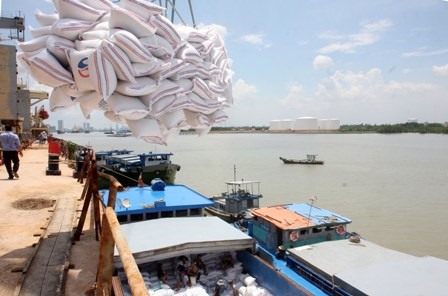 Rice bags are loaded into a vessel at a port in HCM City for export. To sustain their rice exports to China, a large buyer, Vietnamese firms need to focus on meeting food safety and traceability requirements and carry on official instead of border trade, according to experts. According to the Department of Agro-product Processing and Market Development, Viet Nam’s rice exports were estimated at 3.9 million tonnes worth nearly US$2 billion over the first seven months of the year, a year-on-year increase of 12.2 per cent and 29.2 per cent. China continued to be the biggest importer of Vietnamese rice, accounting for 26.8 per cent, followed by Indonesia (18.2 per cent) and the Philippines (10.4 per cent). But exports to China were down 27.7 per cent in volume and 14.6 per cent in value from the same period last year. A total of 891,000 tonnes were shipped, with sticky rice accounting for a large share. In July China raised import tariffs on rice from ASEAN member countries, including to 50 per cent on sticky rice from the earlier 5 per cent. As a result Viet Nam’s exports dropped sharply. Another reason was stricter control by Chinese agencies, which raised the plant quarantine standards for exporters. Nguyen Thi Mai Linh of the Ministry of Industry and Trade’s import-export department said exporters met with certain difficulties after China adjusted tariffs on ASEAN rice. Enterprises said they do not have many new contracts for sticky rice and are mainly fulfilling earlier contracts. They have called on farmers to reduce the cultivation of sticky rice and switch to other varieties to avoid too much dependence on China. Currently, more than 80 per cent of sticky rice goes to China. A spokesperson for a rice export firm said Viet Nam and China share a long-border and so for a long time rice was largely exported through the border. But the Chinese side now wants to control border trade to better manage quality and avoid tax losses and has instructed importers to do official imports, he said. Therefore, to keep this market, Vietnamese firms need to ensure compliance with China’s food safety and traceability requirements, he said. But they should diversify their markets to avoid too much reliance on that market, he said. To help promote exports to China, the Ministry of Industry and Trade has invited 15 rice importers from China to discuss direct exports. Start-up funding mechanism discussed A workshop under the Vietnam-Finland Innovation Partnership Programme Phase 2 (IPP2) was held in Hanoi on August 24 to discuss funding and finance for creative start-ups. Sharing experiences from Finland, Marko Saarinen, a representative from the Finnish Embassy, said that Finland has created platforms for open and transparent exchanges to promote partnerships with stakeholders. Accordingly, the IPP programme has contributed to supporting policies for small and medium-sized businesses and start-up ecosystems. IPP currently focuses on building resources for programmes, universities, businesses and entrepreneurs in the field of start-up development. Jouko Ahvenainen, an international expert in the IPP2 programme, said that there are many business models and it is difficult to call for initial capital and gain profit immediately. There are many new funding models and technology to support innovative start-ups, and Vietnam had good opportunities to use new technology and models, he said. There are also various financial support sources such as personal sponsors, venture capital funds and fund management companies, he added. However, the financial aid agencies still lack information, which made it difficult to assess the disbursement, he said. Moreover, it is difficult for banks to decide on a loan because they do not have enough information about the businesses. “Therefore, the market needs transparent data sets to reduce risks for investors as risk assessment was important in the decision-making process," said Ahvenainen. Phan Hoang Lan, leader of the IPP2 research group, said that the most important characteristics for investment in start-ups are the risk factor and the unpredictability of investment. Among 10 investment businesses, nine might ‘die’ and nobody is able to predict which businesses will succeed, she said. “Therefore, those who invest in start-ups must be very understanding about starting a business and having money to invest,” said Lan. Therefore, it was necessary to have policies to support and share risks for investors including tax and reciprocal investment policies, Lan said. Lan also said start-up supporting organisations should support businesses at the initial stages and take risks. Secondly, administrative procedures should be minimised for start-ups. The IPP2 programme is a development cooperation programme between the two governments of Vietnam and Finland, implemented by the Vietnamese Ministry of Science and Technology and the Finnish Ministry of Foreign Affairs in the 2014-18 period with a total budget of 11 million EUR (12.7 million USD). Seminar discusses agricultural development alongside renewable energy A seminar discussing the potential of solar power development in tandem with sustainable agriculture production took place in the Mekong Delta city of Can Tho on August 24. Co-hosted by the Vietnam Sustainable Energy Alliance, the Climate Change Working Group (CCWG), the Green Innovation and Development Centre (GreenID), and Can Tho University (CTU), the event aimed to work out solutions in promoting the development of renewable energy in Vietnam. Antoine Vander Elst from the European Union (EU) delegation to Vietnam said renewable energy is now more reliable and cheaper than fossil fuel power, contributing to strengthening energy security and creating more jobs. According to him, there are 2.2 million people working in the field of renewable energy in the EU, spanning 90,000 businesses across 28 countries. He said with a tropical climate, Vietnam has advantages in developing solar and wind power which will improve the competitiveness of agriculture. Dr. Nguyen Quoc Khanh from GreenID said the use of solar power in food production on a land site will help double revenue, citing that it is similar to the glasshouse model with roofs used for collecting solar power and the land for cultivation and farming, thus saving energy. When the energy collected reaches the point of excess, it could be sold to the national grid to generate a stable income, he said. Assoc. Prof Dr. Le Anh Tuan, Deputy Director of the CTU’s Research Institute for Climate Change, mentioned several sustainable agriculture models using renewable energy which are underway in the Mekong Delta, including the collection and use of solar power for irrigation and automatic pesticide spraying. In the southernmost province of Ca Mau, farmers are able to treat waste in shrimp ponds through a biogas process, which protects the local water environment and creates gas for daily use. In the Mekong Delta province of Dong Thap, the rice-lotus-fish-tourism model uses lighting from solar power to cut costs. Tuan suggested issuing policies and mechanisms conducive to researchers and pioneering models in order to fully tap into the benefits of renewable energy. Quang Ninh strives to remain top position in PCI ranking The northeastern province of Quang Ninh is sparing no efforts to maintain its top position in the provincial competitiveness index (PCI), said Chairman of the provincial People’s Committee Nguyen Duc Long. Last year, Quang Ninh, for the first time ever, became the most competitive province in the country, topping Vietnam’s PCI 2017, with 70.7 out of 100 points. Long asked provincial departments, sectors, and localities to avoid idleness just because of the results achieved, and instead continue with reforms. He urged that they stay vigilant, finding innovative solutions to achieve the targets set by the Government’s resolution on continuing the implementation of main tasks and measures to improve the business environment and the provincial People’s Committee’s plan issued on April 17. Related agencies and Vice Chairpersons of the provincial People’s Committee should find measures to improve indexes, particularly in terms of transparency, informal expenses, legal institutions, and land access. He urged public centres at all levels to solve administrative procedures as soon as possible. Localities, departments, and sectors were also requested to make information connections to the provincial e-portal to raise publicity and transparency. The leader asked the provincial Business Association to coordinate well with departments, sectors, and localities in implementing measures to improve the business and investment environment and competitiveness, and in supporting startup enterprises and forming industrial clusters. Taking ideas from the PCI, the province launched the Department and District Competitiveness Index (DDCI) in 2015. The index measures the efficiency of economic management of the local government through eight criteria, including transparency, proactivity of leadership, time costs of regulatory compliance, informal charges, policy bias, legal institutions, business support and accountability of leaders. The DDCI was officially implemented in 21 departments and 14 localities across the province in 2016, according to deputy head of the provincial board for investment promotion and support Vu Thi Kim Chi. The programme helps the province identify shortcomings and improve the quality of economic governance of local authorities and departments, Chi said, adding that this creates competition on management quality and aids administrative reform. Furthermore, the DDCI creates a widespread, transparent and reliable channel for businesses and investors to give feedback to local authorities and increases the role and responsibility of the business community in building a local management apparatus. After two years of implementation, the programme has brought positive outcomes. Businesses are required to build annual action programmes on improving investment environment, the PCI and DDCI. The province only attracted 3.39 billion USD in the 15 years from 1986 to 2011. However, foreign direct investment (FDI) poured into Quang Ninh in 2012-2017 exceeded 3 billion USD, raising total foreign investment to the locality to more than 6 billion USD, Chi said. The presence of major investors at home and abroad such as the US, Japan, Singapore and Thailand has created strong momentum for the local economy, she added. The province has taken measures to reform administrative procedures, reduce production costs for businesses and create an environment for them to enhance competitiveness. Every three months, local authorities meet with enterprises to note their opinions and remove bottlenecks. In 2017, the province piloted the implementation of social network analysis in 16 agencies, expanding interaction with the business community, according to Chi. Speaking at a recent conference on evaluating the local Public Administrative Reform (PAR Index), Satisfaction Index of Public Administration Services (SIPAS), and Public Administration Performance Index (PAPI) in 2017, Secretary of the provincial Party Committee Nguyen Van Doc said the province will further its efforts to hasten administrative reform in 2018. “Quang Ninh will continuously work to maintain its position among the top performers of those indexes,” he said. He instructed sectors and branches to press ahead with administrative procedure reforms, enhance the efficiency of public administrative centres, cut unnecessary administrative procedures, complete e-Government apparatus and pay provide training for public servants. The PCI report has been produced annually since 2005 to assess the ease of doing business, economic governance and administrative reform efforts by provinces and cities in Vietnam. The 2017 PCI Report is the 13th iteration and is based on responses from 12,000 enterprises, including more than 10,200 domestic private enterprises from 63 cities and provinces and nearly 1,800 foreign invested enterprises in 21 provinces nationwide. According to the report, Quang Ninh was followed closely by central Da Nang city (70.1 points). The Mekong Delta province of Dong Thap ranked third with 68.8 points. VN’s trade with India sees strong growth Two way trade between Viet Nam and India experienced a significant yearly increase of 50 per cent to US$6.36 billion over the past seven months of this year, statistics from the General Department of Customs revealed. The positive bilateral trade was mainly due to Vietnamese exports at $3.92 billion, a year-on-year increase of 96 per cent, according to the data. Among major staples, machinery, equipment and parts recorded the strongest turnover with $1.23 billion, up 590 per cent year-on-year and contributing 32 per cent of Viet Nam’s total exports to India. Handsets and components came next at $470 million, up 72 per cent, followed by computers, electronics and parts at $380 million, up 26 per cent, and metal and metal-made products at $353 million, up 40 per cent. Others recording impressive export growth were bamboo-made goods at 1,470 per cent; iron and steel products at 270 per cent; means of transport and components at 170 per cent and products from plastic and rubber at 150 per cent and 100 per cent, respectively. From January to June, Viet Nam imported $2.44 billion worth of goods from India, surging 9.2 per cent over the same period last year, with cotton taking the lead at $320 million, up 44 per cent. Viet Nam resumed its import of maize from India, worth $23 million, a hike of 1,800 per cent while spending $145 million on importing animal feed and raw materials from the market, an increase of 29 per cent. In the period, the Southeast Asian nation also upped its imports of several other goods from India such as metal (up 180 per cent); automobile components (130 per cent); plastic materials (up 110 per cent) and ore and other minerals (75 per cent). Most notably, Viet Nam posted a trade surplus of $1.48 billion with India in the seven-month period. The two countries will explore substantive and practical measures to achieve the bilateral trade target of $15 billion by 2020, according to a joint statement issued during the official trip by Vietnamese President Tran Dai Quang to India in May. “In order to realise potential to both increase the volume of trade and diversify its composition, the two countries’ leaders requested the relevant ministries and agencies on both sides to explore substantive and practical measures to achieve the target including but not limited to utilising established mechanisms, strengthening exchanges of trade delegations, business-to-business contacts, regular organisation of trade fairs and events,” the joint statement said. As per the statement, both sides urged leaders of businesses and industries to explore new trade and investment opportunities in identified priority areas of co-operation. Finland, VN discuss start-up funding Viet Nam is becoming an attractive destination for foreign investors in innovative and creative start-ups, attendees said at a workshop in Ha Noi on Friday. The workshop, under the Viet Nam-Finland Innovation Partnership Programme Phase 2 (IPP2), discussed funding and finance for start-ups. Sharing experiences from Finland, Marko Saarinen, a representative from the Embassy of Finland, said that Finland had created platforms for open and transparent exchanges to promote partnerships with stakeholders. Accordingly, the IPP programme has contributed to supporting policies for small and medium-sized businesses and start-up ecosystems. IPP currently focuses on building resources for programmes, universities, businesses and entrepreneurs in the field of start-up development. Jouko Ahvenainen, an international expert in the IPP2 programme, said that there were many business models and it was difficult to call for initial capital and gain profit immediately. There were many new funding models and technology to support innovative start-ups, and Viet Nam had good opportunities to use new technology and models, he said. There were also various financial support sources such as personal sponsors, venture capital funds and fund management companies, he added. However, the financial aid agencies still lack information, which made it difficult to assess the disbursement, he said. Moreover, it was difficult for banks to decide on a loan because they do not have enough information about the businesses. “Therefore, the market needs transparent data sets to reduce risks for investors as risk assessment was important in the decision-making process," said Ahvenainen. Phan Hoang Lan, leader of the IPP2 research group, said that the most important characteristics for investment in start-ups was the risk factor and the unpredictability of investment. Among 10 investment businesses, nine might ‘die’ and nobody is able to predict which businesses will succeed, she said. “Therefore, those who invest in start-ups must be very understanding about starting a business and having money to invest,” said Lan. Therefore, it was necessary to have policies to support and share risks for investors including tax and reciprocal investment policies, Lan said. Lan also said start-up supporting organisations should support businesses at the initial stages and take risks. Secondly, administrative procedures should be minimised for start-ups. Te IPP2 programme is a development co-operation programme between the two governments of Viet Nam and Finland, implemented by the Vietnamese Ministry of Science and Technology and Finnish Ministry of Foreign Affairs in the 2014-18 period with a total budget of 11 million euros (US$12.8 million). Forum calls on VN supporting industries to get a move on Businesses in supporting industries need to further improve their functioning and establish close ties with each other and official agencies to enter multinational supply chains, delegates told a forum in HCM City on Thursday. Dinh Thi Bao Linh, deputy director of the Viet Nam Industry and Trade Information Centre, said supporting industry, which refers to making accessories, components and others used in manufacturing, has received special attention from the Government since it is the foundation for development of many other industries. Yet the rate of locally sourced parts remains modest, she said. Do Thi Thuy Huong, a member of the executive board of the Viet Nam Electronic Industries Association (VEIA), said the electronics industry has developed strongly in recent years with exports rising every year. The development of the sector is mainly thanks to the large investments made by multinational companies, especially from Korea and Japan, in the production of both final products and components, she said. Local firms have a small market share, she said. Le Nguyen Duy Oanh, deputy director of the HCM City Centre for Supporting Industries Development, spoke about the city’s efforts to back supporting industries, including programmes to connect local suppliers with foreign-owned and local manufacturers and foreign partners. “Samsung hopes to have 50 Vietnamese suppliers by 2020, so local firms should link up and standardise their production process to participate as the Korean company’s vendors,” she said. Nguyen Duc Minh, director of Viettronics Phu Tho Hoa, spoke about his company’s experience in seeking businesses partners as well as its process of becoming a Samsung supplier. Suttisak Wilanan of Thailand-based Reed Tradex Company, one of the forum’s organisers, said: “The global industry is changing to a new era of manufacturing capabilities, the direction of markets will not be the same since the digital technologies are taking over the way we produce and consume a variety of goods.” The rising demand for integrated and advanced technologies is driving supporting industries to overhaul their manufacturing processes to catch up with the global supply chain, he said. “We see huge potential in Viet Nam, where a number of major manufacturing bases are located and where skilled engineers, technicians and workers have gathered. “What’s more, Vietnamese are precise and highly skilled, and, most importantly, perseverance is deep-rooted in their work philosophy. That is the reason I believe Viet Nam will become one of Asian’s manufacturing hubs in years to come.” The forum was held as part of pre-activities for NEPCON Vietnam, an exhibition on SMT, testing technologies, equipment, and supporting industries for electronics manufacturing to be organised next October. Held by Reed Tradex and VEIA, the forum was titled “Development of supporting industries – the foundation for the sustainable growth of Viet Nam’s electricity and electronics industry.” VNN |
↧
Article 0
Social News 28/8 Vietnamese traditional áo dài hits the runway in Thailand  Model Nguyễn Trần Huyền My, first runner-up at Miss Việt Nam 2014, starred at the áo dài (traditional long robe) fashion show on August 26 in Bangkok. Model Nguyễn Trần Huyền My, first runner-up at Miss Việt Nam 2014, took the starring role at the áo dài (traditional long robe) fashion show on Sunday in Bangkok. My works as a professional model. She also represented Việt Nam at the Miss Grand International 2017 pageant. Recently, she impressed Asian audiences with the film Bridge of Clouds shot in Myanmar. The event wrapped up the Vietnamese Goods and Tourism Week in Thailand with the participation of about 60 Vietnamese firms. Many Vietnamese products with high export potential were displayed at the event, which officially opened on August 22. This is the third time the event promoting Vietnamese goods has been organised in Thailand. This year, the Ministry of Industry and Trade co-operated with the Việt Nam Administration of Tourism to promote tourism and culture at the event. Truck crushes into crowd, killing 1, injuring 5  A motorbike was damaged after a truck crashed into a crowd of drivers on Sunday evening in central province of Quảng Ngãi. The crash killed one woman and injured five others. — Photo Facebook Người Quảng Ngãi A woman died and five people were injured after a truck crushed into them on Sunday evening in Bình Thuận Commune, Bình Sơn District in the central province of Quảng Ngãi. The members of the crowd reportedly stopped to help a young motorbike driver who was injured after he crashed into a truck stopped on National 24C running through the commune. Head of the commune’s police Bùi Minh Của said the truck had stopped on the roadside because its engine was broken. Though the driver turned on its warning signals, the young motorbike driver ran into it. Seeing the injured driver, other drivers on the road at that time stopped to help. The driver of the truck that then crashed into them fled from the scene while one of the victims died en route to the hospital. The case is under further investigation. Illegal drug trafficking chain cracked down 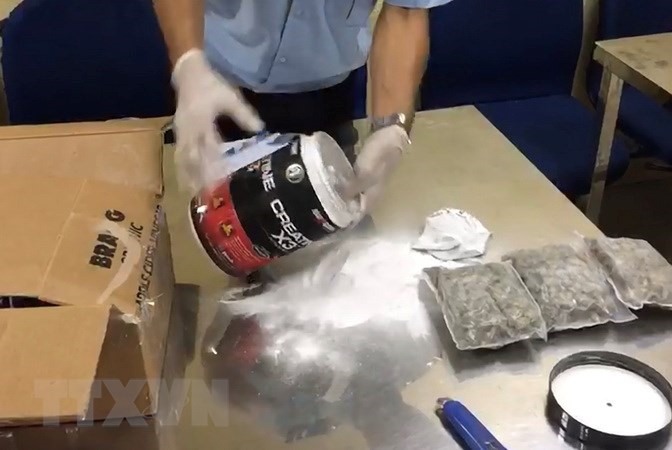 Marijuana is hidden in cans of milk powder. Tân Sơn Nhất International Aiport Customs officers on Sunday announced that they have smashed an illegal marijuana trafficking chain from the US to Việt Nam. According to the agency’s report, 57kg of dried marijuana was divided into smaller portions, hidden in different shipments and sent to Việt Nam on different flights. These shipments were shipped to four suspects living in HCM City and the south central province of Bình Định Since the beginning of 2018, Tân Sơn Nhất International Airport Customs has seized 42 shipments of the supply chain. Can Tho finalises smart-city plan 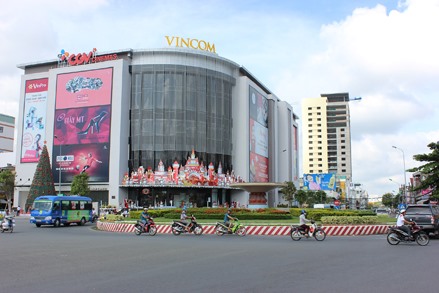 Can Tho City has completed its plan for smart-city development, which is divided into three phases, the local People’s Committee announced on Friday at a meeting in the city. Nguyen Van Hong, director of the municipal’s Department of Planning and Investment, said the department had been examining the city’s infrastructure and related issues since 2017 with the Viet Nam Post and Telecommunications Group (VNPT). The development plan’s first phase (2018–20) will focus on establishing a technological foundation for a smart city, building a digital government, and working on smart solutions for city planning. In addition, agriculture and tourism will be among the areas that will be developed first. The second phase of the plan (2021–23) will carry out solutions concurrently and build on the foundation. The third phase (2024 –25) will see the continued development of systems and solutions applied to more areas of the city, which will provide more efficient processing capability, storage and security. The city’s Department of Transport has already launched ICT applications for traffic management and services, which aims to improve drivers’ satisfaction and reduce the number of accidents. In addition, the city’s Department of Agriculture and Rural Development has been building a digital database on agricultural activities, and has also been developing geographic indicators for farmers to improve management and planning. Farmers have also been provided with tools and opportunities to connect with businesses and local government to improve product quality and their brands. Vo Thanh Thong, chairman of the People’s Committee, said that co-operation between citizens, businesses, government and other organisations would be important to successful implementation of the plan. He said that authorities should gather practical feedback and concerns from citizens and businesses, and keep them informed of progress. Showrooms and online models on smart cities could be used to educate citizens on the benefits of smart cities, he said. Thong also suggested that authorities should gather data from smart services and systems to improve forecasting ability and help decision-making. Can Tho is a centrally governed city with developing infrastructure and one of the leading areas listed on the Viet Nam ICT (Information and Communication Technology) Index, with numerous investments from domestic and foreign sources. Vietnamese athletes receive support for Asian Para Games 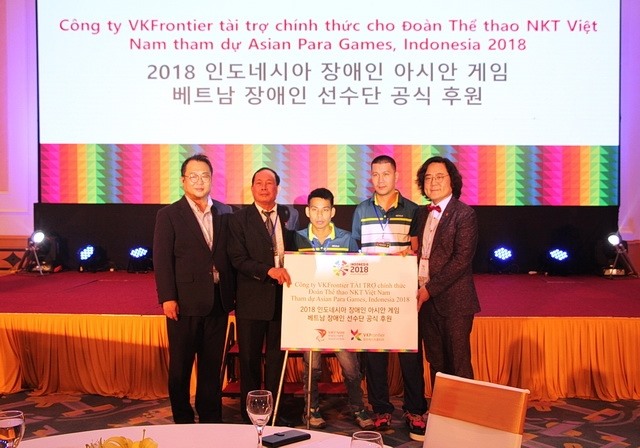 VKFrontier Co., a cosmetics company from South Korea, will sponsor Vietnamese athletes at the upcoming 2018 Asian Para Games in Indonesia. — Photo nhandan.com.vn VKFrontier Co., a cosmetics company from South Korea, has announced a sponsorhip package worth US$12,000 for Vietnamese athletes who will compete at the upcoming 2018 Asian Para Games in Indonesia in October. VKFrontier is the first company to sponsor the delegation, and a ceremony was held on August 23 to make the announcement. Speaking at the event, Vice President and General Secretary of the Vietnam Paralympic Association Vũ Thế Phiệt lauded the contributions and efforts of athletes with disabilities. The deal aimed to encourage Vietnamese athletes at the continental sporting event, said VKFrontier CEO Ahn Hee-kyoon. The Vietnamese athletes will compete in seven sports at the 2018 Asian Para Games, namely athletics, swimming, powerlifting, badminton, table tennis, chess and judo. Prominent athletes include Paralympic gold medallist powerlifter Lê Văn Công and javelin thrower Cao Ngọc Hùng. At the previous Asian Para Games in 2014, Việt Nam won nine gold, seven silver and 13 bronze medals, finishing tenth in the overall medals tally. HCM City Television launches film contest for youth  Movie star and film producer Trương Ngọc Ánh participates in the jury of HTV Short Film Awards 2018, which was launched by HCM City Television to encourage young filmmakers to develop their talent in the field. — Photo courtesy of TNA Entertainment Young amateur filmmakers aged 18-35 are eligible to participate in the first HTV Short Film Awards 2018, launched in HCM City this week. The contest includes two categories: short films and TV ads. Short films (15 minutes or less) on social issues will feature stories related to young people and their hopes and dreams. Advertising films (30 seconds) will offer messages to all kinds of communities. Stories about youth and their difficulties in life, study and love are expected to be featured. Films should include at least one poster each. Organised by HCM City Television (HTV), in co-operation with its private studio partners, the contest will give participants, particularly students at universities and colleges, and an opportunity to explore their creativity. A group of film producers, directors, and camera operators from film studios and cinematography schools, such as Trần Thị Bích Ngọc, K’Linh, Trần Hữu Tuấn and Trần Khánh Hoàng, will join the jury. Movie star and film producer Trương Ngọc Ánh will also be included. Ánh began her career in 1998 after performing in TV shows produced by HTV. She performed in dozens of films and TV series, including prize-winning productions Áo Lụa Hà Đông (The White Silk Dress) and Sài Gòn Nhật Thực (Saigon Eclipse). Ánh won the Golden Kite for Best Actress at the annual Golden Kite Awards, presented by the Việt Nam Cinematography Association in 2014. She later opened TNA Entertainments and was involved in film producing. She produced four films, including the VNĐ21 billion (US$1 million) blockbuster Sắc Đẹp Ngàn Cân, a Vietnamese version of the Korean film 200-Pound Beauty “Our jury supports contestants who tell their stories in a realistic way," said 42-year-old Ánh. Winners of HTV Short Film Awards 2018 will be chosen from 24 finalists in each category. Top prizes will be given for Best Film, Best Director, Best Picture, Best Screenplay and Best Sound Effects. Prizes worth a total of VNĐ1 billion ($42,800) will be presented. Films selected for the final round will air on HTV channels. Audiences will also vote for their favourite film. Contestants should send their work to the contest’s organising board before September 11 at http//giaithuongphimnganhtv.vn or to HCM City Television, 14 Đinh Tiên Hoàng Street, District 1. Three ex-customs officers go to jail in smuggling case 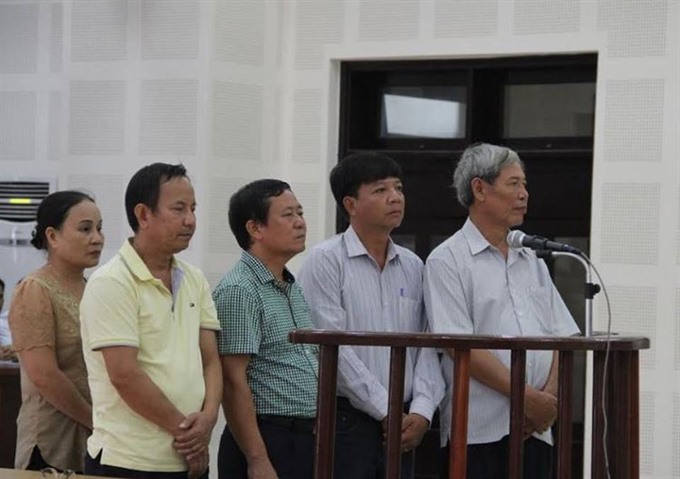 The defendants at the court. — Photo: congly.vn Three former customs officers in Đà Nẵng City were sentenced to jail on Thursday for irresponsibility that allowed smuggled timber to slip through the border. They were among five defendants in the nine-day trial relating to the trắc wood (Dalbergia cochinchinensis) smuggling case that happened at the family-run Ngọc Hưng company headquartered in Quảng Trị Province. The company’s deputy director, Trương Huy Liệu, 60, and his wife, who is also the director, Trần Thị Dung, 57, were both found guilty of smuggling. Ngọc Hưng company started importing trắc wood from Laos to Việt Nam in 2011. Liệu and Dung made up fake documents to export more than 614cu.m of the wood, worth over VNĐ63 billion (US$2.8 million), to Hong Kong, China. Liệu was sentenced to one year and 16 days behind bars while Dung received a suspended prison term of nine months. The court also found that Đỗ Lý Nhi and Lê Xuân Thành, former officers of the Quảng Trị customs department, failed to properly examine the export cargo of the Ngọc Hưng company. Meanwhile, Đỗ Danh Thắng, former head of the Đà Nẵng customs department, did not order a thorough check of the suspicious timber cargo, and hence failed to discover the smuggling case. They were all guilty of being irresponsible, causing serious consequences, the court found. Nhi and Thành each received nine months of suspended jail time while Thắng got six suspended months. The five caused tax losses to the State of VNĐ1.9 billion. More than 80 children receive free cleft lip operations 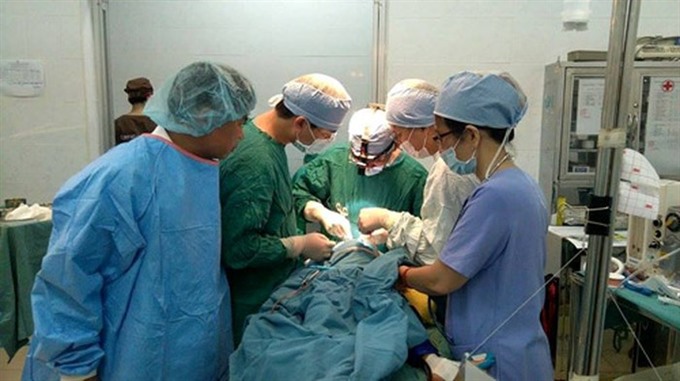 Eighty-three children with cleft lips and palates from four Central Highlands provinces of Đắk Lắk, Đắk Nông, Gia Lai and Lâm Đồng will receive operation at the Central Highlands Regional General Hospital with the support of the non-profit medial service organisation Operation Smile Việt Nam.— Photo daidoanket.vn Eighty-three children with cleft lips and palates from four Central Highlands provinces of Đắk Lắk, Đắk Nông, Gia Lai and Lâm Đồng will receive operation from today until Friday at the Central Highlands Regional General Hospital with the support of the non-profit medial service organisation Operation Smile Việt Nam. Operations will be performed by surgeons from HCM City University Medical Centre, the National Hospital of Odonto – Stomatology and the 108 Military Central Hospital. Speaking at the opening ceremony on Sunday, H’Yim Kđoh, deputy head of the provincial People’s Committee, said that since 2006, Operation Smile had provided surgeries for more than 850 children having cleft lips and palates in the province. Child patients and doctors will be supported with accommodation and transport costs to and from Đắk Lắk Province. Doctors discuss latest infertility treatments at int’l conference  Dr Sandro C. Esteves of the University of Campinas in Brazil discusses personalised strategies for Assisted Reproductive Technology (ART). Foreign and Vietnamese fertility experts on Saturday discussed infertility treatments using the latest assisted reproductive technology at a two-day international conference held in HCM City. Speaking at the “Learning Initiative for Fertility Experts” conference, Dr Sandro C. Esteves of the University of Campinas in Brazil, said that doctors at fertility centres should develop a time-limited treatment plan and choose techniques which deliver the best outcome while paying attention to the safety of the patient. He said that patients who discontinue fertility treatments often do so because of poor quality of service, the physical burden, and a lack of psychological support. Forty-five per cent to 60 per cent of patients discontinue treatment after the first completion of the In Vitro Fertilization (IVF) cycle, he added. Hong Ye, of the Institute of Genetics and Reproduction in China, said that poor ovarian response is associated with disappointingly low pregnancy rates and is one of the most challenging patient groups to manage She described the best ways to recognise reliable predictors or biomarkers of ovarian response, which can help doctors individualize treatment strategies. Dr Vương Thị Ngọc Lan, of the HCM City Medicine and Pharmacy University’s department of obstetrics and gynaecology, told Việt Nam News that Vietnamese fertility experts have updated their techniques and professional skills to help patients get pregnant in the first IVF cycle. At the centre where she works, the rate of pregnancy success is 60 per cent, with most patients becoming pregnant after two cycles. “Young people who have fertility problems should visit doctors for treatment as soon as possible because many studies show that the number and quality of eggs decline as they age,” Lan said. According to the World Health Organisation, infertility and subfertility affect a significant proportion of the world’s population. The organisation’s latest forecast showed that infertility and sterility will be the third-most serious health problem worldwide in the 21st century, after cancer and cardiovascular disease. In the Asia Pacific region, Việt Nam is among the countries with the lowest fertility rates and highest infertility rates. A study of more than 14,300 couples aged 15 to 49 in eight provinces and cities by the National Hospital of Obstetrics and Gynecology and Hà Nội University of Pharmacy in 2015 showed that the infertility rate in the country stood at 7.7 per cent, while the world rate was 6-12 per cent. The conference was held by the HCM City Society for Reproductive Medicine in co-operation with Merck which is a science and technology company in healthcare, life science and performance materials. Railway accident kills two 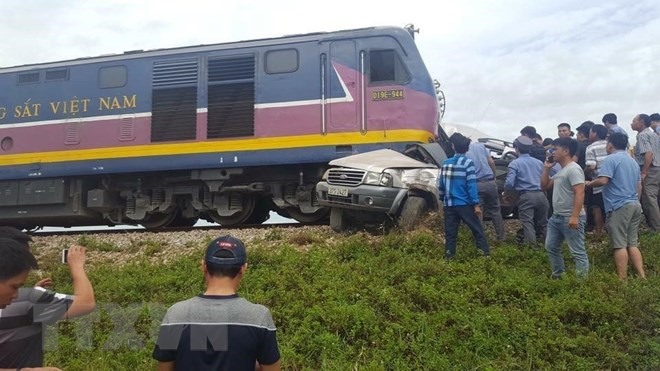 The car was totally damaged in the accident. Two people were killed in a collision between a seven-seat car and the SE8 express train at a level crossing in Hưng Mỹ Commune, Hưng Nguyên District in the Central Province of Nghệ An on Saturday. At the time of the accident, the speeding train was heading north when it hit the car and pushed it forward. The crash killed two car passengers including Bùi Ngọc Hùng, 34, and Bùi Đức Thành, 25, and severely injured two others. The level crossing where the collision happened is equipped with signs but without any barrier or guard. Nghệ An Province Police are now conducting further investigations into the case. Bình Dương Province keen to improve quality of vocational training 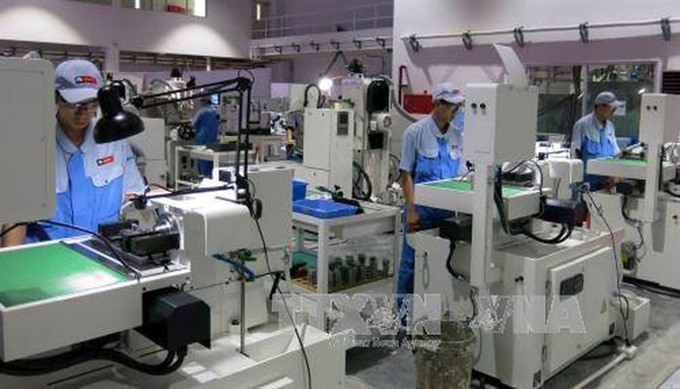 A manufacturing company in Bình Dương Province. The southern province of Bình Dương is focusing on strengthening links between vocational training schools and companies and industrial parks to improve the quality of human resources. Phạm Văn Tuyên, deputy head of the provincial Department of Labour, Invalids, and Social Affairs, told Việt Nam News Agency the department encourages every vocational training institution to collaborate with 5-15 enterprises. This is expected to help their training meet enterprises’needs, he said. The department has done a survey on companies’ labour needs for schools to improve training. The province has increased investment in equipment at vocational training schools, and those that have not yet used their equipment and funds effectively should soon take advantage of them to improve the quality of training, Tuyên said. The department has made plans to restructure the functioning of vocational schools, with those working efficiently given complete autonomy and inefficient ones shut down, he said. The province has 76 vocational training schools and centres and they enroll nearly 30,000 students a year, mostly in electrical, electronics, mechanical, and IT streams. By 2020 the rate of trained workers will be around 80 per cent, appropriate for the province’s economic transition and urbanisation and meeting the needs of investors in services and industry. The province has 28 industrial parks with more than one million workers, more than 85 per cent of whom studied up to secondary or high school. Trần Thành Trọng, general director of Sáng Ban Mai Corporation, which manufactures diesel generators of up to 2,500 KVA in Bình Dương Province, said the company has to employ untrained workers because of a human resource shortage. They are then trained for six months in operating machines, he said. Even graduates from vocational training schools have to be retrained because they lack skills, he lamented. Nguyễn Thanh Phương, deputy director of the province’s Employment Service Centre, said companies needed nearly 69,000 workers in the first half of this year, but only managed to find 58 per cent of that number. Many of them had to hire unskilled labour and train them, he said. The labour market needs trained workers in most sectors like electronics and so schools should offer students proper counselling on the virtues of vocational courses, he said. In the first six months of this year nearly 1,486 people with bachelor’s and master’s degrees were unemployed, he pointed out. Tuyên said his department would co-ordinate with the Department of Education and Training to provide counselling about vocational training to secondary school students. It would also disseminate information about vocational training, especially in rural areas, he added. Vĩnh Long organic rice plan yields good results 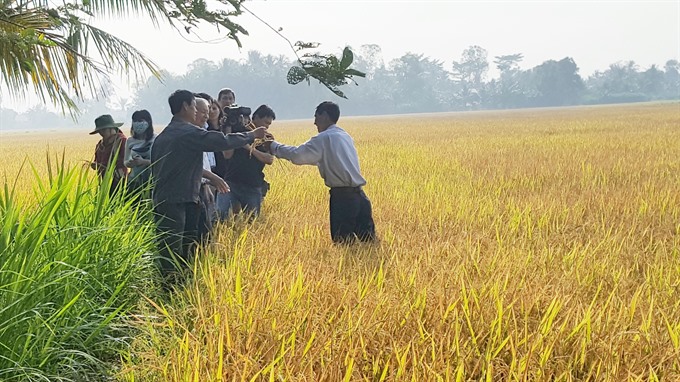 A rice field belonging to a farmer with the Tân Tiến Agriculture Co-operative. The cooperative has enjoyed encouraging results since it switched to an organic rice farming method. Rice productivity and profits have increased year after year since Tân Tiến Agricultural Co-operative in Mỹ Lộc Commune in the Mekong Delta province of Vĩnh Long switched to follow an organic farming system three years ago. Dương Văn Thành, director of the co-operative, said productivity had increased from 3.8 tonnes per hectare on average in the 2016 summer-autumn rice crop to 6.1 tonnes per hectare in the 2017-18 winter-spring crop. “Productivity has gradually gone up and so has the profit surged. Last year, we earned a profit of VNĐ40.9 million (US$1,755) per hectare per year from two rice crops, an increase of VNĐ23.4 million per hectare. This year, the profit reached VNĐ50.8 million per hectare.” In 2016, the co-operative was established as part of a pilot project that aims to bring consumers safe-quality products and enable sustainable production, with 33 members and 31ha of rice fields. After three years, the number of members has increased to 82 with 45ha of land. The project is implemented by the Saigon Union of Trading Co-operatives (Saigon Co.op), the local administration, the Tân Tiến co-operative, scientists, and several companies. Thành said farmers initially faced difficulties in shifting to organic farming because of small-scale farms and the lack of a habit to record information in farming diaries. In addition, productivity was down. “But these difficulties have been overcome gradually and with Saigon Co.op pledging to buy all the rice at higher than normal prices, farmers feel more secure about their production,” he said. Thành said in addition to gaining higher productivity and profit, compliance with organic farming methods has also brought benefits to the environment, helping soil and water sources and seafood species to gradually recover. “Farmers’ health is protected too, as they do not have to come in contact with harmful plant protection chemicals,” he said. Stable outlets Assoc. Prof Nguyễn Văn Huỳnh at Cần Thơ University said farmers in the past were often worried about finding outlets for their products. But under this model, Saigon Co.op has worked with scientists and companies on the production process and has supervised farmers to ensure strict compliance with farming methods. It has also provided input materials and has pledged to buy all products under the model, which has ended up with good results, he said. Phạm Trung Kiên, deputy general director of Saigon Co.op, said since 2016 Tân Tiến Co-operative has supplied to Saigon Co.op more than 100 tonnes of rice that follows criteria such as 100 per cent organic fertiliser; no pesticides, preservatives or bleach; 100 per cent unmixed rice; and easy traceability. The co-operative produces two kinds of rice: Jasmine and Hương Xuân (OM501) and the retailer buys all rice produced by the co-operative, he said. Saigon Co.op’s retail chains consume about nine tonnes of jasmine rice and 10 tonnes of Hương Xuân rice a month. Saigon Co.op’s participation in the safe rice production chain using an organic farming method contributes to sustainable agriculture and eliminates intermediaries, which improves profits for farmers and brings consumers safe quality products at best prices, he said. Kiên said: “Previously, farmers cultivated whatever they wanted or what was familiar, without following market demand, resulting in low efficiency.” Farmers need to change to produce what the market demands, he said. Through the co-operation, Saigon Co.op provides specific information on market demand, quality standards, and prices as well as requirements on production processes. "Farmers need to gradually increase their production level in the direction of modernisation, and enhance the application of agricultural equipment because the old production method has caused problems and low efficiency," Kiên said. Expansion Phan Hữu Minh, chairman of Tân Tiến Agricultural Co-operative, said despite some difficulties, the benefits of organic farming methods will ensure stable outlets and better environmental protection in the long term. Đoàn Văn Tài, chairman of Tấn Đạt Agricultural Production and Service Co-operative in Vũng Liêm District, which switched to organic rice farming 10 years ago, said rice cultivation in the delta, which also produces more than half of the country’s rice, is largely done in small fields with excessive chemicals and fertilisers. “To succeed in organic rice farming, farmers must persevere. The productivity level in the first crop after switching to organic farming will fall, resulting in lower earnings. “But after a certain period of time, productivity will be stable and exceed productivity from common farming methods. That is the practical experience of my co-operative,” he said. “Organic rice farming can ensure a profit that is 1.5 times higher than common farming methods.” Trương Văn Sáu, permanent deputy secretary of the provincial Party Committee, said: “Based on the initial results of the project, the province will continue to expand its scale.” It will also instruct Mỹ Lộc Commune authorities and Tân Tiến Agricultural Co-operative to bring in more farmers and disseminate information to ensure that farmers comply with the agreed farming techniques. Farmers bank on lotus during flood season 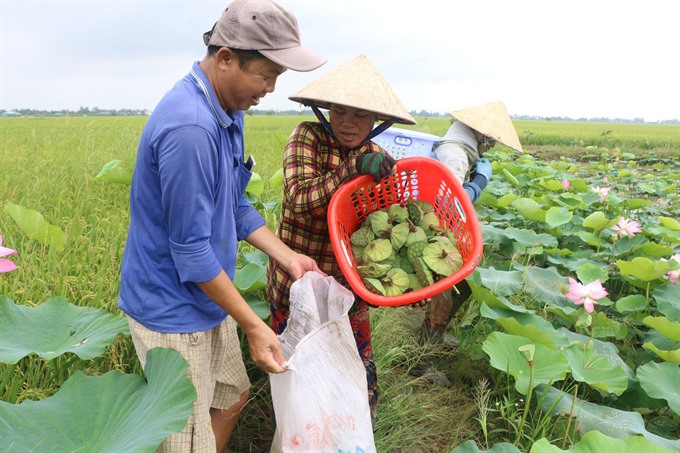 Rice farmers in Đồng Tháp Province, the largest lotus cultivation area in the Mekong Delta, have reaped high profits by planting lotus in their rice fields during the flood season. For this year’s autumn-winter rice crop, Nguyễn Văn Mười in Thanh Bình District’s Tân Mỹ Commune decided to plant lotus, and not rice. He is now harvesting his lotus field and estimates that he will receive a high profit of VNĐ50 million (US$2,200) per ha per crop, he said. The autumn-winter rice crop often has a profit of under VNĐ10 million ($440) per ha and sometimes suffers losses when rice fields are damaged by rain and flood waters. Lotus plants are easy to grow, require less tending and can flourish in alum-affected soil and flooded areas. Đồng Tháp has been one of the most flooded provinces during the delta’s annual flood season. Planting lotus in the flood season can result in profits of between VNĐ50–100 million ($2,200 – 4,400) per ha per crop, according to farmers. Farmers in the province plant lotus for harvesting mainly lotus seeds or stems. Lotus plants normally have stems harvested within 40 days of planting, while they have seed harvests after three months of planting. The harvest period lasts five to six months each crop. Farmers who plant lotus to harvest seeds can harvest 3.8 tonnes of lotus seed pods per ha per crop. Lotus seed pods are sold at a price VNĐ15,000–16,000 a kilo. Most parts of lotus plants like seeds, stems, tubers and leaves are used to make food, tea, wine, cosmetics and herbal medicines. In Đồng Tháp, lotus is planted mostly in Tháp Mười, Cao Lãnh, Tam Nông and Thanh Bình districts. Lê Văn Ngọt, who has planted 4ha of lotus in the flood season in Tháp Mười District’s Mỹ Hòa Commune, said his family also offers boat services for tourists who want to visit his lotus fields. His family also serves dishes made from parts of the lotus for tourists. The income from tourism services is two or three times higher than that from lotus, he said. Many lotus farmers in Tháp Mười District, Đồng Tháp’s largest lotus cultivation area, also offer tourism services to earn an extra income. Tháp Mười plans to keep its lotus planting area at 300ha, and will expand in the future as the plant offers higher incomes than rice, according to the district’s People’s Committee. Bình Dương Province faces shortage of schools 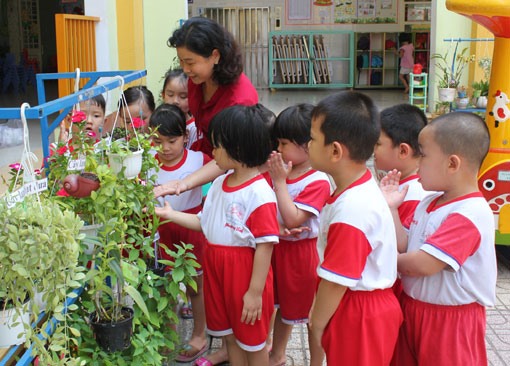 Bình Dương Province has built 13 schools for the upcoming school year. — Photo baobinhduong.vn Bình Dương Province has decided to increase the number of students per class and reduce the number of day-boarder classes due to a shortage of schools. All of the province’s kindergartens and primary schools, which usually have no more than 35 students, will have an additional 20 to 23 students per class. The southeastern province has also asked new industrial zones to set aside 15-20 per cent of land area to build schools, and has leased 72,000sq.m for 16 individuals and enterprises to build 16 private kindergartens in industrial zones. The province has a total of 454,857 students, an increase of more than 34,000 students per year. With the high increase in the number of students, the province aims to build 30 schools with more than 1,000 students per school. For the upcoming school year which will start in September, the province spent more than VNĐ1 trillion (US$42.9 million) building 13 schools with a total of 194 classrooms and repairing nine schools. Seminar on Summarising Phase 3 of Mangroves for the Future 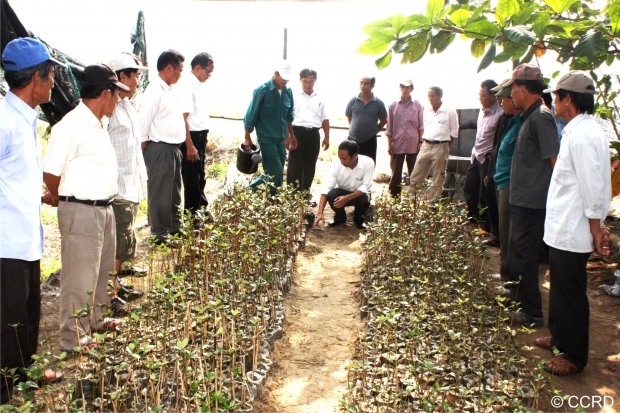 A mangrove nursery established by the local fishing association in Hải Phòng City. — Photo Courtesy of MFF Việt Nam An environmental seminar themed Mangroves for the Future: Improving the Endurance Power of Ecosystem and Coastal Community – Sharing Knowledge And Experiences was held on August 24 in Thạch Thất District. The seminar was co-organised by the International Union for Conservation of Nature (IUCN) and the United Nations Development Programme Việt Nam (UNDP). The seminar was held to summarise Phase 3, which included results and lessons learned during Mangroves for the Future (MFF), a partner-led initiative co-chaired by IUCN and UNDP to promote investment in coastal ecosystem conservation for sustainable development. Following Phase 1 and 2, Phase 3 has been deployed in Việt Nam since the beginning of 2015. Over 30 projects focused on the implementation of MFF Việt Nam on long-term sustainable coastal ecosystem management like climate change adaptation and mitigation, disaster risk reduction, ecosystem health, development of sustainable livelihoods, and the active engagement of the private sector in developing sustainable business pratices were briefly summarised at the seminar. Doctor Vũ Thanh Ca, head of the Việt Nam National Co-ordinating Centre, said the MFF needed three solutions to develop the eco-system in Việt Nam: “We need natural resources, finance and loans to help local people live a better life, as well as providing support on policies and laws. We also need to educate fishermen so that they would no longer exhaust our sea resources or use explosives.” Lê Vĩnh Thuận, head of the Chàm Islands Sea Reserve Management Board, said the participation of the local community in restoring and managing the coral reef was vital. “Fisherman union is significant to protecting the coral reef around the islands.” Dương Ngọc Phước from the Research and Training Centre for Community Development (RTCCD) said it was important to raise people’s awareness of protecting and preserving the mangrove system in Việt Nam. “The awareness of local people is still low, so we need to educate them and issue clear and transparent regulations between individuals and local authorities. We also need to understand the mangroves and the coastal ecosystem for management purposes.” Besides mangroves, MFF Việt Nam looks at all types of coastal ecosystems, like coral reefs, estuaries, lagoons, sandy beaches, sea grasses and wetlands. After the seminar, it will focus on building ecosystem-dependent coastal communities by promoting nature-based solutions to protect and preserve the mangrove forests and other types of coastal vegetation. Over 110 cyclists joins in mountain bike race exploring Lung Po More than 110 cyclist from nine cities and provinces nationwide participated in a mountain bike race exploring Lung Po, where the Red River flows into Vietnam, on August 25, running across 38 kilometres of slopes along the Red River upstream in Bat Xat district in the northern mountainous province of Lao Cai. The sporting event aimed to mark the 78th anniversary of the National Day (September 2) and the 60th anniversary of Uncle Ho’s visit to Lao Cai (September 23, 1958-2018). It was part of the “Bat Xat Autumn Festival” which sought to promote the tourism potential and cultural identities of the 14 ethnic minority groups in the mountainous and border district of Bat Xat. In addition to biking, the athletes and tourists had a chance to experience the ecological tourism and cultural features of the ethnic communities in Bat Xat, as well as exploring the beauty of Lung Po, a border land in Lao Cai province. At the closing ceremony, the organisers held a flag flying ritual at the Lung Po Flag Pole, while presenting six sets of individual prizes and six sets of team prizes to the participants in the race. 22-year-old Dinh Van Linh, from the Bat Xat cycling club, was the first to complete the race in a time of 1:30:55. The best female performer was 19-year-old Khong Thi Huong from Vinh Phuc province’s Vinh Yen city cycling club, with a time of 1:43:33. Poor families receive breeding cows in Quảng Ngãi Province 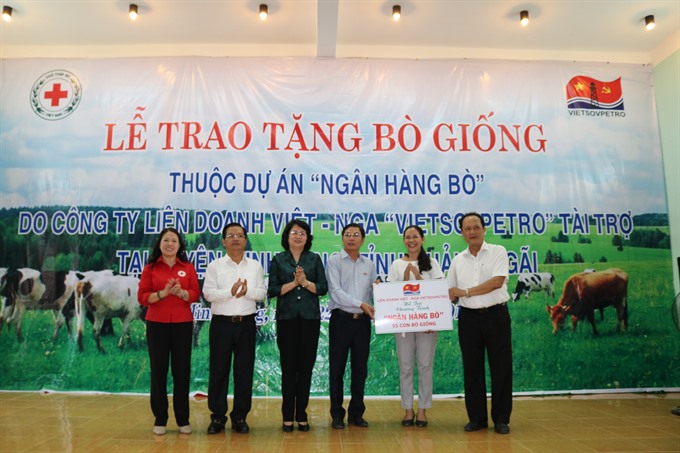 Vice President Đặng Thị Ngọc Thịnh hands over breeding cows to poor families in Quảng Ngãi Province. — Photo courtesy of Việt Nam Red Cross The Việt Nam Red Cross Society (VNRC) in collaboration with the Việt Nam-Russia oil and gas exploration joint venture (Vietsovpetro) handed over 55 breeding cows to poor families in Thanh An Commune, Minh Long District of Quảng Ngãi Province last week. The donation is part of the society’s Cow Bank project to help poor families lift their incomes and escape from poverty across the country. Previously, the society also provided 35 breeding cows to poor households in Bắc Kạn and Tuyên Quang provinces. In 2018, the Vietsovpetro will donate VNĐ1 billion (US$42,500) to support the effort to buy breeding cows for the poor. “For poor families, receiving a breeding cow is not only a big asset but also a factor that can aid the escape from poverty,” said VNRC President Nguyễn Thị Xuân Thu. “The project is a source of mobile credit loans that helps poor families overcome difficulties while encouraging new rural development schemes,” added Thu. Besides receiving a breeding cow worth VNĐ10 million ($425), households will be trained on cow breeding techniques through the new rural development programme. Established in 2010, the cow bank project has provided 24,000 breeding cows, helping thousands of households escape from poverty. VNN |
↧
Article 0
The foreign ‘big guys’ behind Vietnam’s online markets The owners of Shopee, Lazada and Tiki, the best known e-commerce websites in Vietnam, all are foreigners.  Jack Ma, president of Chinese Alibaba Group, once compared Vietnam’s e-commerce to a gold mine. The billionaire has become one of the first ‘miners’. In April 2016, Alibaba spent $1 billion to acquire 51 percent of shares of Lazada, which is considered Southeast Asia’s Amazon. In June 2017, Alibaba poured $1 billion more into the website, raising its ownership ratio to 83 percent in the startup valued at $3.15 billion. Another big e-commerce group from China, JD.com, also joined the Vietnamese market in late 2017 when injecting money into Vietnam’s Tiki, becoming one of the biggest investors. JD did not reveal the amount of money it has poured into Tiki. However, at an event, the representative of Tiki said Tiki had received $50 million to scale up its business.
Shopee is another e-commerce firm, with a part of its capital from China. Shopee is a subsidiary of SEA, headquartered in Singapore, the first technology firm in Southeast Asia that had an IPO on NYSE, raising $884 million worth of funds. One of the biggest shareholders of SEA is Tencent, the conglomerate with the total capitalization value exceeding $500 billion, or higher than that of the giant Facebook. As such, three Chinese technology giants in Vietnam compete with players from South Korea and Japan. With M&A deals, they have quickly penetrated the Vietnamese market but do not have to spend time building brands. The real goal of the conglomerates is the entire vast Southeast Asia market with 640 million people and GDP of $2.6 trillion. The presence of foreign giants has raised the concern that Vietnam may lose the online retail market to foreign hands. Vu Vinh Phu, an expert in trade, warned that Vietnam’s e-commerce market, like the traditional retail market, is being controlled by foreigners. Phu warned that the presence of Chinese e-commerce firms in Vietnam will clear the way for Chinese products to flood Vietnam which will badly affect domestic production. Pham Van Trong, an e-commerce expert, also admitted that the appearance of foreign big players, especially Chinese, has really put pressure on Vietnam’s e-commerce market. However, Tran Trong Tuyen, secretary general of the Vietnam E-commerce Association (Vecom), said there was no need to be too worried about foreign players. Tuyen said Vietnamese e-commerce floors are also backed by large groups. Adayroi, for example, is backed by Vingroup, while Sendo by FPT. Both Vingroup and FPT are powerful corporations which are suitable matches to foreign giants. VNN |
↧
↧
Article 1
BUSINESS NEWS IN BRIEF 30/8 Vietnam Print Pack & Foodtech 2018 opens in HCM City The Vietnam Print Pack Foodtech 2018 Expo opened at the Saigon Exhibition and Conference Centre in District 7 of Ho Chi Minh City on August 29, drawing more than 380 enterprises from 11 countries and territories including Vietnam, Australia, Canada, Germany, and Japan. The annual international packaging and printing industry event has 500 booths displaying various products and advanced printing and packaging technologies, along with the latest accessories and equipment in food packaging and processing. The exhibition drew many big names in the industry such as Trung My A of Vietnam, AEC Machinery from the Republic of Korea, and Uchida Yoko Global from Japan. Bui Thi Thanh An, Vice Director of the Vietnam Trade Promotion Agency under the Ministry of Industry and Trade, said that after 17 years, the Vietnam Print Pack Foodtech 2018 has become a popular event for both domestic and foreign enterprises, contributing to greater connectivity and giving a chance for importers to access the Vietnamese market. An industrial seminar will also be held to introduce 3D printing technology and its application in the Vietnamese printing industry. The Vietnam Print Pack Foodtech 2017 showcased 300 exhibitors from 11 countries and regions with 480 booths, attracting a total of 14,732 visitors. E-commerce key for farm exporters 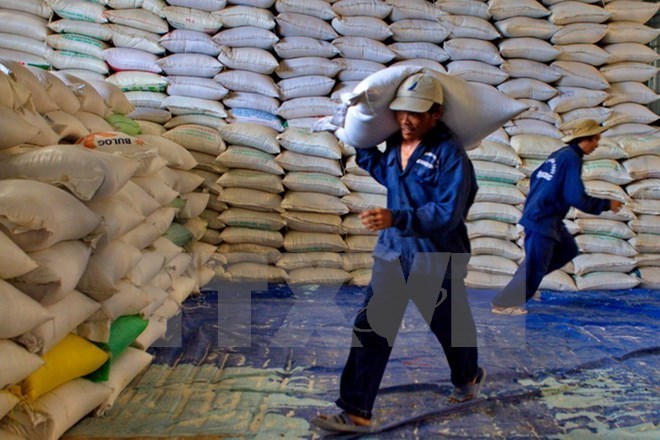 Vietnamese enterprises should take advantage of e-commerce development to boost exports of farm produce to China, experts said at a meeting on Sunday in HCM City. Wen Xi Chen, economic counselor at the Chinese Consulate General in the city, said Vietnamese enterprises should cooperate with well-known Chinese e-commerce enterprises to open online stores of high-quality farm produce for export to China. While e-commerce has narrowed the production and consumption gap, and extended consumer markets, traditional sale channels have not updated market information regularly, he said. To develop e-commerce for agricultural products, logistics service, traceability and human resources should ensure product quality, he added. Nguyen Hoang Anh, member of the Advisory Council for Reform, who is also vice president of the Digital Agriculture Association (DAA) Viet Nam, said China remained a major market for agricultural products exported from Viet Nam due to similarity of cuisine, culture and geographical proximity. In 2017, China accounted for 76 per cent of US$3.5 billion worth of fruit and vegetables exports to the country. “Cuisine plays a major role in the life of Chinese, who like eating, know how to eat, and eat well,” Chen said. China in recent years has become the world’s largest importer of agricultural products, accounting for one-tenth of global trade in agricultural products, with an annual average import growth rate of 8.8 per cent. Experts agreed that Vietnamese enterprises need to pay attention to consumer habits and preferences of the Chinese, and expand sales in this huge market. However, exports of agricultural products to the Chinese market has become tougher due to higher quality requirements. Exports have been unstable, mostly based on unofficial channels of MSMEs (micro- and small- and medium-sized enterprises) without attention to traceability and branding of the products. In addition, exports are often stuck at border gates, causing prices to fall. Cooperation between the two sides has not been as effective as expected, as enterprises from both countries have not kept their contracts. In addition, agricultural production in Viet Nam has small scale with unstable product quality and low competitiveness. Vietnamese exporters have not exploited the market, with most Chinese dealers having to visit Viet Nam to source products. Viet Nam also lacks long-term strategies for building brand names, while Chinese consumers, especially in big cities, do not have a deep impression of Viet Nam’s agricultural products. “Vietnamese assume China is a densely populated country and that consumers are not demanding of product quality. The reality is their demand has increased significantly,” Chen said. Vu Tien Hung, head of the Viet Nam Trade Promotion Office in Hangzhou, China, said, “Most Vietnamese farm produce exporters lack information about the Chinese market, but few businesses look to the trade offices to seek information, even though it’s provided for free.” To fully exploit the market, Chen said State agencies must study the market and grasp the development trends. They should disseminate agricultural policy guidelines for exporters with more attention being paid to market demand. In addition, agencies should work with agencies such as customs and quarantine authorities of the concerned countries to create favourable conditions for Vietnamese exporters. The role of financial and credit institutions in sharing risks with farmers in production must also be emphasised. Advanced processing technology should be used in production as well. Nguyen Quoc Toan, director of the Department of Agro-product Processing and Market Development under the Ministry of Agriculture and Rural Development, said to boost exports to China, Vietnamese exporters must meet new standards, requirements, and consumer tastes of the market. They should also focus on packaging and processing to increase added value for the products. Exports must be promoted via the main official channels, requiring Viet Nam and China to improve bilateral trade policies for mutual benefit. There should be close coordination between ministries, embassies, and trade counselors in updating market information and removing obstacles for Vietnamese exporters between the two countries. Thai group Sansiri officially enters Vietnamese property market Sansiri Group, one of the leading real estate companies in Thailand, officially entered the Vietnamese market and announced a strategic partnership with real estate distributor Denzell. Along with this announcement, Sansiri's top projects at the most attractive resorts in Thailand including Hua Hin, Phuket, Pattaya, Chiang Mai, and Bangkok will be brokered by Denzell in its first high-end sales gallery in Ho Chi Minh City. According to Apichart Chutrakul, CEO of Sansiri Group, Ho Chi Minh City is a potential real estate hub with a fairly balanced market outlook, while Vietnam is still one of the top attractions of international businesses. “Successfully launching the sales galleries in key markets such as China, Singapore, and Hong Kong, Ho Chi Minh City is the Sansiri’s sixth market. This is an opportunity for Sansiri to strengthen its presence and provide a full service experience for its customers,” Chutrakul said. Kingston Lai, managing director of Denzell Vietnam, said that Denzell is now the only unit in Vietnam authorised to provide Sansiri real estate projects. “Vietnamese buyers can now access the latest Sansiri projects on the same day as they are launched in other international markets, such as Hong Kong, China, and Singapore,” Lai said. According to Lai, Thailand is now considered a good option for investment because of lower taxes, while the average starting price is VND3 billion ($129,000). Rental income is at around 6 per cent per annum at Bangkok's downtown area and 7-8 per cent of the resorts provide exclusive access to Sansiri's newest projects. In 2017, Sansiri succeeded in increasing sales in the international market, reaching VND6.5 trillion ($287million). In 2018, Sansiri set a daring plan by introducing 31 new projects totalling at VND44.2 trillion ($1.95 billion), setting a revenue target of VND35 trillion ($1.5 billion). Throughout the launch of Denzell Vietnam, potential customers in Vietnam will no longer need to visit Thailand to invest in real estate. The Vietnamese government, according to Sansiri, is implementing a plan to privatise many SOEs and boost private investment, which has made Vietnam one of the fastest growing economies in Asia. Large enterprises, such as Samsung, also invested $17 billion in Vietnam, making the country the second largest exporter of smartphones in the world after China, or Warburg Pincus Investment Fund, which has committed $1 billion to Vietnamese companies. Statistics from the Tourism Authority of Thailand show that in 2017, Thailand welcomed a total of 35 million visitors, 867,712 of whom were Vietnamese, up 12.5 per cent over the same period in 2016. Vietnam Business Club launches in Cambodia A Vietnam Business Club in Cambodia (VBCC) has been launched in Phnom Penh with the presence of Vietnamese Ambassador Vu Quang Minh, representatives of the Committee for Overseas Vietnamese Affairs and the Vietnam-Cambodia Friendship Association and a group of more than 100 businesspeople. Since the first day of its establishment, the club has drawn more than 100 Vietnamese businesses, including large, medium and small-sized enterprises, operating in different fields of investment, trade and services in Cambodia. Nguyen Thanh Dung, director of the Cambodian branch of the Vietnam Bank for Agriculture and Rural Development (Agribank) and president of VBCC, said the club targets its operations towards fully mobilizing financial sources and promoting its members’ strengths. It serves as a platform for its members to share experience, enhance connectivity among members and with the Vietnamese embassy, and provide mutual support during their process of running business operations. Ambassador Vu Quang Minh highlighted the contributions of the Vietnamese business community in Cambodia to the national construction process and the prosperous development of Cambodia while tightening the traditional ties of solidarity and cooperation between the two nations. The club’s establishment helps to meet the real demand of Vietnamese businesses seeking to expand their business and investment activities in Cambodia. With its set guidelines and objectives, the club will join hands with the Vietnamese business community in Cambodia in a joint effort to help stimulate the development of and cooperation between the two countries in future. Increased investment boosts Mekong Delta development Most enterprises in the Mekong Delta performed effectively in the first half of this year, with a growth rate of about 9%. The result was attributed to joint efforts by the Mekong provinces to boost investment for regional development. According to the Ministry of Planning and Investment, 4,600 new businesses with a total registered capital of more than US$1.9 billion were established in the Mekong Delta in the first half of this year, up 8.7% over last year. Seven of 13 regional provinces and cities attracted 47 new foreign direct investment (FDI) projects with registered capital exceeding US$800 million, proving that the Mekong Delta is becoming more attractive to investors looking to invest in agriculture, manufacturing, processing, and tourism. The Vietnam Chamber of Commerce and Industry branch in Can Tho reports that when the Comprehensive and Progressive Agreement for Trans-Pacific Partnership (CPTPP) takes effect, it will create new business opportunities for Vietnamese enterprises to expand their export markets. Phung Thi Lan Phuong of the VCCI branch in Can Tho said “In the future we should attract investment in hi-tech agriculture and increase the productivity of Vietnam's agricultural sector to satisfy demanding import markets including the markets of CPTPP members, the EU, and the US. We hope the CPTPP will help Vietnam attract more investment in agriculture so we can develop sustainably with more qualified products.” Can Tho city, at the center of the Mekong Delta, is focusing on logistics, high-tech agriculture, and IT and cooperating with other localities and institutions in the region to attract investment and train high quality human resources. The city is also working hard to improve its investment and business environment. Vo Thanh Tong, Chairman of Can Tho City People's Committee, said Can Tho is promoting trade, helping enterprises expand their markets, boosting exports, and increasing links for domestic consumption. It is also enhancing cooperation with other provinces to advertise rice, fishery products, and fruits to domestic and foreign buyers. At a recent investment promotion conference in Can Tho, Prime Minister Nguyen Xuan Phuc praised the city’s administrative reforms and improvement of its investment environment. He said, “Investors, enterprises, and the business environment have all played important roles in the city’s achievements. Investors need to work closely with the local administration to achieve its vision for the next decade. Local authorities should streamline registration procedures.” In the first half of this year, Tien Giang attracted 18 projects, 7 of them FDI were projects with a registered capital of more than US$300 million. Tien Giang is working out measures to attract investment in high-tech projects to produce competitive, high quality products. Tran Thanh Duc, Deputy Chairman of the Provincial People’s Committee, said “In the third quarter, the provincial People's Committee will promulgate a plan to improve the administrative reform index until 2020. The plan will identify strengths and weaknesses and propose specific measures to ensure that administrative reform is completed on schedule. We will focus on simplifying administrative procedures, speeding up online public services, and delivering results via the postal system.” Prime Minister Nguyen Xuan Phuc said he believes Tien Giang will be a primary driver of the region’s economy, adding “Tien Giang needs to concentrate on high-tech agriculture, safe fruits, farm produce processing, ecotourism, and building a logistics industrial zone at the Xoai Rap deep-water port.” Vietnam lacking good startup ecosystem to attract capital Though Vietnam is considered to offer a strong potential for investments in startups, domestic investors are inexperienced in startup evaluation and foreign investors are discouraged by the complex legal environment, according to an expert. On the sidelines of a recent workshop on financial support for startups, Jouko Ahvenainen, founder and executive chairman of Grow Vc Group, said that one of the problems concerning the attraction of capital for Vietnamese startups is that domestic investors have money, but are not experienced enough to identify good startups, to understand how they are operating and how to assist these businesses. Ahvenainen added that only experienced investors are capable of seeking out startups. Meanwhile, foreign investors view Vietnam as a potential market with high profitability. To attract foreign investors, there needs to be a transparent environment and an open startup ecosystem, which is to facilitate investments, as well as capital withdrawals. According to Ahvenainen, many investors are interested in the Vietnamese startup market, but shy away from complex regulations. As a result, instead of directly investing in startups, the Government should build a complete startup ecosystem and clear regulations to attract private sources of capital. Ahvenainen told The Saigon Times that Vietnam’s ecosystem is still in its infancy, but is heading in the right direction. An ecosystem needs the involvement of many parties, including outstanding individuals who are capable and have the desire to build their businesses and expand globally. Besides improving the legal framework and the startup ecosystem, according to Ahvenainen, it is essential to build a startup database, which foreign investors can depend upon to make investment decisions. As of the end of last year, there were approximately 3,000 startups in Vietnam. While some 50 agreements were made in 2016, worth US$205 million, 92 deals which attracted US$291 million were recorded last year. However, it is undeniable that the value of investments in Vietnamese startups is much lower than that in other countries in the region. The number of Vietnamese startups acquired and merged remains modest, and there have been almost no firms involved in initial public offerings. Meanwhile, startups in ASEAN countries attracted US$7.86 billion last year. A major difficulty faced by innovative startups is access to capital. Thus, startups have had to use their own money or borrow from relatives, as it is not easy to receive bank loans. B.Grim acquires Phu Yen solar power project for $35.2million B. Grimm Power Plc. has completed the $35.2 million acquisition of solar photovoltaic power project in Vietnam as part of the expansion of its portfolio of overseas renewable power projects. B.Grim, through subsidiary B Grimm Renewable Power 2 Ltd., has acquired an 80 per cent stake in Phu Yen TTP JSC, the project company investing and developing a 257MW PV scheme in Phu Yen province on the south central coast of Vietnam. The purchase of 80 million shares in Phu Yen TTP is part of SET-listed B.Grim's rapid expansion of power generation equity in Thailand and overseas. Phu Yen will particularly contribute to B.Grim's growing renewable power portfolio as well as strengthening its presence in Vietnam, according to B.Grim president Preeyanart Soontornwata. Also in June, B.Grimm has teamed up with one of the largest Vietnamese conglomerates, Xuan Cau Group, to develop the biggest solar power plant in Southeast Asia, with a combined capacity of 420MW. Located in the southern province of Tay Ninh, the $420 million project is expected to be operational by next June. Brim’s ambition is to raise the proportion of energy generated by renewable power plants in its portfolio to 30 from 12 per cent. B.Grimm aims to have 53 projects with 2,938MW in capacity by 2022, and is seeking another 2,000MW in additional projects. The new projects are going to be in the Republic of Korea, Laos, Vietnam, and Thailand. AIA enjoys strong growth in first half of 2018 During the first six months of 2018, AIA delivered double-digit growth across our main financial metrics, including very strong growth in value of new business (VONB) of 17% on a constant exchange rate basis and 22% on an actual exchange rate basis, compared with last year's corresponding six-month period. Ng Keng Hooi, AIA’s Group Chief Executive and President, said “AIA achieved a very strong set of results in the first half of 2018 with VONB growth of 17 per cent to US$1,954 million as well as 14 per cent growth in IFRS operating profit. VONB for the period was up 24 per cent when excluding the retail IFA channel in our Hong Kong business which delivered an exceptional growth in the first half of 2017. These results are underpinned by the continued execution of our proven growth strategy and the scale, quality and breadth of AIA’s exceptional businesses across the Asia-Pacific region." He noted that the Board has declared a 4% increase in the interim dividend for 2018, reflecting the strength of AIA’s financial results as well as our confidence in the outlook for the Group. This is in line with our prudent, sustainable and progressive dividend policy. The top AIA leader said the group continues to hold a uniquely advantaged position stemming from the significant competitive advantages we have created over our long history in Asia. The quality of our results comes from our diverse and balanced platforms – across distribution, product and geography. Our clear strategy continues to work well as our experienced team of outstanding people to harness the enormous growth opportunities that the region presents. “We remain confident that we will continue to execute our strategic priorities and realize AIA’s full potential as we help millions of people to live healthier, longer, better lives,"said Mr Ng Keng Hooi. AIA Group Limited and its subsidiaries (collectively “AIA” or the “Group”) comprise the largest independent publicly listed pan-Asian life insurance group. It has a presence in 18 markets in Asia-Pacific – wholly- owned branches and subsidiaries in Hong Kong, Thailand, Singapore, Malaysia, China, Korea, the Philippines, Australia, Indonesia, Taiwan, Vietnam, New Zealand, Macau, Brunei, Cambodia, a 97 per cent subsidiary in Sri Lanka, a 49 per cent joint venture in India and a representative office in Myanmar. Japan leads the way for foreign investment in Vietnam Japan was the biggest foreign investor in Vietnam over the first eight months of this year with a total investment capital of about US$7 billion, followed by the Republic of Korea with US$5.16 billion and Singapore with US$3.47 billion. According to the Foreign Investment Agency (FIA) under the Ministry of Planning and Investment, foreign investors registered a total US$24.35 billion for new and existing projects and to buy shares in Vietnam during the period, a year-on-year rise of 4.2%. Up to August 20, US$11.25 billion worth of foreign direct investment (FDI) capital had been disbursed. Foreign businesses from 97 countries and territories have poured investment into 17 fields across 59 provinces and cities nationwide. The processing and manufacturing sectors attracted the lion’s share of investment with US$10.72 billion, accounting for 44% of the total registered capital. They were trailed by real estate with US$5.9 billion and the wholesale and retail sector with US$1.87 billion. The FIA reported that Hanoi took the lead in FDI attraction over the past 8 months with a total registered capital of US$5.93 billion, followed by Ho Chi Minh City with US$4.42 billion and Ba Ria-Vung Tau with more than US$2.17 billion. During the 8-month period, exports of the FDI sector, including crude oil, reached US$110.3 billion, up 13.4% against the same period last year, making up nearly 70.9% of the country’s total exports, while imports hit US$90.8 billion. FDI disbursement up 9.2 percent in eight months The disbursement of foreign direct investment (FDI) projects was estimated at 11.25 billion USD as of August 20, a year-on-year rise of 9.2 percent, according to the Foreign Investment Agency under the Ministry of Planning and Investment. The country granted investment licences to 1,918 new projects with a total registered capital of 13.48 billion USD, up 0.2 percent year-on-year, and allowed 736 existing projects to increase their capital to a total of 5.58 billion USD, equal to 87.2 percent year-on-year. From January to August, foreign investors contributed capital and purchased shares of 5.28 billion USD, a year-on-year increase of 50.9 percent. The FDI sector exported 110.3 billion USD worth of goods, including crude oil, showing a year-on-year rise of 13.4 percent and making up nearly 70.9 percent of the country’s total export turnover. Foreign investment was poured into 17 sectors, mainly in the processing and manufacturing industry with 10.72 billion USD, or 44 percent of the total registered investment. Other attractive fields were real estate, and wholesale and retail with 5.9 billion USD and 1.87 billion USD respectively, accounting for 24.2 percent and 7.6 percent of the total investment. Ninety-seven countries and territories are currently running investment projects in Vietnam. Japan tops the list with 7 billion USD, making up 28.8 percent of the total investment; followed by the Republic of Korea with 5.16 billion USD (21.2 percent); and Singapore with 3.47 billion USD (14 percent). Overseas firms invested in 59 cities and provinces, of which Hanoi attracted the largest investment total of 5.93 billion USD, or 24.4 percent of total investment. Ho Chi Minh City came second with 4.42 billion USD (18.2 percent), and Ba Ria-Vung Tau ranked third with 2.17 billion USD (8.9 percent). Major foreign investment projects include the smart city project worth 4.1 billion USD in Hanoi invested by Japan’s Sumitomo Corporation; the polypropylene (PP) plant and liquefied petroleum gas (LPG) warehouse worth 1.2 billion USD in Ba Ria-Vung Tau invested by the Republic of Korea’s Hyosung Corporation; and the Laguna Company Ltd project invested by Singapore in the central province of Thua Thien-Hue with an additional capital of 1.12 billion USD. Dong Nai holds dialogue with Japanese investors The People’s Committee of the southern industrial province of Dong Nai held a dialogue on August 28 with locally-based Japanese firms with the aim of removing obstacles for the firms’ operation. The province is currently home to more than 1,800 foreign-invested projects with total capital of 32.8 billion USD. Japan is third on the list of top foreign investors in the province with over 240 projects worth a combined 4.3 billion USD. Japanese-invested firms employ more than 63,000 workers At the dialogue, Japanese businesses talked about problems they encountered in visa, foreigners’ income tax and corporate tax. Representatives from local agencies gave detailed explanation and promptly addressed arising issues when possible. Chairman of the Japanese business association in Dong Nai Kadowaki Keiichi said the provincial authorities have removed many obstacles faced by Japanese investors thanks to the dialogues held so far, thus promoting cooperation for development between the two nations and among their firms. Vice Chairman of Dong Nai People’s Committee Tran Van Vinh noted that the Japanese business community in Dong Nai has contributed greatly to the province’s high and stable economic growth as well as its shift towards sustainable development. The same day, the Dong Nai People’s Committee organized a B2B event between Japanese and local firms. Latest BMW models to debut in Viet Nam Local car maker Truong Hai Auto company (THACO) will introduce the BMW X2 model in Viet Nam, just one year after the vehicle first debuted at the Los Angeles Auto Show in the US in 2017. Thaco said the newest cross-over model and other imported BMW X1, BMW 118i and BMW 218i have been shipped to Viet Nam for the official curtain-raising event this September. It also said BMW X2 will offer three classes including Base, M-Sport and M Sport X for Vietnamese customers. According to Thaco, further models — notably the BMW 7 Series 740Li, 750Li and M760Li X Drive — will be arriving in Viet Nam for show-off events later this year. Thaco has been the new official importer of BMW and MINI vehicles in Viet Nam following a co-operation deal with the German giant car maker signed in January of 2018. A BMW 7 Series model is planned to officially debut later in 2018. — Photo courtesy Thaco The price of the newly imported BMW car models have yet unveiled. According to BMW, the 3-series car model is the most successful in Viet Nam. A total of 6,400 cars are now on the road. BMW has sold more than 10,500 units in Viet Nam since entering the market 20 years ago. The biggest local car maker currently manufactures and distributes Korea’s Kia model, Japan’s Mazda and France’s Peugeot. Thaco plans to build three more plants with a total annual capacity of 215,000 trucks, vans and commercial cars, and achieve a localisation ratio of 16 per to 46 per cent. VN venture capital start-up launches $5m fund, Newly-formed homegrown venture capital firm Startup Viet Partners, has made its entrance into the ecosystem with a US$5 million debut fund. The fund will focus on Business-to-Business (B2B) and Business-to-Business-to-Consumer (B2B2C) sectors, specialising in tech solutions for SMEs and corporations in Viet Nam. The firm said the B2B model was an emerging trend for many Vietnamese start-ups. More than 90 per cent of enterprises in Viet Nam are small and medium scale, and most of them need to apply technology to improve their performance and management capabilities. Startup Viet Partners is supported by 10 Limited Partners (LPs), including businessmen and women in Viet Nam who each have an average of 20 years of experience in building and managing large Vietnamese corporations. Their expertise includes retail, manufacturing, FMCG, F&B, publishing, software and consulting. Vietnamese start-ups often lack operational support. In addition to financial investment, Startup Viet Partners said it helped founders in strategic planning, operation and capital mobilisation for the next phase, said a representative of Startup Viet Partners. With B2B orientation as the core, the HCM City-headquartered firm will target ticket size of $500-$1 million pre-series A deals to start with, and is looking to invest in two to four start-ups per year. Last year, Vietnamese Prime Minister Nguyen Xuan Phuc issued a decree calling on private and public sectors to embrace the 4th Industrial Revolution by applying technology in production. That was also seen as a call by the country’s tech start-ups to boost their business activities in the B2B and B2B2C sectors, the firm said. HCM City issues plan to boost PCI and Doing Business indices 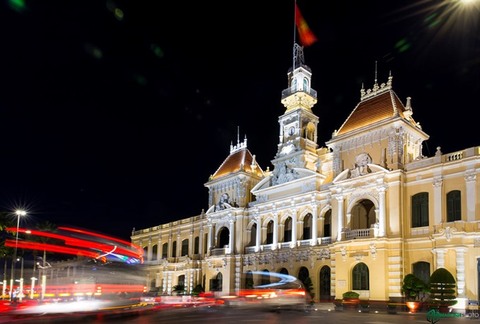 HCM City Post Office at night. HCM City authorities are striving to raise the Doing Business Index by 8-18 positions. — Photo news.zing.vn The HCM City People’s Committee has released a plan to boost its Provincial Competitiveness Index (PCI) as well as improve the city’s business and investment climate in 2018 and the following years. According to the plan, the City will take measures to improve the business environment indicators, especially with regard to the World Bank’s Doing Business Index, with the aim of boosting the City’s ranking by eight to 18 positions. Last year, Viet Nam ranked 68th in the World Bank’s Doing Business Report. Targets for some specific indicators include: “starting a business” index will increase by at least 40 steps and the “enforcing contract” index and “resolving insolvency” index will rise by 10 steps each. These indicators had the lowest scores in the Doing Business 2018 Report. The southern economic hub only ranked eighth in the PCI 2017 Report, higher than Ha Noi (13th position) but trailing behind the top three cities including Quang Ninh, Da Nang and Dong Thap. The city is committed to abolishing and simplifying 50 per cent of its business and investment conditions. It is also proposing to remove a number of conditional business lines, as well as cut at least 50 per cent of goods subject to specialised inspection. Particularly, the city will strongly change the State management method, shifting from mostly pre-checking to mostly post-checking, eliminating cases in which one product is subject to specialised control by more than one State agency and reducing the proportion of imported goods subject to specialised inspections at the customs clearance to less than 10 per cent from current 25-27 per cent. Regarding administrative procedures, the HCM City authorities will strive to put into use 30-40 per cent of online public services related to citizens and enterprises at the level 3 and 4 by the end of 2018. At these levels, users can fill in and send application forms to authorities over the internet. The forms are processed online. At Level 4, fees can be paid over the internet. The city has also issued a plan to measure the satisfaction of citizens and organisations with respect to the public services in the fields of health and education in the period of 2018-20. The set of criteria consists of 26 indicators in five areas, including access to public administrative services, administrative procedures, work handling by civil servants, delivery of results of public services and receiving and resolving comments by citizens. Vingroup and NAPAS offer promotion for Vinmart Vingroup co-operated with the National Payment Corporation of Viet Nam (NAPAS) to launch a promotion programme offering major reimbursements for customers who pay via NAPAS domestic cards issued by Vietnamese banks including debit, credit, prepay cards or VinID customer card. Customers can recoup up to 30 per cent of the value of their bill when shopping at Vinmart supermarkets nationwide. Customers must spend at least VND200,000 (US$9) on the bill, have VinID cards and pay by NAPAS domestic cards. At the same time, customers will have opportunities to participate in a lucky draw programme with the highest prize of up to VND100 million. The programme runs from August 27 to September 26. Base.vn unveils Viet Nam’s 1st applicant tracking system Base.vn on Monday launched Viet Nam’s first ATS (applicant tracking system), named Base E-Hiring in HCM City. ATS, reportedly used by 90 per cent of the top 500 companies in the world, helps manage, optimise and systematise the hiring framework. It helps address problems in the hiring process like employer branding, framework building, CV sourcing, candidate evaluation, interviewing and hiring efficiency evaluation. Pham Kim Hung, CEO of Base.vn, said: “One of the toughest tasks of enterprise leaders is to seek and retain talented individuals. Strategies and business models would count for nothing without suitable employees to carry them out. Thus, the hiring process has become the ace in the business game and technology will take it to new heights.” Base.vn, a trailblazer in Viet Nam in the SaaS (Software as a service) industry, was established in August 2016. It has rolled out more than 20 applications in five vital areas for companies: human resource management, workload tracking, task management, finance, and marketing and sales. Base has more than 500 clients including VIB, VP Bank, SacomBank, Scommerce, Mkgroup, VietCredit and The Coffee House. It recently tied up for the first funding round with VIISA and 500 Startups. Water heater market shows potential in Việt Nam The water heater market in Việt Nam has great potential as the size of the market for the product is large, said Emanuele Giommi, general director of Ariston Thermo Việt Nam. Speaking at the ceremony to celebrate its 30 years of establishment and development in Việt Nam held in Hà Nội on Tuesday, he said that the potential comes from a big population and rapid construction growth rate. Meanwhile, the rate of households using water heaters, especially those in rural and mountainous areas, has remained low. For this reason, the market has become very competitive due to attention from both local and foreign manufacturers, he said, adding that it has seen a high growth rate in recent years. In 2014, the Italian water heating manufacturer opened a new manufacturing plant in Tiên Sơn Industrial Park in the northern province of Bắc Ninh to replace its imports of water heaters into Việt Nam. This was the company’s first plant in Việt Nam and the second-largest in Asia. Covering an area of over 50,000sq.m, the plant, set up with an investment of US$18 million, produces up to one million electric water heaters per year. During 30 years of operation in Việt Nam, Ariston has focused only on manufacturing water heaters. In the next five years, it plans to bring the most advanced technologies applying Industry 4.0 from Europe into products in Việt Nam. It will also introduce new products such as energy-saving devices to bring safety and health to customers in the market. “Ariston will enhance investment into research to develop new products to meet the increasing demand in the country,” he said, adding that they were determined to have long-term investment in the market. Vinh Phuc generates jobs for 82,000 industrial park workers Industrial parks (IPs) in the northern province of Vinh Phuc have generated jobs for some 82,000 workers in recent years, most of whom are local residents. According to the provincial management board of industrial parks, Vinh Phuc has 18 IPs already approved by the Prime Minister – 11 of which are already established and have pulled in 51 domestic and 217 foreign-invested projects. There are 215 ongoing projects, 19 others at the factory-building and equipment-installing stage, and 29 expected to begin soon. At present, Khai Quang IP hires around 40,000 workers; while Ba Thien 1 and Ba Thien 2 IPs are home to nearly 20,000 workers; and Binh Xuyen 1 IP employs 10,000 people. It is forecast that Vinh Phuc needs nearly 61,350 workers for the 2018-2020 period, including around 22,715 in construction and 19,700 in services. In order to meet recruiters’ demand, Vinh Phuc is putting together a project on vocational training for workers in manufacturing, trade, and services. The province is expected to continue upgrading infrastructure and improving the capacity of lecturers in vocational schools. Huntsman opens multi-purpose facility Huntsman Corporation (NYSE: HUN) recently announced that it has opened a multi-purpose facility at Amata Vietnam Industrial Park, near Ho Chi Minh City. The green field investment will house Huntsman’s Polyurethanes and Advanced Materials businesses and will comprise of a manufacturing area, R&D capabilities, a technical service centre, a warehouse, as well as a distribution space and a commercial office. Huntsman’s CEO Asia-Pacific and president of the Polyurethanes business Tony Hankins said, “Vietnam is one of the largest and fastest growing countries in the Asia-Pacific. For Polyurethanes, we have been seeing double digit growth rates for a sustained period and fully expect this to continue." "At the new site, we will manufacture formulated systems for footwear, insulation foam used in construction and cold chain applications, simulated wood for furniture, and automotive applications. These products will be sold in Vietnam, with the balance being exported to Cambodia. The facility will enable Huntsman to collaborate more effectively with its customers based in Vietnam and will also strengthen our strategy of globalising our bolt-on downstream acquisitions,” Hankins added. Scott Wright, president of Huntsman’s Advanced Materials business, added, “This is the first manufacturing expansion investment outside China for our business in the Asia-Pacific and we see many opportunities in Vietnam to support large-scale infrastructure and construction projects in one of the fastest growing economies in the region. The new plant will give us the capability to efficiently supply customers across the ASEAN region with high-quality electrical insulation, coatings, and adhesive solutions that will ensure projects are implemented successfully." In addition to this facility, Huntsman has a distribution warehouse located in the inland container depot at Long Binh-Dong Nai province, and a site in Hanoi which offers technical services and comprises of warehouse and distribution space and a commercial office. Huntsman is a publicly-traded global manufacturer and marketer of differentiated and specialty chemicals with 2017 revenues of more than $8 billion. Its chemical products number in the thousands and are sold worldwide to manufacturers serving a broad and diverse range of consumer and industrial end markets. It operates more than 75 manufacturing, R&D, and operations facilities in approximately 30 countries and employs approximately 10,000 associates within four distinct business divisions. Da Nang realty gets a fillip from tourism growth The average absorption rate in Da Nang's apartment segment topped 93% in first half of 2018, a new report says. Absorption rate is the rate at which available apartments are sold. It is calculated by dividing the average number of sales by the total number of available apartments. The report, prepared by Savills Vietnam, said sales were nearly three times higher year-on-year, while the supply of apartments increased 19% to 830 at three new projects. The limited primary supply pushed average prices to VND40.8 million (US$1,800) per square meter, 28% up from the same period last year. Son Tra District accounted for a 68% market share. Another major real estate service firm, CBRE, was also optimistic about the city market, saying the luxury apartments in Da Nang now cost the same as in downtown Hanoi and HCMC. The tendency to buy property for leasing out is growing in the city thanks to the steady and high profits. CBRE said returns on apartments could reach a lucrative 12%. It said for instance a one-bedroom apartment worth VND1.6 billion (US$71,100) fetches nearly VND15 million (US$667) a month and a two-bedroom apartment worth about VND3 billion (US$133,333), VND28 million (US$1,244). At the same time, as one of the most beautiful coastal cities, Da Nang attracted a large number of tourists which helped develop its seaside tourism properties, especially in the hotel segment, Duong Thuy Dung, senior director of CBRE Vietnam, told the Vietnam Seaside Tourism Real Estate Forum held recently in Hanoi. By 2020 the number of rooms available at hotels, condotels and villas is expected to double in response to the surging demand, she said. In the first half of this year the city received more than four million visitors, up 24.5% year-on-year. They included 1.6 million international arrivals, an increase of 32%. The Savills report concurred, saying tourism made the condotel segment profitable and pushed up the average selling price to VND47.6 million (US$2,100) per square meter, up 19% from the same period last year. The firm said tourism made the condotel segment profitable and pushed up the average selling price to VND47.6 million (US$2,100) per square meter, up 19% from the same period last year. The 109 three- to five-star hotels in the city had 12,900 rooms with another 1,400 to be added in the second half of this year, according to Savills. As for condotels and villas, Savills also saw higher absorption rates due to tourism demand. The condotel segment will see 1,570 new units come into the market, mostly from the Hongkong-based Empire Group. In the resort villa segment, though the market did not record new supply, the steady demand saw an absorption rate of 86%. VNN |
↧
Article 0
Bad debts landscape at small banks There has been great variations in small-scale banks’ bad debts performance in the first half of the year, with some showing great improvements, while others struggle to cope. 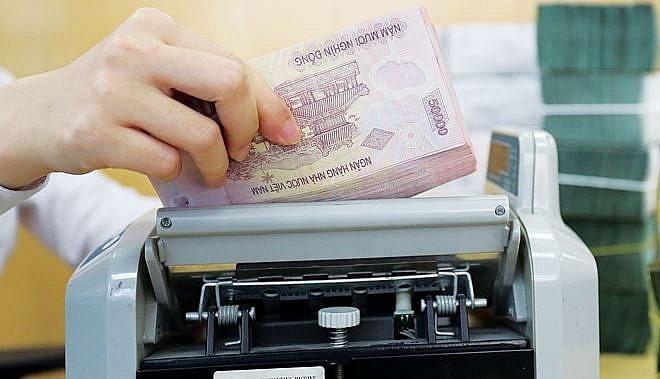 While NamA Bank thrived, Saigon Bank's bad debts are now double the ceiling set by the state The total bad debt volume of Ho Chi Minh City-based NamA Bank fell to VND391 billion ($17.3 million) by the end of June 2018, taking a 44.7 per cent plunge compared to the VND708 billion ($31.3 million) earlier this year, according to the bank’s financial statement. Similarly, its bad debt ratio slid to 0.95 per cent from 1.95 per cent early this year. Falling bad debts led to a sharp rise in the bank’s first half pre-tax profit, which touched VND335 billion ($14.8 million), three times as much as in the corresponding period of 2017. NamA Bank is also the first bank reaching its full-year profit target, which was set at VND320 billion ($14.2 million). By the end of June 2018, the total bad debts volume at BacA Bank amounted to VND436 billion ($19.3 million), making up 0.73 per cent of the bank’s total outstanding loan balance. Its provisioning costs in the first six months shed 15 per cent on-year to VND210 billion ($9.3 million), leading to a 47 per cent jump in the bank’s total consolidated pre-tax profit which surpassed VND434 billion ($19.2 million), equal 47 per cent of the full-year target. Also during the period, privately-held Kien Long Bank succeeded in tackling nearly VND150 billion of bad debts it had earlier sold to state-owned Vietnam Asset Management Company (VAMC). The bank had then posted VND121 billion ($5.4 million) in pre-tax profit, fulfilling 30 per cent of the year’s plan. Apart from banks that saw positive developments in their bad debts, several other banks reported a worsening situation. Bad debt volumes at VietBank rose sharply from VND387 billion ($17.1 million) early this year to VND547 billion ($24.2 million) by the end of June 2018. Its bad debt ratio rose from 1.35 to 1.73 per cent during the period. A typical case of sharply rising bad debts among banks of modest size was Saigon Bank whose bad debts ratio surpassed 6 per cent at the end of June 2018, while the limit set by the state is 3 per cent. Similarly, PG Bank saw a 12.9 per cent jump in its bad debts volume in the first half, which touched VND780 billion ($34.5 million) as of June 30, 2018. Its bad debt ratio then inched up from 3.23 per cent earlier this year to 3.75 per cent by the end of the second quarter. PG Bank is in the process of merging with Ho Chi Minh City’s major commercial lender HD Bank in a deal which is expected to be wrapped up this year. A typical case of sharply rising bad debts among banks of modest size was Saigon Bank whose bad debts ratio surpassed 6 per cent at the end of June 2018, while the limit set by the state is 3 per cent. Since its establishment in October 2013 to the end of 2017, VAMC, dubbed as Vietnam’s bad debt bank, succeeded in recouping about VND81.5 trillion ($3.6 billion) of bad debts out of the VND307.9 trillion ($13.6 billion) total principal bad debt volume. During the period, VAMC bought 26,221 debts of 16,269 customers of credit institutions. to a 47 per cent jump in the bank’s total consolidated pre-tax profit which surpassed VND434 billion ($19.2 million), equal 47 per cent of the full-year target. Also during the period, privately-held Kien Long Bank succeeded in tackling nearly VND150 billion of bad debts it had earlier sold to state-owned Vietnam Asset Management Company (VAMC). The bank had then posted VND121 billion ($5.4 million) in pre-tax profit, fulfilling 30 per cent of the year’s plan. Apart from banks that saw positive developments in their bad debts, several other banks reported a worsening situation. Bad debt volumes at VietBank rose sharply from VND387 billion ($17.1 million) early this year to VND547 billion ($24.2 million) by the end of June 2018. Its bad debt ratio rose from 1.35 to 1.73 per cent during the period. VIR |
↧
Article 5
BUSINESS NEWS IN BRIEF 31/8 Mitsubishi plans to make electric cars in Viet Nam 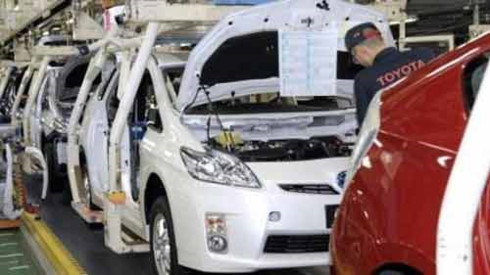 Japan’s Mitsubishi Corporation plans to invest in an electric automobile manufacturing factory in Viet Nam, said Executive Vice President Hiroshi Sakuma during a meeting with Vietnamese Deputy Prime Minister Vuong Dinh Hue in Ha Noi on Wednesday. At the meeting, Sakuma said his firm was evaluating the feasibility of the project and look forward to new regulations on environmental protection taxes to promote investment in the country. Hue said Viet Nam’s National Assembly would soon discuss and pass the Law on Environmental Protection Tax. There would be incentives commensurate with environmentally friendly products. The Mitsubishi Corporation is currently investing in two BOT (Build-Operate-Transfer) projects in Viet Nam, namely the Vung Ang 2 Thermal Power Plant (1,200 MW) and Vinh Tan 3 (1,980 MW) Power Plant. The corporation and Viet Nam’s Ministry of Industry and Trade signed an investment agreement in early 2017, initiating the land lease contracts and purchasing power. In which, Mitsubishi expects the Vietnamese Government to soon resolve the ceiling limit for loans and tax incentives in order to put the project into operation soon, strengthening the electricity capacity of the Vietnamese grid. Hue asserted that power projects were important to Viet Nam. He highlighted Mitsubishi’s business investments in energy, infrastructure, trade and services. He wanted Mitsubishi to complete the necessary work for the two parties to sign the implementation of Vung Ang 2 and Vinh Tan 3 during the upcoming visit of Prime Minister Nguyen Xuan Phuc to Japan in October this year. LienVietPostBank signs $50 mn credit agreement LienVietPostBank has signed a $50 million credit agreement with JPMorgan Chase Bank, N.A., Singapore branch, with a three-year term. The loan will contribute to enhancing the bank’s position in domestic and international financial markets, help it supplement its medium and long-term foreign currency, improve its mobilization structure, and meet part of demand for foreign currency loans from domestic enterprises. Mr. Pham Doan Son, General Director of LienVietPostBank, expressed his appreciation of the support and cooperation from JPMorgan Chase. “The $50-million loan will help LienVietPostBank integrate into the international financial market,” he said. As at June 30, 2018, the bank’s total assets stood at VND175.881 trillion ($7.6 billion), up 7.62 per cent since the beginning of the year. Outstanding credit increased 13.32 per cent to VND116.859 trillion ($5 billion) and mobilized funds 16.57 per cent to VND156.712 trillion ($6.7 billion). Non-performing loans fell to 0.98 per cent from 1.07 per cent at the beginning of the year. LienVietPostBank is present in 63 cities and provinces in Vietnam and has more than 360 branches, more than 1,000 transaction offices, and more than 10,000 transaction points, providing banking products and services at the district and commune levels. It is expected that by 2020 it will cover all 700 districts in the country and realize its goal of becoming the leading retail bank in Vietnam - “A bank for everyone” - by focusing on providing banking products and services for individuals, households, and small and medium-sized enterprises (SMEs), especially in the agriculture sector, while expanding its activities to rural and remote areas via the post office network. 2017 was a successful year for LienVietPostBank, with outstanding growth in total assets, which reached VND163 trillion ($7 billion), revenue to VND1.7 trillion ($73.9 million), and network expansion to 229 branches and transaction offices along with 1,123 postal transaction offices. After ten years of operations, it is now in the Top 10 largest private banks in terms of assets, been in Top 100 strong Vietnamese brands for four years in succession, and ranked 42nd in the VNR500 - the Top 500 largest private companies in Vietnam - in 2017. Digiworld partners with Incontech Vietnamese electronics distributor Digiworld (DGW) last week announced an official cooperation arrangement with Incontech Corporation Vietnam in order to expand the market for the PNKids brand. PNKids gummy vitamin supplements, a product of the Incontech Corporation made in the US, is now a leading multivitamin in Singapore. PNKids has many health supplements for kids, in which PNKids gummy (soft candy) for kids from three years old (who can chew), supplements the essential vitamins and minerals needed for physical and brain power growth in kids. It differentiates itself and leads in the Singaporean market by only using Pectin (which creates elasticity) rather than gelatin, which is extracted from pork skin or animal bone. Pectin is extracted from fruit, so has a natural color and flavor and helps kids absorb nutrition. PNKids gummy is diverse in shape, eye-catching, in many flavors, and soft and easy to chew, attracting kids’ attention from the first glance. PNKids gummy also does not contain soy, nuts, egg, artificial colors, artificial flavors, preservatives, gluten, or lactose sugar, as some kids are allergic to these ingredients. Depending on their children’s level of nutrition, parents can choose one of five variants for growth and two for helping digestion and increasing resistance. “PNKids Gummy is No. 1 in Singapore and we’d like to take this position in Vietnam,” said Mr. Cachino Thong, Managing Director of Incontech Asia Pacific. “To fulfill this ambition, we need DGW as a market expert with effective management tools, in particular consulting competency and brand building. We expect its core values will help PNKids expand its distribution channels faster, build its brand more strongly, and better meet customer demand.” “With over 20 years of experience in market expansion, chain management, and customer care, we have firm foundations to meet our partner’s objectives, from infrastructure to human resources management,” said Mr. Doan Hong Viet, CEO of DGW. “Incotech is a major corporation and has various health product lines of high quality that are suitable for Asians. This cooperation is an opportunity to bring good products to Vietnam and enhance health.” DGW marked its first footsteps into new industries last year: healthcare and FMCG. It has a core strength from five value-added services, including market analysis, marketing, sales, logistics, and after-sales service. It provides top-notch services and tailormade solutions for rapid and effective market penetration and market expansion of brands entering Vietnam. The Incontech Group is a leading wellness and healthcare company with offices in Singapore, Indonesia, Malaysia, China, Japan, and Vietnam. It started out in 1992 as a small trading firm in Oregon, US, focusing on exporting nutritional supplements and personal products. These products are now distributed to over 15,000 retail stores around Asia. Risen Energy opens Hanoi office The Risen Energy Co., a listed photo-voltaic (PV) module producer and industry leader in China, has announced the formal establishment of a branch office in Hanoi as part of its expansion overseas. It will roll out a localization plan to rapidly and efficiently serve global clients and establish a strong footprint in Vietnam. The company plans to employ upwards of ten local executives and leverage the superior resources it has developed outside of its home market over several years to be in a position to provide a rapid response to service calls. It will also continually improve service standards and after-sales services based on market expectations, in a move to build trust and credibility with local customers. Risen Energy said it has reached agreements with several leading Vietnamese firms as an initial step in staking out a presence in Southeast Asia. According to its initial roadmap, the Hanoi branch office will begin investing in EPC projects generating in the aggregate 150 MW during 2018 and expects the figure to double next year. It will also continue to invest in Vietnam, as it views the country as a GW-grade market thanks to its stable political and business environment. International growth has been a focus of the company over the last year and is in response to evolving industry trends and its commitment to meeting market demands with cutting-edge manufacturing technologies and the rich experience it has already accumulated in terms of EPC projects outside of its home market. With the aim of rapidly establishing a footprint in Southeast Asia, it plans to speed up investment in power stations as well as in the provision of EPC services in Vietnam to create new revenue streams following the setting up of the branch office. To optimize its energy infrastructure, the Vietnamese Government has undertaken efforts to shift to clean energy resources such as wind and PV power. The country plans to have PV power stations in operation with an aggregate installed capacity of 850 MW by 2020 and 10 GW by 2030. To meet this goal, the government has introduced a series of favorable policies in terms of PV-based electricity prices, taxes on PV project developers, import tariffs, and land use taxes, all of which have facilitated the expansion of PV developers in the country. Ngan Luong introduces QR PAY payment method Online payment gateway Ngan Luong has officially launched its QR PAY payment method, allowing customers to make fast payments by scanning the QR code via apps of 15 banks. Customers can easily use the service through the mobile banking app of their bank to make payment transactions without entering card information or bank account details. Transactions are conducted in seconds by means of a QR code scan, increasing the experience and saving time. To make such payments, customers need only have a smartphone with a camera to scan the QR code, log in to the bank’s mobile banking app, and follow some simple steps. Ngan Luong has expanded its cooperation with 15 banks, including Vietcombank, Vietinbank, Agribank, BIDV, SHB, ABBank, SCB, and TVB. More than 55 per cent of Vietnam’s population own a smartphone and 41.8 million are 3G subscribers. In excess of 9,000 locations accept payments at convenience stores, supermarkets, restaurants, and cinemas, and QR code payments have become part of consumption habits in the country. By offering QR code payments alongside conventional electronic payment methods such as cards, internet banking, or e-wallets, Ngan Luong provides a more convenient, faster and more secure payment channel and encourages customers to move away from using cash. For businesses using e-payment gateway services, Ngan Luong expects QR code payments to be an effective tool that helps businesses reduce investment costs and increase sales by 15-20 per cent. Ngan Luong.vn is a leading online payment gateway and telecommunications portal in Vietnam, in terms of products and services, market coverage, and payment flows. Developed by the NextTech Group (formerly the PeaceSoft Group) in 2009, it allows individuals and businesses to send and receive payments online quickly, safely and conveniently. Ngan Luong was ranked in the Top 10 outstanding payment solutions in Vietnam by Forbes magazine, with a total of 15 million transactions, a total transaction value of up to $200 million, and 1.3 million users. AAM in danger of listing cancellation Mekong Fisheries JSC shares have been included on the southern bourse’s warning list from August 31 and the company is facing the risk of a listing cancellation. According to the HCM Stock Exchange (HOSE), the decision was made because Mekong Fisheries had reduced its charter capital to below VND120 billion (US$5.3 million) based on the firm’s audited financial report for the first six months of 2018. Mekong Fisheries’ six-month financial report showed the company’s charter capital had been cut from VND126.36 billion in early 2018 to VND99.36 billion, which is below the VND120 billion required by HOSE. HOSE also said Mekong Fisheries would have one year to increase its charter capital, otherwise the company’s listing would be cancelled. Mekong Fisheries JSC has more than 12.6 million shares on HOSE under the ticker AAM. Its shares edged down 0.4 per cent to close Tuesday at VND11,150 ($0.49). At the firm’s general meeting on March 16, shareholders approved the cancellation of 2.7 million treasury shares and to cut the charter capital. In the first six months of 2018, Mekong Fisheries JSC posted a year-on-year decline of 14 per cent in revenue to VND110.2 billion but its after-tax profit jumped five times to VND6.66 billion. In those six months, Mekong Fisheries fulfilled half of its full-year revenue target of VND220 billion, while the company has beaten its pre-tax profit goal of VND5 billion. Russian GAZ brings truck manufacturing to Danang In addition to giving priority to high-tech and environmentally friendly projects, Danang has been opening its doors for heavy industrial projects, with Russian vehicle manufacturer GAZ Group expected to open a factory in the central city. Last week, in Russia, Chairman of the Danang People’s Committee Huynh Duc Tho had a working session with Gorkovsky Avtomobilny Zavod (GAZ Group), one of the largest truck manufacturers in Russia, to discuss a project to develop an assembly and manufacturing factory for its vehicles in the central city. The leader of GAZ Group was impressed with the incentives and business environment in Danang, and affirmed that this is the right time to expand the group’s markets. He also stated that he will visit Danang this December. Highlighting Danang’s development potential, synchronous infrastructure system, and high-quality human resources, Tho confirmed that the city will do its utmost to create a favourable and transparent investment climate to attract businesses. GAZ has 13 modern production facilities in Russia with the rate of automation at 85 per cent, and assembly plants based in Turkey and Kazakhstan. The company produces passenger cars, trucks, buses, military vehicles, and special vehicles, exporting to more than 40 countries across the world. At the Vietnam AutoExpo 2018 in June, Kristina Dubinina, GAZ’s sales director for Asia, said, “Vietnam is a market with high potential and growth in the coming years. In a modest assessment, sales of GAZ in this market will reach 550,000 by 2024. We are studying the possibility of establishing a joint venture to begin sales in Vietnam to identify products for local manufacturing in the future.” At the end of 2017, the amendment protocol on supporting the production of motor vehicles in Vietnam was signed by Tran Tuan Anh, Vietnamese Minister of Industry and Trade, and Russian Ambassador Konstantin Vasilievich Vnukov. Russian automobile manufacturers such as KAMAZ, GAZ, and UAZ will collaborate with Vietnamese partners to establish joint ventures to manufacture and assemble automobiles and trucks, all-terrain vehicles, and some specialised vehicles in Vietnam. These joint ventures will import 2,550 completely built-up unit vehicles and 13,500 sets of automobile assembly parts to Vietnam during the 2018-2022 period completely duty-free. “I hope these Vietnamese-Russian ventures will be successful and contribute to the development of the Vietnamese automobile industry, as well as seizing opportunities to break open the ASEAN market with its population of 640 million,” the minister stated at the signing ceremony last December. In September 2017, following the Eastern Economic Forum in Russia, Vadim Shvetsov, general director of Sollers OJSC and UAZ OJSC, said that the group planned to set up a joint venture to manufacture and assemble automobiles in Vietnam in 2018, with an initial capacity of 1,000 vehicles per year. Vietnam to enhance trade and investment ties with Russia and Hungary Vietnam will further its trade and investment ties with Russia and lift its relations with Hungary to a comprehensive partnership next month. Party General Secretary Nguyen Phu Trong will pay an official visit to Russia and Hungary on September 5-12, 2018, at the invitations of Russian President Vladimir Putin and Hungarian Prime Minister Viktor Orbán, according to the Party Central Committee’s Commission for External Relations. The September 5-8 visit to Russia is aimed to “further strengthen political trust, strategic attachment, and enhance the effectiveness of bilateral co-operation with Russia, and affirming Vietnam’s consistent foreign policy of placing Russia as a prioritised partner, and further promote the comprehensive strategic partnership in a more qualitative and practical manner.” The visit, which will be followed by a joint statement, also aims to create a new co-operative momentum in the economic, trade, and investment sectors, expanding the market share of Vietnamese goods in Russia, the commission said. The Party chief will meet with Russia’s leaders and witness the signing of several co-operation deals. He will also attend the ground-breaking ceremony of Vietnamese TH Group’s high-tech concentrated dairy and fresh milk production projects in Russia’s Kaluga oblast. Talking with VIR about this visit, Russian Ambassador to Vietnam K.V. Vnukov said, “This visit will be very important to the two countries’ multi-sectoral co-operation.” “At the upcoming negotiations in Moscow, both countries’ leaders will discuss very important issues in bilateral co-operation, including trade-economic co-operation, which has received the most attention. Some positive results have already been made, but I think that only half of the co-operation potential has been reached so far,” he said. “Thus, I would stress that we pin much hope on the upcoming visit by Party General Secretary Nguyen Phu Trong to Russia, which I do believe will help boost the implementation of some joint venture projects.” “Russia is expanding its investment presence in Vietnam. We have begun implementing a bilateral deal on constructing automobile manufacturing and assembling plants in Vietnam, with Russia’s famous brands like KAMAZ and GAZ. Hopefully in the near future, these automobiles will approach the majority of Vietnamese consumers,” he added. Currently, Russia has only 116 investment projects in Vietnam, registered at $940 million. Meanwhile, Vietnam has 13 projects worth about $3 billion in Russia. The biggest firms include oil and gas joint ventures Rusvietpetro and Gazpromviet, the Hanoi-Moscow multi-functional cultural and business centre, the TH true MILK agricultural-industrial complex in Moscow, Kaluga, Primorsky, and Bashkortostan. Notably, TH Group in May 2018 inked a deal worth over $630 million with RFPI in order to produce milk in Russia. After the free trade agreement between Vietnam and the Eurasian Economic Union took effect in October 2016, the two sides’ bilateral trade turnover has soared by an average 30 per cent per annum, to $3.55 billion last year. Meanwhile, during Party General Secretary Nguyen Phu Trong’s September 8-11 visit to Hungary, the two nations will lift their relations to a comprehensive partnership, with a view to creating new changes in the two countries’ co-operation and expanding Vietnam’s influence in the Central-Eastern Europe region. This visit will also be the first by Vietnam’s Party General Secretary to a Central-Eastern European nation since the nations in this region changed their institutions. The Party chief will meet with Hungary’s leaders and witness the inking of several co-operation agreements. Currently, Hungary has only 17 investment projects in Vietnam, registered at $63.56 million. The total bilateral trade turnover hit over $355 million last year. ViMariel, the first Vietnamese industrial park in Cuba Vietnam – Cuba have always sought to boost economic cooperation, brought it closer to the long-standing diplomatic relations between two countries. As the first Vietnamese company to enter the Cuban market, Viglacera Corporation has invested into its first industrial park in the country. Mariel Special Development Zone (ZED Mariel) is the first special development zone in Cuba, which is only 45 kilometres from the capital Havana. This zone has been invested by the Cuban government to become the largest industrial area in the country. The Cuban government encourages investment in the sectors of food industry, consumer goods, construction materials, packaging industry, and agriculture to provide to the domestic market and promote socioeconomic development. In the future, ZED Mariel is expected to export products and services in the region and become the leading hub for the US, thanks to TC Mariel port located within the zone. As one of the five deep-water ports in the Caribbean and Central America, TC Mariel Port is the shortest-haul and lowest-cost to the US in the region. Furthermore, enterprises will benefit from the regulatory framework, incentives, and friendly business environment. Financial Times fDi magazine elected ZED Mariel as the winner of the “Best Zone to Consider in the Future” category in the Best Global Zones of the Year 2017 competition. Situated in ZED Mariel, ViMariel IP benefits from a prime location as well as preferential policies from the Cuban government. It is very easy to access to ViMariel IP through Jose Marti International Airport (42km far), De Baracoa Airport (25km), San Antonio De Los Banos Airport (25km). The four-lane motorway from the IP joins the main eastern arterial road to the capital Havana (one hour drive), as well as the airports and seaports in the west. Viglacera Corporation will invest in synchronously building technical infrastructure: electricity supply from the 110/22 KV national transformer station (25MVA), a water supply station (6,500 cubic metres per day), a separate drainage system and waste water treatment system (up to 4,800cu.m per day). Solid waste from factories will be sorted, collected, and transported to the waste disposal area. In addition, investors in ViMariel IP are supported by other services, such as restaurants, café, ETECSA telecommunications, security systems, customs systems, banking services, and cargo services by sea, rail, and road. These will allow investors to save time and money in foreign markets in general and Central America in particular. In order to attract domestic and foreign investors in ZED Mariel, the Cuban government offers special tax incentives, fast approval, a one-stop system, and support in the recruitment of local labour resources, and among others. ViMariel is shaping up to be a potential destination for investors whose products and services are aimed at the Cuban market or other export markets. ViMariel IP has a total area of 156 hectares with 119.11ha of industrial land (76 per cent), with the rest housing technical infrastructure and service and green areas. ViMariel IP expects to attract companies from the hi-tech, building materials production, and electronics sectors and other industries which are able to meet the economic needs of Cuba, aiming to become a leading manufacturing and trading hub for Central America. As the best industrial park developer in the Asia-Pacific Property Awards 2013 and 20 years of experience, Viglacera Corporation has pioneered the investment and development of ViMariel IP. This IP promises to create new opportunities for Vietnamese enterprises to enter the American market. Paradise Eco Resort: 13 years on the drawing board Expected to provide a fulcrum to foster tourism development in Quang Ngai province’s southern and northern parts, the multi-million dollar Thien Dang (Paradise) eco resort project is still far from completion, even 13 years after starting construction. The Paradise eco resort project spreads more than two kilometres along the coast crossing Quang Nam and Quang Ngai province in the central region. The developer, privately-held Paradise Investment JSC—now South Chu Lai Investment and Development JSC—, expects the project to tap into the growing visitor and investor numbers from Chu Lai Airport in Quang Nam province as well as workers, engineers, and experts working at the Dung Quat and Chu Lai coastal economic zones. In the current tourism season in the central region, the eco resort has yet to attract any visitors. In the villa area, several French-style villas have not yet been constructed yet, whereas some completed villas are already showing signs of degradation. Some buildings, once used to host meetings and banquet occasions, have been unused for a long time and local residents have been using this area to breed cattle. Doan Trung Nam, a resident living near the project, said: “When the project is entered the development pipeline, the investor said they will employ local labourers to on it. The project was then halted and left deserted, leaving the affected people struggling to make a living.” Cao Thi Hong, neighbour to Nam, added that some people have been using the unused space in the eco resort for agricultural production or cattle and poultry breeding. According to Le Tan Khanh, Deputy Chairman of Binh Thanh commune in Quang Ngai province’s Binh Son District, where the project is located, Paradise resort is set to use more than 106ha space in the commune. The project developer, however, has just completed the first phase of compensation for more than 32ha space. Regarding the remaining 74ha space, the developer did not cooperate with the commune administration, but has made compensation directly to local households. At present, 19 out of the 74ha has yet to receive compensation as the developer could not reach a consensus with the households, which is one of the reasons behind the project’s delay. At present, 19 out of the 74ha has yet to receive compensation as the developer could not reach a consensus with the households, which is one of the reasons behind the project’s delay. Another cause is the current financial distress as committed by Phan Van Hai, a developer representative The developer, therefore, asked the provincial management authorities for support in site clearance and compensation payment for the remaining space that has yet to be handed over to them. A good news for the project, as unveiled by the project representative, was that several investors from South Korea, Malaysia, and Singapore plan to cooperate to develop a mixed-use development, including condotel and casino components, at the project site. With respect to the developers’ proposals, Quang Ngai Party Secretary Le Viet Chu has recently asked the developer to soon make commitments and set the project’s targets and land requirements. The developer was also required to draw up the investment project’s revised supplemental planning that fits the actual situation and submit it to the province’s management authorities for consideration. The Paradise eco resort project was first licensed in 2005 with nearly VND200 billion ($8.8 million) in registered capital. In late 2017, the project’s total investment capital was scaled up to nearly VND8 trillion ($354 million). The project consists of five components: Paradise in the Fall, Paradise in Summer, Paradise in Winter, Paradise in Spring, and Four Seasons Paradise. At present, work has only been completed at the Four Seasons Paradise component that takes up more than 32ha space, while the other four components are sitting on the drawing board. Sojitz to become major shareholder of PAN Group Once the transaction between PAN Group and Japan’s Sojitz Corporation, who spent around $91 million on acquiring a 95 per cent stake in Saigon Paper Corporation, Sojitz will become a large shareholder and strategic partner of PAN Group. The Board of Directors of PAN Group is seeking shareholders’ approval to issue 14.86 million individual shares, equalling 11 per cent stake. If the shareholders approve, the transaction will be completed in either the third or the fourth quarter. PAN Group will negotiate with Sojitz the selling price of the shares, but it will not be lower than VND55,000 per share. The individual share issuance is expected to help PAN Group to attract more strategic shareholders, while simultaneously providing additional financial potential for investment and M&A activities. Established in 1998, PAN Group is one of the leading agricultural companies in Vietnam with the total assets of VND7.6 trillion ($327 million). Singapore’s GIC, The Asian Entrepreneur Legacy (TAEL) Partners, PYN, NDH Invest, SSI, and CSC Vietnam are the major shareholders of the agricultural firm. Last year, International Finance Corporation (IFC) proposed to invest up to $10 million (VND 230 billion) into a $28 million project of Pan Group to support its expansion plans. Sojitz, on the other hand, in June completed the purchase of 95.24 per cent of the stakes in Saigon Paper Corporation, which is the largest tissue paper and industrial paper producer nationwide, for $95 million. Sojitz is one of the first Japanese corporations to invest in Vietnam. This corporation focuses on airport infrastructure, power, oil and gas, fertilisers, industrial park infrastructure, agricultural products (high-quality rice), and animal alimentation. Sojitz entered into a collaboration with Indian partners to develop a $180 million paper mill in Dung Quat of Quang Ngai provinces in 2013. However, the project faced difficulties and has not been granted an investment certificate. In 2015, the corporation moved on to Quang Ninh and proposed to develop a paper mill in Viet Hung Industrial Park with the total production capacity of 150,000 tonnes per year. The acquisition of Saigon Paper enables Sojitz to set foot in the Vietnamese paper market quickly, capitalising on the fast-rising demand for industrial paper in the country and in China. Masan swimming further downstream Masan Resources had just announced the acquisition of H.C. Starck’s 49 per cent ownership at Nui Phao-H.C.Starck Tungsten Chemicals Manufacturing LLC. This is a major step to making Masan Resources the “Pride of Vietnam” in possession of state-of-the-art downstream processing technology through mergers and acquisitions (M&A). M&A activities in the past 10 years have been growing more prominent in Vietnam, with the total transaction value of $48.8 billion. In 2017 alone, the value was $10.2 billion, 10 times of what it was in 2009. It has been the norm for multinational companies to acquire Vietnamese businesses due to the acquirers’ sheer size, financial capability, and clear strategy to expand their businesses in Vietnam. Despite all that, there were a small number of M&A deals involving Vietnamese companies gaining ownership in foreign ones. These rare cases usually make headlines and serve to demonstrate Vietnamese companies’ “coming of age” as they begin to expand beyond the borders and become global players. Some of the most noteworthy deals in the last decade include FPT’s purchase of a 90 per cent stake in an American consulting company, Vinfast’s acquisition of GM Vietnam’s entire local business, and Vinamilk’s purchase of Australia’s Driftwood Dairy. Likewise, Masan Group is no stranger to the use of M&A to expand its businesses and create the most value for consumers, partners, as well as shareholders. Masan Group’s acquisition of Nui Phao – the world’s largest tungsten mine – in the northern province of Thai Nguyen is a prime example of this strategy. In 2010, Masan Group broke the news that it had acquired Nui Phao from Dragon Capital through the purchase of full ownership in the mine. As a result, a Vietnamese company officially retained control of the world’s single largest open-pit mine. Since 2010, Masan has invested heavily into Nui Phao mine with the intent of turning it into Vietnam’s “tungsten capital” and unlocking Nui Phao’s untapped potential. In 2013, Masan Resources (MSR), the parent company of Nui Phao Mining, formed a 51:49 joint venture with H.C.Starck (Germany) known as Nui Phao-H.C.Starck Tungsten Chemicals Manufacturing LLC in order to downstream process tungsten. Just recently, on August 13, 2018, Nui Phao Mining Company, a subsidiary of MSR, acquired H.C. Starck’s 49 per cent stake in the joint venture for the total cash consideration of $29.1 million. The transaction was fully funded by Masan Resource’s cash and equivalents. The joint venture is now a 100 per cent wholly-owned subsidiary of MSR. Craig Bradshaw, CEO of MSR, said: “I hope Vietnam can be proud of Masan Resources’ ambition and ability, which we will combine with Vietnam’s potential and international execution capability to become a dominant player in the global industrial sector. We embody the “Vietnam Can Do” spirit, and we are strongly positioned not only to significantly increase shareholder value, but more importantly to enhance social economic value as a global representative of Vietnam.” To date, the joint venture’s tungsten chemicals (Ammonium Paratungstate – APT, Blue Tungsten Oxide – BTO, and Yellow Tungsten Oxide – YTO) annual capacity is 9,000 tonnes, with expected sales volume in 2018 at about 7,000 tonnes. The tungsten chemicals are value-added products of Tungsten Concentrate (TC) – a product of Nui Phao Mining Company. Out of the aforementioned 7,000 tonnes of sales in 2018, approximately 6,500 tonnes were manufactured from TC produced at Nui Phao Mine. MSR aims to procure more TC from outside sources to satisfy the growing demand for tungsten chemical products. From the acquisition, MSR now owns the largest tungsten downstream processing plant in the world by capacity. Growing from the world’s largest tungsten chemical (APT, BTO, YTO) producer with 36 per cent market share (excluding China), MSR is now on track to proceed deeper into the global tungsten value chain aided by full ownership of the downstream processing plant and technology. MSR is continuing to explore opportunities in an effort to achieve its vision of becoming a fully-integrated downstream industrial chemical and metal business of global scale. The management is currently in discussions with carefully selected downstream partners that are strategic in nature and with upstream suppliers as it looks to further secure its supply chain. Danny Le, head of Strategy and Development at Masan Group, said, “The acquisition is also consistent with the five-year strategy that we have outlined for MSR to develop an integrated business model to generate strong cash flows and profits through commodity cycles. In addition, this will better position Masan Resources for strategic partnerships in the near future and pursue an international IPO to unlock shareholder value.” MSR posted revenue of VND3.239 trillion ($143.3 million) in the first half of 2018, a 26.6-per-cent increase over the VND2.559 trillion ($113.2 million) recorded in the first half of 2017 as the tungsten prices upside persisted. MSR delivered an attributable net profit of VND300 billion ($13.27 million) in the first half of this year, up 376.2 per cent on-year. With favourable first half business results and higher tungsten realised prices, MSR is expected to yield an improvement in NPAT Post Minority Interest (MI) margin of 5 per cent in the second half of 2018 against the first half, achieving the expected NPAT Post MI of over VND1 trillion ($44.25 million) for the full year of 2018. This deal in particular as well as foreign acquisition by Vietnamese leading companies in general serve as motivation for Vietnamese businesses to further utilise M&A as a tool to acquire the best technology and practices in order to enhance business and better serve Vietnam and its people. Huobi OTC marks entry into Vietnam Huobi OTC has marked its foray into Vietnam by supporting peer-to-peer (P2P) transactions denominated in Vietnam dong (VND). OTC, which stands for “over-the-counter”, will help onboard new users looking to invest in digital assets by offering a P2P fiat-to-coin marketplace. Aside from offering a platform for users to freely exchange their VND for digital assets such as USDT, BTC, ETH, and HT, Huobi helps to reduce counterparty risk by requiring merchants place security deposits with the exchange. These deposits will be released to users if the merchant is unable to release the purchased coins in a timely fashion. As part of its initial efforts to carve out a niche in Vietnam, the Huobi OTC exchange is offering zero transaction fees as opposed to an average fee at other exchanges, which is about 1 per cent. In addition, by leveraging its sister trading platform, Huobi Global, Huobi OTC is able to remove fees such as OTC deposit fees and withdrawal fees. Huobi OTC supports 17 countries and territories: Singapore, India, Canada, Australia, South Korea, Switzerland, the Netherlands, Taiwan (China), Russia, the UK, Hong Kong (China), Nigeria, Indonesia, the Philippines, Cambodia, China, and Vietnam. Aside from being cheaper and relatively hassle free, Huobi OTC also provides the same support Huobi is known for: its trusted branding and five-year security and reliability track record, as well as its 24/7 customer support. Huobi OTC is an affiliate of Huobi Global and a platform devoted to over-the-counter trades of digital assets. It offers an aggregated display of buying or selling data and the actual payment is transferred and completed offline through escrow accounts provided by Huobi OTC. MoMo & Home Credit partner in consumer finance Vietnamese fintech MoMo Wallet and consumer finance company Home Credit Vietnam signed a strategic partnership agreement on August 22 that marks a milestone in their bilateral cooperation. The first two features are payments via MoMo, which help customers of both partners enjoy a seamless, fast, convenient and time-saving service, and the ability to have Home Credit cash loans disbursed directly to MoMo Wallet. The partnership first started in 2015, only one year after MoMo was launched on iOS and Android. Since then, Home Credit Vietnam’s customers have been able to repay their loans via the MoMo app or at MoMo’s 5,000 POS (points-of-sale) around the country. Furthermore, the partnership aims to provide customers with the greatest convenience, promote financial inclusion in Vietnam, and boost cooperation between finance companies and fintech partners. Entering the era of global digitalization and based on a business motto of customer-centricity, Home Credit and MoMo have established a strategic partnership over the last three years that uses the advantages held by both sides to enhance the customer experience in mobile payments and consumer finance. Digital transformation in consumer finance will change offline procedures to the online platform for time-saving and safety. In addition, after installing the MoMo Wallet app, Home Credit customers have the opportunity to access and enjoy a number of MoMo promotions. From September, customers who register for cash loans at Home Credit’s POS can receive the disbursed funds via MoMo, in addition to traditional channels such as bank accounts and the postal service. Customers will have more options to conveniently access cash loans and MoMo’s promotions and services by their registered phone number. In addition, more than 500 diversified services currently available on MoMo enable customers to experience consumer finance immediately. In the future, Home Credit will upgrade the service to allow customers to register for cash loans on the Home Credit app and receive disbursement via MoMo Wallet, fully transforming to an online platform in the digital era. The strategic partnership between Home Credit Vietnam and MoMo will boost the development of a technology ecosystem in the consumer finance sector, as customers can easily access financial products and services via the mobile platform, shortening processing time and offering more convenient financial transactions. It will also encourage customers to experience online platforms instead of traditional transaction methods. “We have decided to cooperate with more technology companies to create an integrated ecosystem that delivers instant benefits to customers, providing convenience when accessing Home Credit’s services,” said Mr. Branislav Vargic, COO of Home Credit Vietnam. “This is a new chapter in our partnership to enhance the customer experience, and a milestone in the accession to Industry 4.0.” “The technology platform and the dynamics of millions of existing MoMo users will provide a promising customer approach to Home Credit and consumer finance,” said Mr. Nguyen Ba Diep, Vice President of MoMo Wallet. “We believe that technology is indispensable in the development of the consumer finance market and will change the face of the financial sector in Vietnam in the future.” Smartrealtors and Partners to distribute Banyan Tree Residences Smartrealtors and Partners has signed a cooperation agreement with Singapore’s Banyan Tree Corporation on August 28 to become the sole distributor of Banyan Tree Residences. Banyan Tree Residences is part of the Laguna Lang Co project in central Thua Thien Hue province. Villas, from one to three-bedrooms, are perched from 25 to 86 meters above sea level, with the elegant Banyan Tree hill villas offering breathtaking panoramic views over the unique crescent bay with soaring mountains as a backdrop. Each villa’s living space is awash in natural light and harmonized with the tropical surroundings. Featuring a series of locally-inspired arts and furnishings, the design of each pays homage to the skills of Vietnamese artisans. Mr. Gavin Herholdt, Managing Director of Laguna Lang Co, said the collaboration between the Banyan Tree Group and SmartRealtors and Partners was set up to maximize the benefits to each and expand and improve business efficiency while enhancing the project’s competitiveness. “Smartrealtors and Partners became the exclusive distributor of the project thanks to the prestige and quality the company has built over past years,” he added. Mr. Dang Quoc Viet, General Manager of Smartrealtors and Partners, said it is committed to bringing quality projects to owners. As the first and only resort project of the Banyan Tree Group in Vietnam, Laguna Lang Co is an international-standard resort within the network of luxury resorts owned by Banyan Tree worldwide. Laguna Lang Co’s Phase 1, with investment of $285 million, comprises both Banyan Tree and Angsana hotels, an 18-hole championship golf course designed by Sir Nick Faldo, luxury private villas and residences, convention facilities, recreational activities, and beachfront land for six more hotels as part of the 280-ha project. Existing infrastructure, including transportation, electrical, water, and environmental management systems will facilitate the rapid development of Phase 2 and future phases. The project expansion from 2018 to 2022 will see investment capital increase from $875 million to $2 billion and includes international-scale casino operations. Laguna Lang Co was recently issued a casino license by the Vietnamese Government; the first to be issued in a decade. It welcomes world-class casino operators and investment partners to join in the next exciting phase of the integrated resort development. VNN |
↧
